

to europe and beyond
Hello, i’m marie-eve.
This isn’t just any run-of-the-mill travel blog; it’s a travel journal encompassing over a decade of travel across Europe and the rest of the world from the eyes of an architecture-obsessed, latte-lover solo female traveler.
With this space I aim to encourage millennial women to discover the world on their own using my recommendations, practical tips, and ready-to-use itineraries in the far ends of Scotland, the bustling metropolises of Japan, the beaches of Mexico, and the charming streets of my hometown.
The world’s our oyster, ladies. Let’s get out there.
Get in the know.
Thank you for subscribing!
the best travel tips
Lately on the blog.

13 great places for natural wine in Corsica

The most stunning Angkor Wat temples to visit

Visiting Iceland without a car – day trips from Reykjavik
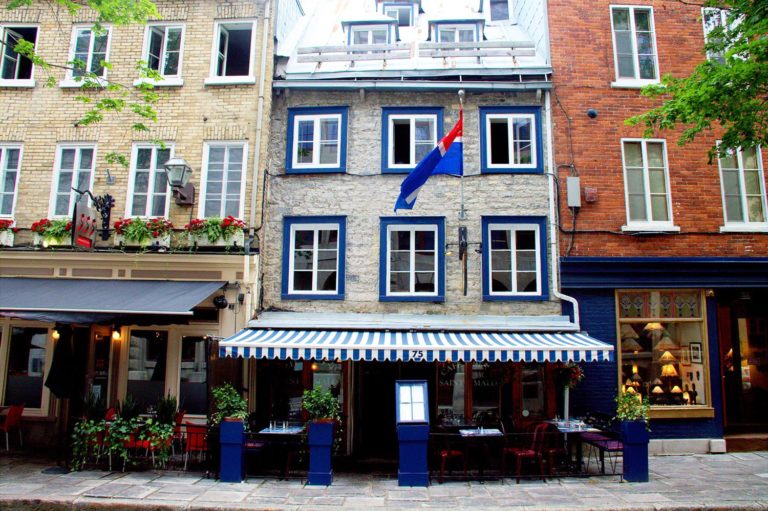
10 charming, central hotels in Quebec City

I visited the Buffy The Vampire Slayer filming locations in Los Angeles

12 natural wine bars in Los Angeles for a taste of California
Why i believe in, solo female travel.

Independence
Travelling alone as a woman can be incredibly empowering and also a huge confidence-booster. My goal is to trigger this urge by provoking discussions and digging deeper on why solo travel is still very much considered to be an odd choice. Breaking news: it’s not.

Whether you dream of Costa Rica’s wild jungles, Kyoto’s historic streets, New Zealand’s fjords, Paris’ nightclubs or New York’s diviest bars, there is no compromise to be made here. No schedule, no detours, no needs to cater to… but yours. Because, hey, you’re the one in charge.

Going it alone comes with unlimited freedom, but also a few additional responsibilities. Research ahead of time, pick the right destinations, do your homework, prepare accordingly, and, with my useful solo travel tips, finally have the trip you’ve always dreamed of.
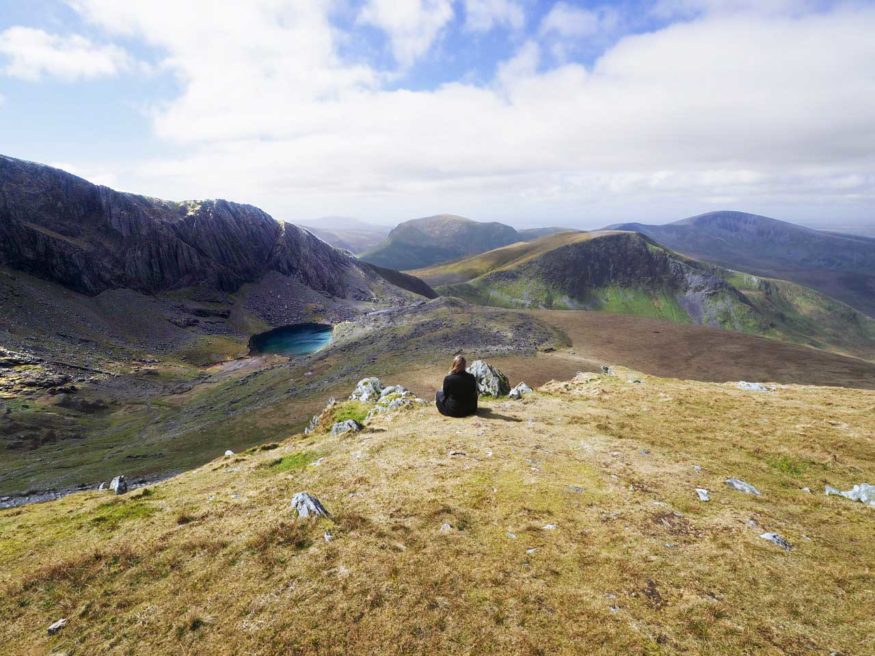
get the books
My curated travel guides.

Between the bakeries, the romantic Haussmann architecture, the natural wine bars, the lengthy strolls along the Seine and the rooftop views of the city, Paris truly is one of the best cities in Europe and certainly one of its most iconic. This travel guide narrows down the best things to do in Paris for both first and eleventh-timers, with a mix of obvious and little known.

Born and raised in Montreal, I know the city’s ebbs and flows like the back of my hand. The trendiest exhibition? The most beautiful and colourful streets? The best restaurants in touristy areas like Old Montreal? The most fun, outdoorsy day trips? I’m your girl. This guide contains first-hand, insightful Montreal travel tips that will make your trip to my hometown truly unforgettable.
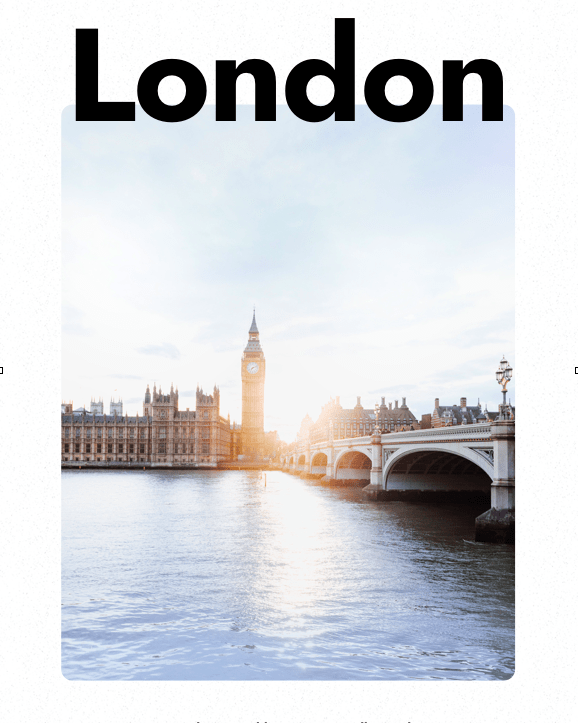
The British capital’s heritage spans milleniums, and yet it still manages to surprise me every time I visit. London is a city best discovered leisurely, for its sheer size and rhythm can be astounding! With this travel guide, learn how to navigate the tube, identify which neighbourhoods are worth a visit, plan your evening in atmospheric pubs, and more!

Need more help from this travel blog?
If you need additional and specific travel tips for a destination, or if you simply are looking for inspiration and a little book-that-damn-trip pep talk, get in touch!
I’ll be happy to share my packing secrets or my newly favourite wine bar in Montreal, the best tips for skipping the queues at the Louvre or how to plan a budget-friendly road trip in Switzerland.
Don’t be a stranger!

Finding the Universe
Travel tales, photography and a dash of humor
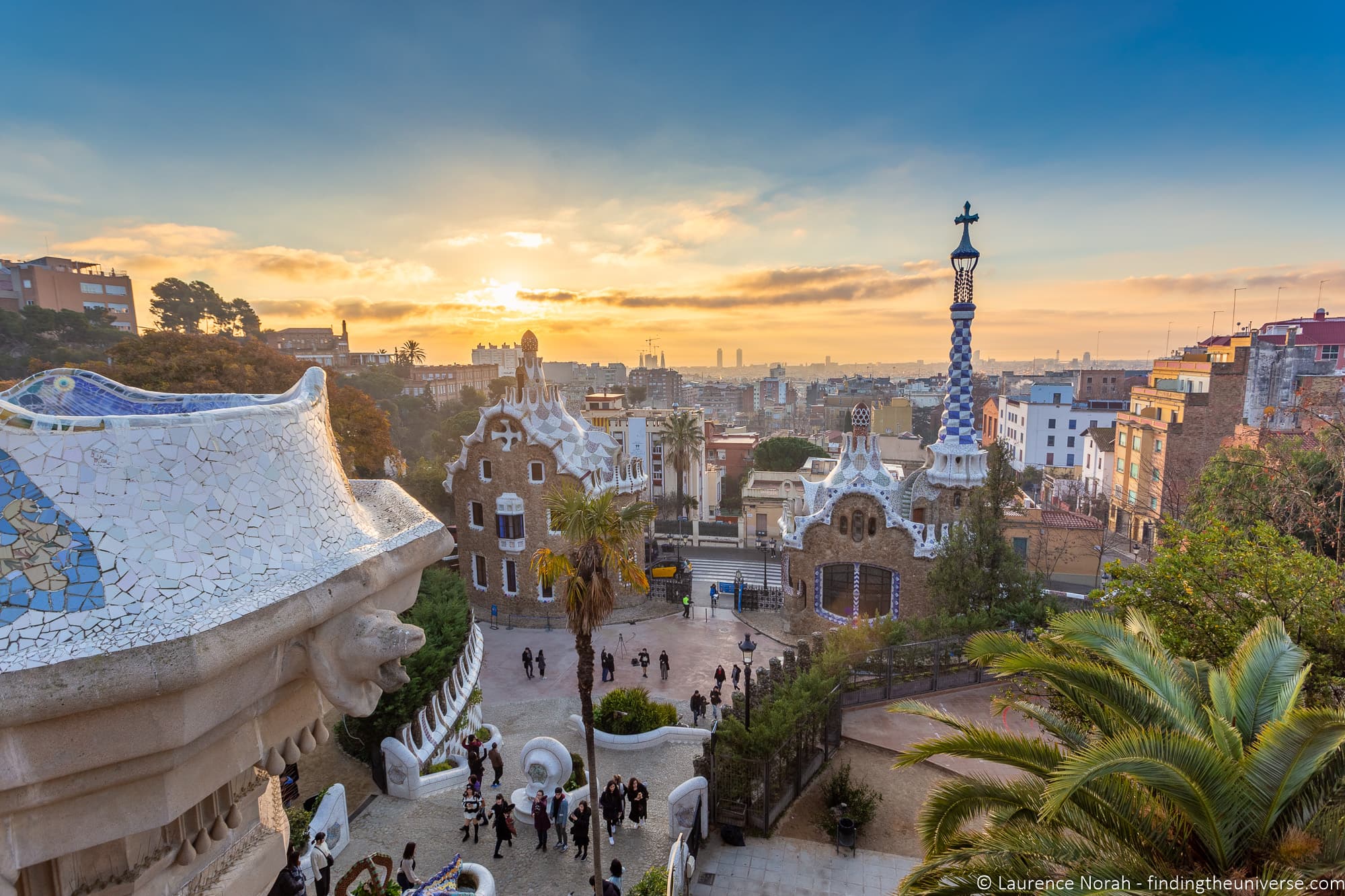
2 Weeks in Europe – The Perfect Europe Itinerary
Last updated: January 28, 2024 . Written by Laurence Norah - 30 Comments
Are you visiting Europe and looking for the perfect itinerary? Well, you’re in the right place! We’ve travelled extensively in Europe, and based on our experiences, we’ve put together a detailed 2 week Europe itinerary to help you plan.
This Europe itinerary will take you to many of the highlights that we think first time visitors to Europe will want to see and explore for themselves. These include many of our favourite destinations that we’ve visited multiple times over.
This itinerary is aimed at those of you visiting Europe for the first time, or those of you looking for an easy itinerary to follow that covers some of the major highlights of Western Europe. It’s not overly rushed as we think you will get more from your experience if you focus on a few major locations rather than trying to see everything in one go.
The trip as outlined is for 14 days in Europe, but you could make it longer or shorter depending on how much time you have. For example, with 10 days in Europe, you could clip off a day or two in some of the cities, and maybe even skip one of the cities to make it a more comfortable experience.
As well as the itinerary, we’re also going to share everything you need to know to help you plan the perfect European trip. Tips about currency, what to pack, where to stay, how to get around and other considerations.
Hopefully this guide will give you everything you need to know to plan your own perfect European adventure, and of course, we’re always happy to answer your questions in the comments. Now, let’s get started!
Table of Contents:
2 Week Europe Itinerary
This two week itinerary has you visiting four European countries and five cities. We think these cover some of the top highlights of Europe.
The destinations on this itinerary are all cities, so this trip is aimed more towards those of you looking to explore the cities, which are all full of cultural highlights, fantastic restaurants, and plenty of photo-worthy sights!
But if have your eye more on smaller towns, secondary cities, and rural locations, this might not be the best itinerary for you.
If you’d prefer to focus on one country, take a look at our two week UK itinerary , and our 10 day Italy itinerary for some inspiration.
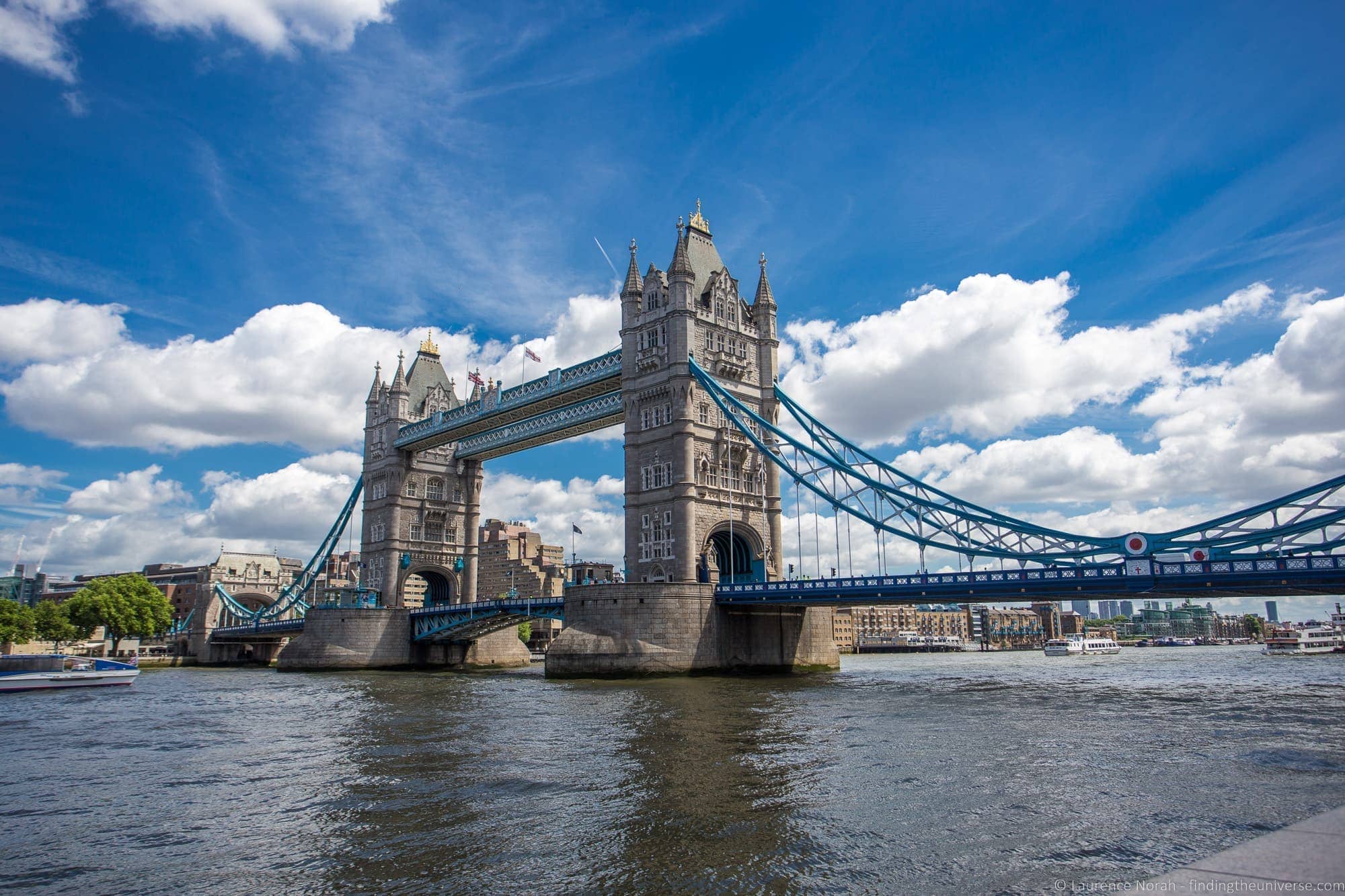
Days 1 – 3: London
We’re going to start your European adventure with 3 days in London . London makes a great starting point for your European itinerary. It has a number of international airports to choose from, so getting here is easy, and there are a wealth of sights and cultural attractions to immerse yourself in. I lived in London for a number of years, and it’s still one of my favourite cities in the world.
If this is your first overseas trip and you are coming from an English speaking country, London is a good place to ease yourself into the experience. You can acclimate yourself to the time difference and get used to travelling in a new country, without having a language barrier to work with as well.
We think 3 days is a good amount of time to spend basing yourself in London. We’d suggest spending at least two days exploring the capital, and perhaps one day trip outside of London. This might look as follows.
On your first day in London, we’d suggest seeing the major sights around Westminster. This includes the Houses of Parliament , Westminster Abbey , Trafalgar Square, Covent Garden, the Churchill War Rooms , Buckingham Palace and the London Eye .
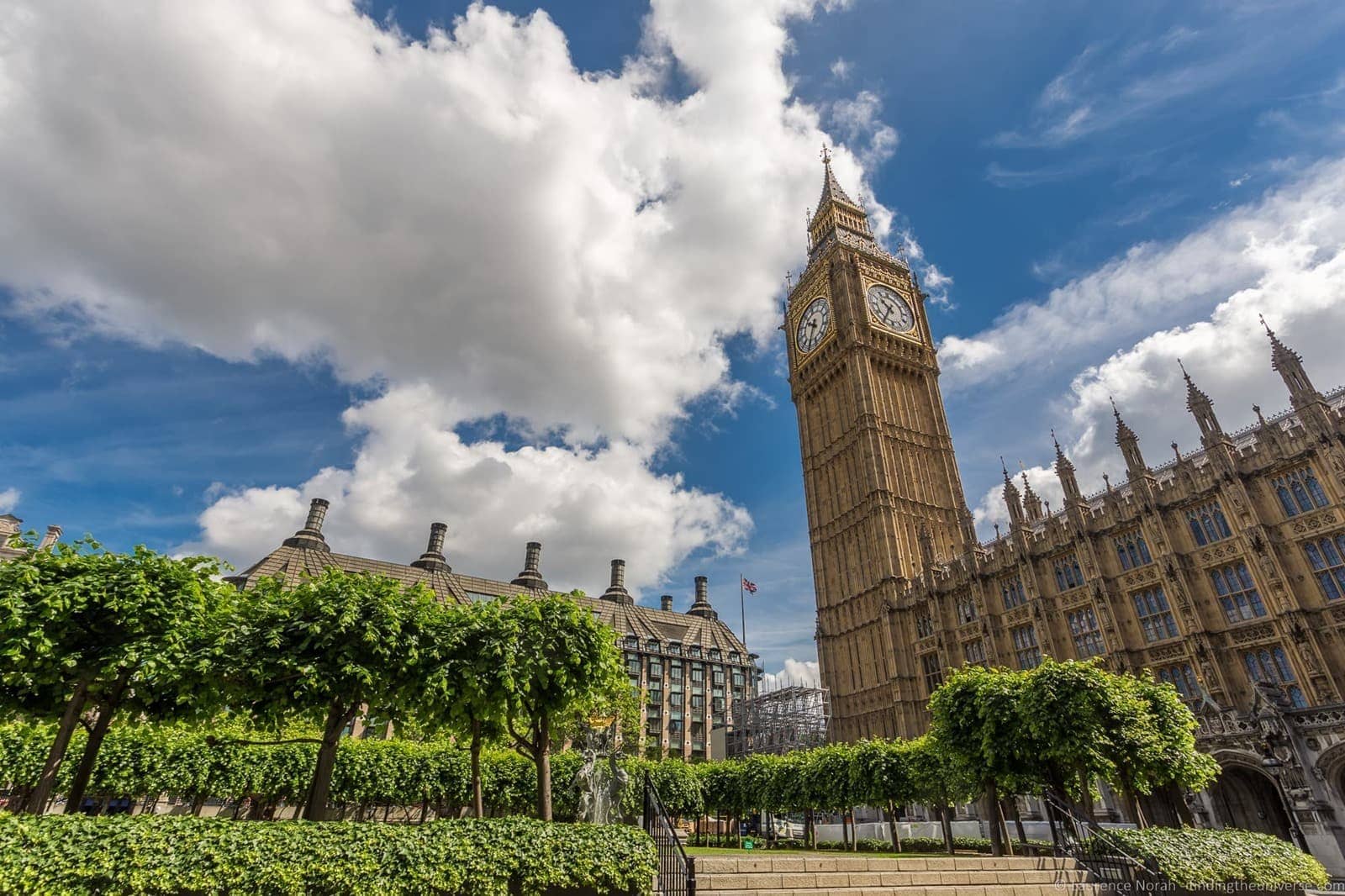
On your second day, which will be a full day, we’d suggest starting at the Tower of London . Get here when it opens to avoid the crowds if you can. Included on the London Pass , or y ou can buy a ticket online in advance here . Using our link saves you some money on the adult admission price for the Tower of London, meaning these discounted Tower of London tickets are some of the best value we’re aware of.
We also recommend checking prices via GetYourGuide here , and on the official website here , as pricing can vary. You can also see opening times and other information for your visit on the official site.
Once you are done with the Tower of London, you can see more sites in the area like Tower Bridge , Borough Market (a London Harry Potter filming location ), St. Paul’s Cathedral , the Tate Modern , Shakespeare’s Globe and the Shard .
You certainly won’t run out of things to occupy your time! For some more inspiration, see our guides for 2 days in London and 3 days in London . We also recommend picking up a two day London Pass to save money on your sightseeing while in London. You can do that here .
On your third day in the UK, we recommend taking a day trip out of the city. This could be to somewhere like Windsor Castle or Hampton Court Palace , neither of which are too far.
If you really want to get out a bit further, we can recommend perhaps taking a trip to Stonehenge, the Cotswolds, Bath or Oxford. There are a variety of companies who offer easy day trips from London which include a number of these highlights like this or this , or you could do it yourself.
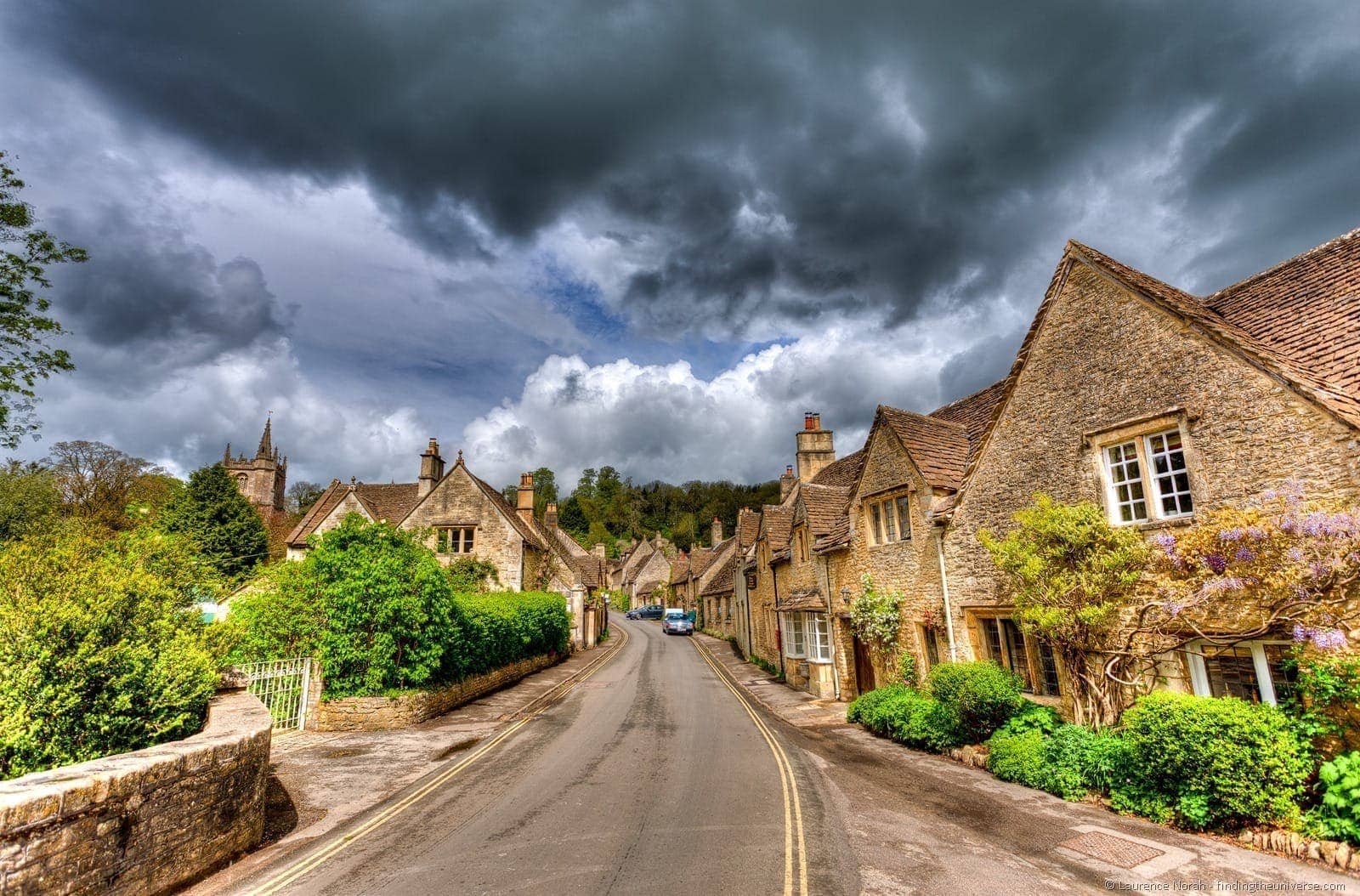
See our guide to taking a day trip to Stonehenge and a day trip to Oxford for some inspiration. If you’re a Harry Potter fan, then you may instead consider a trip out to the Harry Potter Studios where the films were made.
Of course, you will want to adjust this schedule depending on when you arrive and depart London. Our suggestion would be to take the day trip on your last day, overnight in London, and then take an early morning train to Paris.
Whilst you’re in London, we recommend getting around by public transport. It’s the most cost effective and also generally the most efficient way to get around. See our guide to public transport in London for some tips, as well as our overview of how to pay for public transport in London .
If you enjoy walking tours, there’s no shortage of options to choose from in the city. We love taking a walking tour when we first arrive in a new city – it can be a good way to get familiar with the city, plus you can ask your guide for local tips on places to eat and less well-known attractions.
If you do decide to take a walking tour, we suggest Take Walks for small group tour (tours range in length from a couple of hours to full day tours), and Context for private tours. We’d specifically recommend this full day walking tour with Take Walks as a possible option to consider.
You’ll most likely be arriving into London by plane, into one of London’s major international airports. London actually has six airports, but you’re most likely to land in either Gatwick or Heathrow. Whichever one you do land at, we have a guide to how to get from the airport to London .
Well, that’s your time in London covered. Now we’ll suggest a few places for you to stay, before giving you some tips on getting from Paris to London.
Where to stay in London
Some of our favourite hotels, from budget to luxury, in London are as follows:
- The Walrus Bar and Hostel – A well reviewed centrally located hostel
- The Z hotel in Shoreditch – Excellent value in a popular part of London with great dining options
- Point A Hotel – We’ve stayed here; the rooms are tiny but clean and it’s a great budget option.
- Lime Tree Hotel – A well reviewed boutique hotel, around nine minutes walk from London Victoria
- The Resident Victoria Hotel – A well reviewed and centrally located hotel offering excellent value for money. The room we stayed in was quite compact, but it had everything we needed
- The Savoy – true luxury as close to the city centre as you can get!
If you prefer an apartment, then we recommend Plum Guide .
Plum Guide doesn’t have quite so many choices as some other UK based websites , but they carefully curate their listings so their options tend to be of a very high quality whilst still being available at a range of price points. We’ve used them on a number of trips and always had a great experience. See their listings for London here .
If you can’t find what you want on Plum Guide or you want some new options to try out, we wrote a whole post on the best alternatives to AirBnB which you should check out!
How to get to Paris from London
We’d recommend taking the Eurostar train service from London to Paris. This departs multiple times a day, and the journey takes 2 hours and 16 minutes.
This is a lot quicker than flying, especially once you consider you’ll have to get to and from the airport on either end. The Eurostar will take you directly to Gare Du Nord. Get your tickets for that journey in advance here .
We also have a guide to getting from London to Paris which lists all the options you have.
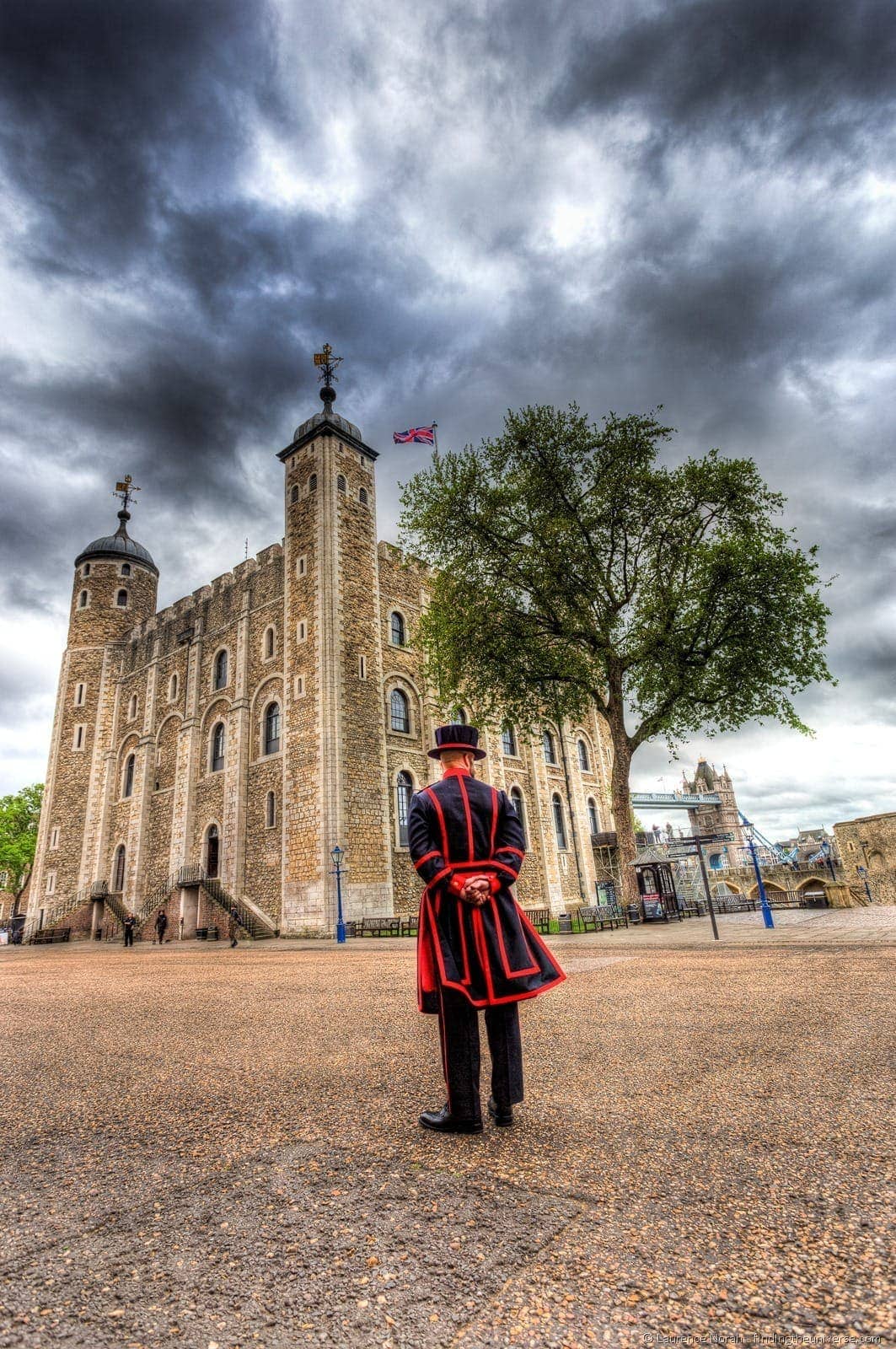
Days 4 – 6: Paris
Welcome to Paris – the city of lights and love! We’re going to suggest three full days exploring Paris, as the city has so much to offer.
After you’ve dropped your bags off at your hotel (or at a luggage storage location ), it’s time to start sightseeing. As with London, the plan is to see the major sights in the city.
We’re going to start off with the Eiffel Tower . This is without doubt Paris’s most famous landmark, and a must-visit when you come to Paris. You can either enjoy the views from below or head up inside the tower to one of the various stages.

If you do decide to go up the Eiffel Tower, we highly recommend you book your tickets in advance. The best place to do this is on the official website . There are often huge lines for tickets on site, and you don’t want to waste time unnecessarily. For a lot more tips for your visit, see our complete guide to visiting the Eiffel Tower .
From the Eiffel Tower, we suggest taking a cruise on the River Seine , which will let you see many of the highlights of the city from the river. You can book a discounted Seine River cruise which departs from near the Eiffel Tower with our link .
Alternatively, you might prefer to do an evening Seine River dinner cruise , in which case this will happen later.
After the cruise, you might consider a walking tour of Paris or a Hop on Hop off bus trip. Alternatively, consider visiting the Musee d’Orsay .
On your second day in Paris, we suggest you start bright and early with a visit to spectacular Sainte Chapelle , one of Paris’s prettiest churches. The stained-glass windows here have to be seen to be believed. Just be sure to turn up at or just before opening time, as the lines get very busy.
From here, you can pop across to Notre Dame if you want. Due to the fire in 2019 this is undergoing significant reconstruction work, so do keep that in mind. From Notre Dame, head across to the Louvre , one of the most famous art museums in the world.
There’s a huge amount to see here, including highlights such as the Mona Lisa and the Venus de Milo. You could spend a whole day here, but you may want to limit yourself to 2 – 3 hours so you can see more of the city! Book your tickets online in advance here .

From the Louvre, if you have time, you might consider sneaking in a wine tasting session , or going for afternoon tea in Paris . From here, it’s time to head up the most famous shopping street in Paris, the Champs Elysees, where you’ll finish up at the Arc de Triomphe .
This massive archway stands in memory of those who died in the French Revolution and the Napoleonic Wars. The view from the top is one of our favourite views in Paris, so do head to the top if you have the time.
For your final day in Paris, our suggestion is that you head out to Versailles . This was the palace of French royalty, and is a stunning place to visit. You can book your tickets for Versailles in advance here .
Between exploring the palace and the extensive gardens, there is more than enough to do here to fill from half a day to a full day, which is why we suggest allocating most of the day to it. Then perhaps plan a nice dinner or show for your final evening.
We can recommend the evening show at the Moulin Rouge, and you can read about our experience at the Moulin Rouge here , and book tickets here .

And that’s all your sightseeing for your time in Paris on our European itinerary! For more detailed inspiration for your time in Paris, see our itinerary for 3 days in Paris and 2 days in Paris , which should give you lots more ideas.
For your visit in Paris, we recommend either the Paris Pass , or the Paris Museum Pass . The former includes a number of activities like the hop on hop off bus tour, guided Eiffel Tower climb, and Seine River cruise, as well as all the museums and sights included on the Paris Museum Pass. These both include most of the attractions we’ve listed, including Versailles.
You can buy the Paris Pass on the official site here , and the Paris Museum Pass here .
Again, for those of you who enjoy walking tours, we recommend Take Walks and Context . The former offer small group walking tours, whilst the latter primarily focus on private tours. We’ve taken tours with both companies in cities around the world and are always happy to recommend them.
As an example tour, check out this full day Paris tour , which includes a Skip the Line Louvre Tour, Eiffel Tower, Montmartre & Seine River Cruise.
As with London, the easiest way to get around Paris is to take public transport. Specifically, the Metro is likely going to be the fastest and most cost-effective way to get around.
We have a full guide to how to get around Paris , which should help you plan your transport in the city.
Now, we’re going to share some tips on where to stay in Paris, as well as how to get to the next city on your itinerary of Europe – Barcelona.
Where to stay in Paris
Our itinerary has you spending 2 nights in Paris, arriving by train on the morning of the first day, and departing either by plane on the evening of the third day. We suggest the following options for accommodation in Paris.
- 3 Ducks Hostel . A well-rated boutique hostel just 2 minutes from the nearest metro and a 22 minute walk to the Eiffel Tower
- Hotel Dress Code & Spa , A highly reviewed centrally located 4 star hotel
- Hotel Ekta Champs Elysees – a well rated 3* hotel just off the Champs Elysees
- Hôtel Eiffel Turenne , A well rated 3* hotel within a ten minute walk of the Eiffel Tower
- Ateliers de Montmartre , An apartment in Montmartre with views of the Sacre Coeur
- Vintage Paris Gare du Nord by Hiphophostels , A hostel located just next to Paris Gare du Nord
- George V – A fabulous centrally located 5* hotel, an excellent luxury pick
We’ve also stayed in Paris with Plum Guide in a gorgeous apartment with Eiffel Tower views. See their listings for Paris here .

How to get from Paris to Barcelona
You have two main options for travelling from Paris to Barcelona, you can take the train, or you can fly.
There used to be a direct night train from Paris to Barcelona, but this was discontinued in 2013. So you can take a train in the daytime (around 6.5 hours journey time) or you can travel by a slower overnight train (around 13 hours).
We think flying is likely going to be the easiest option. There are a number of direct evening flights from Paris to Barcelona, taking just under two hours. Just try to book a flight from Paris Orly or Paris Charles de Gaulle. Many budget airlines operate from Paris Beauvais, which is quite a long way outside the city, and requires a lengthy coach journey.
Check flight times and prices online here . If you’d prefer to take the train, you can check train times and prices here .

Days 7- 9: Barcelona
It’s time for the third city on your European adventure – Barcelona! Barcelona is full of incredible sights, including architectural gems from Antoni Gaudi, a gothic city center, and even a beach!
Again, we think you’ll need 3 days to do justice to all the sights in Barcelona. We’re also going to suggest a day trip from the city to explore some of the surrounding highlights. Here’s how your three days in Barcelona might look.
We suggest starting your first day with a trip to the Sagrada Familia . This was master architect Antoni Gaudi’s final work, and whilst construction was started in 1882, he didn’t live to see it completed. It’s getting there now, but still has some way to go!
The Sagrada Familia is a very popular attraction and they operate a timed entry system. It’s vital that you reserve your timeslot in advance, as otherwise you will end up in a very long queue, and at busy times of year, tickets sell out far in advance. You can reserve your tickets online here .
We also have a detailed guide to visiting the Sagrada Familia which we recommend reading in advance of your visit.

After spending a couple of hours at the Sagrada Familia, we recommend heading across to the nearby Recinte Modernista Sant Pau , a beautiful Art Nouveau style hospital building which has UNESCO world heritage status.
After the Recinte Modernista Sant Pau, continue on to Park Güell . This is a large public park which was also designed by Anton Gaudi, and there’s a lot to see here. Again, this is a popular spot with timed entry, and we highly advise booking this online in advance here .
Near Park Güell is the Gaudi Experience , where you can learn a bit about the man behind some of the wonderful architecture you have been experiencing. You can get tickets for that here if you are interested.
From the Gaudi Experience, you have a few options depending on your interest. If you are using the hop on hop off bus to travel around Barcelona (included on the Go Barcelona Pass ), it continues from Park Guell on to a number of other attractions.
These include the hill top fairground Tibidabo , the stunning Monastery of Pedralbes , and Camp Nou , the home of Barcelona’s football club.

We’re sure one or more of those will be of interest!
For your second day in Barcelona, we suggest starting with a visit to some of Gaudi’s famous houses near the city centre – Casa Batlló , and Casa Milá . These are popular, so try to get here by opening time so as not to have to queue for too long.
Then, continue your day by exploring the oldest part of Barcelona – the Gothic Quarter. Here you can visit the incredible Barcelona Cathedral , the UNESCO world heritage listed Palau de la Musica Catalana , and the Picasso Museum .
For your third day, you could continue to explore Barcelona. You could visit the beach, Barcelona Zoo , the attractions on Montjuic Hill – the list goes on! See our 3 day Barcelona itinerary for more ideas.
However, we think you might enjoy heading out of the city on a day trip to explore a bit of Catalonia, the region which Barcelona is capital of.
A popular day trip from Barcelona is a visit to Girona and Figueres, two lovely towns which are rich in history. Girona is home to stunning medieval architecture, and Figueres is known as the birthplace of surrealist artist Salvador Dali .
You can see our guide to visiting Girona and Figueres in a day here . In terms of tours, we suggest this full day tour which includes Girona and the coast, or this full day tour which includes Girona and time to visit the Dali Museum in Figueres.
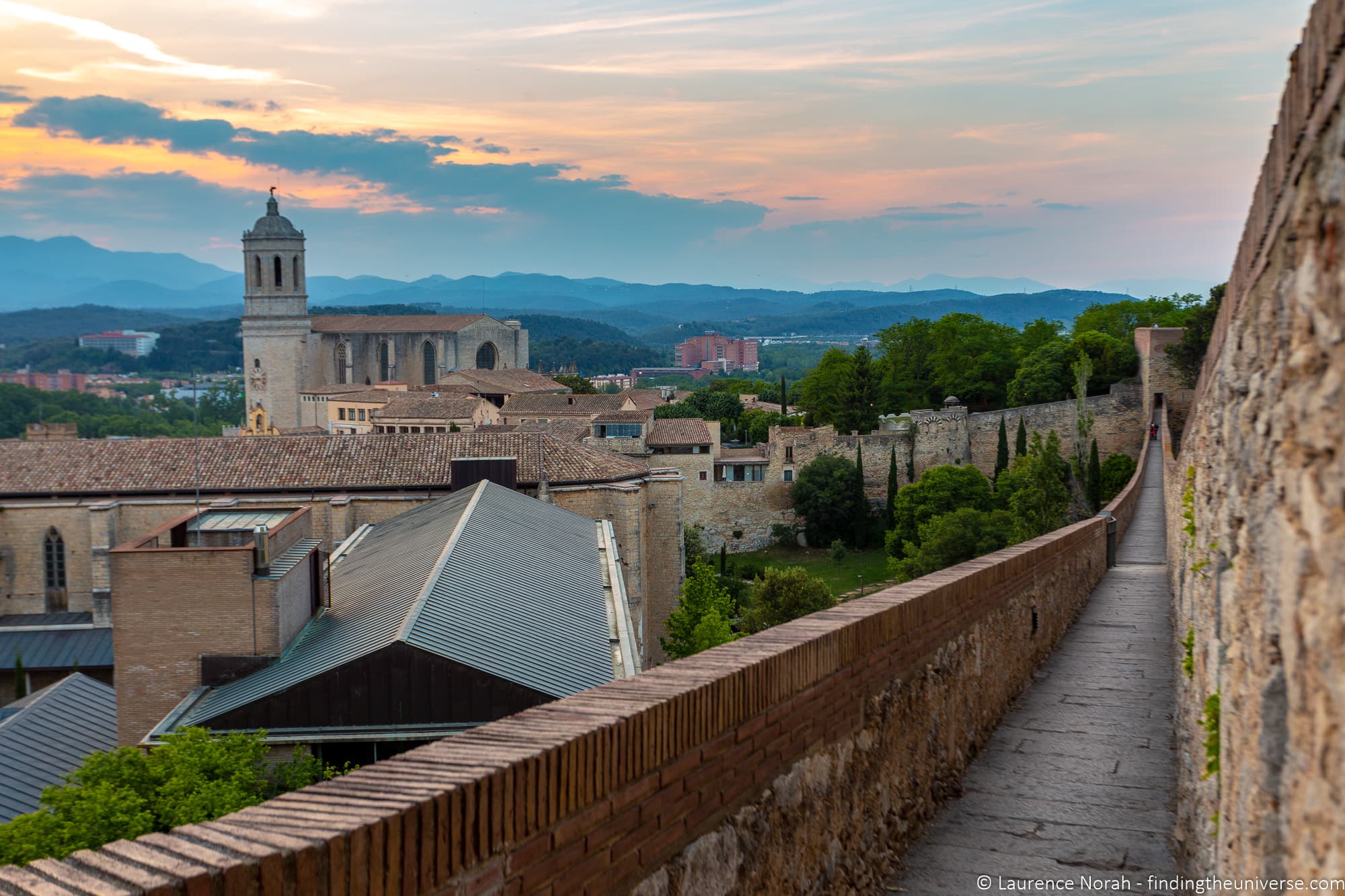
The other popular option is to visit the spectacular monastery and mountains of Montserrat, around an hour from Barcelona. You can see our guide to visiting Montserrat here for all the tips you need to do that.
Of course, there are lots of other tour options. You could go hot air ballooning , visit the Vall de Nuria , go skiing (if you visit in winter), go hiking in La Garrotxa , visit the Montserrat monastery – the list goes on!
That just about wraps up our suggestions for what to see and do with your three days in Barcelona.
To further help you with your planning for Barcelona, we have some guides we think you’ll find useful. See our itinerary for 3 days in Barcelona , our guide to Gaudi sites in Barcelona , and our favourite photography locations in Barcelona to get you started.
There are a few city passes for Barcelona, including the Barcelona City Pass , the Barcelona Card , and the Go Barcelona Pass . These work slightly differently, and so one or the other might be better for you. See our full break down and review of all the passes in our comparison of the Barcelona Discount Passes .
For most visitors we think the Go Barcelona Pass will offer the best value as it includes the main attractions like the Sagrada Familia, Park Guell and hop on hop off bus tour. We also have a full review of the Go Barcelona Pass to help you decide if it’s going to save you some money.
Finally, it’s worth bearing in mind that Barcelona has a bit of a poor reputation when it comes to petty crime, specifically around pick pockets, and items like phones being swiped off cafe tables. We have not personally experienced this, but have heard firsthand accounts from readers and friends who have.
We have more on this in our section below with tips for safety when travelling in Europe, but just try to keep your valuables out of sight all the time, ideally in zipped and secured pockets.
Now, let’s look at some options for where to stay in Barcelona, before planning how to get to the next city in your Europe itinerary.
Where to Stay in Barcelona
Here are a few options for your stay in Barcelona across a variety of price points, including a number of hotels we’ve personally stayed in and can recommend.
- Hotel Barcelona Catedral – A 4* property in Barcelona in the heart of the Gothic Quarter. We’ve stayed here, and enjoyed the roof top pool and incredible central location.
- Hostel One Ramblas – A very well reviewed and very central hostel option
- The 8 Boutique B&B – A highly rated and well located bed and breakfast
- Duquesa de Cardona – A 4* property on the waterfront with a roof top bar
- Leonardo Hotel Barcelona Las Ramblas – Part of the good value Leonardo chain, this 3* property is a few moments from Las Ramblas. We enjoyed our stay here, and the breakfast in particular was excellent.
- Ohla Barcelona – A very central 5* property with a roof top pool and excellent reviews.
How to Get from Barcelona to Venice
From Barcelona, the next stop on the trip will be Venice, Italy. If you are travelling for less than two weeks, you might want to skip Venice, and head straight to the last city on this itinerary, but for two weeks in Europe, we think Venice is a great addition.
The main option you have for getting from Barcelona to Rome is to fly. Of course, you could take the train, but as the average journey is around 22 hours and requires a number of changes, we’d suggest a flight is going to make more sense.
A direct flight from Barcelona to Rome is just under 2 hours. You can either go on your evening of your final day in Barcelona or the morning of the following day, it’s up to you. We think travelling in the evening makes more sense so you don’t lose time sightseeing in the morning.
Check times and book your flights here .
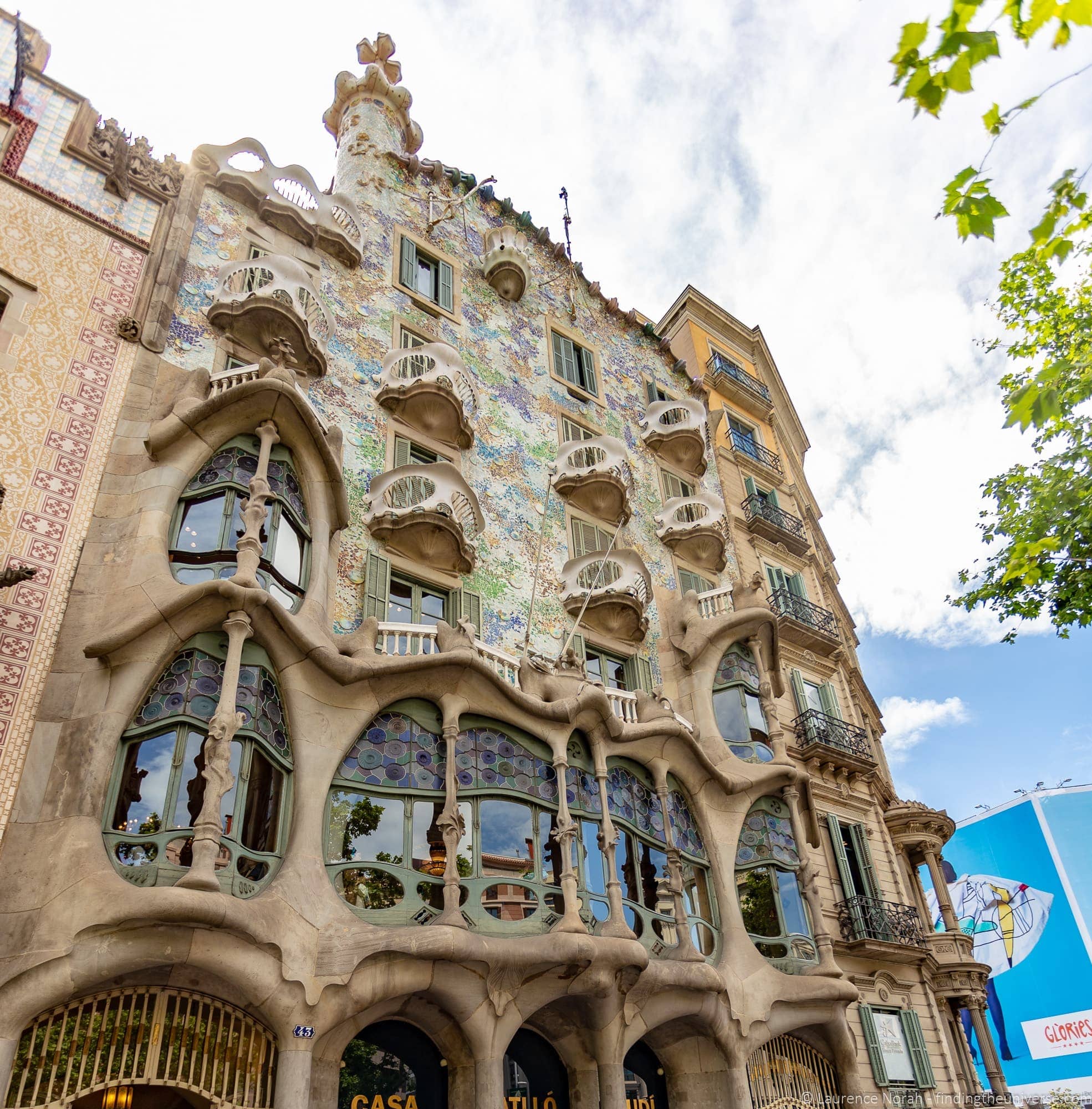
Days 10 – 11: Venice
You’ve arrived in the fourth and final country of your 2-week European itinerary – Italy! Home to amazing gelato , delicious coffee , and oodles of history.
We’re going to visit two cities in Italy on your European itinerary, both of which are favourites with visitors to Italy – us included! Of course, it’s hard to pick a second city in Italy from all the amazing options, but we think Venice is a must. Naturally, this will be followed by Rome.
We’ve put Venice ahead of Rome for the simple reason that it’s relatively easy to fly to Venice from the rest of Europe, but a little bit harder to fly onwards from Venice to international destinations. Ending the itinerary in Rome should make it easier for you to travel onwards to international destinations.
Anyway, we’re getting ahead of ourselves.
The next city on your European adventure is the beautiful city of Venice. This car-free city is famous for being built across a number of islands, with waterways and boats replacing roads and cars.
Venice is definitely one of our favourite cities in Europe, and was where we had our wedding ceremony with friends and family. So it’s definitely a city that is close to our hearts.
We’re going to recommend you spend two days in Venice. Many people visit the city for a day, which is do-able of course, but to really get a feel for Venice, we think you’ll enjoy spending two days here.
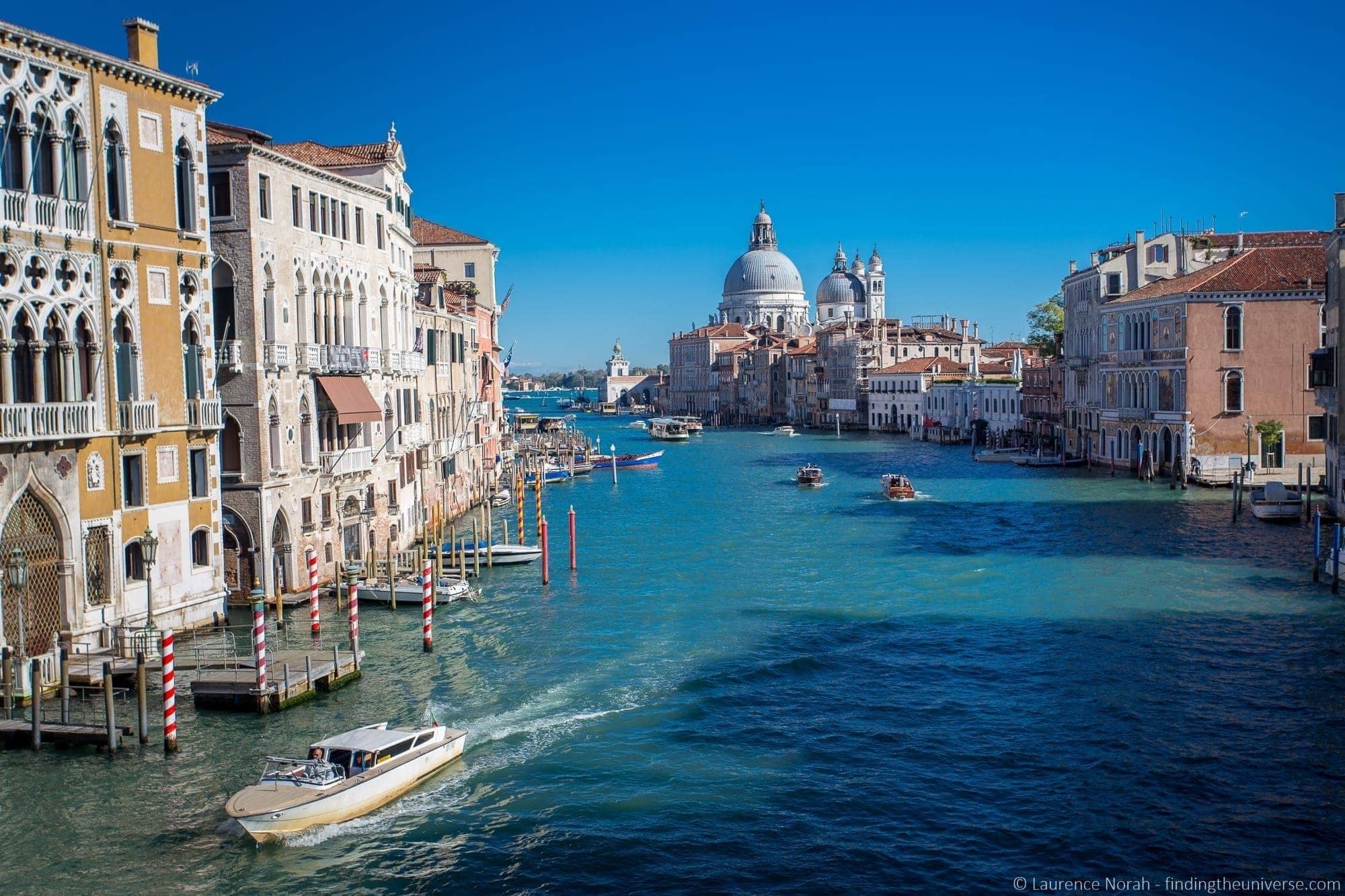
Our recommendation for your two days in Venice is to spend the first day exploring the highlights of the city – places like St. Mark’s Square, the Doge’s Palace and the Rialto Bridge. Take a Gondola ride , listen to musicians playing in the cafes, and get lost down the countless winding alleyways.
For your second day, we recommend taking a boat out to one of the islands around Venice, like Murano or Burano. These are much quieter with a different vibe to Venice itself, and we think you’ll enjoy this as a way to finish off your grand European adventure.
For more inspiration on what to do in Venice, see our guide to spending a day in Venice . We also recommend reading our guide to visiting the Doge’s Palace and St. Mark’s Basilica .
Of course, if you would prefer to visit another city in Italy other than Venice, you could spend these two days in any number of destinations, including the Amalfi Coast, Cinque Terre, Naples or Florence . You could even do a one day stopover in Florence on your way to Rome, rather than spending the two days in Venice. It’s entirely up to you, and depends on the flights you can find.
Where to Stay in Venice
Venice has a great many options for accommodation. Just be aware that many of the properties are old (as is much of the city!), and so elevators are not always standard. In addition, there are no vehicles allowed, so to get to your hotel from the train station you’ll need to take a ferry boat, water taxi, or walk.
- Casa Cosmo – a great value well rated budget option, five minutes walk from St. Mark’s Square and the Rialto Bridge. Rooms are air conditioned and are en-suite
- B&B Bloom Settimo Cielo – A highly rated and good value B&B breakfast, 10 minutes from St. Mark’s Square and the Rialto Bridge. Individually designed rooms have en-suite facilities, and there’s a rooftop terrace
- Leon Bianco on the Grand Canal – this historic property with Grand Canal views is where we stayed for our wedding ceremony in Venice. The views are fantastic, and it’s amazing value for the location
- Hotel Saturnia & International – a lovely 4* hotel just moments from Saint Mark’s Square, this turn of the century hotel offers en-suite rooms, a terrace with views, and an on-site restaurant.
- The Gritti Palace – a 5* luxury property right on St. Mark’s Square – this is the place you stay if you want to be in the middle of everything
How to Get from Venice to Rome
The best way to get from Venice to Rome is to take the train.
As always, you’ll get the best prices if you book your tickets in advance. You can check train times, prices, and book online here .
There are also flights, but by the time you have gotten to the airport, checked in, and then collected your baggage at the other end and gotten from Rome airport to the city center, you might as well have taken the train!
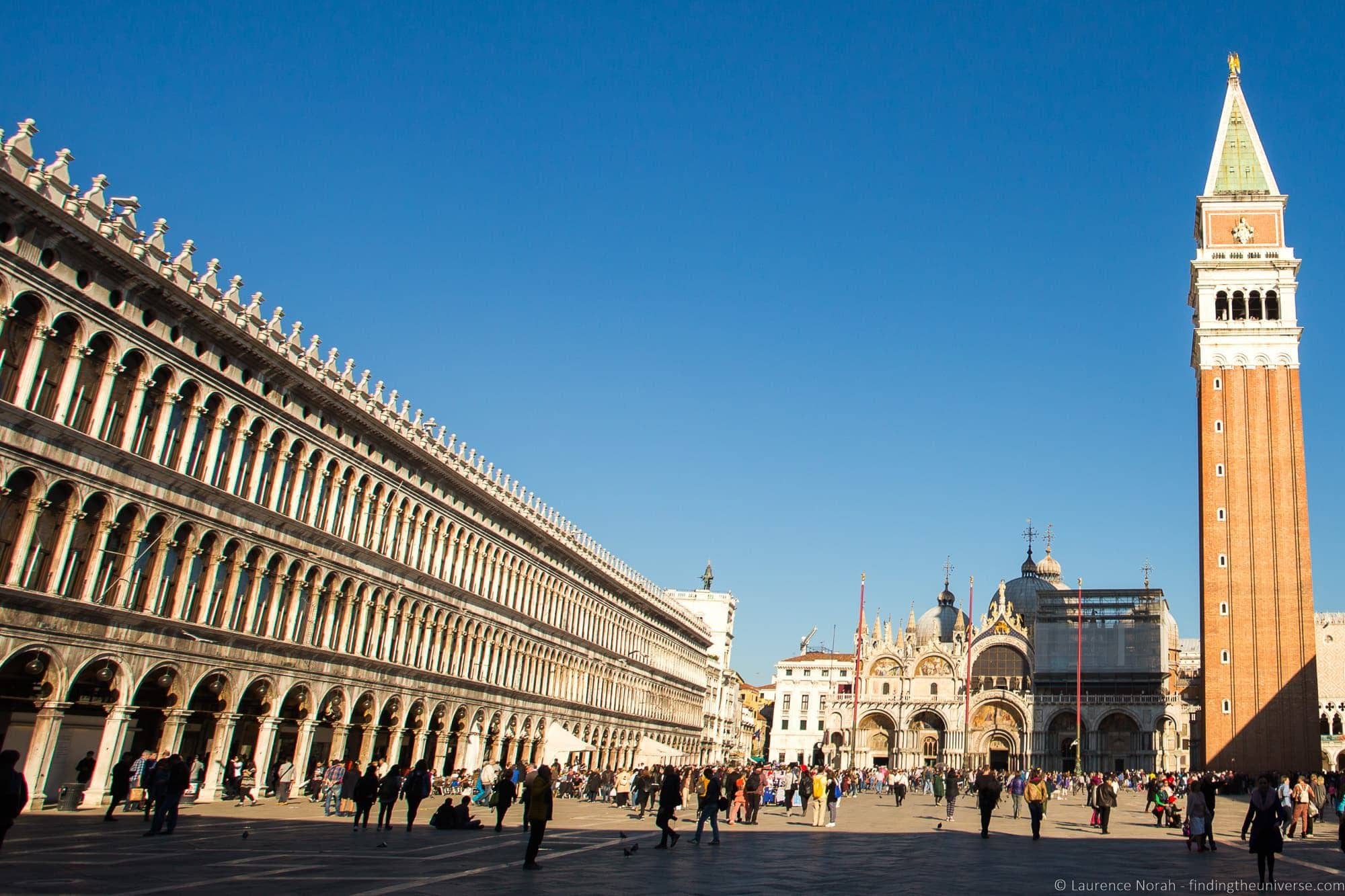
Days 12 – 14: Rome
Your next stop in Italy, and the last stop on your Europe itinerary, is the Italian capital of Rome. Founded almost 3,000 years ago, Rome is absolutely stuffed full of historical wonders and attractions.
We think that to do Rome justice, you should spend three days here. Here’s how those days might look.
Start your first day with a visit to the Colosseum . Built during the height of the Roman Empire, and nearly 2,000 years old, this is the largest amphitheatre in the world. It’s a must when in Rome.

Do be aware that like many of the other popular attractions in our itinerary, the Colosseum operates a timeslot system for entry, and you absolutely need to book in advance. See our complete guide to visiting the Colosseum for more on that.
After the Colosseum, we recommend visiting the Roman Forum, which is next to the Colosseum, and usually included on the Colosseum entry ticket. This was the heart of the Roman Empire, and is also a must when visiting Rome.
You’ll likely already be half way through your first day already. We suggest spending the rest of the day exploring the historic city center, with attractions like the Spanish Steps, Pantheon, and Trevi Fountain.
For your second day in Rome, we recommend you head to the Vatican City. This is a city-state inside Rome itself, and is home to the Vatican Museums and St. Peter’s Basilica. The Vatican Museums are home to world renowned works of art as well as the Sistine Chapel – a masterpiece of Renaissance art.
Both these attractions are very popular, and you will want to plan in advance to ensure you don’t waste time standing in line if you are visiting at a busy time of year. You have a few options.
First, you can take a guided tour which includes the Vatican and St. Peter’s Basilica like this one .
This will give you loads of information about what you are seeing and ensure you don’t waste time standing in line.
Another option is to invest in a pass which includes skip the line entry or a tour of these attractions. We would suggest looking at the Rome Tourist Card which includes skip the line access to the Vatican, Colosseum, and St. Peter’s Basilica.
You can also consider the Omnia Vatican and Rome Card , although this doesn’t currently include skip the line access to St. Peter’s Bascilica.
Finally, you can book individual tickets here for the Vatican via their official website (or here on GetYourGuide , which is easier to use in our experience).
As of early 2023 St Peter’s Basilica doesn’t actually have an entry fee, but nor does it have skip the line tickets (skip the line tickets used to be an option and we hope they come back soon!). So the best option if you want to skip the line is to invest either in a tour or a pass which includes a tour like the Rome Tourist Card .
You can also book Vatican tickets here , using our link gives you 5% off their usual price for Vatican tickets. It’s a little more expensive than the official website but somewhat more user friendly in our experience.

We recommend allocating at least half a day to explore the Vatican Museums, Sistine Chapel and St. Peter’s Basilica.
For lots more information on visiting the Vatican City and its attractions, see our complete guide to the Vatican , which has everything you need to know, including all the highlights, tips for visiting, how to buy tickets and lots more.
From here, head along to the Tiber River, and explore Castel Sant’Angelo (get tickets here ). Afterwards you can head back towards the city center, and visit locations like the Piazza Popolo.
If you have time and are interested you could also visit the Borghese Gallery. Note that this is also a timed entry system – see our guide to visiting the Borghese Gallery for more.
For your last day in Rome, we recommend spending some time exploring the Appian Way. This was one of the major routes in and out of the city, and is home to a number of ancient Roman ruins, as well as catacombs. A stop at the Baths of Caracalla on your way out of the city is also recommended.
Another option for your last day in Rome (or your first day, depending on how you decide to structure your itinerary) is to take a walking tour.
We’ve taken a number of walking tours in Rome with both Take Walks and Context , and enjoyed them all. As an example, see this introduction to Rome which includes gelato tasting!
For more inspiration for your visit to Rome, see our itineraries for 3 days in Rome , 2 days in Rome and a day in Rome .
In terms of saving money, there are a number of passes available for sight-seeing. For 3 days, our recommendation would be the Omnia Rome and Vatican Card. This includes public transport in Rome, a hop on hop off pass, and skip the line entry with timed reservations at the major attractions.
There are other passes as well, including the Roma Pass , the Rome Tourist Card and the Best of Rome All Access pass . Which is best for you will depend on how many sites you are interested in visiting, and whether you plan on using the specific features they offer.
That pretty much finishes up the itinerary section of this post. We’ll share with you our tips for where to stay in Rome, before moving on to some practical information to help you plan this trip perfectly.
Where to Stay in Rome
We recommend the following hotels in Rome. The first three are near the main train station, which will make for an easier transfer when you arrive from Venice.
- Gioberti Art Hotel – 50 yards from Termini Station, a well rated excellent value 4* hotel
- NH Collection Palazzo Cinquecento – Awesome value 5* hotel just a few steps from the train station
- Hotel Valentino Palace – a fantastic mid-range 3* property, just 150 yards from the train station
- The Navona Theatre Hotel – a well reviewed and very centrally located 3* hotel
- The Mimosa Pantheon Hotel – an excellent value budget hotel just around the corner from the Pantheon
- The Hotel Navona – a well reviewed 3* hotel next to the Pantheon
- Di Rienzo Pantheon Palace – a centrally located well reviewed boutique hotel within walking distance of Rome’s highlights
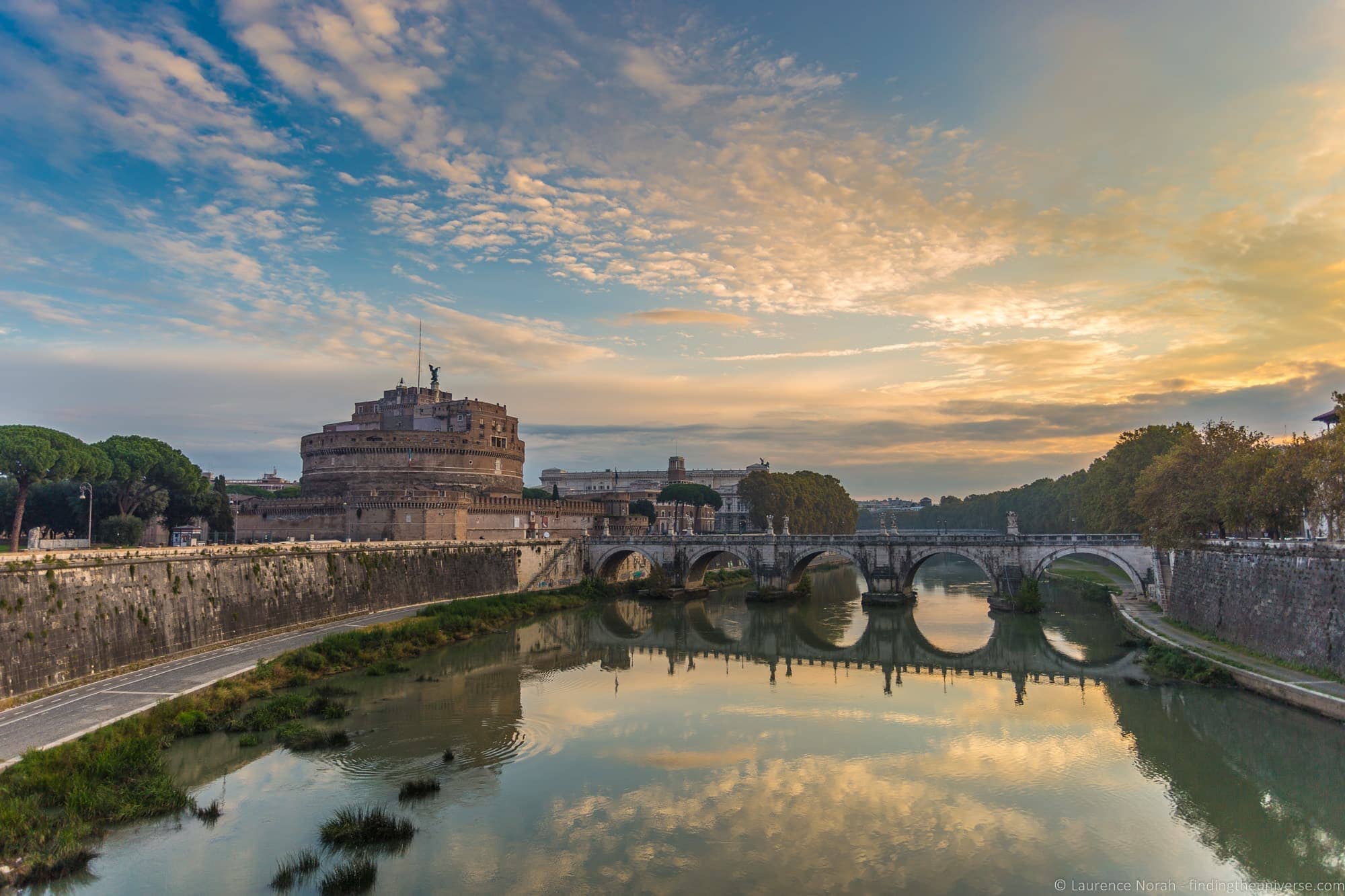
2 Week Europe Itinerary Map
To help you visualise this itinerary, we’ve put together this overview map of the stops and route.
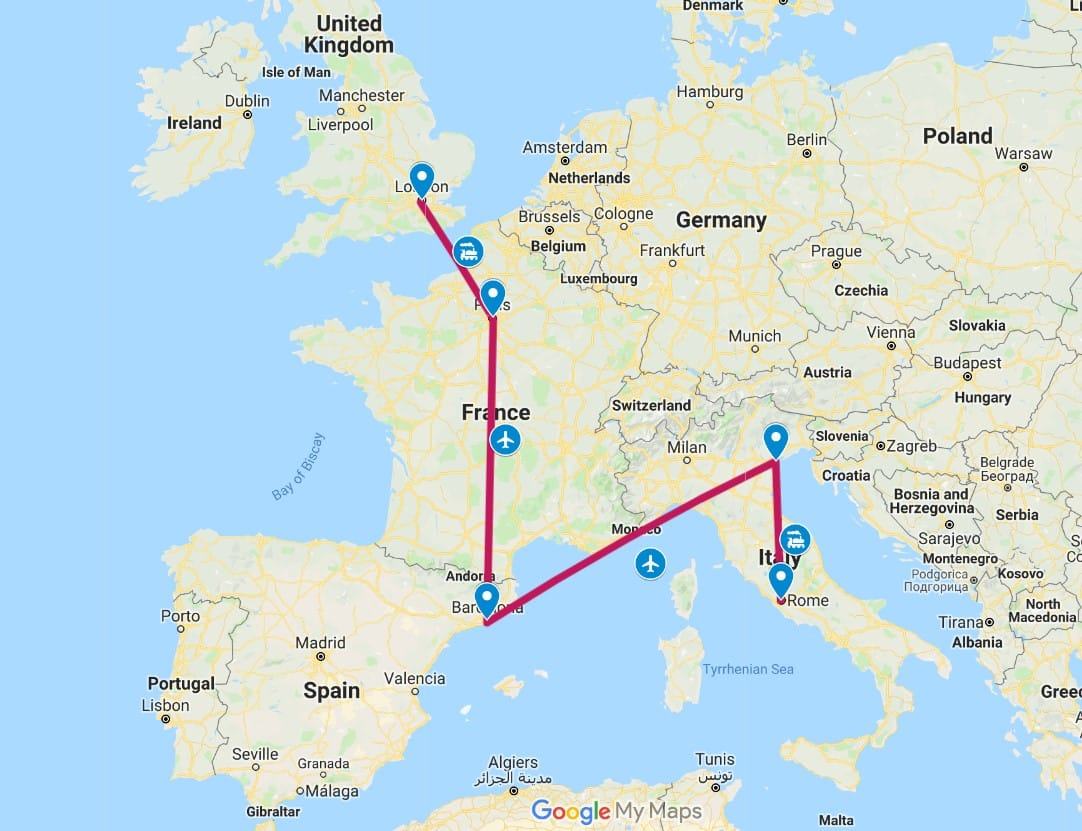
2 Week Europe Itinerary Summary:
- Day 1: London. Houses of Parliament, Westminster Abbey, Trafalgar Square, Covent Garden, Churchill War Rooms, Buckingham Palace and the London Eye .
- Day 2: London. Tower of London , Tower Bridge, Borough Market, St. Paul’s Cathedral, the Tate Modern, Shakespeare’s Globe and the Shard.
- Day 3: London. Windsor Castle, Hampton Court Palace, Stonehenge
- Day 4: Paris. Eiffel Tower, Seine River Cruise, Musee d’Orsay, Walking tour
- Day 5: Paris. Saint Chapelle, Notre Dame, Louvre, Arc de Triomphe
- Day 6: Paris. Versaille, Moulin Rouge
- Day 7: Barcelona. Sagrada Familia, Recinte Modernista Sant Pau, Park Güell, Gaudi Experience, Camp Nou
- Day 8: Barcelona. Casa Batlló, Casa Milá, Barcelona Cathedral, Palau de la Musica Catalana, Picasso Museum
- Day 9: Barcelona. Girona & Figueres
- Day 10: Venice. St. Mark’s Square, Doge’s Palace, Rialto Bridge, Gondola ride
- Day 11: Venice. Murano, Burano
- Day 12: Rome. Colosseum, Roman Forum, Spanish Steps, Pantheon, Trevi Fountain.
- Day 13: Rome. Vatican Museums, St. Peter’s Basilica, Castel Sant’Angelo, Piazza Popolo, Borghese Gallery
- Day 14: Rome. Appian Way, Baths of Caracalla
How to Get Around Europe
Europe has no shortage of transportation options to get you from place to place. For this itinerary, we would suggest you primarily use the train to get from city to city.
The high speed trains in Europe run frequently, are very comfortable, and are more environmentally friendly than short hop flights. If you book in advance they can also be cost effective. They also have the advantage that there are fewer baggage restrictions, and train stations tend to be in the city center – unlike airports.
Of course, not every segment of this trip would suit a train. For example, from Barcelona to Venice would take at least 24 hours by train. Also, Paris to Barcelona is a fairly lengthy journey. There is the option to take an overnight train, however it isn’t direct so it takes a while. It does save you the cost of a hotel night though.
For train travel across Europe, it’s important to book your tickets in advance as this will get you the best prices. We recommend thetrainline which supports booking tickets in all the countries visited on this itinerary.
For flights, we suggest you try Kiwi , which includes the major low cost airlines as well the more traditionally priced carriers.
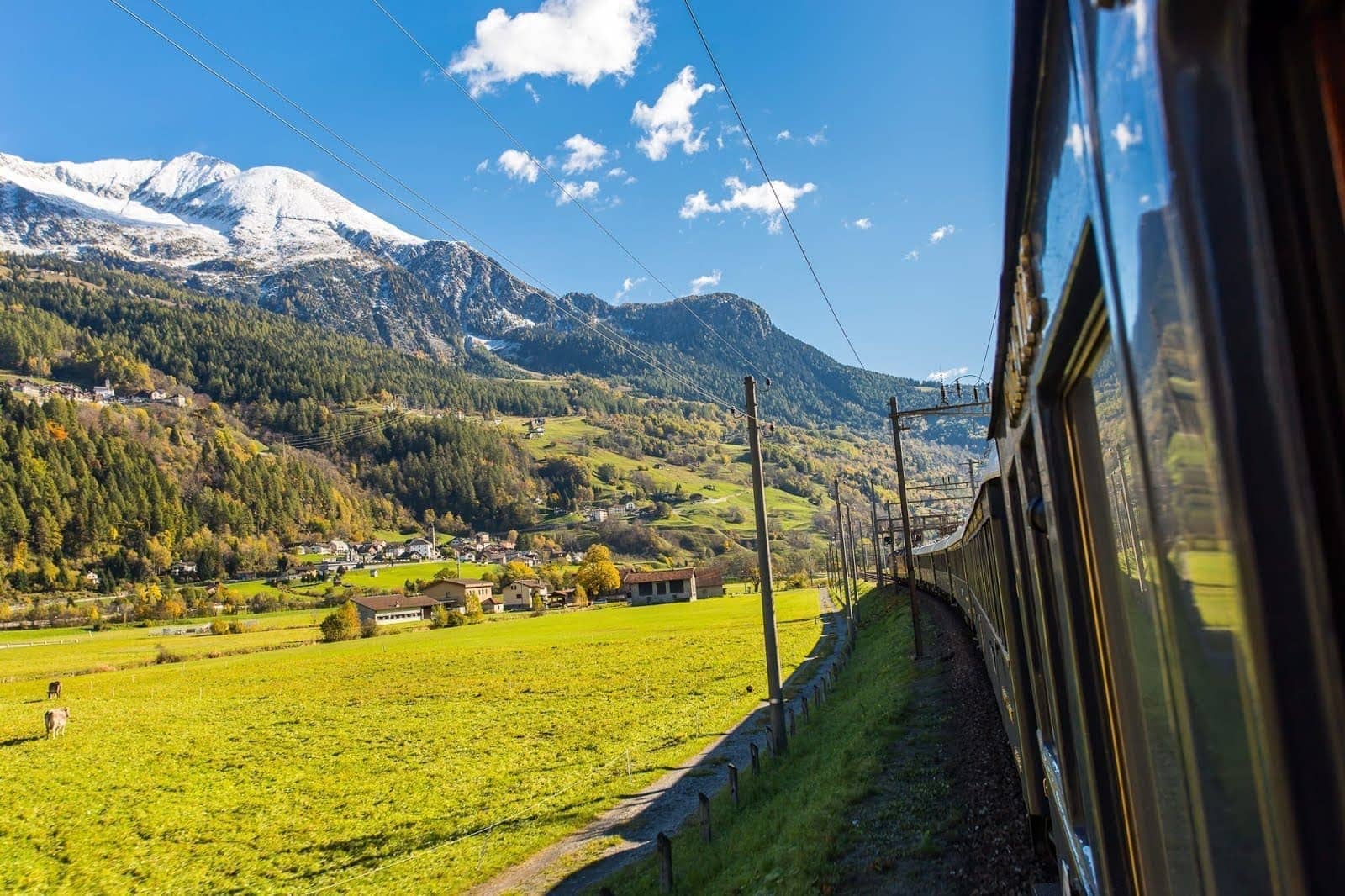
When to Visit Europe
You can certainly visit Europe year-round, although visiting at different times of year will give you different experiences.
For the most part, summers in Europe are quite warm, with temperatures likely to be between 25C & 32C (77F – 90F) on average. Whilst the weather is going to be most reliable in the summer months of June through August, this is also going to be the busiest time of year to visit.
The cities in particular are very popular with visitors, and lines for attractions can be long at these times of year. We wouldn’t say you shouldn’t visit at this time of year, but you should definitely plan ahead and arrange all your entry tickets so as to make the most effective use of your time.
Our favourite time to travel in Europe is the shoulder months of April / May, and September / October. These months tend to offer a combination of reasonable weather and less busy attractions.
We’ve also travelled extensively throughout Europe in the cooler winter months, from November through to March. It never gets much below freezing during this time, so as long as you dress appropriately, we think you will have a great time.
See our guide to what to pack for London to give you some ideas of what you might want to bring along.
We don’t think there’s a bad time of year to travel in Europe. It’s just a question of planning and preparing properly in advance. It is also worth checking if there are any events happening in the city when you visit that might cause it to be busier.
For example, Venice has a major Carnival celebration near the start of the year, and the city is always busier at this time. Other cities also have events, and if you visit during them you will find accommodation prices will be higher, and the city will be busier.
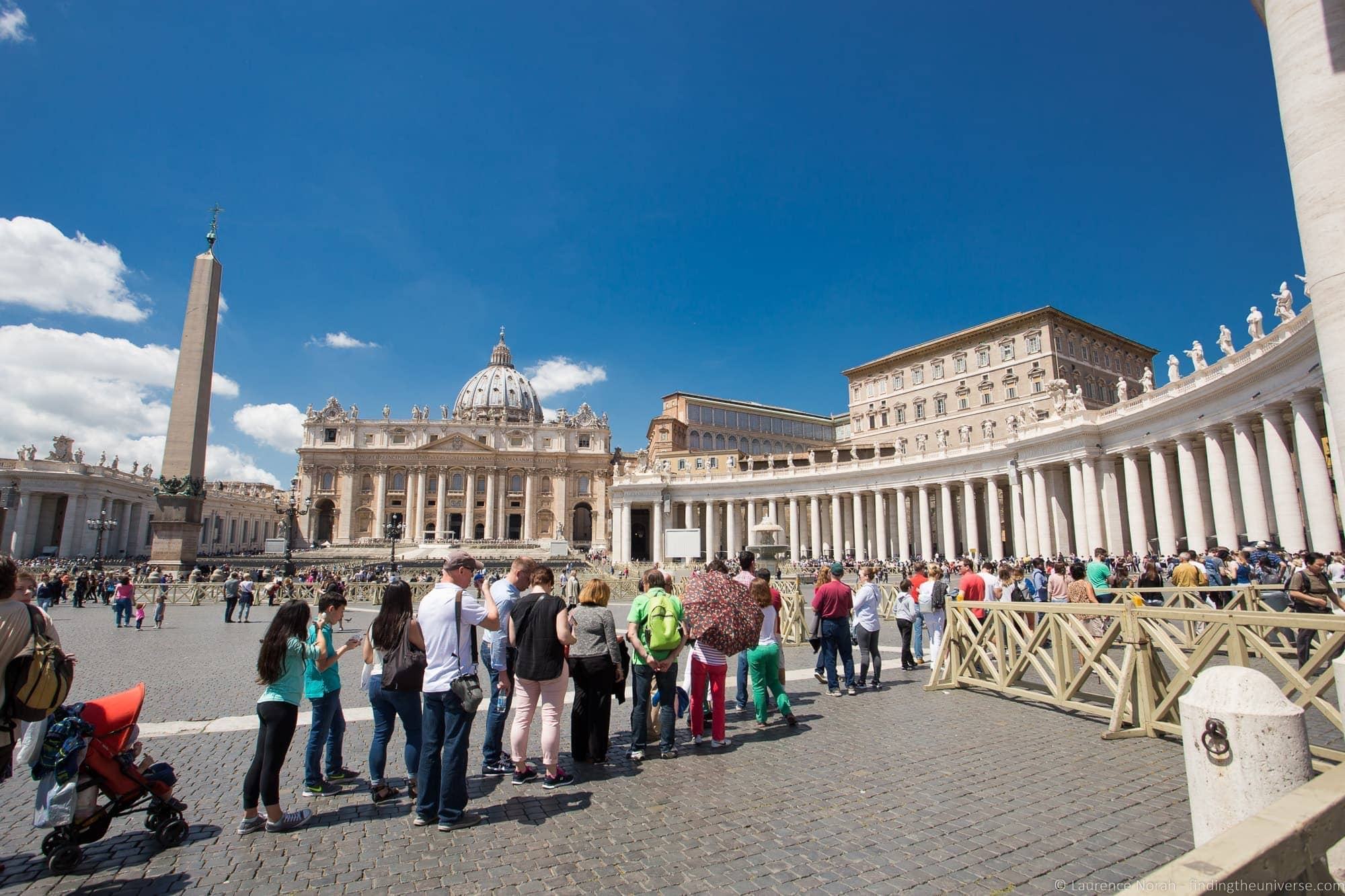
Practical Advice for Travelling in Europe
Europe uses a 220-240V electrical system, so if you are travelling from the USA, Canada, or any other country that uses a 110V system, you will need to check that your electrical items are compatible.
In our experience, lower power items like laptops and smartphone charges are compatible from 110V – 240V, but higher power items like hair dryers and hair straighteners are usually not. The power rating and acceptable voltage should be marked on the device somewhere.
It’s really important you don’t plug a device into a voltage it doesn’t support, as it will damage it. Its best to leave non-compatible items at home and purchase a dual voltage appliance if you need it during your trip, such as a dual voltage hair straightener .
In addition, the UK and continental Europe have two different plug types. Mainland Europe generally uses a two pin system with round holes, whilst the UK has a three pin system with rectangular holes.
For travel, therefore, you will need a travel adaptor like this which will let you plug your devices in. Note that most travel adaptors are not voltage convertors. You would need something like this to convert the voltage.
Internet in the form of free WiFi access is fairly easy to get access too across all the cities mentioned in our article. In addition, since the EU has abolished roaming charges, if you buy a SIM card in one EU country, you should be able to continue to use it in other countries without any additional charges.
Depending on the device you are travelling with, you will have a number of options for accessing the internet when you travel, from picking up a local SIM, to renting a WiFi hotspot, to just using WiFi as you go.
We have a detailed guide to getting online when you travel to help you figure out which is best for you.
The two currencies that you’ll need for this trip are the pound sterling (GBP) and the euro (EUR). The UK (London in the case of our itinerary) uses the pound sterling and the rest of the European destinations on our itinerary use the Euro. Euros from one country can be used in any of the other countries.
In our experience, you should be able to pay for the majority of your travel spending using a credit or debit card. We’d advise getting one of these that doesn’t impose foreign transaction fees if that is an option. Ideally it will also support contactless technology, which will make using it for smaller payments easier.
We would also suggest you always have some cash in the local currency on you for small purchases, tips, and places that don’t accept credit cards (or if there is any issues with your credit card).
There are cash machines available in all the major cities on this itinerary where you will be able to use your bank card to withdraw a local currency. Depending on the policy of your bank at home, you might be able to withdraw cash from these without a fee, but do check in advance of your travel so you don’t pay fees unexpectedly. Some ATM’s also charge a fee.
If there is a fee from your bank for withdrawing cash, you might find it is more cost effective to order some money at home before you leave – or to find a bank account that lets you withdraw cash fee free.
All the cities that we have listed are relatively safe, but of course you should take the same safety precautions when travelling that you would at home. Avoid walking alone at night in unfamiliar areas and don’t leave valuables lying around where they could be easily snatched.
It’s also a good idea to read up on some of the common scams that you might encounter in each city – for example, we wrote a guide to common scams in Paris to give you an idea of what to look out for.
We’d also suggest keeping your valuables locked in your hotel safe when possible, and to avoid carrying large amounts of money on you. We’d also suggest having a good travel insurance policy. Basically, just apply the same safety principles that you would at home to your personal belongings and safety, and you should have a safe trip!
Drinking Water
Unless otherwise indicated with a sign, the water in the taps in all of the cities on our list is safe to drink. In some cities, you’ll also found water fountains where you can refill your water bottle.
The water in Barcelona does have a slightly strange taste due to the high mineral content, and many local people prefer to drink bottled water. However, the tap water is safe to drink unless otherwise noted.
We very much recommend that you travel with a high quality reusable water bottle like this and fill it up as you go. This will be friendlier to the environment, and save you having to spend money on a resource that is available for free.

Walking Tours in Europe
One of our favourite ways to explore a new city is to take a walking tour. It’s a great way to get oriented, learn about the city, its sights and its culture, plus get local tips on places to eat, drink and see from the guide.
We’ve taken walking tours in cities around the world, and we nearly always use one of two companies – Take Walks , and Context . Both of these companies offer small group walking tours in all the cities we’ve covered.
Take Walks offers tours with groups of up to around 14, whilst Context offers more private and semi-private tours. Here are some example tours to consider for the various cities in this itinerary.
- This London In a Day tour visit the highlights of London in one day, including the Tower of London, Westminster Abbey & Changing of the Guard.
- This introduction to London Tour which includes many of the highlights of the city
- This tour of the Chruchill War Rooms in London
- This full day tour of Paris which includes a Skip the Line Louvre Tour, the Eiffel Tower, Montmartre & a Seine River Cruise
- An introduction to Paris Tour , which includes the Louvre, Opera Garnier and the Champs-Elysees
- A full day tour of Barcelona which includes a visit to La Sagrada Família, Casa Milà & the Gothic Quarter
- This Rome In A Day Tour which includes a guided visit and skip the line entry to the Vatican, the Colosseum & a tour of the Historic Center of the city
- A full day tour of Venice which includes St. Mark’s Basilica, the Doge’s Palace, & a Gondola Ride
Of course, this is just a sample of some of the many tours available, which vary in length from a couple of hours to a full day. We suggest taking a look at all the walks on Take Walks here and Context here . Note that all bookings through our Context links save you 10% on the tour price automatically.
Finally, there are of course a multitude of other options for walking tours. If you would like more options, we suggest looking at the listings on either GetYourGuide or Viator. These two sites have tour options from a wide range of companies, and you can read reviews from other travellers prior to booking to decide if it’s a good option for you.
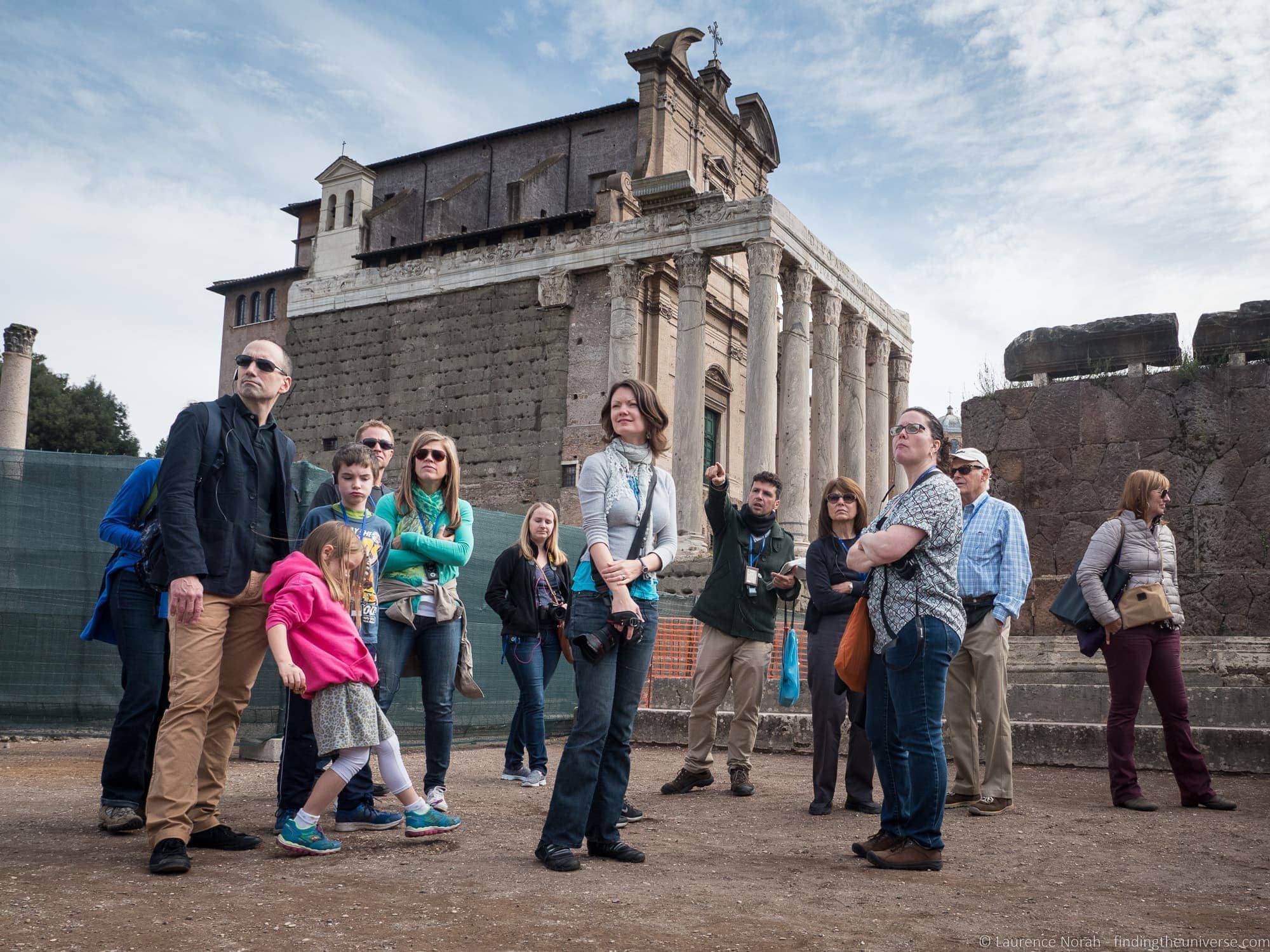
Saving Money in Europe
Europe, and western Europe in particular, is not exactly known for being a budget destination. The cities in particular are fairly expensive. Your main costs on this trip are likely to be the flights (biggest cost for most), accommodation, attraction entry, transport between the cities, and eating out.
To help you control these costs, we wanted to share some of our tips from years of experience travelling in European cities, so you don’t spend money unnecessarily. Even if you’re not on a tight budget, there’s no need to waste money when you don’t have to!
Use City Passes
All the cities in our itinerary have one or more city passes to choose from. City passes generally include either free or discounted admission to the major attractions in the city, and may also include other benefits.
These other benefits will vary, but will generally include things like fast track entry to some attractions, inclusive public transport, hop on hop off bus tickets, and discounts on meals and other activities like walking tours, wine tastings, and so on.
We have used a number of city passes during our travels in the cities in this itinerary, and our recommended passes for you to consider are as follows:
- For London: The London Pass. Available in durations from one to ten days, covers all the major attractions in London. See our full review of the London Pass here , and buy yours here .
- For Paris: The Paris Pass or the Paris Museum Pass. The Paris Pass includes entry to most of Paris’s major museums, plus includes attractions like a HOHO bus and Seine River Cruise. The Paris Museum Pass just covers attraction entry fees. See our full review of the Paris Pass here , and buy your Paris Pass here . We also have a full review of the Paris Museum Pass here, and you can buy it here .
- For Barcelona: The Go Barcelona Pass , Barcelona City Pass and Barcelona Card . These vary in what they cover, and whilst we suggest you pick up at least one of them, the best one for you will depend on your interests. See our full comparison of the Barcelona City Passes for more information.
- For Rome: The Omnia Rome and Vatican Card or the Roma Pass . Both these passes include free public transport in Rome, as well as free and discounted admission to attractions across the city. The Omnia Rome and Vatican Card also includes skip the line access to the Vatican Museums, St. Peter’s Basilica, as well as other Vatican attractions. It also has a hop on hop off bus.
- For Venice : We have never used a discount card in Venice. However, there is a Venice Pass which includes many of the museums and churches that is well worth checking out.
If you are planning on seeing a number of sights in each city you visit, a city pass can definitely save you money. Some of them will also save you time, as they offer skip the line benefits. However, we do recommend doing a little bit of reading on each pass to make sure it makes sense for your specific trip.
Note that city passes are often not as good of a value for children (especially young children) and those who are eligible for discounts at many attractions (seniors, disabled, EU university students), so do check if you qualify for any discounts before buying a pass.
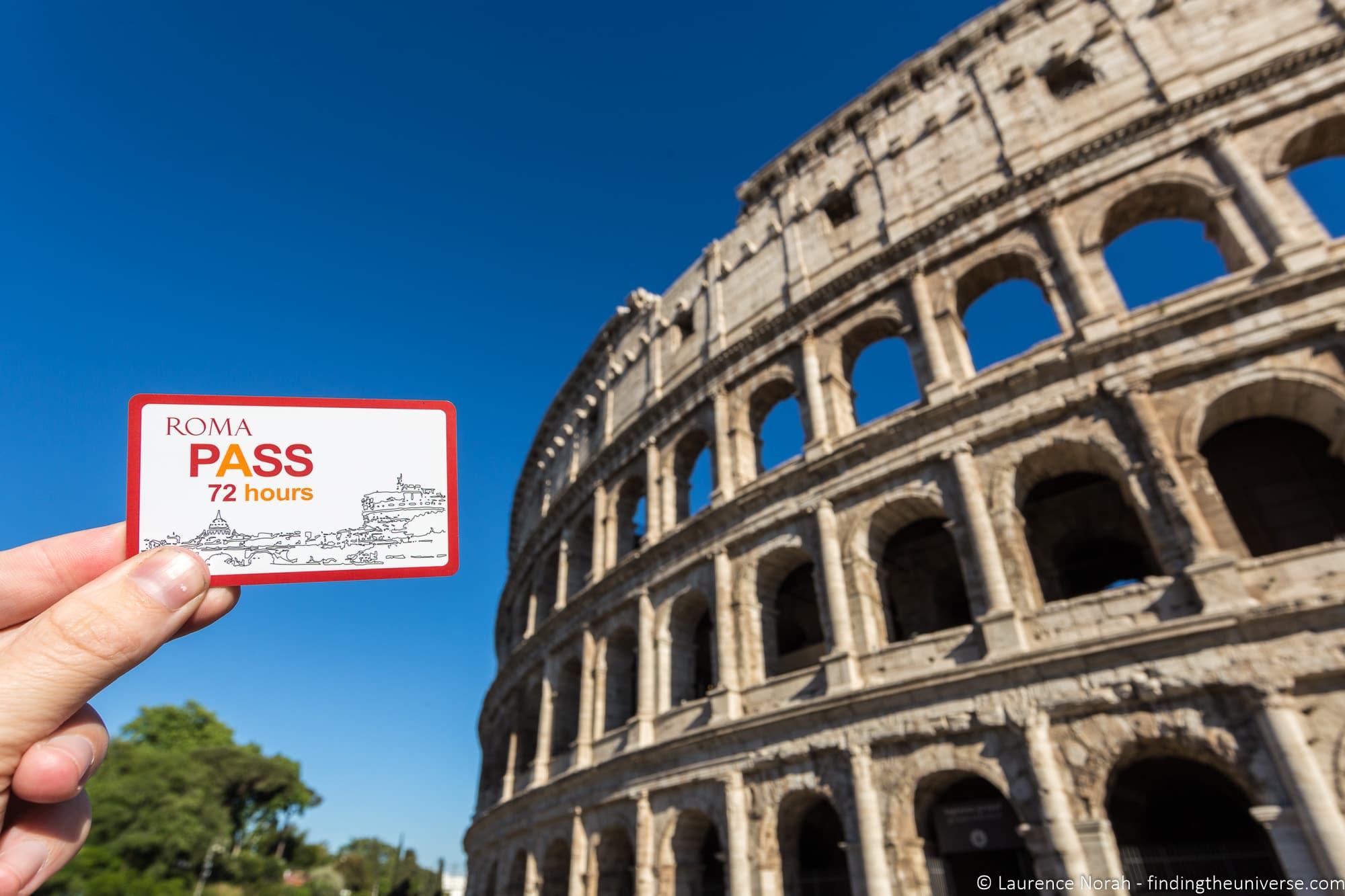
Book accommodation and transportation in advance
The two major costs on your trip are likely to be accommodation and transportation. Our major tip for both of these is to book them in advance.
For transport in Europe, the best deals are nearly always to be had if you book as far in advance as possible. The cheapest tickets on flights and trains always sell out first, and then the prices will increase.
We recommend you check your flights and book in advance here , and your trains here .
Accommodation is not quite so straight forward, as prices can dip and rise depending on demand. However, in our personal experience, prices tend to be lower if we book further in advance. Plus, you can often take advantage of free cancellation policies, and re-book if the prices drop.
Also, don’t forget to look at accommodation options beyond hotels. Short term apartment rentals can be very cost effective, plus they will allow you to prepare some of your own meals if you want, which will also save you money.
We generally use booking.com for booking our hotels, and they also include apartments. We also use Plum Guide regularly. There are plenty more options though – see our guide to some AirBnB alternatives to give you some ideas.
Invest in a Guidebook
We recommend investing in a guidebook, especially if this is your first trip to western Europe.
Investing $15 to $25 in a guidebook can save you much more in time and money. A guidebook can cover much more in-depth information than we can in this blog post, and means you’ll have all the information you need at your fingertips.
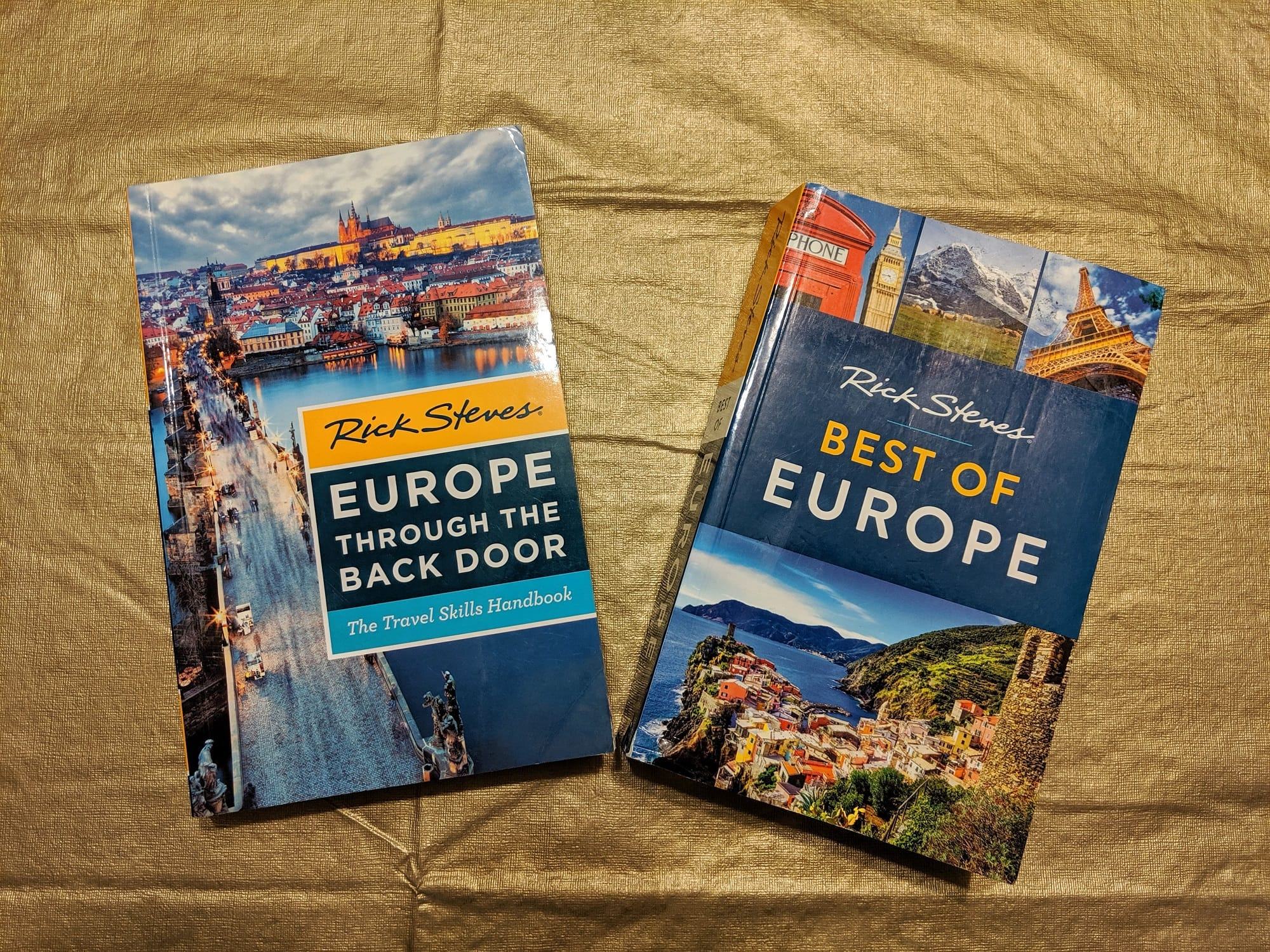
For this trip, we recommend the Rick Steves Best of Europe guide . If you had to pick one guide book, that would be our favourite – it covers all the destinations in this itinerary (plus many more!) and has lots of practical information, tips and advice to help you plan. We use and love it.
If you have room in your bag, we can also recommend the Europe through the Back Door book , which has a lot of general travel advice for Europe.
Other options to consider include Lonely Planet’s Western Europe guidebook and/or the Insight Guide to Western Europe .
Be sure to purchase a recently edited/updated version of the guidebook. So make sure it was updated in the last year or so. Most guidebooks are updated every year or two to make sure the information is as up to date as possible.
If you are not sure which guidebook may be best for you, you might want to browse in your local bookshop or library before picking one.
Use Public Transport Effectively
The cheapest and most effective way to get around the cities listed in this post is to take public transport (well, after walking of course!).
Each city has its own public transport network, with various fares and ticket options. Learning how to use these properly will save you money.
For example, in London, it’s possible to buy individual tickets using cash. However, this can be twice as expensive as using an Oyster Card or Contactless bank card for your travel. In Paris, you can buy tickets individually, or you can save money by buying booklets of ten tickets.
In addition, many of the city passes we recommend come with some sort of travel card, which can also save you money.
Basically, each transport system has its own quirks, and having a handle on these will likely save you money. We also recommend always checking to see how far your destination is on foot before taking public transport.
The public transit maps are unlikely to match up to the reality of geography, and you might find it will take the same amount of time to walk somewhere as it would have to take a bus or metro, plus walking is free!
Find restaurant deals
Our final tip covers the last major expense, which will be eating out. Of course, eating out is a major part of travelling, but the costs can quickly add up.
The good news is that you can also save money on eating out. The secret is to figure out when the restaurant deals are likely to be happening.
For example, in France and Spain, it’s very common for lunch time menus to be offered. These are usually two or three course meals, which sometimes include wine, bread and coffee, and which are usually priced under €20 per person.
For Paris, see our guide to some of the best Michelin starred restaurants for lunch deals .
In London, these aren’t as common, however, many restaurants offer theater deals. These are special priced menus offered either late in the afternoon (5pm – 7pm generally) or late in the evening (10pm and onwards), designed for theatre goers who want to get a meal before or after the show.
Of course, you don’t have to be going to the theatre to take advantage of these deals!
Other options for saving money on dining out include taking advantage of street food, picking up “meal deals” at supermarkets like M&S in London, putting together picnics from markets in Paris – the list goes on. It is certainly possible to eat on the cheap quite easily if you make a little bit of effort to do so.
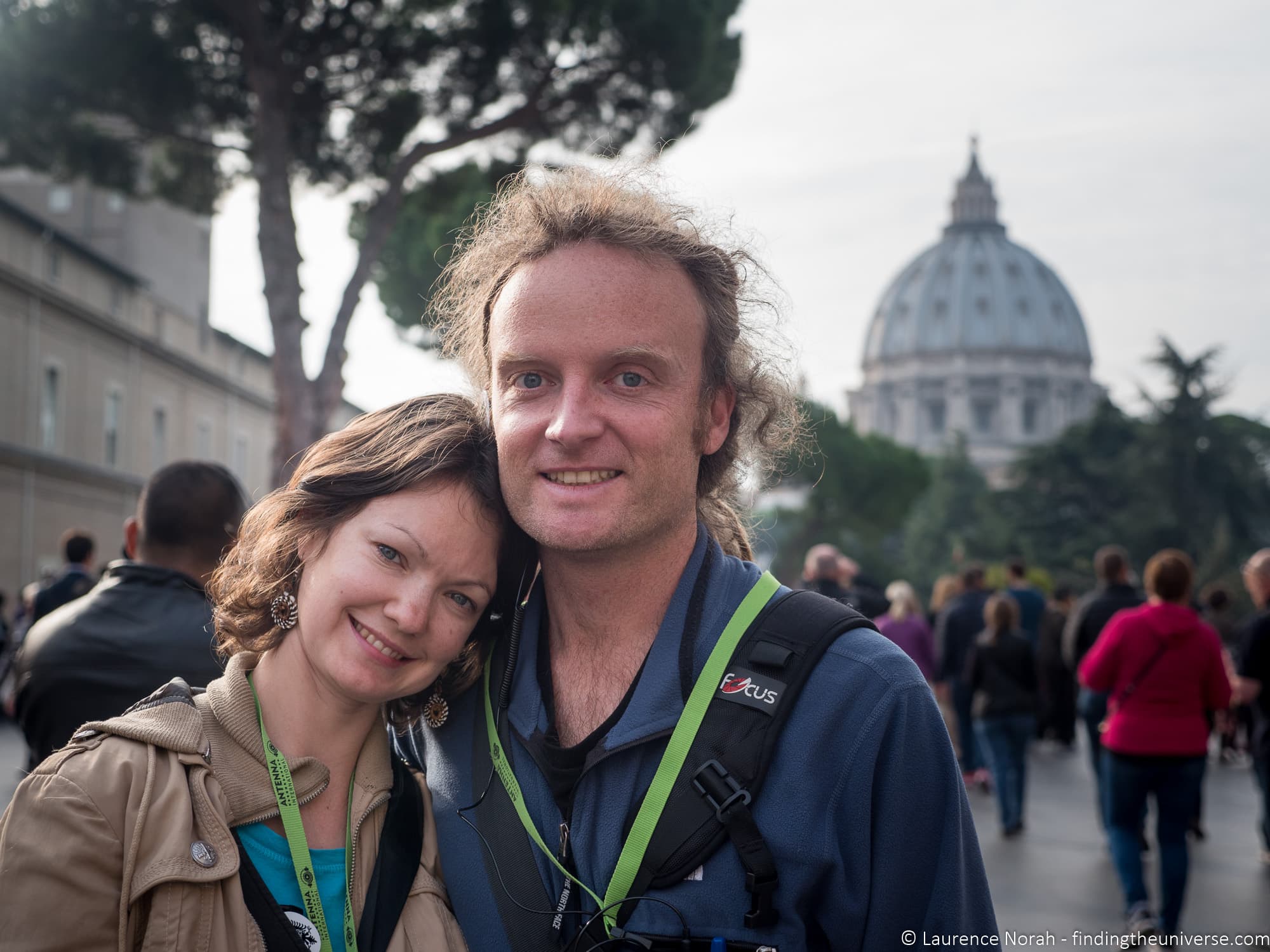
Further Reading for your Trip to Europe
Well, that’s pretty much the end of this post to help you plan your own perfect Europe itinerary and trip.
As you can see from the links shared throughout the post, we have a lot of content to help you plan your own trip to Europe. To make it easier for you, I wanted to put some of the most useful content here, for easy reference. I’ve also included some third party resources you might find useful in planning.
- For London , we have a guide for a day in London , 2 days in London , 3 days in London and 6 days in London
- We have a guide to the London Eye , Tower of London , Harry Potter filming locations in London , Winston Churchill locations in London , London’s War Museums , London’s UNESCO sites and tips on taking a walking tour in London
- We also have a guide to public transport in London , a guide to getting from the airport to London , a guide to what to pack for London , a guide to the cost of travel in the UK and a review of the London Pass
- For Paris , we have a guide to a day in Paris , 2 days in Paris and 3 days in Paris
- We have a guide to the best photography locations in Paris , afternoon tea in Paris , thoughts on the best Seine River cruises , a guide to making perfume in Paris , and advice for visiting the Moulin Rouge
- We also have a review of the Paris Pass , a review of the Paris Museum Pass , a guide to visiting the Eiffel Tower
- For Barcelona , we have a guide for 1 day in Barcelona , 2 days in Barcelona and 3 days in Barcelona .
- We have a guide to the best photography locations in Barcelona , the Anton Gaudi sites in Barcelona , and the Sagrada Familia
- We have a review of the Go Barcelona Pass and a comparison of the major Barcelona city passes
- For Rome, we have a guide to things to do in Rome , a day in Rome , 2 days in Rome and 3 days in Rome
- We also have a guide to the best gelato in Rome , the best cafes in Rome , visiting the Borghese Gallery in Rome, visiting the Colosseum in Rome and our thoughts on taking a walking tour in Rome
- For Venice , we have a guide to spending a day in Venice
- We also have a guide to visiting the Doge’s Palace & St. Mark’s Basilica , as well as our thoughts on a tour of Casanova’s Venice
- Investing in a guidebook can help save you time and money on your trip and help you be prepared. For this trip, we recommend the Rick Steves Best of Europe guide , Lonely Planet’s Western Europe guidebook and/or the Insight Guide to Western Europe
And that’s it for our guide to spending 2 weeks in Europe! As always, we’re open to questions, comments and feedback – just pop them in the comments section below, and we’ll get back to you as soon as we can!
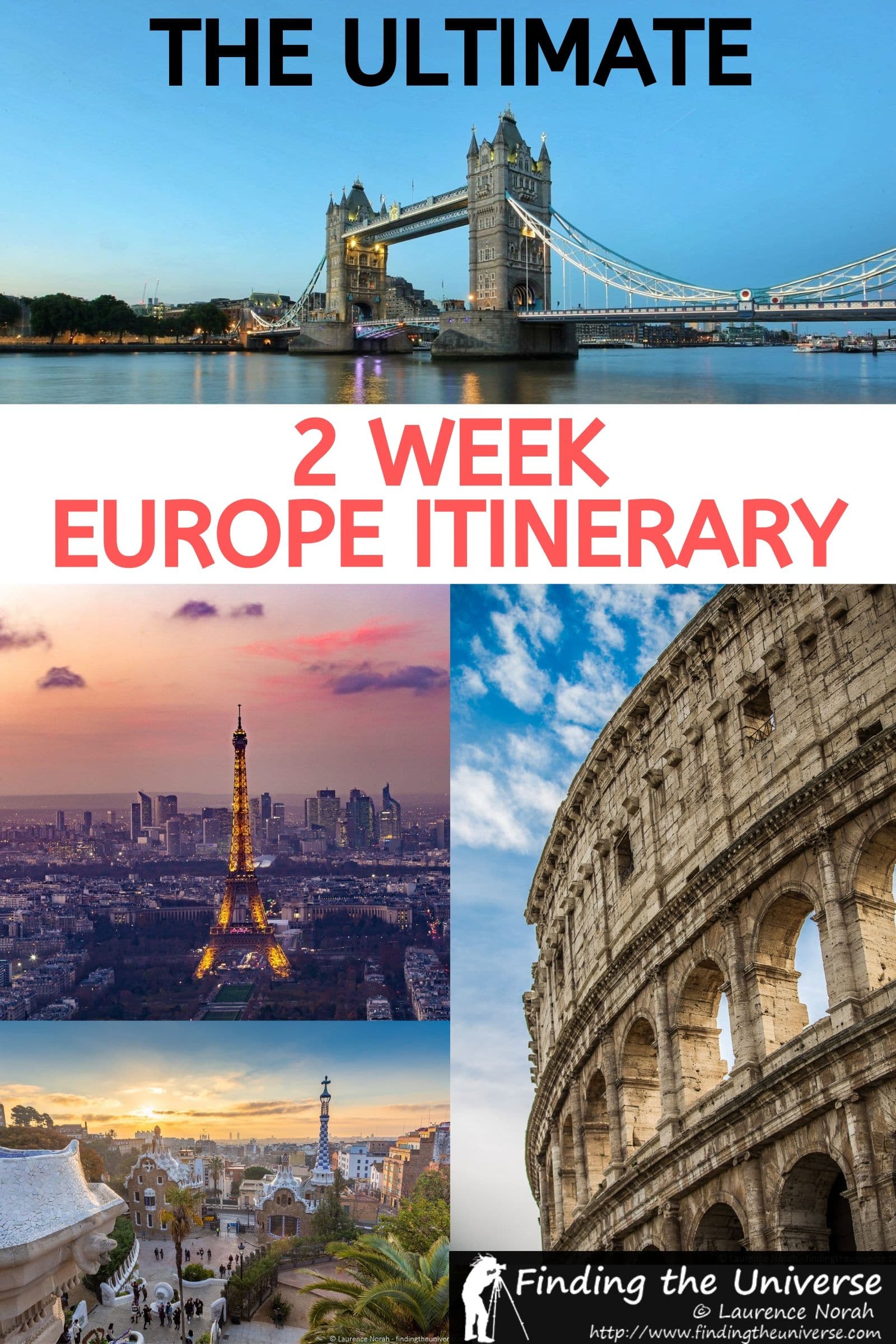
Enjoyed this post? Why not share it!
There are 30 comments on this post
Please scroll to the end to leave a comment
Kirsten says
1st April 2023 at 1:43 am
We just came back from this exact trip on 3/26/23. We followed your itinerary and most of your suggestions on what to do in each city. Thank you so much for putting this together. My husband and I aren’t the best planners and this step by step guide was so helpful and perfect for us! We really couldn’t have done it without you. Thank you!
Laurence Norah says
2nd April 2023 at 10:33 pm
Hi Kirsten!
Thank you so much for taking the time to stop by and share your experience! I’m delighted to hear you guys had a great time in Europe and that we were able to help with your trip planning, it really means a lot to know that our content is helpful 🙂
Safe travels!
Laurence & Jessica
12th February 2023 at 3:08 pm
This is an awesome itinerary. Thank you so much for sharing! We hope to make our first trip to Europe in the future.
12th February 2023 at 4:18 pm
My pleasure Sara, I hope you get to visit Europe soon and do let me know if you have any questions when you start to plan your trip!
6th February 2023 at 12:20 am
Hello, Thank you for great posts on Europe trip. Really help a lot when I’m trying to plan for mine. Do you mind sharing apartment name you stayed in Paris, the one with Eiffel tower view? Im looking for nice apartment to stay with Eiffel tower view for my honeymoon this year. Really appreciate it if you could share. Thank you 🙂
9th February 2023 at 8:15 am
Thanks very much. So the apartment was this one which we booked via Plum Guide. I’m not sure it’s still bookable, although there is an option to message the host. I’d also recommend the Eiffel Tower guide we have here , as that as a selection of accommodation options with good views. We’ve also stayed at the Pullman Paris hotel which has excellent Eiffel Tower views for example.
Have a great trip to Europe!
19th January 2023 at 4:05 pm
I’ve subscribed, but still cannot gain printing access…please help – thank you!
23rd January 2023 at 2:17 pm
Sorry for the slow response, we’re travelling in Uganda and Internet access has been sporadic! I can see you are an active subscriber, does it still not work when you put your email address in on the print page? If not, if you could let me know what device and browser you are using and I’ll see if I can figure out what is going on!
2nd July 2022 at 3:39 am
This was a great blog. I am trying to put together a surprise trip for my wife’s 40th next year. I am gonna try to do it myself based off all the deals y’all have given. Bless
2nd July 2022 at 10:58 am
My pleasure Wayne, have a great trip and do let me know if you have any questions 🙂
alex47_in_downtown says
8th February 2022 at 2:16 pm
This was the most detailed, informative & hence the most helpful travel blogpost I’ve ever read… 🙂 Perfect itinerary for first-timers (like me)…! Lots of love from India <3
10th February 2022 at 12:11 pm
Thanks very much Alex, I was delighted to be of help! I hope you have a great time in Europe, and do let me know if you have any questions!
Ashley Salgado says
8th October 2022 at 7:19 pm
Why not have a pdf versión to be able to print. Tried to print this but it’s a whopping 100 pages with all the ads and comments. Great info I’d love to print and read with time not on a screen.
8th October 2022 at 11:23 pm
Thanks for your message! Every post is available in printable format, if you look at the bottom of the post on mobile, or the side on desktop, there is a little print icon. If you press that you can go through the steps to access a printable version without ads, comments or images. You can then print it to PDF, most devices these days let you save a webpage as a PDF from the print option.
Have a great time in Europe!
Michelle says
2nd November 2021 at 1:49 am
I’m so glad I found this blog. This is so helpful and fantastic. It really gives us a clearer picture on how to plan our first trip to Europe (16 days) and it hits the cities we want to start off with and we plan on doing. Thank you!!!
2nd November 2021 at 11:06 am
My pleasure Michelle! Have a wonderful trip across Europe, and do let me know if you have any questions!
Penny Hampton says
2nd January 2021 at 2:42 pm
Loved your blog on traveling to Europe. We have never been to Europe so this would be our first time. What you write is exactly what we are looking for. Great advise on everything from where to go-where to stay and where to visit. If Covid ever dies down, we will try to make the trip.
2nd January 2021 at 2:46 pm
Thank you so much Penny! I certainly hope you get to take a trip sooner rather than later 🙂 If you have any questions when it comes to the planning, just let me know. Happy 2021!
20th February 2020 at 4:03 am
Hi Lawrence and Jessica,
Thank you so much for this article, it has been very helpful as I try and plan out our first trip to Europe. I will be taking my sons ages 24 and 18 this summer and are hoping to say about 18 days. We are planning to go to every location except Barcelona, and would like to add a city in either the Netherlands, Belgium or Switzerland. Which would you recommend? Also we are planning to travel at the end of July/early August, so I’m sure our costs will be quite high. Any thoughts on how much I should expect a 2 week trip to cost? I know that may be a difficult question to answer, but even if it’s a broad ballpark it would be very helpful.
20th February 2020 at 12:43 pm
Our pleasure, sounds like you have a great trip coming up! So yes, this is a really hard question to answer 😉 I would suggest taking a look at our suggested costs for a UK trip here , which should help with your planning. Prices in continental Europe are fairly comparable to the UK. Everyone has a different travel style and budget, and idea of what is expensive or acceptable, so it’s hard to know. There would be a huge difference depending on if it was hostel accommodation of 5* 😉 Just be aware that capital cities tend to be more expensive as a general rule of thumb.
In terms of saving, definitely check out apartment rentals which might work out cheaper as you are in a group. Also, booking transport well in advance (planes and trains) will make a huge difference to the cost. Flexibility in timing is also useful.
In terms of adding another city, Amsterdam is obviously nice but busy. Ghent and Bruges are lovely in Belgium. We’ve actually just come back from Switzerland. There’s a lot to choose from and a great transport network, but Geneva is a good starting point.
Let me know if you have any more questions, I’m happy to try and help!
12th February 2020 at 4:36 pm
I’ve sent this to my wife, this looks amazing! I think ill try to see if we can get an overnight Rail between the far trips however, this looks fantastic! and Exciting!
It will be our 1st trip to the EU, so hitting up all these locations at once will give us a great taste of so many locations!
12th February 2020 at 5:38 pm
Thanks Ryan! I hope you guys have a great trip, and do let me know if you have any questions!
10th December 2019 at 4:46 pm
Amazing article! You have inspired me to explore Europe soon! Thanks!
10th December 2019 at 4:58 pm
Thanks very much – I hope you get to visit soon and have a great trip when you do!
19th November 2019 at 4:03 pm
Loved this article and found it very useful. I’m in the process of trying to plan a trip for next year with my 18 and 19 year olds. I can’t quite committ to exactly where I want to take them. This will be our first trip overseas and I’ve been driving myself crazy googling different locations and ideas. This article has been one of the best as I feel like I really need a step by step guide to create and book whatever vacation I decide to go with. Any tips on what you think would be a great trip for that age bracket would be very appreciated.
20th November 2019 at 3:06 pm
Awesome, delighted to have been able to help. So I think this itinerary will work for your family, the only thing might be to tweak the attractions you visit based on your interests and the interests of your family. So if they aren’t into lots of museums, or art, then maybe cut those back a bit. Perhaps they’d be more interested in food tours or more interactive things like that. The best option would definitely be to just have a chat with them and find out what they might like to do, and then you can try to make everyone happy 😉 Communication is definitely key, and if they feel they have input and control then I think everyone will have a better time.
I hope this helps a bit!
Have an amazing trip and don’t hesitate to reach out if you have any more questions!
Natasha says
4th October 2019 at 1:19 pm
I might suggest taking skipping at least Barcelona. It’s not that it’s not beautiful, it definetly is. The city can’t handle all the tourist coming its way…Please do some research beforehand. I might opt for a longer stay in one city than trying to do too much. Or focus on one region. You probably wouldn’t do New York, California, Chicago and Grand Canyon in 2 weeks… It may not look like it on the map, but these aren’t such small distances.
4th October 2019 at 7:40 pm
Hi Natasha,
Thanks for your feedback. I’d disagree about Barcelona as I think it’s a beautiful city (we have visited many times – this article is based on our experiences not research). We would agree that folks should try and spend longer in each place rather than moving too fast for sure, and slower travel is something we prefer ourselves. That said, not everyone has the luxury of longer vacations, and wants to see quite a few places, hence we’ve put this itinerary together. Compared to some itineraries, we think it’s actually pretty relaxed and achievable 🙂
Thanks again for taking the time to comment!
14th September 2019 at 4:57 pm
Thanks for this detailed itinerary and plans. I really liked reading this. We are planning for a Europe trip on coming December. Do you think the itinerary you mentioned can be a difficult one to choose because of weather in December?
14th September 2019 at 5:47 pm
I think the itinerary is do-able at any time of year. December is a good month for visiting Europe as you have the pretty Christmas lights and Christmas markets. Obviously it will be colder and there’s more chance of rain, but appropriate clothing will solve that issue!
Have a great trip and let me know if I can be of any more help 🙂
Leave a Reply Cancel reply
Your email address will not be published. Required fields are marked *
Let me know when there's a reply to my comment (just replies to your comment, no other e-mails, we promise!)
Subscribe to our monthly Newsletter where we share our latest travel news and tips. This also makes you eligible to enter our monthly giveaways!
We only ask for your e-mail so we can verify you are human and if requested notify you of a reply. To do this, we store your data as outlined in our privacy policy . Your e-mail will not be published or used for any other reason other than those outlined above.
- Netherlands
- Budget Travel
- Solo Travel
- Travel Tips
- Travel Resources
- Female Travel
- Photography
35+ Best Travel Blogs to Discover Europe in 2024

If you’re planning a trip to Europe, it can be hard to know where to start. There’s so much information out there, so many travel guides and videos to see. It can be overwhelming and confusing knowing who to go to.
Today, I’ve curated the best travel bloggers who love travelling through Europe. When planning a trip, I can spend hours scrolling through my favourite Europe travel blogs, finding inspiration and getting excited about the most amazing adventure.
Use this ultimate list of Europe travel blogs as a one-stop destination for all your adventures. You will find a range of blogs to suit every holiday and trip you could imagine. From budget to luxury, adventure to family, food to beauty, there’s something here.
So take a look and get inspired for your next adventure.
The Best Europe Travel Blogs in 2024

1. Salt in Our Hair
A stunning blog created by Hannah and Nick. Two travel content creators from The Netherlands, Salt in Our Hair has amazing quality content, and stunning photos (check out their Instagram for a snapshot), this is one of my favourite travel blogs for exploring Europe.
Suggested Post: Road Trip Portugal: The Perfect 3-Week Itinerary
2. Chasing the Donkey
Firstly, this is the best name for a travel blog. Secondly, this is my go-to blog for anything travel and Croatia related. Whilst it also has some posts on the surrounding countries, Chasing the Donkey primarily focuses on Croatian travel, from itineraries to driving tips.
Suggested Post: Solo Travel In Greece & The Important Things To Know
3. To Europe and Beyond
Created by solo female traveller Marie-Eve, To Europe and Beyond is a stunning blog filled with lots of useful information. With over 10 years of travel experience, Marie-Eve encourages women to achieve their travel goals in positive, informative posts.
Suggested Post: Your Copenhagen Bucket List: 26 Places You Can’t-Miss
4. Globe Trotter Girls
In 2010, Dani and Jess quit their 9-5 to begin a year-long trip worldwide. 12 years later, Dani still runs Globe Trotter Girls, writing content on how to backpack the world, including tips on finding accommodations, packing, and itineraries.
Suggested Post: The Most Epic Iceland Road Trip
5. Travels of Adam
A travel content creator since 2010, it was a trip to Iceland that inspired Adam to travel the world. Adam’s award-winning blog is filled with detailed and personal posts on what it’s like to travel.
Suggested Post: Czech-Republic Travel Guide
6. Surviving Europe
Surviving Europe comes from Erin and Erin, an American couple who moved to Austria in order to travel more of Europe. Find posts on how to survive Europe as an ex-pat, and create memories in a whole new place.
Suggested Post: Austria Guide
7. The Wanderlust Effect
Originally The Traveling Scholar, The Wanderlust Effect has grown and developed over the many years since 2009. You’ll find a range of posts for different types of holidays from budget to luxury, from family to adventure.
Suggested Post: Itinerary Inspiration: One Month in the Cyclades
8. Budget Traveller
As the title would suggest, Budget Traveller is my go-to for all things budget. There are so many posts on here, from accommodation to local suggestions to food recommendations, you really couldn’t ask for more.
Suggested Post: One City, Many Flavours: 11 of Hamburg’s Best Food Hotspots
9. Europe Up Close
Filled with quality content written by people who live in Europe, you can pretty much everything you need for your European travel here.
Suggested Post: Best Day Trips From Madrid, Spain
10. Vicky Flip Flops
Another greatly named blog, Vicky Flip Flops is one of my favourite blogs to get travel tips fro Europe. Find amazing itineraries, road trips, well-being advice, and more recently, how to travel with a baby! Expect lots of family travel advice in the near future from Vicky!
Suggested Post: 22 Amazing Places to Go in Italy for a Long Weekend

11. Sommertage
Beautifully curated, Sommertage is an Austrian travel blog by the lovely Kathi and Romeo. The most beautiful photos accompany incredibly detailed posts, I adore reading this blog of travel inspiration.
Suggested Post: The Most Beautiful Views Over Budapest
12. Emily Luxton Travels
A UK solo female travel blogger, Emily has visited over 50 countries. Her super detailed food guides are a must-read for anywhere you’re travelling to, and her advice for solo female travellers is paramount.
Suggested Post: Bologna Italy Food Guide: 19 Dishes You Need to Try
13. The Savvy Backpacker
If you’ve spent any time reading travel blogs, you are probably already familiar with The Savvy Backpacker. The ultimate go-to for thrifty backpacking, James has so many guides and tips for travelling on a budget, this blog will save you so much money when on the road.
Suggested Post: How to Visit Barcelona on a Budget
14. Travel Greece Travel Europe
Currently run by Elena, Travel Greece, Travel Europe focuses on Greek and European travel from a hospitality expert. Showing you the lesser-known destinations, and finding new perspectives on the more popular ones, there’s a lot to learn from this blog.
Suggested Post: Insider’s Look at Kefalonia Island
15. Life Beyond Borders
Rebecca Hall originally began her blog whilst living in Greece. She is a phenomenal travel writer, writing for the likes of Rough Guide and the Telegraph , and her blog has since expanded to cover many top European destinations.
Suggested Post: Insider’s Guide to Greek Islands
16. Travel Dudes
As one of the most extensive travel blogs in Europe, there is so much for you to find here. You may end up in a travel blog hole. Click through hundreds of posts on many different countries in Europe, and find exactly what you need for your travels.
Suggested Post: Best Places for Hiking and Camping in Europe
17. Big World Small Pockets
With over 10 years of travel experience, Steph’s blog is great for those on a budget. Find itineraries, travel tips, and budget hacks to help you get the most out of your money when out on the road.
Suggested Post: Top 21 Things to Do in Portugal
18. The Road Trip Guy
Who doesn’t like a road trip? Seeing a country by car is one of the greatest ways to travel. From Scotland to Croatia, you can find the perfect inspiration for your car adventures, see forgotten places, and explore new worlds with the help of this blog.
Suggested Post: A road trip in Croatia Itinerary
19. Happy to Wander
Another blog loaded with great European content, Happy to Wander has something on most countries in Europe. Find activity recommendations, itineraries, top places to visit, and more.
Suggested Post: A Guide to the Delightful Brussels Christmas Market & Winter Wonders Festival

20. Hand Luggage Only
One of my favourite Europe travel blogs, Hand Luggage Only is a beautiful blog. Created by Lloyd and Yaya, their blogs are fun, informative, and beautifully presented. Find photography tips, itineraries, and food tips for your travel adventures.
Suggested Post: 14 Best Restaurants to Visit in Iceland
21. One Girl One World
Created by Francesca, a travel and beauty writer, One Girl One World is a place where you will find support and inspiration for embracing your natural beauty and find the confidence to achieve your travel goals.
Suggested Post: Why You Should Celebrate Chinese New Year in Paris
22. Not a Nomad Blog
On Not a Nomad Blog, you’ll find tips on how to work abroad and remotely and build an online business so you can travel full-time. I also love her photography tips, sharing great locations and tips for getting the ultimate travel photos.
Suggested Post: 15 Coolest Day Trips from Berlin
23. The Travel Book
Focusing on eco-friendly travel and sustainable living whilst on the road, The Travel Book is great for those who want to reduce their carbon footprint and look after the beautiful world we travel. Find lots of travel tips for Scandinavia in particular.
Suggested Post: Skåne, Sweden
24. Natasha Atlas
Natasha Atlas has a unique combination of film and travel, and travelling with anxiety. Find unique cinema experiences and travel tips for the anxious, from overcoming your fear to personal meditations on how to travel with anxiety.
Suggested Post: An Anxious Travellers Guide to Greece
25. On The Luce
Focusing on affordable and sustainable travel experiences, find rail routes, weekend breaks, and travel advice from Lucy. With over 25 years of travel experience, you know you are getting quality content whenever you dive into one of Lucy’s posts.
Suggested Post: Visiting the Amalfi Coast, Italy: Everything You Need to Know
26. Paper Planes and Caramel Waffles
A fellow waffle lover, and fellow Yorkshire traveller Emma writes about how to travel around your 9-5. Visit places in the UK and beyond, Emma can really help you get the most out of the time you have with beautiful guides and travel advice.
Suggested Post: A Foodie’s Guide to 24 Hours in Leeds
27. Pommie Travels
Originally from Manchester, England, Victoria has travelled to 60 countries, mainly solo. If you’re a solo female traveller, you have to follow Pommie Travels . Find solo travel advice, itineraries, and budget-saving tips.
Suggested Post: My 51 Best Solo Female Travel Tips From Over A Decade Of Travel
28. Pack the Suitcases
Created by Caroline, a travel writer and photographer who travels around her full-time job. Perfect for mid-budget travellers and food lovers, you’ll find plenty of itineraries and outfit inspiration for your travels.
Suggested Post: 20 Things to Do in Korcula, Croatia’s Most Beautiful Island
29. Teacake Travels
Inspiring women to travel the world, Teacake Travels has an incredible positive, go-getter vibe. Alice has had some amazing adventures, including driving solo on her bike across Vietnam, and, she shares her tips with you so you too can achieve your solo travel dreams.
Suggested Post: 12 Reasons To Visit The Beskydy Mountains Czech Republic
30. The Wandering Quinn
Ellie is a travel and content creator who has visited more the 60 countries. After solo backpacking in her 20s, she now lives in England and travels with her family. She has an abundance of travel tips, from budget saving to packing, you’re sure to find many useful posts to help your travels.
Suggested Post: 5 Vegan Places to Eat at in Rome!
31. Rear View Mirror
Europe road trip travel blogs are some of my favourites to browse, and here is another must-visit for those who love a road trip. Find ultimate road trips for all around Europe, from the Plitvice Lakes to northern Germany, you’ll find so much inspiration for future trips here.
Suggested Post: Estonia Road Trip
32. An American in Rome
Rome is a beautiful place and an incredibly popular destination. What better than to get off the tourist path and get tips from a local? Natalie has lived in Rome since 2010 and knows a thing or two about the city. Find all you need for your trip to Rome and Italy here.
Suggested Post: Thrift Stores in Italy
33. Foodie Flashpacker
Food is one of my favourite things to experience when travelling, and I think the Foodie Flashpacker would agree. Travelling with a bit of luxury, find all your food needs on this blog to travel deliciously across Europe.
Suggested Post: 13 Best Reykjavik Restaurants

34. Young Adventuress
Free-spirited, adventure-seeking, and solo traveller Liz Carlson has created a phenomenal blog. Having lived across the globe and travelled since 2010, find everything from tips to moving abroad, travelling as a solo female traveller, to photography. It’s everything you could need.
Suggested Post: 25 Photos that will Make You Fall in Love with Switzerland
35. Off to Get Lost (Me!)
A check little input here, but how could I not? The blogs above are incredible, and I hope one day to be on someone else’s best Europe Travel Blogs list. Posting budget travel tips for solo travellers and destination guides, make sure to follow them so I can help you plan your perfect trips.
Suggested Post: How to Travel Dubrovnik on a Budget: The Ultimate 2022 Guide
So there we have 35 of the best travel blogs to help you discover Europe…
Planning a trip around Europe is incredibly exciting. There is so much to see, so much history to experience, and, of course, a lot of food to be eaten. With these travel blogs, you can discover Europe from people who have seen it all first-hand. Find insider tips and perfect itineraries to make your trip as brilliant as possible.
Planning a trip to Europe? Here are some posts to get you started!
17 Best Cameras for Travel Bloggers
20 Best Weekend Trips in Europe
How to Overcome Your Fear of Traveling Alone
11 Safest European Cities for Solo Travallers
How to Plan Your First Solo Trip
Kizzi is a travel blogger and photographer who loves sharing her passion for exploring the world. is the creator of Off to Get Lost. Her love for travel began in 2017 when she went on her first solo adventure to Sri Lanka. Recently, Kizzi has been exploring the hidden depths of Europe and sharing her findings on Off To Get Lost. Through Off to Get Lost, Kizzi aims to empower fellow adventurers, teaching how to maximize their time, budget, and grow confidence while uncovering Europe's finest treasures.
Related Posts

11 Mistakes to Avoid When Travelling Alone
May 27, 2023.

20 Best Weekend Trips in Europe in 2024
May 24, 2023.

How to Find Cheap Flights to Any Destination
May 6, 2023.
Hi, I'm Kizzi and welcome to Off to Get Lost where the aim is to do exactly that! So let's get lost across the world, dicover new expereinces, and have the adventure of a lifetime. Here on Off to Get Lost, you'll find budget saving tips, perfectly planned itineraries and helpful advice on how to do it all solo.
Download Your Free Solo Travel Guide now!
Recent post.

2 Week Europe Itinerary + Planning Tips!
August 17, 2024

7 Days in Italy: 6 Unique Itineraries
July 27, 2024

19 Best Places to Solo Travel in Europe
July 26, 2024
Grab Your Free Lightroom Presets Here!

How to Plan an Epic 2 Week Europe Trip (+ Europe Itinerary Ideas!)
Ready to plan a 2 week Europe trip but not quite sure where to start?
We want to help!
Whether it’s your first trip to Europe or your tenth, there’s something simultaneously overwhelming and exhilarating about planning a trip through multiple countries that–for us and most of the readers of this blog post–lie across an ocean from home.
I’ll never forget planning our first 2 week Europe itinerary: I pored over flight schedules, bucket lists, budgets, and maps for months, desperate to pull together the ultimate Europe trip.
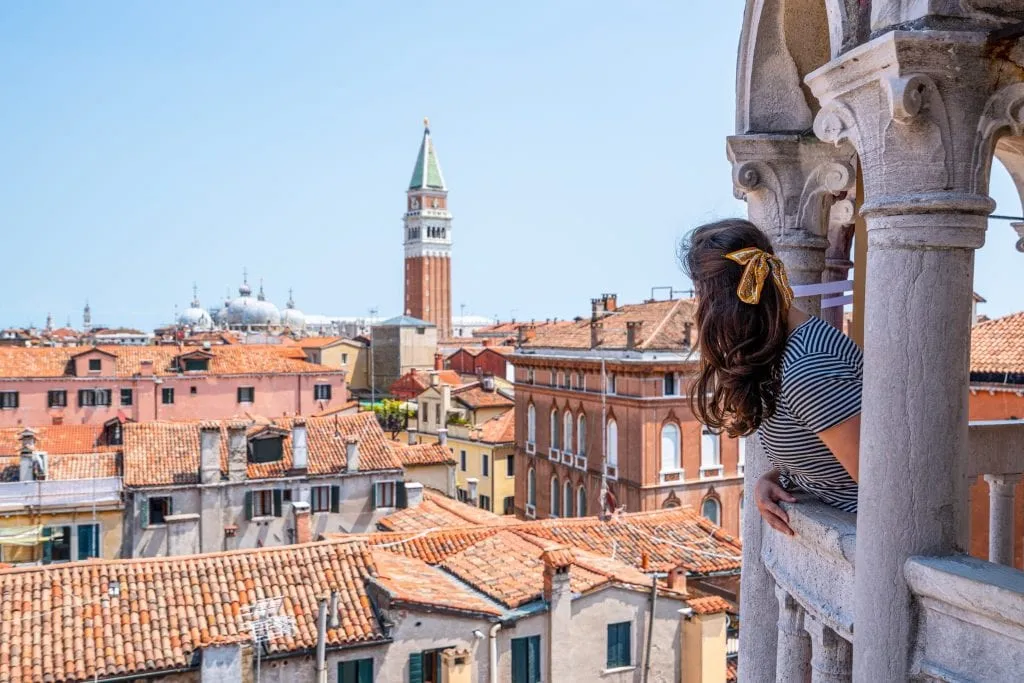
Some links in this post may be affiliate links. If you make a purchase through one of these links, we may earn a small commission at no extra cost to you. Please see our disclosure policy for more detail.
There were many, many lists involved in planning that first trip, and after months of planning, I emerged with an eclectic but incredible itinerary that kicked our love of travel into high gear.
In the summer of 2015, Jeremy and I spent a little over 2 weeks in Europe exploring Krakow , Budapest , Plitvice Lakes National Park , Zadar , Dublin , and the Cliffs of Moher (I told you it was eclectic!).
We’ve now cumulatively spent years of our lives traveling in Europe, falling in love with world-famous cities and less iconic locations alike, and there’s absolutely nothing we like better than helping people plan their own unforgettable adventures.
Over the years, we’ve explored the continent in almost every way possible, from backpacking Europe on a budget for 2 weeks to checking into luxury hotels to playing tour guide for family and friends to finally spending more than a year living in Lisbon, Portugal !
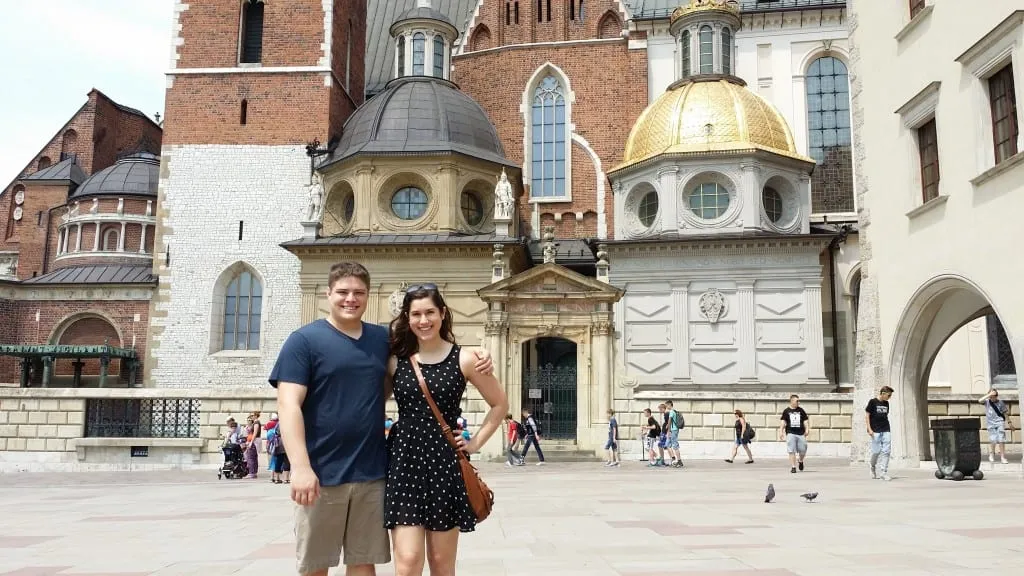
We’ve put together this 2 week Europe itinerary guide to help you plan your trip–here’s what you need to know before you go.
(Also, yes–this is an incredibly long blog post! We recommend using the table of contents right below this paragraph to help you navigate to different sections depending on what you’re hoping to read first.)
Table of Contents
How to Use This 2 Week Europe Trip Guide
Exciting 2 week europe itinerary ideas, how to get around during 2 weeks in europe, important tips for planning a 2 week europe trip, faq for spending 2 weeks in europe, what to pack for 2 weeks in europe, read more about visiting europe.
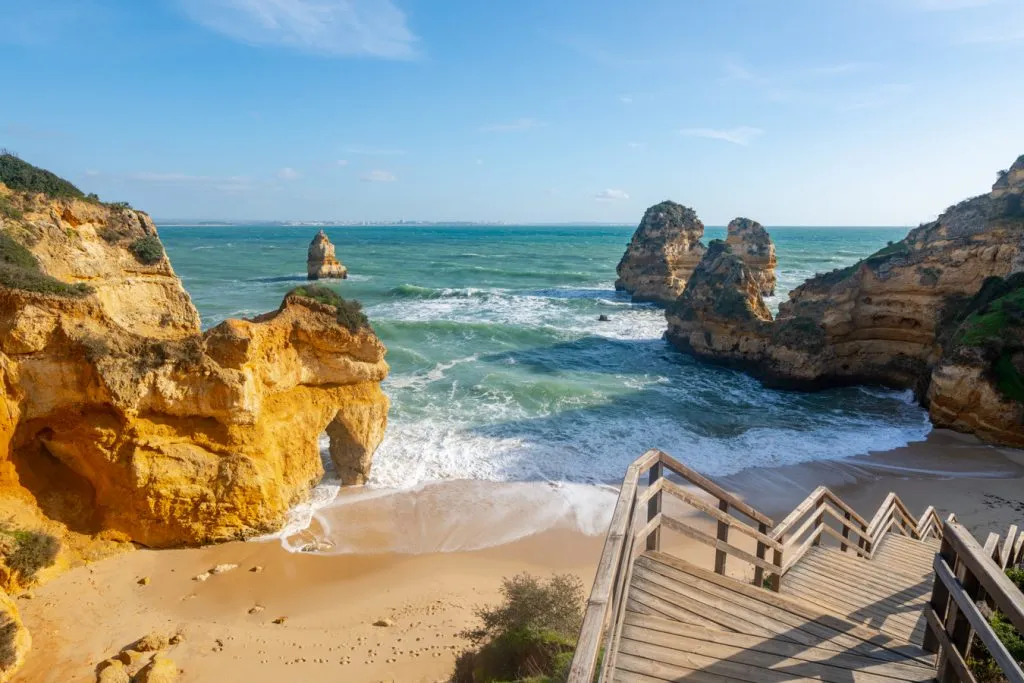
This 2 week Europe trip guide is designed for someone hoping to see the highlights of a few different European destinations, spread across multiple countries, in only a couple of weeks.
We’ve primarily written it for someone planning their first trip to Europe, but if this is your second trip, third trip, or beyond, hopefully, we have some interesting ideas and tips for you, too!
And, of course, given that Europe is home to more than 50 countries and is roughly the same size as the USA, no 2 weeks in Europe could hope to cover the entire continent or all of its numerous and distinct cultures, languages, and histories.
For ease of communication, we’ll talk in general terms about traveling in Europe here, but once you pick your itinerary, of course, you’ll want to follow up with further research on the specific locations you’ll be visiting.

And, once you’re further along in your planning process, we’d love to help you with some of that planning here on Our Escape Clause, too!
We’ll link to relevant blog posts throughout this travel guide, but given the hundreds of posts we have on the site, we won’t be able to link them all.
You can use our destinations page or the search bar on the top right of the page (on desktop) or at the top of the pop-out menu (on mobile) to find our content about various specific destinations across Europe or general travel tips.
For example, a few of our most popular guides that might come in handy next include our guide to traveling Europe by train , our 75 best Europe travel tips , and our (biased) guide to the best cities in Europe .

The number of possible 2 week Europe itinerary ideas is truly infinite–just look at the odd itinerary that I cobbled together for us in 2015 as an example !
However, the sample itineraries for Europe outlined below should give you a good idea of what you can accomplish with around 14 days in Europe .
I truly struggled to narrow down these ideas–I could name 10 more excellent 2 week Europe trips in an instant, and still feel like I was leaving so much on the table.
I aimed to keep these mostly focused on destinations that are popular for first-time visitors to Europe, with just a couple of slight curve balls thrown in.

The Classic: London, Paris, Rome
As three of the world’s most beloved and celebrated cities, you can’t go wrong with splitting your 2 weeks in Europe between London, Paris, and Rome.
As the capital of an English-speaking country and home to an enormous airport hub, London makes logistical sense for a first trip to Europe hailing from North America–and, of course, it’s a truly fascinating city.
Visit Buckingham Palace and Hyde Park, stroll through Notting Hill, snap photos of Big Ben, check out the Tower Bridge and the Tower of London , visit the Wizarding World of Harry Potter, stop by Piccadilly Circus, ride the London Eye , and tour the British Museum.
… And that’s just to get you started !
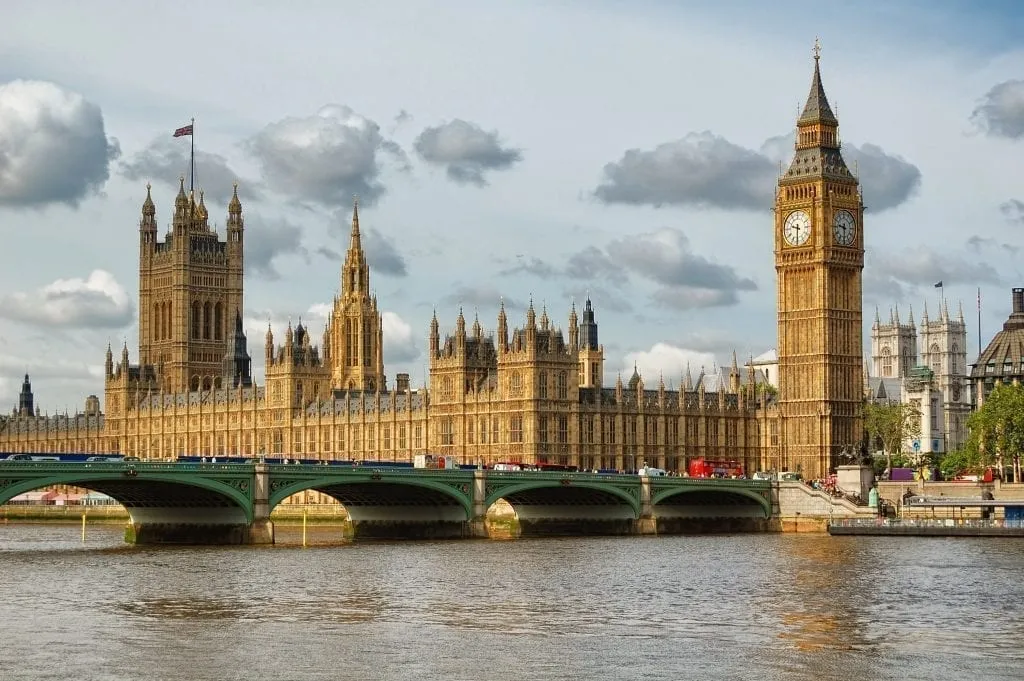
The City of Lights is one of our favorite cities in the world and was also the first place we visited on our very first trip to Europe (we spent a week there and then planned our 2 week Europe trip outlined in the introduction of this blog post the following year).
Since then, we haven’t been able to stop going back, and believe that it’s an excellent addition to any 2 week Europe itinerary!
While you’re in Paris , visit the Eiffel Tower, marvel at the beauty of Sainte-Chapelle, tour the Louvre and the Musee d’Orsay, stroll the picturesque streets of Montmartre and the Latin Quarter, visit the Palais Garnier, discover hidden passages and tiny cafes, and soak up every minute of that Parisian charm.
Our full guide to planning your first trip to Paris can help you get started!

Ah, Rome –if Paris is the first European city we fell in love with, Rome is probably our deepest love on the continent.
From wonders of Ancient Rome like the Colosseum, Roman Forum, and Pantheon to more recent additions like the Vatican Museums , Trevi Fountain, and winding cobblestone streets of Trastevere , exploring Rome is a captivating, engaging experience that we can’t recommend highly enough.
And, of course, you couldn’t ask for a better cuisine to savor during your 2 weeks in Europe: Rome is home to some of the best pasta in all of Italy!

Southern Europe Charm: Madrid, Rome, Amalfi Coast
Want your 2 weeks in Europe to focus on a delightful combination of history, food, and sunshine?
Head directly to Spain and Italy!
While Barcelona gets all the love (and a lot of the crowds), we’re personally smitten with the Spanish capital of Madrid… and excellent flight deals from North America make it almost irresistible on a 2 week Europe itinerary.
With a few days in Madrid , you can admire world-class art in the Prado, soak in Spanish culture with a stroll through Retiro Park, eat all the tapas and churros con chocolate you can get your hands on, tour the Royal Palace , check out an Egyptian temple, and take day trips to fairytale towns like Toledo and Segovia.
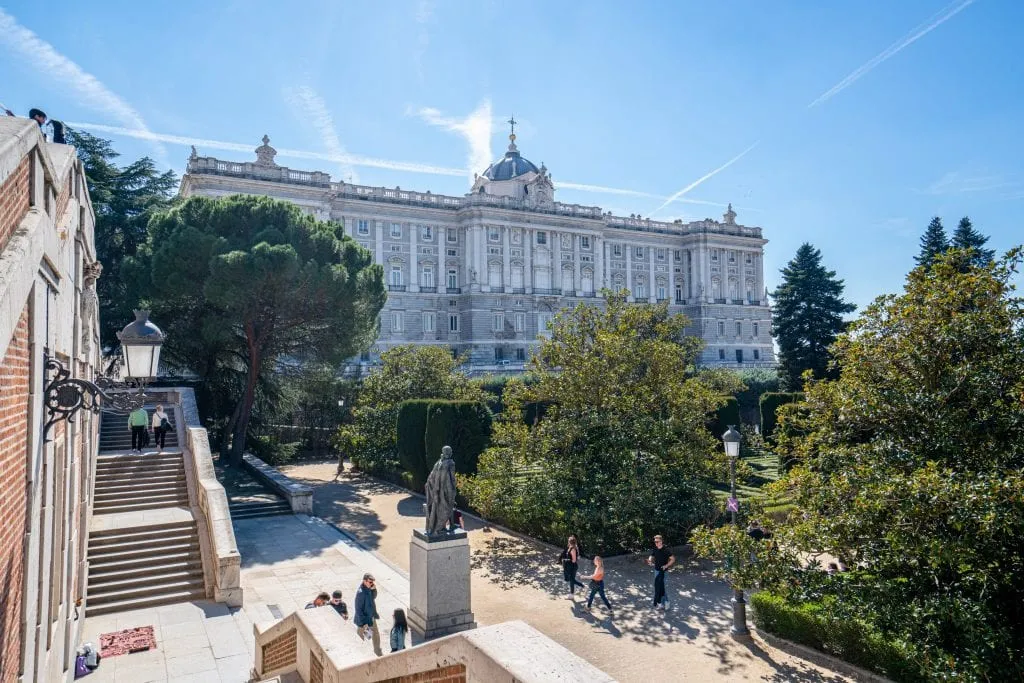
I described Rome in the first Europe itinerary on this list, so I won’t repeat myself here, but as I sit typing this Europe travel blog post out in a Rome apartment while dreaming of the carbonara I’ll eat for dinner tonight, all I can say is: you won’t regret coming to Rome (and scroll up for more details).
And, while I detailed some of Rome’s highlights above, let me also say… don’t forget to get off the beaten path in the Eternal City , either!
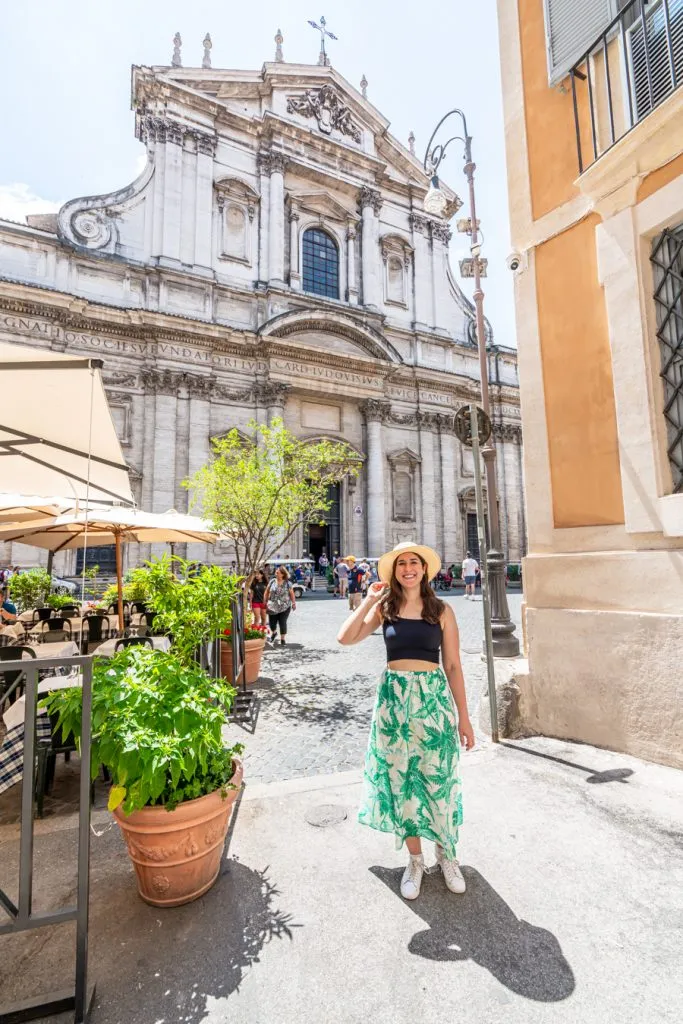
Amalfi Coast
The famed Amalfi Coast , with its dramatic cliffs, chic villages like Positano, delicious lemons, and jaw-droppingly beautiful hikes like the Path of the Gods, is a fabulous conclusion to any 2 week Europe trip–where better to relax than one of the most beautiful coastlines in the world?
While you’re there, be sure to make room for plenty of day trips!
Iconic locations like Capri and Pompeii , as well as less-popular but equally amazing spots like Ischia, Herculaneum , and Procida, are all at your fingertips when staying on the Amalfi Coast.
(Also, if you like page-turning novels about friendship and Italy, I highly recommend reading Elena Ferrante’s My Brilliant Friend series before coming or while visiting Europe).
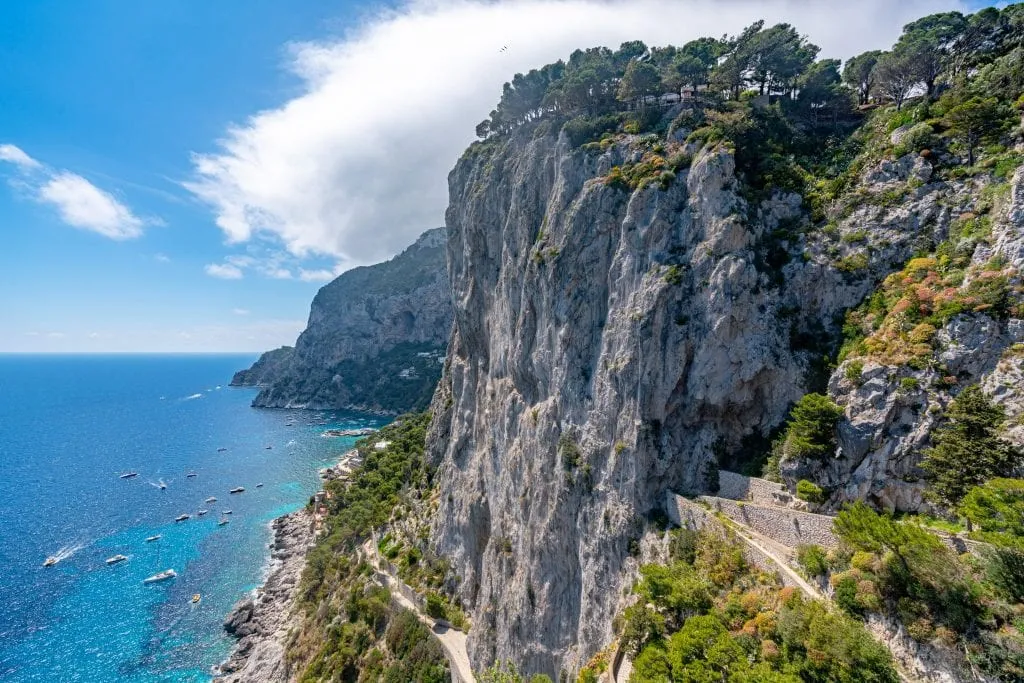
Regal Central Europe: Prague, Vienna, Budapest
Sweeping boulevards, dramatic architecture, beautiful coffeehouses, and tasty comfort food: a trip to Central Europe is an absolute delight.
In my opinion, this region truly shines during the winter months when Christmas markets are in full swing and the hearty cuisine keeps you warm from the inside out.
I’ll try to keep this section quite brief, as I’ve already written a detailed Central Europe itinerary here , but suffice it to say, we love it.
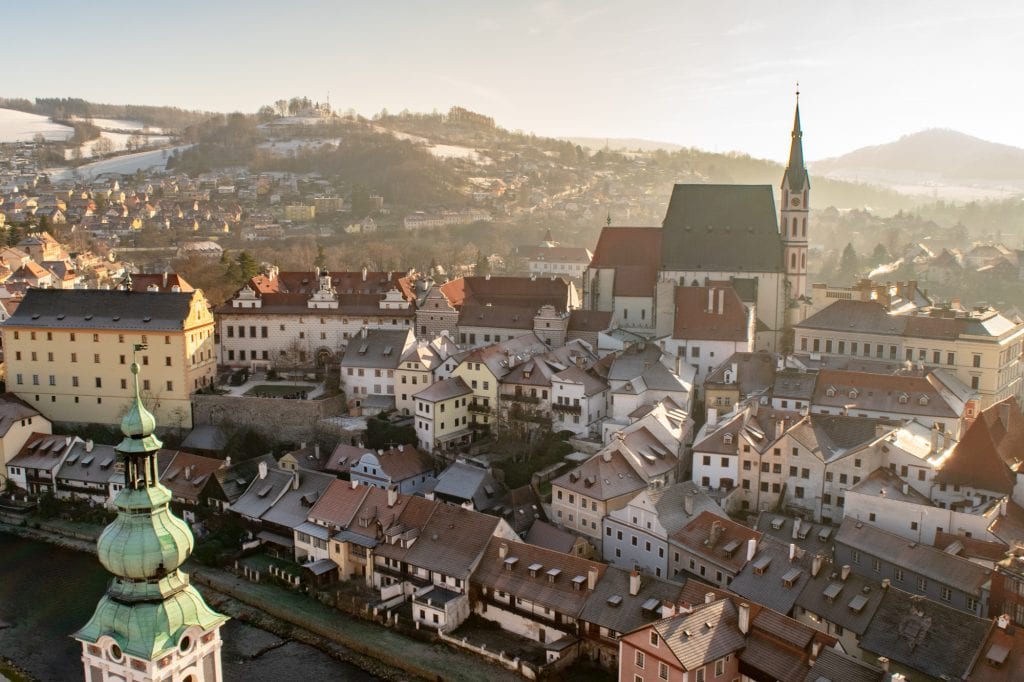
Known as the City of a Hundred Spires (and also for the fact that beer is cheaper than water here–true story, at least when it comes to pricey bottled water at restaurants), Prague is easily in the running for the most beautiful city in Europe.
The beauty of Prague Castle, St. Vitus Cathedral, the famed Charles Bridge, and Prague’s well-known astronomical clock will all draw you in.
If you have enough time, consider adding a day trip to a smaller Czech town like gorgeous Český Krumlov as well!
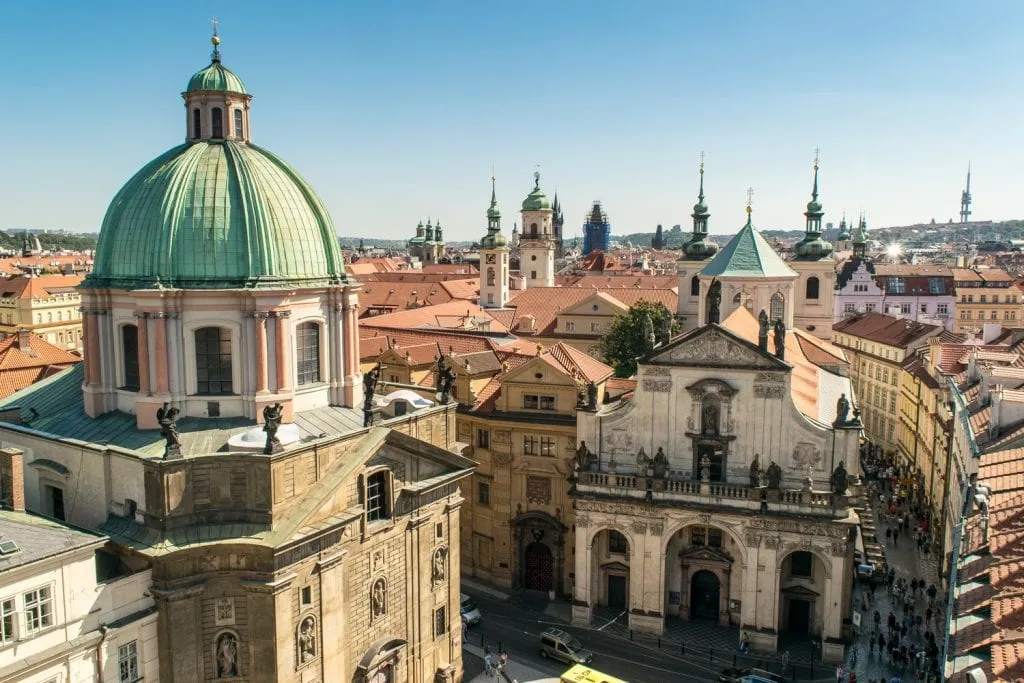
Regal and beautiful, full of spacious, wide avenues and ornate buildings, Austria’s capital city is the perfect place to come to tour grand palaces ( Schonbrunn is one of the most popular), see a show in one of the world’s premier opera houses, and to enjoy European cafe culture at its finest.
We absolutely adore Vienna’s coffee houses–be sure to try a slice (or several) of Esterhazy Cake while there, as well as Viennese hot chocolate.
The city’s famed Spanish riding school and striking St. Stephen’s Cathedral are also worth adding to your list!
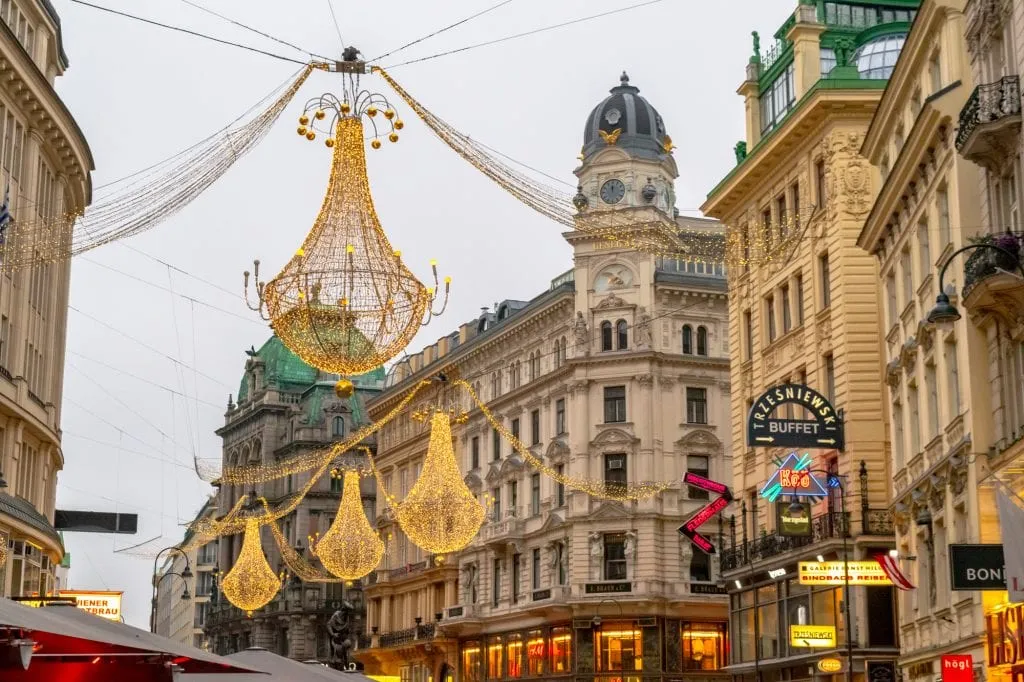
As our favorite city in central Europe and one of our top 10 cities in Europe overall, I really can’t say enough about how beautiful Budapest is!
The city is somehow, simultaneously, both grand and down-to-earth , absolutely gorgeous while also remaining accessible, affordable, and fairly simple to visit and explore.
While in Budapest, go for a soak in the famous thermal baths, tour one of the most beautiful houses of Parliament in Europe, check out a castle, visit grand basilicas, take a boat ride down the Danube, and, if you’re up for a bit of adventure, even go on a cave tour!
Be sure not to miss the great food , either–Budapest’s hearty cuisine is a delight, and one of our all-time favorite wine tastings took place there!
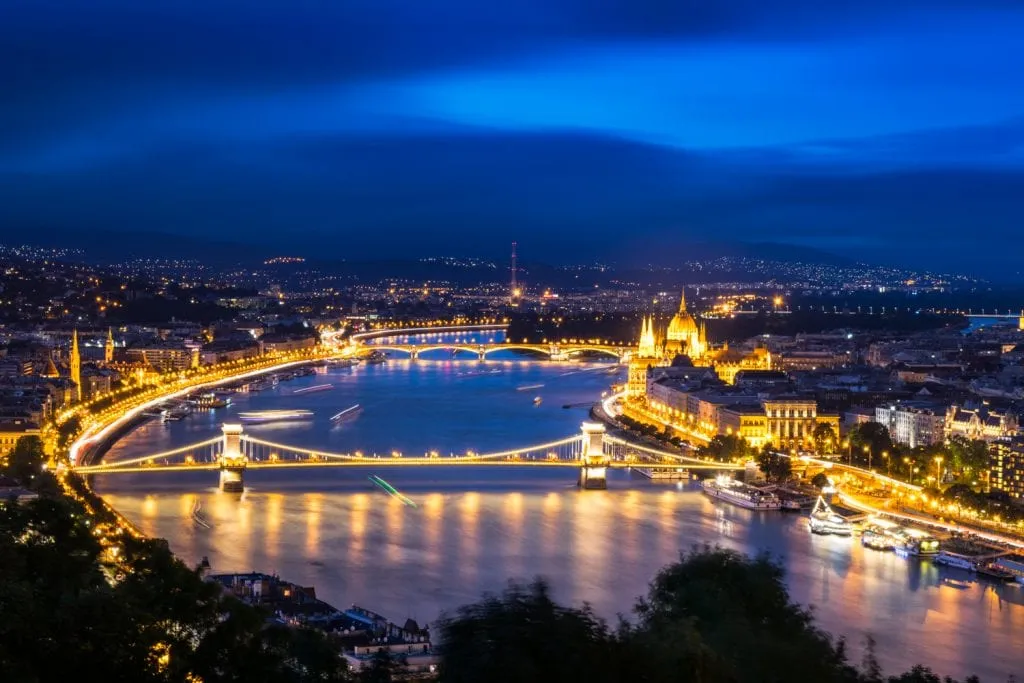
Europe for Art Lovers: Paris, Florence, Venice
If you’re an art buff at heart, you can’t ask for a better sampling of some of the continent’s most beloved artistic cities than the trifecta of Paris, Florence, and Venice (and it certainly helps that each city is practically an art museum in and of itself).
From the Louvre to the Musee d’Orsay to the Orangerie to the Musee Rodin to the Centre Pompidou to the Cluny Museum, it would probably take a lifetime to enjoy all the art museums in Paris alone.
And of course, the city has so much more to offer once you need a break!

Nicknamed the Cradle of the Renaissance, Florence boasts the finest collection of Renaissance art on the planet–and claims many of its most famous artists as locals.
Michelangelo, DaVinci, Botticelli, and more all originally hailed from Florence, and their works are scattered about the city.
Perhaps most famously, Michelangelo’s David is in the Galleria dell’Accademia and Botticelli’s The Birth of Venus is in the Uffizi Gallery .
And of course, no art-focused trip to the Cradle of the Renaissance can overlook Florence’s iconic Duomo , a masterpiece of the era!

Located an easy train ride away from Florence, Venice may be slightly less well-known for its art than the first two cities on this 2 week Europe itinerary, but there’s no doubt that there’s plenty to find!
From the utter masterpiece of St. Mark’s Basilica (don’t miss a chance to go in!) to the incredible Doge’s Palace to the famous Galleria dell’Accademia (not to be confused with the one in Florence!) that focuses mostly on Venetian artists, Venice is an art lover’s dream.
Mix it up by adding a visit to the Peggy Guggenheim Collection, which holds modern art, and a gondola ride .
A fter all, Venice itself is no doubt one of the best artistic masterpieces in the city, and it deserves to be seen from all its best angles.
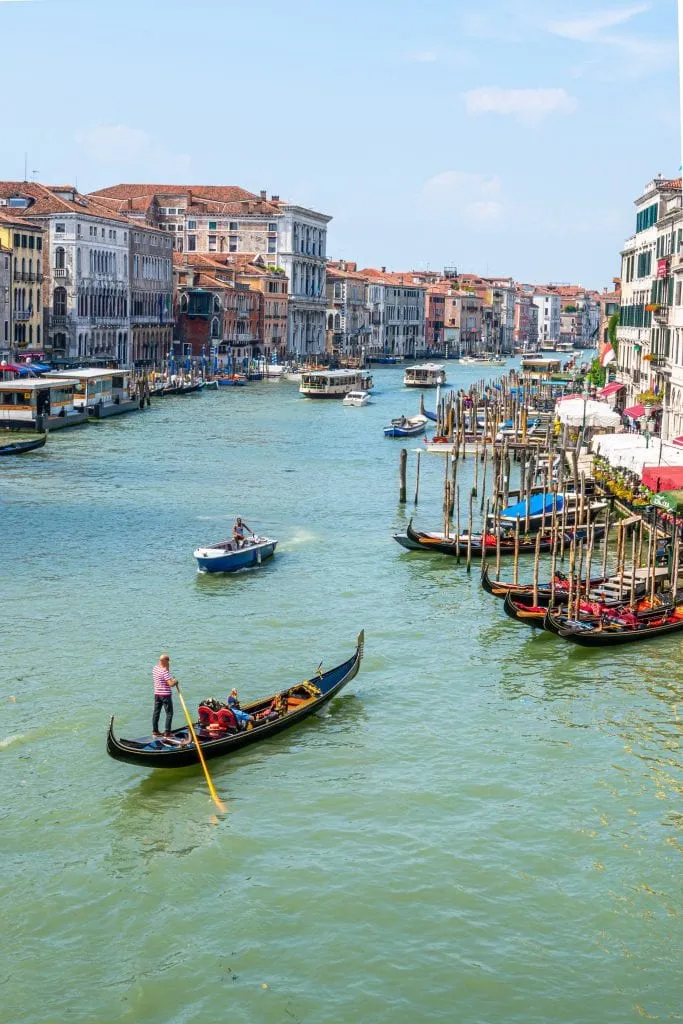
The Incredible Iberian Peninsula: Lisbon, The Algarve, Andalucia
The Iberian Peninsula is dominated by Spain and Portugal , and while I might be biased after spending more than a year living in Lisbon, it makes for an unforgettable Eurotrip!
(The fact that there are often flight deals from the US to Lisbon and Madrid doesn’t hurt, either).
There are infinite ways to craft southern Europe itineraries out of these two countries, but here’s one great option…
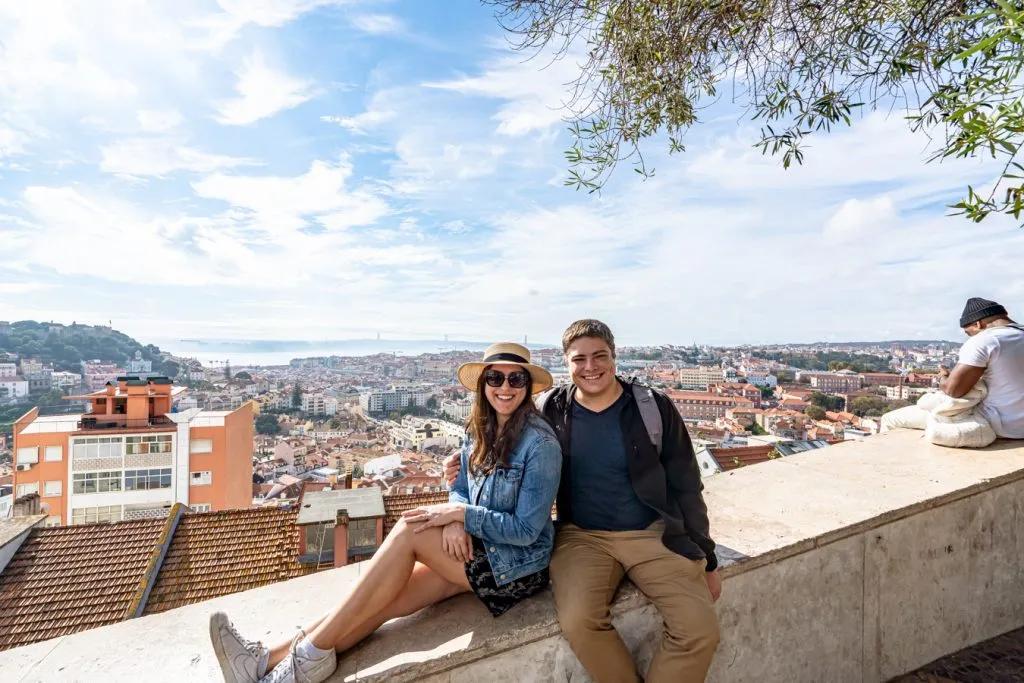
Start your trip with a few days in Lisbon , Portugal’s trendy capital city, soaking up beautiful views from its many miradouros , sampling Portuguese food (starting with pastéis de nata ), touring the incredible Jerónimos Monastery, and taking day trips from Lisbon to nearby gems like the palaces of Sintra and/or the beach resort town of Cascais .
Be prepared to head up and down a lot of hills while you’re there–but Lisbon is worth the climb.
If you’re looking for neighborhoods to wander through, Alfama, Castelo, Chiado, and Bairro Alto are particularly picturesque–keep an eye out for trams, azulejos, and peacocks as you explore!
And, while Lisbon’s top attractions are definitely worth a visit, seeking out some of the many hidden gems in Lisbon will add extra beauty to your trip.

The Algarve
After saying goodbye to Lisbon, head south of Portugal’s Algarve for a dizzying array of whitewashed villages (you’ll find many of the best beach towns in Portugal here) and a picturesque coastline.
Lagos is one of the most popular places to stay, and we can highly recommend it–don’t miss the famous Ponta da Piedade, which photos can’t do justice to.
Nearby attractions (ideally, you’ll want to rent a car in the Algarve) include the famous Benagil Cave and the unmissable Seven Hanging Valleys Trail!
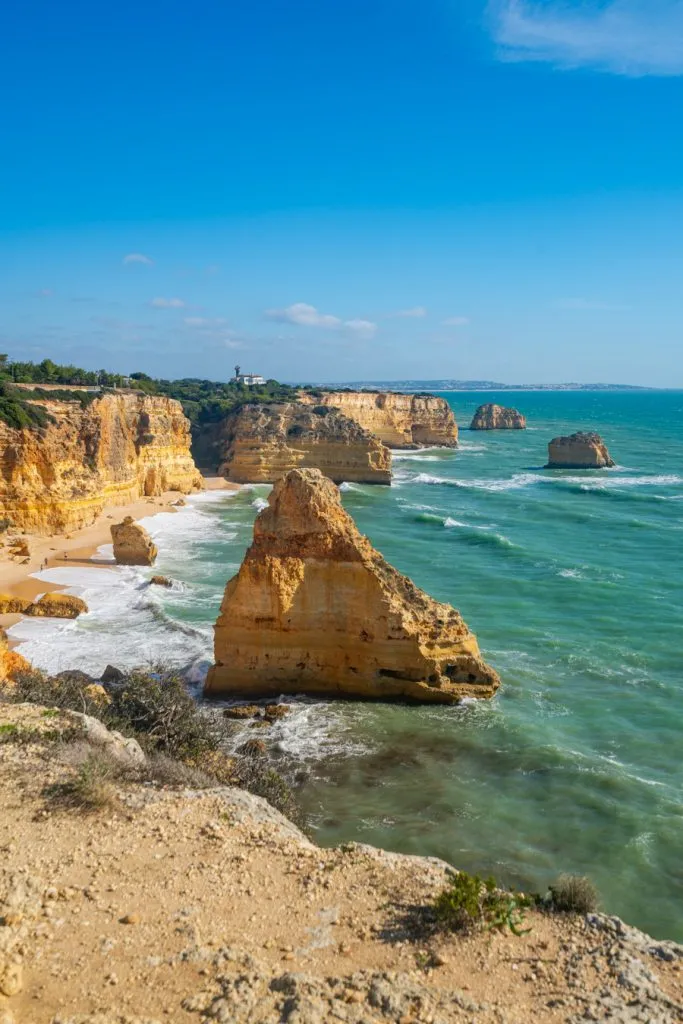
For the second week of your trip in Europe, cross the border into southern Spain (note: there’s no direct train access for this journey, but there are buses).
Split your time between any two of Andalucia’s incredible cities, taking nearby day trips from there.
Seville (with its Alcazar and famous Plaza de Espana), Granada (home of the Alhambra ), and Cordoba (home of the Mosque-Cathedral , one of the most unique houses of worship in the world) are all wonderful inland options.
On the coast, options include Cadiz, Malaga, Marbella, Tarifa, and many more.
With a bit more than 2 weeks in Europe or an ambitious schedule, you may be able to squeeze in a day trip to Gibraltar and/or Tangier, Morocco while here!

Food + History: Athens, Santorini, Istanbul
Feel like heading further east–as far east as you can get during a Europe vacation?
Greece and Turkey pair very well for a 14 day European itinerary–here’s what that might look like.

Start your trip in Athens, marveling at some of the world’s most remarkable ruins, including the famous Acropolis complex and museum.
Be sure to make time to explore non-ancient aspects of Athens as well, including the trendy Plaka neighborhood, Monastiraki Square (and nearby flea market!), and Syntagma Square.
And of course, one of the absolute best things to do after you touch down in Athens is to dive into plate after plate of phenomenal Greek food –that alone is worth traveling to Greece for ( our Athens food tour remains one of my favorites that we’ve taken in Europe).

Truly, any one of Greece’s amazing islands would fit nicely into this 2 week Europe itinerary, but where better to choose than Santorini , with its iconic blue-and-white color scheme, fantastic caldera views, and excellent flight connections?
While Santorini isn’t best known for its beaches–you’re better off heading to Crete for those–you sure can’t beat the charming villages or stunning nature.

The city of two continents, where thousands of years of history blend seamlessly with modern life, and where you can eat one of the best breakfasts you’ll ever experience in your life: Istanbul tops bucket lists around the world, and there is simply nowhere on the planet quite like it.
Marvel at the Blue Mosque, step inside the Hagia Sophia, eat your weight in Turkish breakfast (seriously, I can’t emphasize enough how tasty it is), admire the views of the Bosphorus, climb the Galata Tower, and shop your way through the Grand Bazaar.
Since this Europe travel blog post focuses on, well, Europe, I won’t sketch out any other possibilities further east in Turkey in detail…
But, if you have time, you could easily add a visit to Cappadocia , complete with a sunrise hot air balloon ride, to your trip, or even a visit to the ruins of Ephesus.

Architecture + Culture: Cologne, Amsterdam, Belgium
With this small triangle of destinations, you can easily visit separate countries via train, with very little travel time between them!
And, if you were particularly motivated to add another, you could even squeeze in a day trip to Luxembourg.
If you’re looking for a winter itinerary for Europe that focuses on cities, this is a fantastic option.

Home to a stunning cathedral and what may just be the best Christmas markets on the planet, Cologne is a gorgeous German city that is a delight to explore on foot.
Don’t miss its soaring Gothic Cathedral while you’re there!
… Though honestly, that would be hard to do, considering you can see it right as you step outside the train station.

As one of the most popular cities to visit in Europe, Amsterdam requires no introduction.
The city of canals, biking, and revelry is somehow even more beautiful in person than in the billions of photos of it.
While you’re there, be sure to take a canal cruise, stroll the 9 Streets, and visit at least a couple of the city’s museums (the Anne Frank House is incredibly moving).
If you visit Amsterdam in winter , you’ll no doubt need to bundle up–but the lack of crowds in this often-packed city is also a treat to experience.
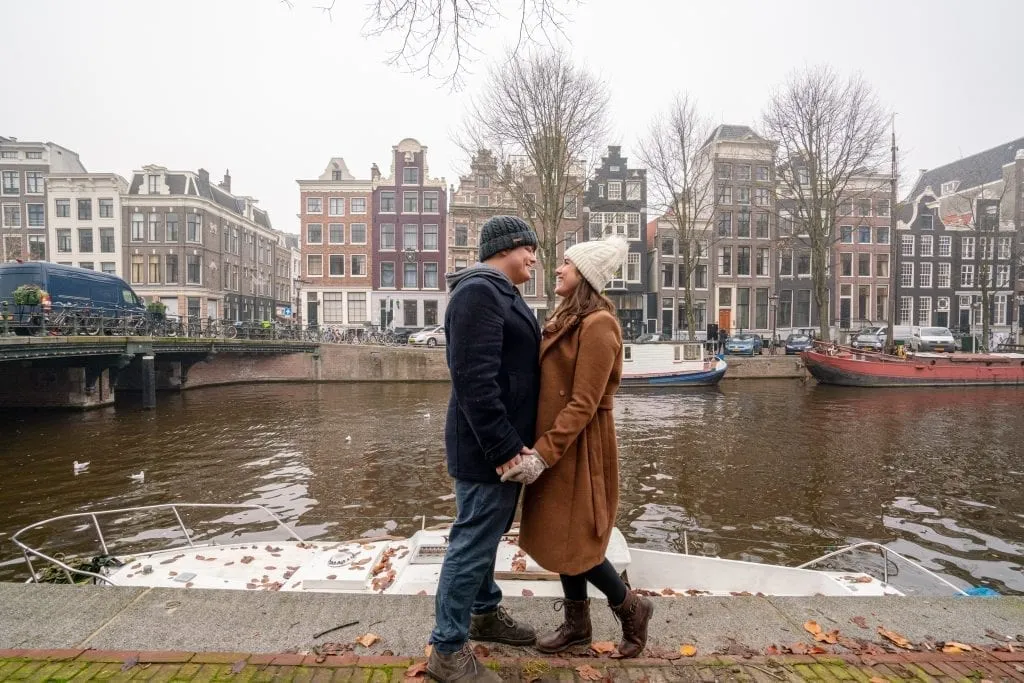
Perhaps it may be slightly unfair to list Belgium entirely while the other destinations are split into cities… but considering Belgium’s two most popular cities, Bruges and Ghent , are located less than an hour apart by train, you can cover quite a bit of the country in a few days !
With stunning architecture, canals, and carbs (bring on the waffles and frites), it’s easy to have a blast in Belgium.
Winter in Belgium brings a lack of crowds and plenty of festivities during the Christmas season!
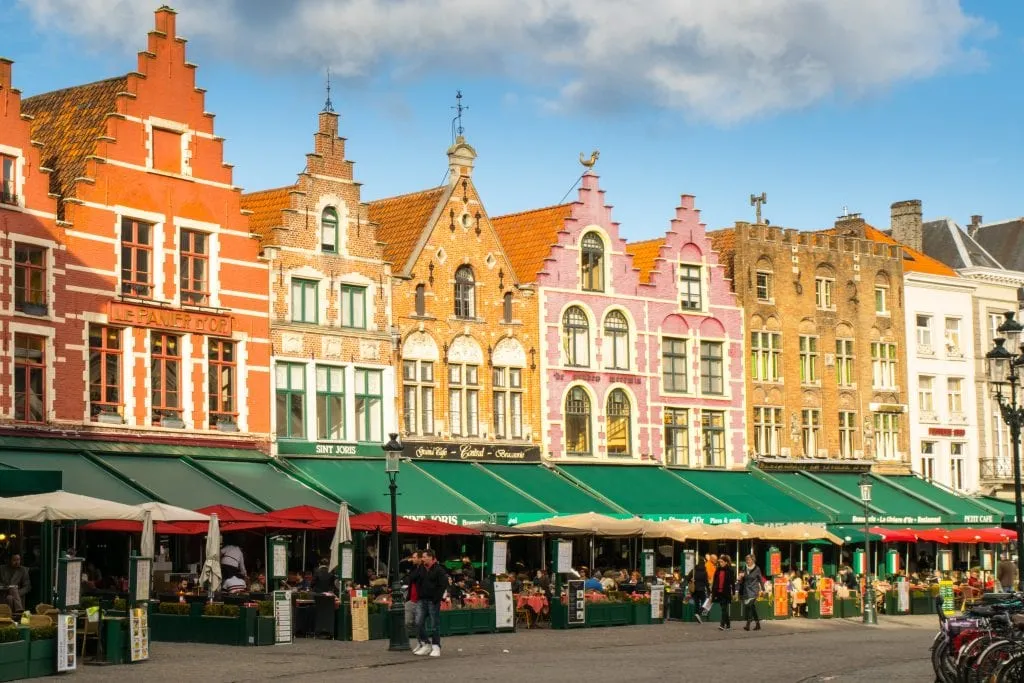
Alpine Escape: Bavaria, Switzerland’s Jungfrau Region, Milan, and Lake Como
If your dream Europe trip involves plenty of Alpine views with a side of cities, this is the itinerary for Europe in 2 weeks for you.
Start your trip in Bavaria, the land of castles, beer, and outdoor delights.
City lovers will enjoy being based in Munich (don’t miss the opulent Munich Residenz or view from St. Peter’s Church and/or the Town Hall Tower while there).
From Munich, you can easily day trip to more mountainous areas, starting with Fussen, home to Germany’s famous Neuschwanstein Castle .
If you get good weather and want to see as many mountains as possible, a day trip to the Zugspite–the highest point in Germany–is also an option.
Really, though, if there’s one thing to prioritize in Munich, it’s to eat and drink all the sausage, pretzels, beer, and beyond you can get your hands on!
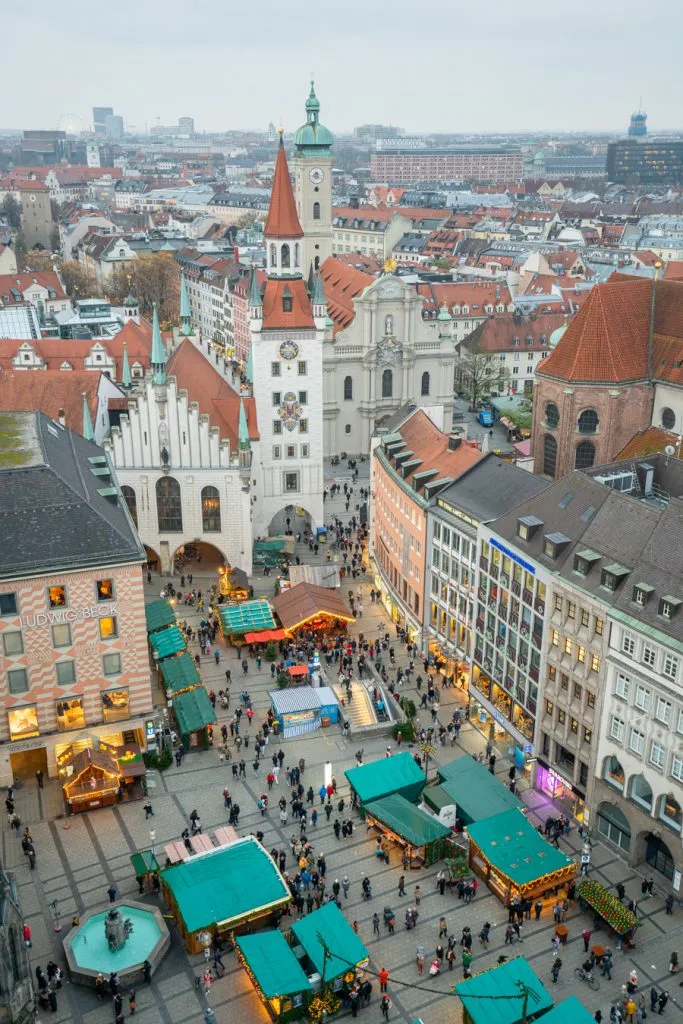
Switzerland’s Jungfrau Region
I am convinced that Switzerland’s Jungfrau region–located around (literally, above) Interlaken–is paradise on earth in the summer.
If you’re dreaming of the Alps, check into a hotel in Wengen, Murren, or Grindelwald (for the best views) or Interlaken (for a bit more selection) or Lauterbrunnen (to be in the literal center of the action) and have the trip of your dreams.
Switzerland’s legendarily efficient trains and gondolas mean that wherever you stay, the region is at your fingertips.
Hiking from Mannlichen to Kleine Scheidigg, riding the highest train in Europe to Jungfraujoch (aka the “Top of Europe”), eating daily fondue, walking from Murren to Gimmelwald , and riding a historic cogwheel train to Schynige Platte are just a few of the unforgettable experiences you’ll find here.

Milan + Lake Como
End your trip to Milan and Lake Como , two of the most popular destinations in northern Italy!
In Milan , be sure to visit its legendary Duomo, stroll through the Galleria Vittorio Emanuele II, visit Sforzesco Castle, and, if you can get tickets (plan ahead!) see Da Vinci’s The Last Supper .
At Lake Como (just an hour north of Milan by train), take a boat tour around the lake and visit delightfully charming towns like Varenna and Bellagio while admiring magnificent Alpine views.

Getting around in each city on your 2 week Europe itinerary is a question better suited to blog posts on that particular city, so this section is designed to address getting in between each destination during your 14 days in Europe.
We recommend checking several solutions for each destination, as you never know what will crop up!
Personally, our first 2 week Europe trip involved an overnight train, a budget plane ride, and a couple of rental cars.

Train travel is our absolute favorite way to travel in Europe!
I t’s much less stressful than traveling by plane, especially once you get the hang of it, far more comfortable, and for those of us hailing from North America, it’s a travel experience in its own right!
We recommend using services like Omio to compare train prices across multiple countries.
It works more or less exactly like a car rental aggregate does, searching multiple companies and generating the best routes and prices for your dates.
Keep in mind that train travel is most useful in western and central Europe–once you head into eastern Europe and especially the Balkans, train travel becomes more limited and bus travel more common (for example, popular Dubrovnik, Croatia doesn’t have a train station).
Shop train routes and tickets prices in Europe today!

For those traveling on a budget or between two smaller destinations where rail travel isn’t an option, buses can be a very affordable choice.
In addition to standard local buses, companies like Flixbus provide an easy-to-use service, and you can check their prices and availability directly or through Omio as well (that way you can compare train tickets at the same time).
Browse bus routes in Europe today!
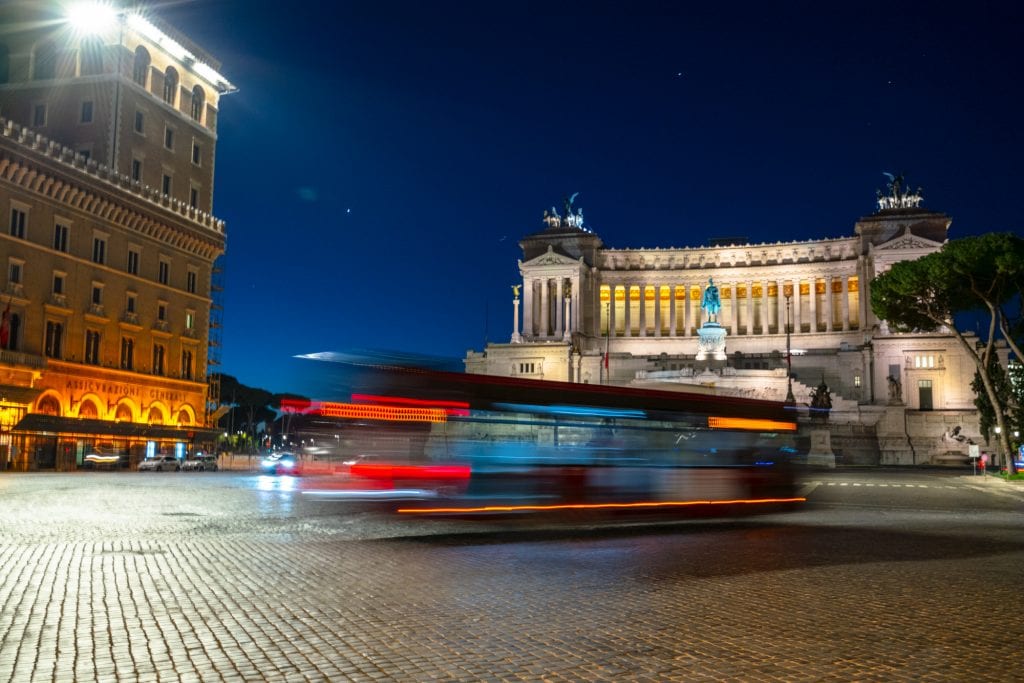
With plenty of budget airlines and plenty of airports to choose from, if you plan wisely, it’s possible to take flights in Europe that are so inexpensive you wonder how the company pays for the fuel.
S eriously: 10 Euro flights are possible, though we’ve never actually managed to pay that since we prefer to check our bags !
When looking for flights within Europe, we recommend using Google Flights in order to search the whole continent at once (you can simply put “Europe” in as the destination, and it’ll pull up a map of prices).
With a little flexibility on destination (for example, maybe flying into nearby Bologna is cheaper than flying into Florence ?) and even on dates if possible, you just might end up with an excellent flight deal or two during your trip to Europe.

Personally, we recommend avoiding a car rental when possible during your 2 weeks in Europe, especially if you’re following anything resembling a Europe itinerary like the ones I outlined above.
In large cities, rental cars are a hindrance and a liability, not an asset, and they add quite a bit to your bottom line.
That being said, if you’re planning on visiting any rural areas or small towns, road trips in Europe can be a delight!
Y ou could consider renting a car for a couple of days in Tuscany , for example, or to visit the villages of Provence.
If you do choose to rent a car, we recommend searching for the best prices through Discover Cars , which will allow you to search multiple companies at once and come up with a great option.
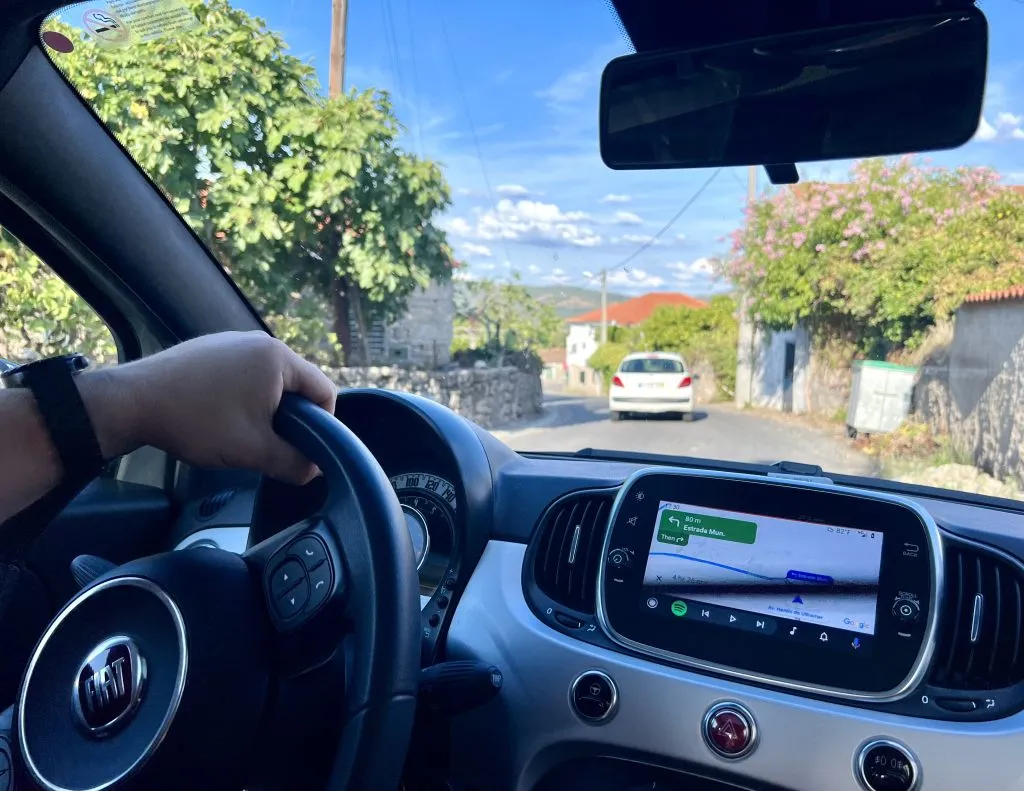
While major international carriers like Hertz and Enterprise are available in Europe, they’re not always the best deal, and searching for a combination of local and international companies is best.
Personally, we have no loyalty to any one rental car company, and book with whoever is most affordable (and we always buy the extra insurance).
As a result, we’ve rented cars through easily more than 15 or 20 agencies over the years (I’d be hard-pressed even to estimate it), and we’ve never had any issues with surprise charges.
Price out rental cars with Discover Cars now!
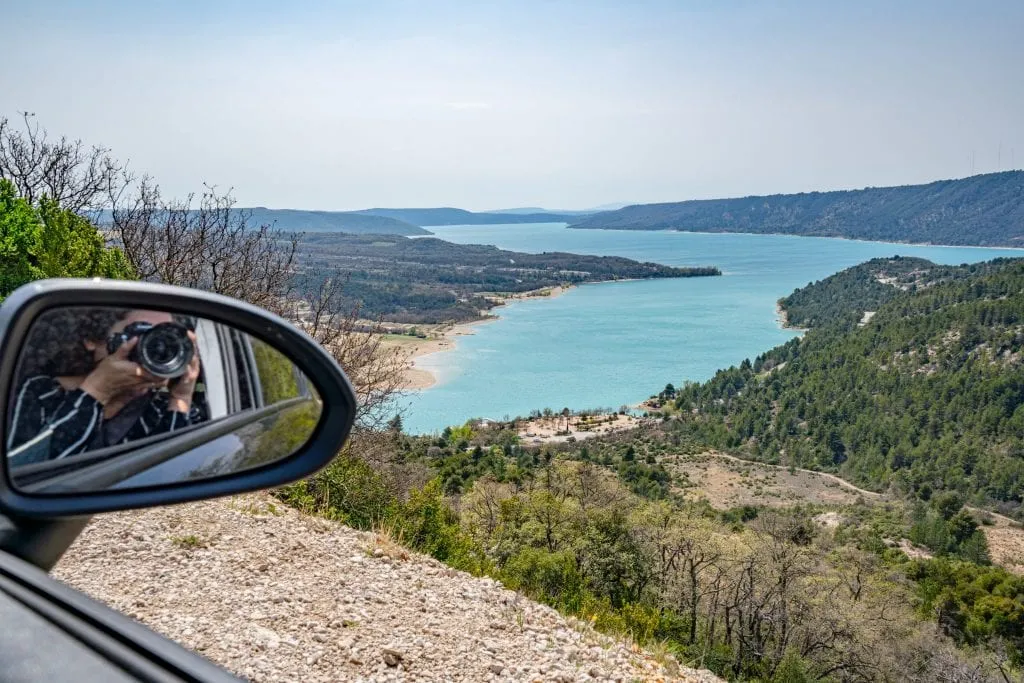
Don’t forget boats when it comes to planning a 2 week Europe itinerary, especially over the summer!
While ferries between or to/from islands are obviously the most popular ( Dubrovnik to Hvar , for example, or Barcelona to Mallorca), there are longer ferry options as well!
Last summer, we took a ferry from Barcelona to Rome and loved the experience of drifting along the Mediterranean Sea for 24 hours!
Many ferry routes are seasonal, but not all.

Don’t plan to visit too many destinations.
With only around 14 days in Europe, I know it can be incredibly tempting to squeeze in as many destinations as possible (and I have many fevered outlines of ridiculously ambitious trips I planned in my college days to prove it), but your trip will go so much more smoothly if you can resist that temptation.
In most cases, we recommend an absolute minimum of two full days per major city.
By full days, I mean with limited exceptions (like a red-eye flight that lands at 8:00 AM), the day you arrive and the day you depart don’t count as a “day” in a given city–just as a travel day.
Three or four days per city is even better and will allow you to potentially squeeze in a day trip from that city to a smaller city or village if you want to mix things up.
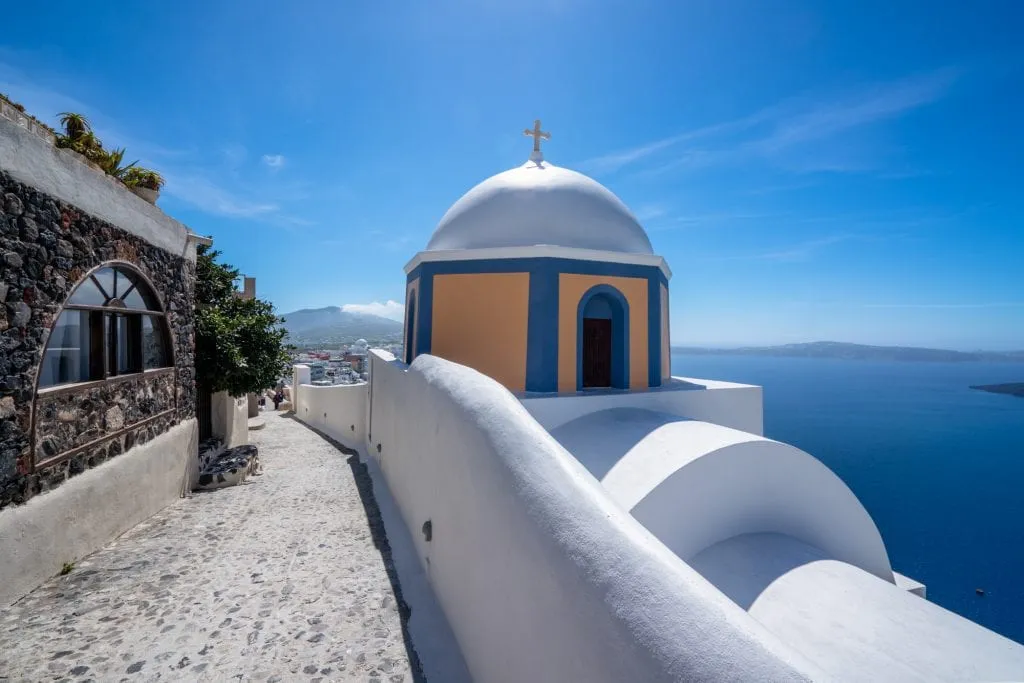
Start and end in a major airport hub.
It doesn’t necessarily have to be the same hub–more on that below–but there are definitely airports that are cheaper to fly into and out of for intercontinental flights than others.
Budapest may be affordable once you’re there, for example, but flying from the US directly to Budapest can hurt the wallet!
For those of you coming from the USA, London, Dublin , Madrid , Paris , Lisbon , Frankfurt, Amsterdam , and Milan are a few places to check ticket prices for.
That’s not an exhaustive list by any means, but there are often flight deals to and from these cities.

If you can, use an open-jaw ticket rather than a return ticket.
This will allow you to begin and end your 2 weeks in Europe in entirely different destinations, and let you avoid doubling back!
While one-way tickets can be pricier than round-trip ones, if you’re flexible on your dates and destinations (so deciding which cities to start and end in partially based on price), you can usually find excellent deals
This is exactly how we ended up flying into Krakow and out of Dublin for our first 2 week Europe trip!

You will be exhausted at some point. Plan for it.
Two weeks in Europe may not seem like a ton, but if you’re anything like us or virtually all of the travelers we have talked to, exhaustion will set in during your trip.
Sightseeing in Europe is fabulous, but it’s also tiring.
Add in navigating cultural differences, language barriers, and moving countries every few days, and you’re bound to need a break at some point.
We recommend planning a couple of laid-back days without museum visits, tours, or day trips so that you can catch your breath and avoid burnout.
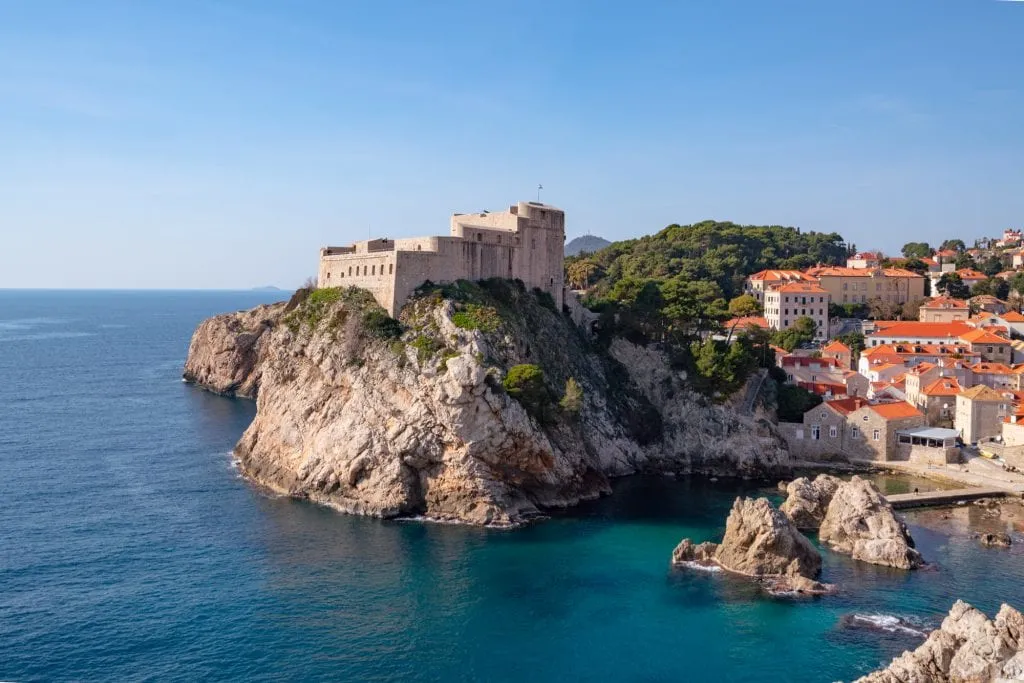
Try to be flexible with where you go.
As you start pricing train, plane, and bus tickets for your trip to Europe, you’ll likely notice dramatic shifts–for example, is it 4x the money to get to London instead of Amsterdam?
Does traveling to Prague require a long flight and 2 layovers but Rome is a quick hop away?
If you can, be flexible when you come upon these challenges: we recommend having 1-2 “must visit” destinations and filling in the rest of your trip based on a combination of logistics and desire.
After all, there’s no way you can see it all on a 2 week Europe trip anyway!

Don’t underestimate the time and energy it takes to change destinations.
“Oh, it’s only a 3-hour train ride away! That’s nothing!”
I think we’ve all said that at some point when planning a multi-country trip, but be cautious.
Three hours on the train doesn’t account for packing and unpacking, getting to and from the train station, checking out of and into a hotel… you get the picture.
If you’re looking at a high-level schedule without picking a specific date or time, you may also come to find that sure, there’s one direct 3-hour train between two cities… but it leaves at 10:00 PM or 6:00 AM, and the rest of the trains require layovers.

Or perhaps the direct train only runs 3 days a week.
Or maybe you’re looking at a plane, in which case, be sure to add at least 4 hours to your transit time: getting to and from the airport and security/check-in beforehand.
Long story short, travel days between countries are virtually always more tiring and time-consuming than they look at first glance, so don’t overcommit on those days when planning your ultimate Europe trip!
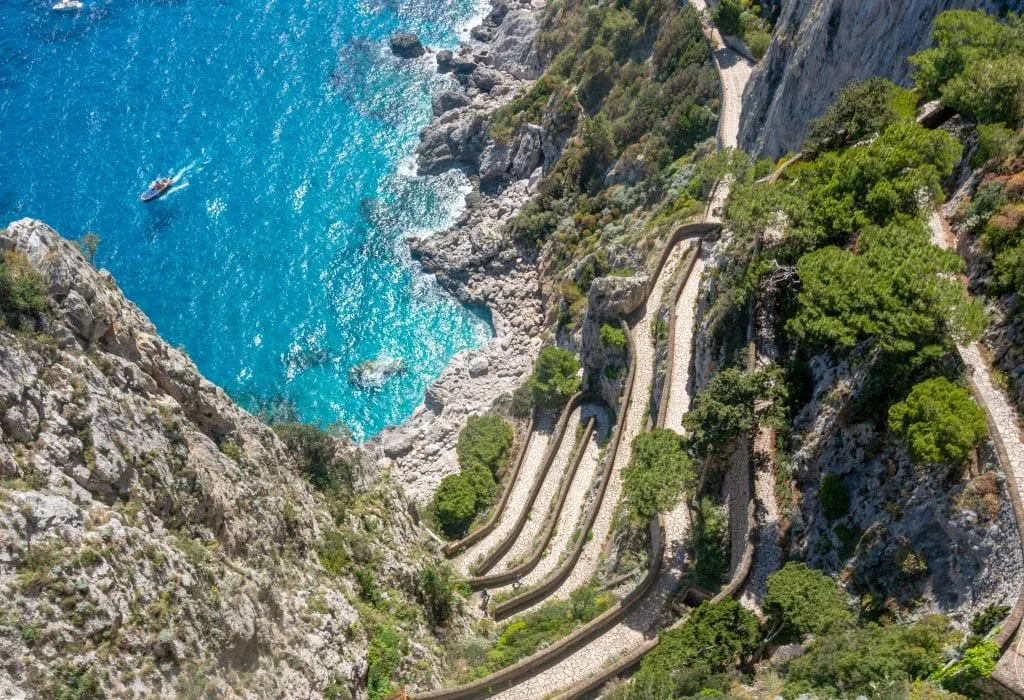
Big cities are more accessible than small towns and nature areas.
For the first trip to Europe especially, big cities are absolutely the easiest to plan your itinerary for Europe around.
They’re generally easier and cheaper to get into and out of, and there’s far more information available about them online to help plan your trips.
That’s no reason not to visit other places too, of course–but keep in mind that the more rural the area, the more logistically challenging your trip will be.
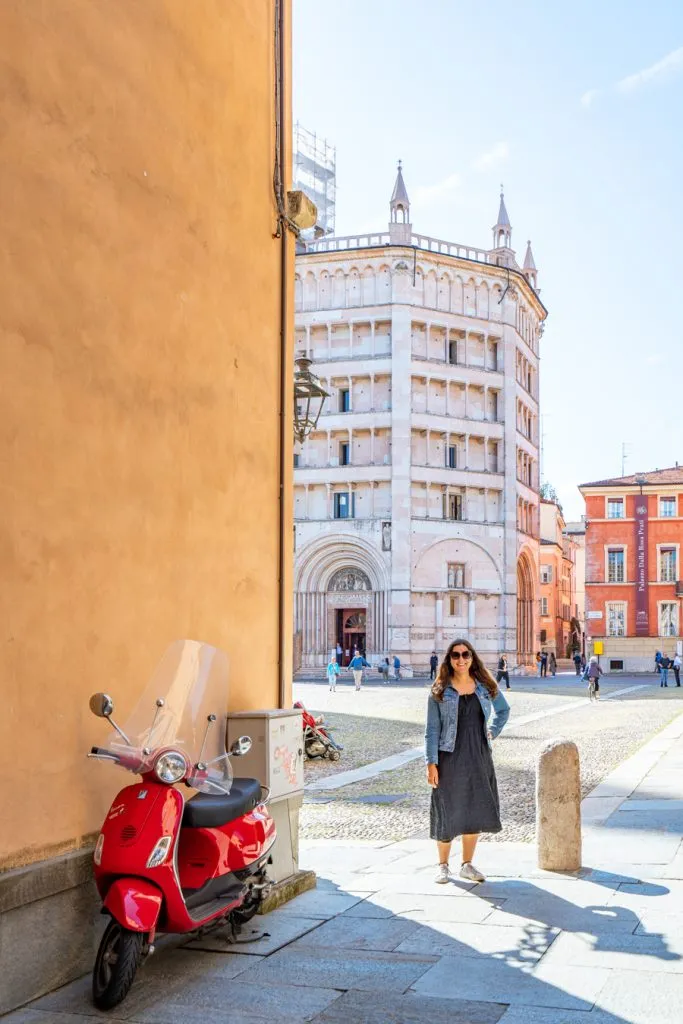
Skip-the-line tickets are incredibly useful.
I’m sure it comes as absolutely no surprise that the world’s most iconic monuments and museums tend to get a bit crowded… and that makes skip-the-line tickets invaluable, especially with only 2 weeks in Europe to squeeze in as much sightseeing as possible.
In some places (like the Arc de Triomphe ) they’re available without any additional fee, and in other places (like the Colosseum) they cost a bit extra.
Either way, though, it’s 1000% worth the price and effort to get tickets online beforehand for popular spots, especially if you’re traveling during the high season.

And, in 2024, it’s worth pointing out that given ever-changing capacity limits, it’s a better idea than ever to book in advance–and for some attractions, it’s even required!
When 2020 shook the travel industry to its core, many of the most popular museums and monuments in Europe found that life was easier with reservations and online bookings, and have continued prioritizing that system over traditional lines and ticket booths even as crowds returned to “normal”.
We use skip-the-line tickets all over the continent and book them through Get Your Guide .

Book your hotels and major transportation in advance.
Before kicking off your 2 week Europe itinerary, we recommend having all of your hotels and major transportation (so travel between destinations) booked and ready to go.
This dramatically cuts down on stress levels, makes it easier to budget and plan out your days, and generally helps your trip run more smoothly.
These days, we book virtually all of our lodging (including apartments, farm stays, houses, and more) through Booking.com .
Smaller things, like metro passes or tickets for getting around cities, can be handled once you arrive.
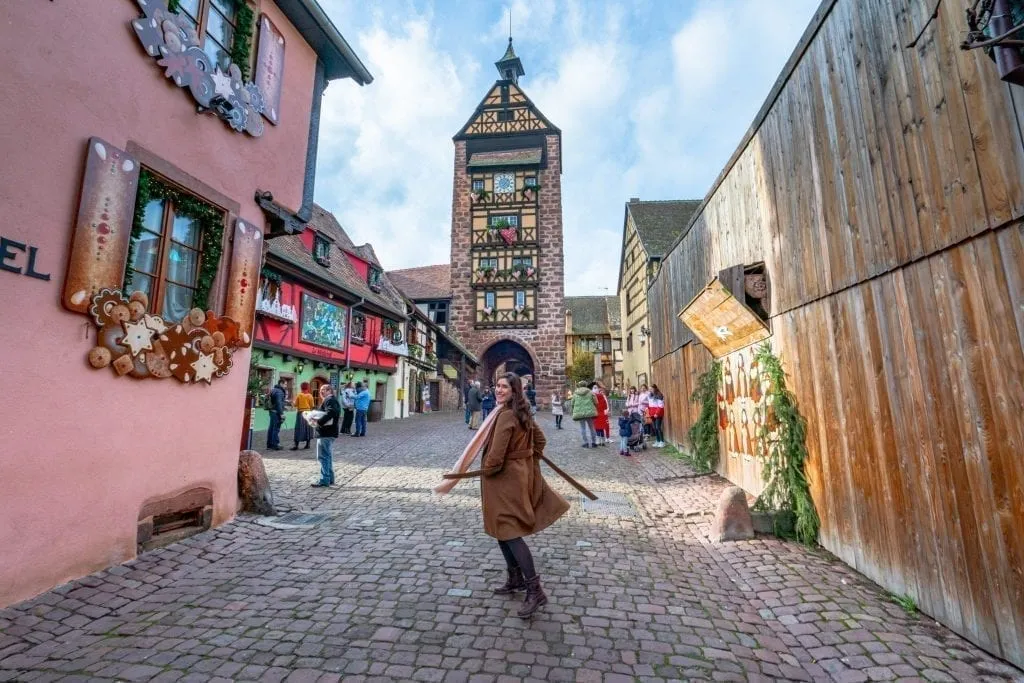
If you can, we recommend taking at least one food tour during your 2 weeks in Europe.
Food tours are one of our favorite ways to get our bearings in a new city while learning about the culture, history, and neighborhood through something we can all appreciate: a tasty meal.
We’ve taken food tours in several countries around the world, including many in Europe, and have never walked away unsatisfied!
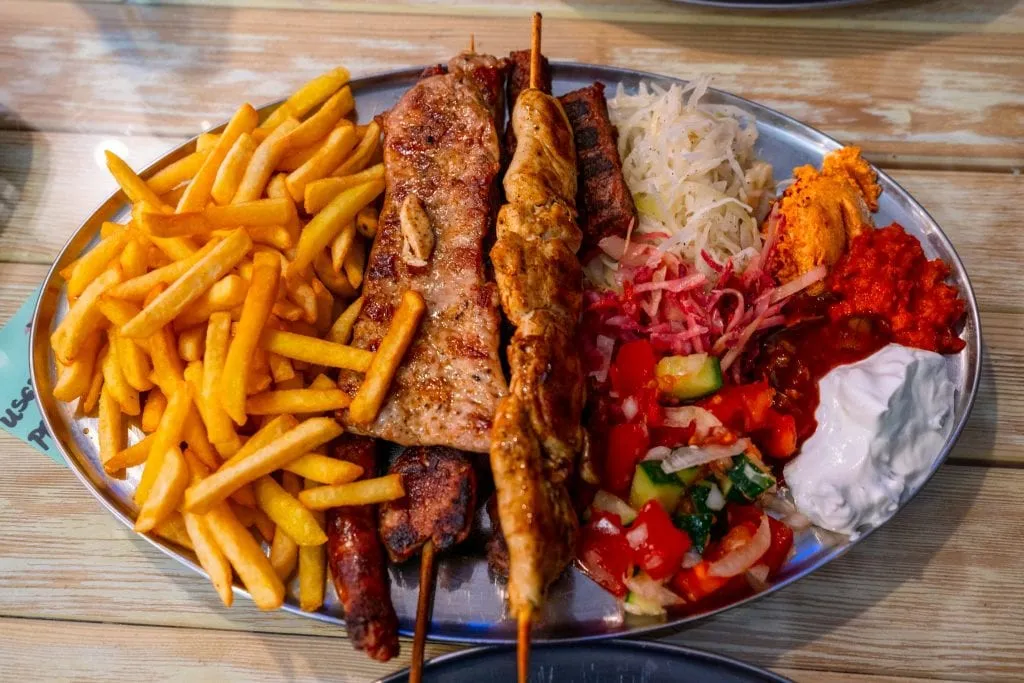
You do need to pay to use the restroom… sometimes.
Throughout Europe, public restrooms are generally available for a fee (typically either half a Euro or a Euro).
If you’d like to avoid those costs, be sure to take advantage of available restrooms in restaurants and museums as you sightsee !
Also, toilet paper is far from guaranteed in public toilets on the street.
We recommend carrying a small pack of tissues with you just in case.
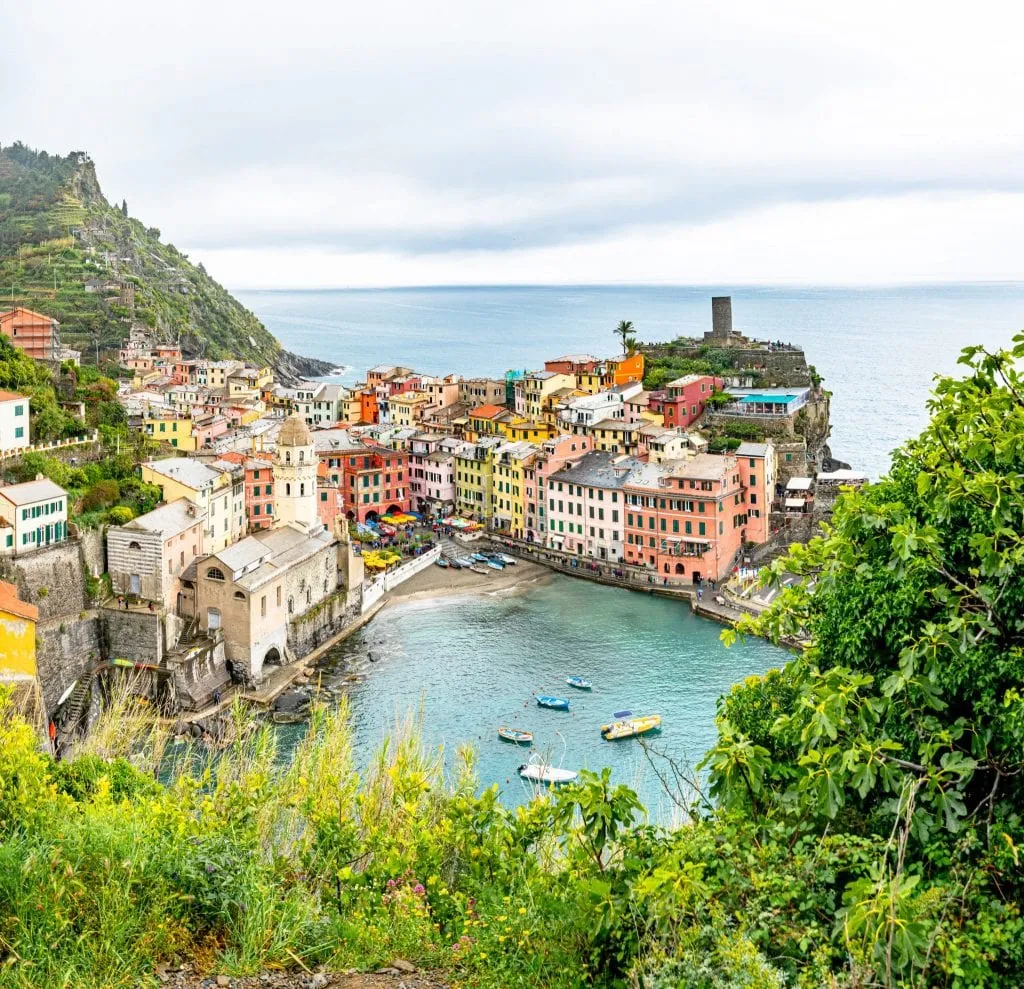
Will I need an adapter?
Most likely, yes!
Luckily, adapters are cheap to buy and easy to carry–we recommend picking these up before you go.
Keep in mind that the UK and a few other countries ( Ireland , Malta ) use a separate plug from the bulk of the continent.
If you’re heading to a place that uses UK plugs, you’ll want these adapters as well.

Is a money belt a good idea?
It depends, honestly.
We used a money belt for our first trip to Europe and for a couple after that.
Back then, we weren’t used to life in bustling big cities, and though we knew that thieves knew about them (because they definitely do), Jeremy found them comfortable enough to wear and it was an easy way to keep our belongings a bit more secure.
If you’re not used to traveling in a big city or watching for pickpockets, I don’t think it’s a terrible idea to use one– this is the one we used and we had no complaints–but I also don’t think it’s necessary, especially if you’re comfortable in large cities.
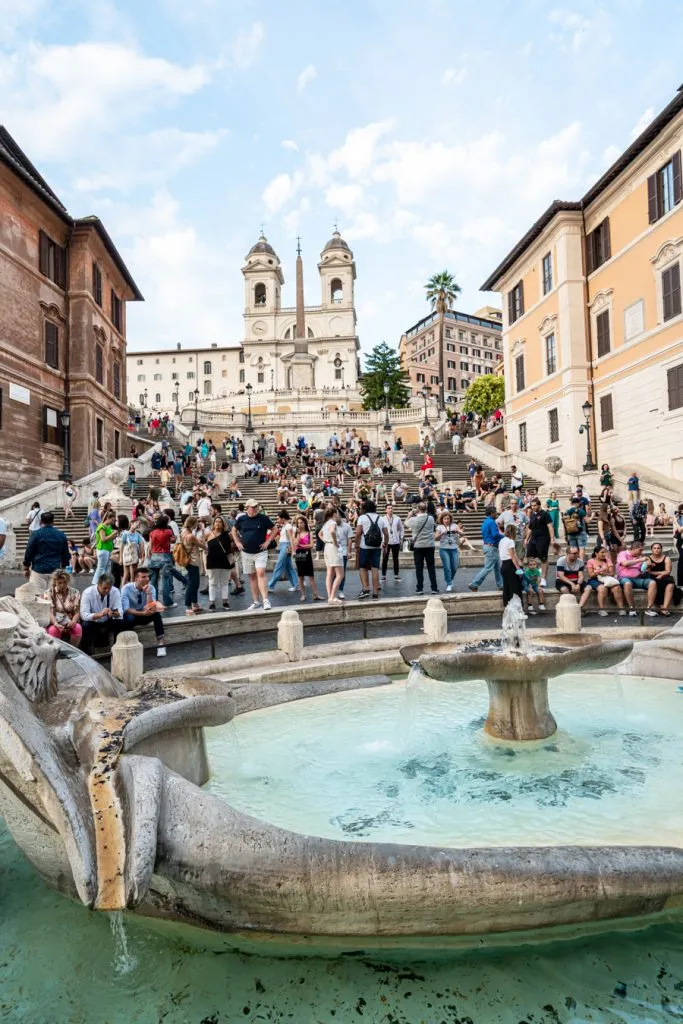
Is the water safe to drink?
Usually, yes.
We drink out of the tap just about anywhere in Europe.
In rare cases where the water is not safe to drink (usually in remote areas of southern and eastern Europe, or in very old buildings with iffy pipes), there will generally be large and obvious signs stating so.
If you’re worried about it, though, you can always ask your hotel concierge or host about it!
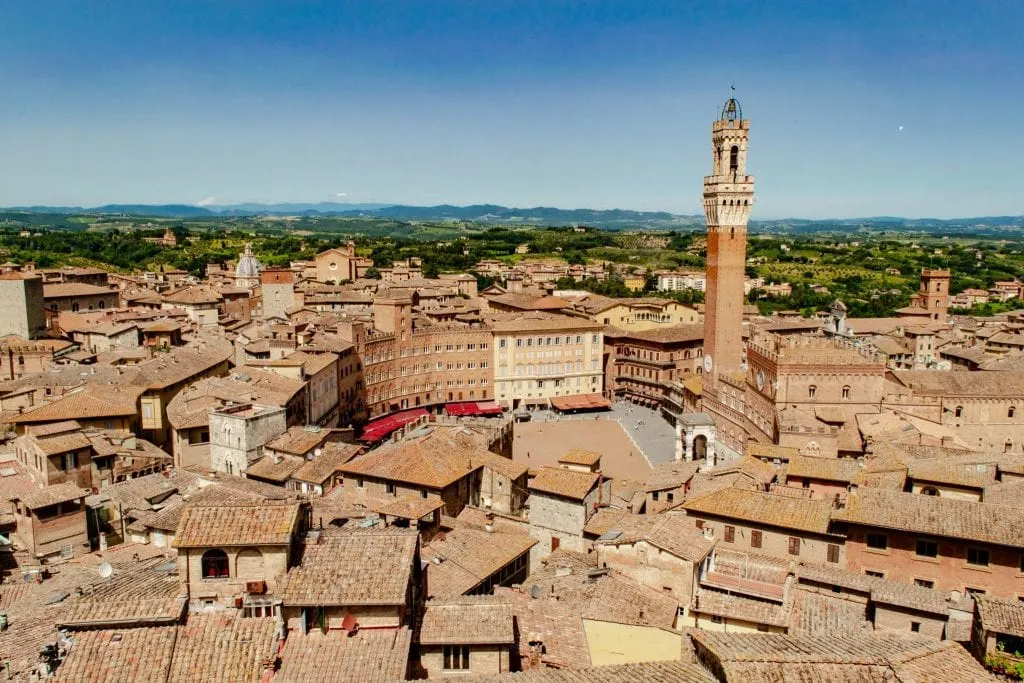
Is it worth going to Europe for 2 weeks?
This is a pretty common question, and honestly, I get it: with long and expensive flights, it’s easy to wonder if flying to Europe for “only” 2 weeks is worth it.
But yes, it absolutely is!
Two weeks in Europe is long enough that you’ll have plenty of time to get past jetlag, visit several destinations, and have a wonderful trip packed with memories.
Now whether or not it’s worth flying to Europe for just one week is a bit more controversial… but we love to travel Europe so much that we still say yes (for some people).

How extreme is the language barrier?
It varies significantly, of course, but generally, it’s not nearly as difficult as first-time visitors to Europe worry before they arrive (ourselves included).
We recommend learning basic phrases in the language of the countries you are visiting during your 2 week Europe itinerary, but this is usually more for good manners than out of necessity.
While you can absolutely find monolingual Europeans in virtually any country, especially in smaller cities and towns, the people employed in customer service roles and in the tourism industry in major cities–in other words, where most or all of your 2 weeks in Europe will likely take place–generally speak some English.

How many European countries should you visit in 2 weeks?
For most travelers, we recommend roughly 3 “base” destinations for a 2 week Europe trip, plus a couple of day trips from there to mix things up.
These can all be in one country (for example, here’s how we recommend spending 2 weeks in Italy ), or they can be in 3 separate countries!
There are plenty of exceptions to this standard layout, of course, but it’s a doable but exciting number of destinations to work with for most 14 day Europe itineraries.

When should I tip?
While this is very country and industry-dependent, generally speaking, tipping is not nearly as prominent in Europe as it is in the USA, and you’ll virtually never need to tip over 10%.
In some countries, you may also tip 5-10% at restaurants, while in others, you might round up the bill or leave nothing at all.
Frequently, a “service charge” will be automatically supplied to the bill which serves the purpose of a tip.
For tour guides, a 10% tip is common.
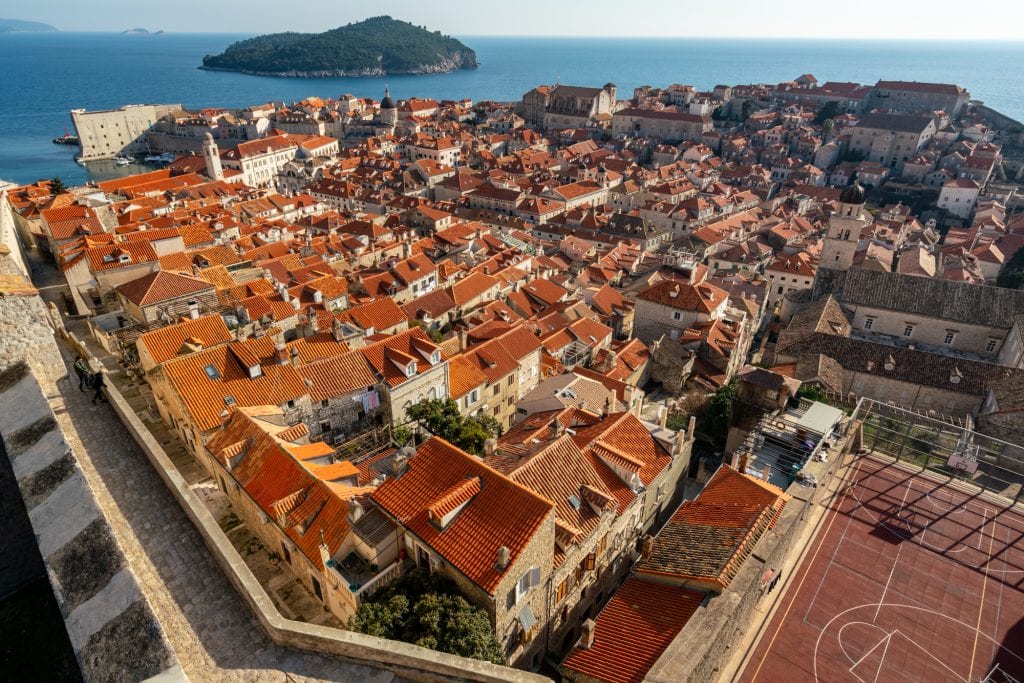
What’s the best month to visit Europe?
All of them, except August.
I kid–somewhat–but honestly, every single month in Europe has its perks!
For a concise answer, the late spring (April-May) and early fall (September-October) are considered ideal by most travelers.
August is specifically difficult because it’s not only very hot in many of Europe’s most popular destinations, but most Europeans take vacations then, so many places (especially in the mountains and on the coast) are at their priciest.
If we absolutely had to visit Europe only during one month for the rest of our lives, we’d pick September, though October is a very close second.

What’s the cheapest month to visit Europe?
It depends–trying to spot the northern lights in Tromso would be one exception to this, for example–but for standard first time Europe itineraries like the ones I outlined in this blog post, January and February are often the cheapest months to visit.
When the Christmas markets are over and the gray weather settles in, you can score great deals on vacations in Europe (and have plenty of room to stretch out at iconic monuments).
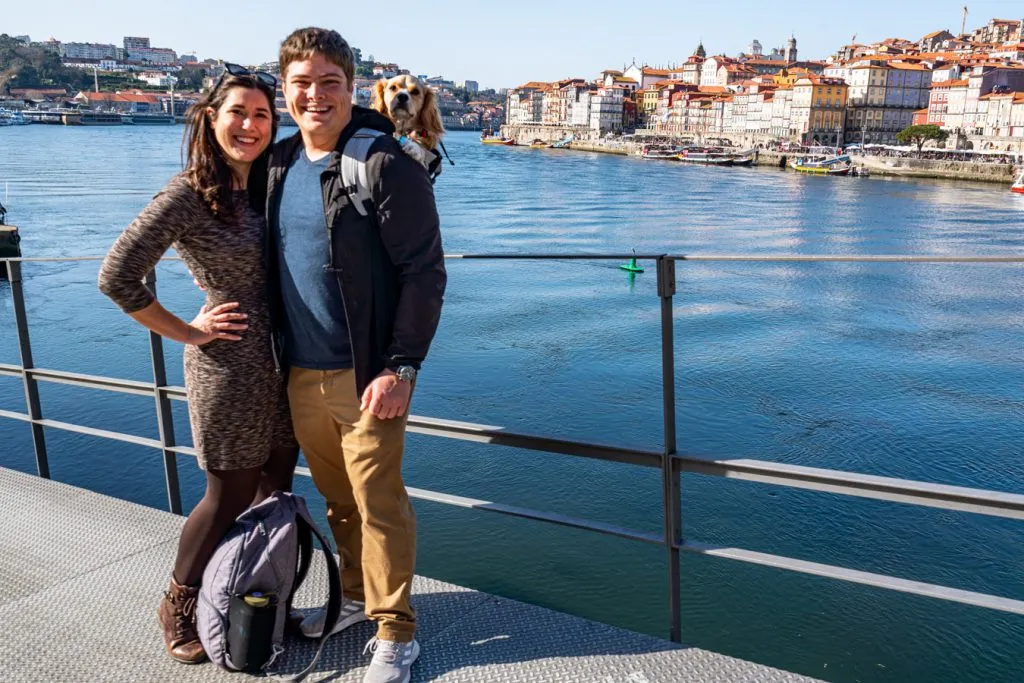
How far in advance should I book my trip?
For plane tickets, as soon as you can commit to dates!
Not only will this allow you to have more time to plan and budget with a bit of structure, but it will also spread out your costs a bit more.
During peak seasons, like coastal locations in the summer or popular destinations during the Christmas season in Europe , you’ll want to book your hotels as far in advance as you can commit to them as well.
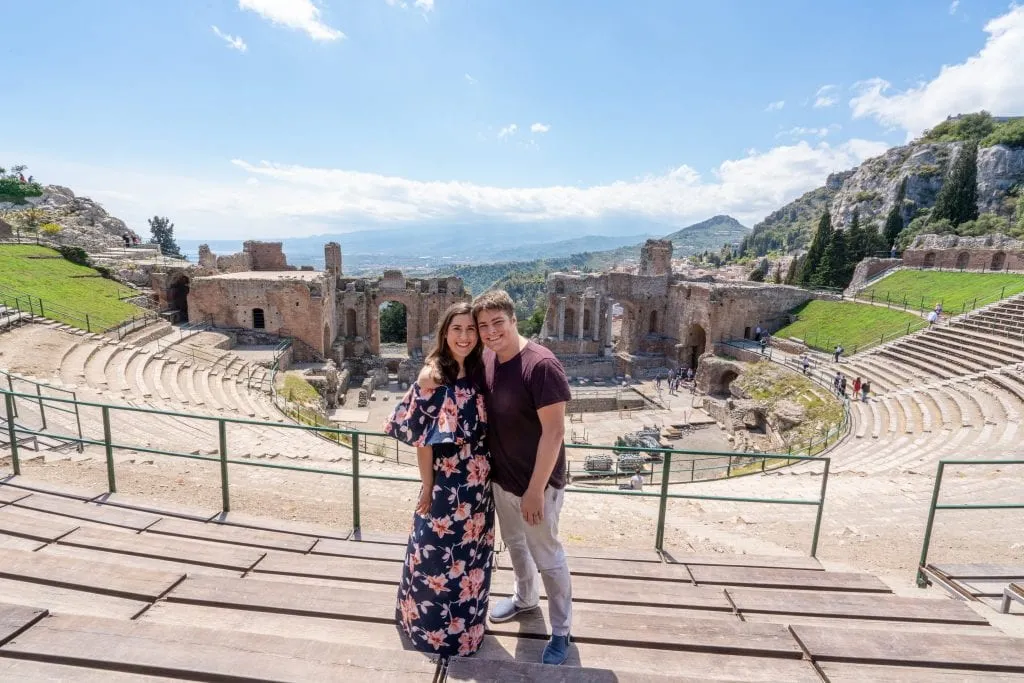
Can you do Europe for $100/day?
This depends a lot on the traveler, group size, etc, but my initial, instinctive answer is:
If you don’t include plane tickets to and from Europe, yes, absolutely, without a doubt–we’ve done it many, many, many times (as a couple).
The key is to shop for deals, visit during the off-season, not shy away from less common destinations (especially in Eastern Europe and the Balkans), and travel slowly.
The fewer destinations you visit, the cheaper a trip generally is!
If you want to stick to Western Europe, southern Spain , southern Portugal, and southern Italy can all be bargains (as compared to places like Paris and London) as well.
Here’s how we manage our travel budget.
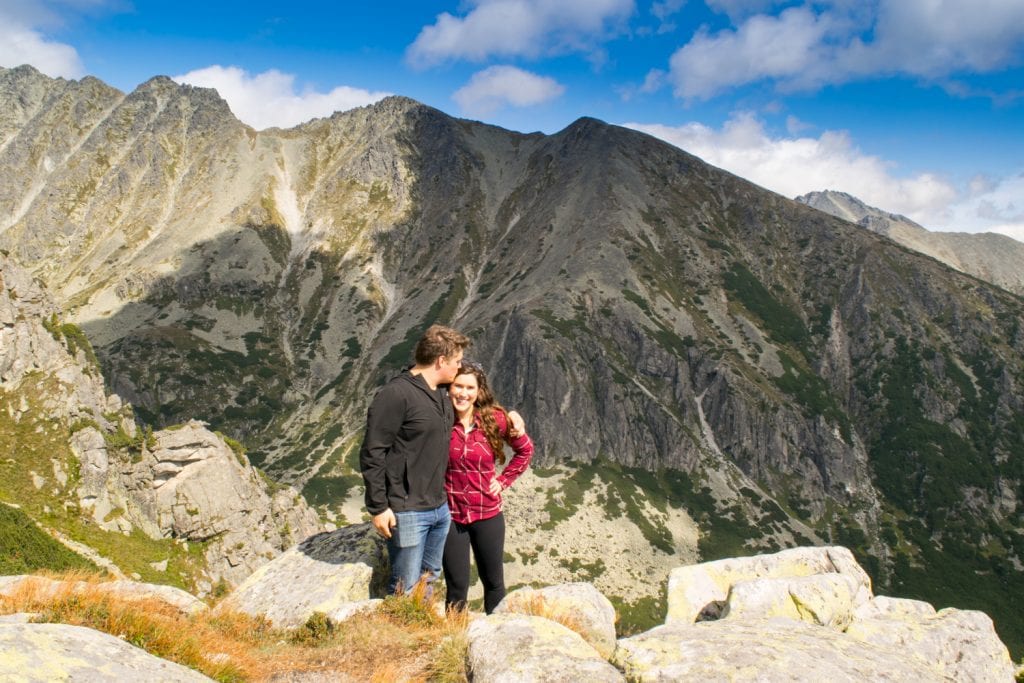
We’ve put together detailed packing lists for various seasons in Europe, so be sure to check out our complete suggestions for spring , summer , fall , and winter before you head off on your 2 weeks in Europe.
We go into far more detail on what to wear in Europe there !
To get you started, though, here are a few essentials that should definitely be at the top of your list .
Travel Insurance — We don’t ever suggest traveling without travel insurance–anything can happen, and it’s better to be safe than sorry during your 2 weeks in Europe.
Check travel insurance policy inclusions and prices for your trip here.
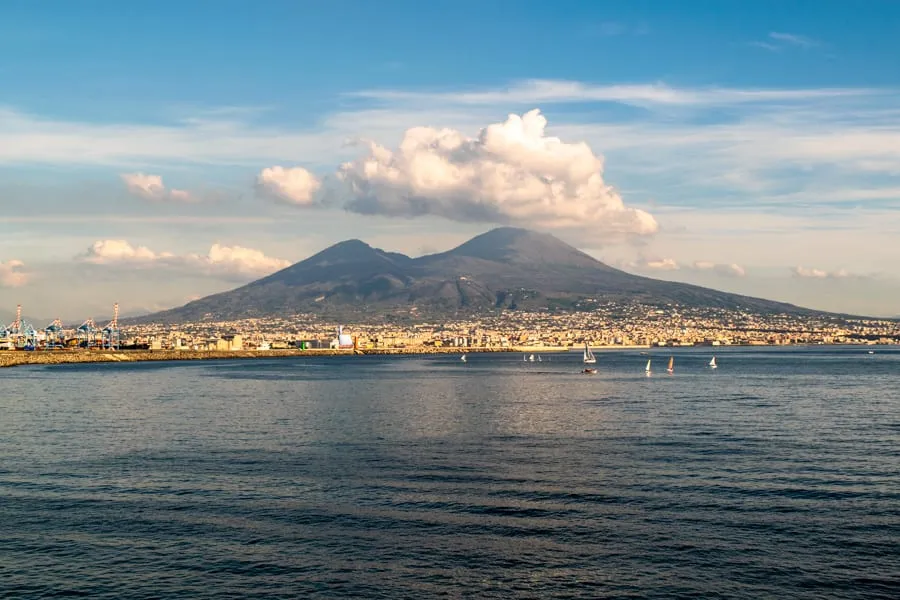
Pacsafe — We can’t recommend our Pacsafe enough!
This travel safe is affordable, sturdy, easy to pack, and will help keep your valuables safe in your hotel room (not that you should need to worry much about theft from your hotel room during your trip to Europe, but it’s better to be safe than sorry!).
Comfortable Day Bag — We currently use Pacsafe’s sleek anti-theft backpack and love it, but if you don’t want to shell out the cash for this trip, that’s totally understandable.
Just aim for something comfortable to wear, not flashy, and medium-sized–we used a Northface Jester backpack for years and loved it as well.

Travel Adapters for Europe — If you’re coming from outside of Europe, you’ll definitely need adapters for your electronics.
Be sure to check the requirements for any particular countries you visit–the United Kingdom, for example, is well-known for using different plugs than most of the continent.
Portable USB Charger — Don’t stress about your phone dying while you’re sightseeing!
Add a portable charger to your 2 weeks in Europe packing list.

Hand Sanitizer — We carry this everywhere, and never been sorry to have it floating around in our day bag.
Travel Journal — If you want to keep a travel journal during your 2 week Europe trip but can’t commit to a huge amount of writing each night, I can’t recommend the One Line a Day Journal enough.
I’ve been using it for more than 5 years now (I’m on my second volume!) and I absolutely love it.

In the process of booking your Europe trip and eager to keep planning?
We’d love to help!
You can browse all of our general Europe blog posts here , find articles about specific places through our destinations page , or check out these guides:
- Your 13-Step Guide to Traveling to Europe for the First Time
- The Perfect 2 Week Spain and Portugal Itinerary (+ Essential Tips!)
- How to Travel Europe By Train: The Ultimate Guide (+ Tips!)
- 11 Quick Tips for Finding + Using Toilets in Europe
- Prague, Vienna, Budapest, Beyond: Epic Central Europe Itinerary
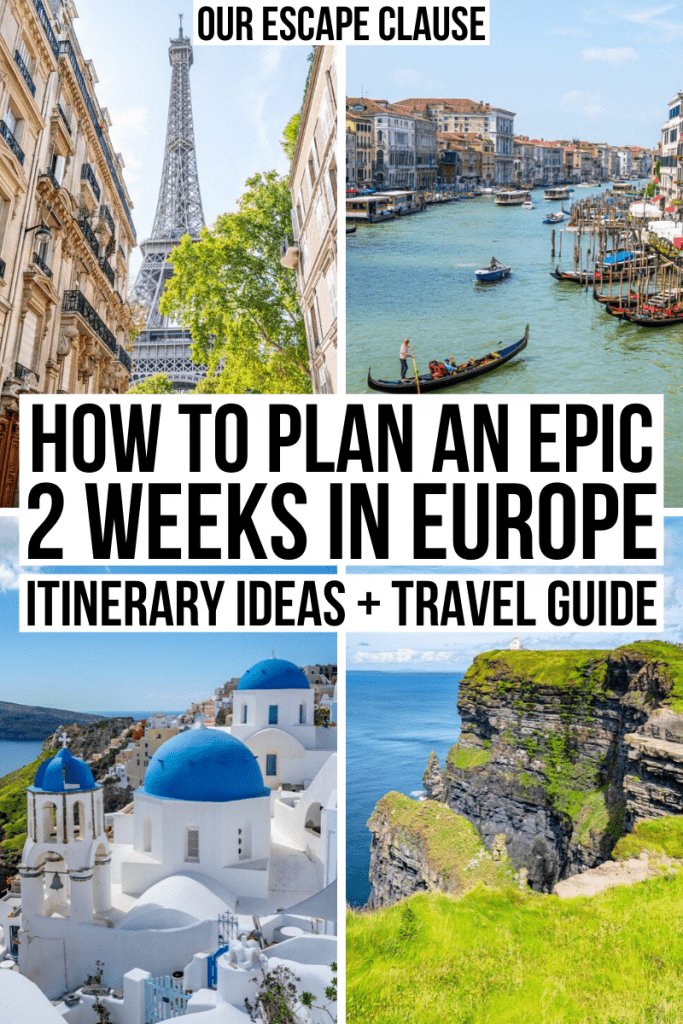
About Kate Storm

In May 2016, I left my suburban life in the USA and became a full-time traveler. Since then, I have visited 50+ countries on 5 continents and lived in Portugal, developing a special love of traveling in Europe (especially Italy) along the way. Today, along with my husband Jeremy and dog Ranger, I’m working toward my eventual goal of splitting my life between Europe and the USA.
60 thoughts on “How to Plan an Epic 2 Week Europe Trip (+ Europe Itinerary Ideas!)”
Great post! I’m actually working on my own 2 week itineraries through Europe post, but I might wait to publish until next year, when I’ve visited a few more spots. I totally agree that the key is to slow down and not switch cities every day or two. Three nights is perfect and sometimes more for the big cities. And yes, multi-city flights are so helpful so you don’t have to backtrack!
Thanks, Riana! We definitely love to slow down whenever we can. :-)
Hi Kate! This is the BEST post related to Europe Itinerary out of the 1000 other posts that I have checked.
I am from India and I am planning for a trip in February end.
I definitely want to visit FINLAND (so that’s definitely in my list). From there, I am planning for Bupadest,Croatia OR Budapest, Prague OR Budapest/ Vienna.
Do you think this will be good for 2 weeks?
Waiting for your reply. And thanks a ton for such a beautiful detailed post.
Thank you so much, Akshay, that’s wonderful to hear!
That sounds like a wonderful itinerary. Croatia is a bit further out of the way than the other places, but it’s peaceful and beautiful during the winter and fairly simple to get to via a budget flight.
Hope you have an incredible trip to Europe!
Oh my goodness Kate, thank you so much for this post! This is exactly what I needed for my boyfriend and I to plan our trip to Europe in 2020. We want to visit Italy, Spain, France, and England but Greece and Croatia look amazing too! It’s so hard to decide.
Thank you, Jessica! So glad you found our blog helpful.
It is SO hard to decide, and honestly, it never gets any easier in my experience! All of those places are absolutely amazing, so no matter what you decide I’m sure you guys will have an incredible trip.
Italy, France, and Spain are really easy to pair together if you want to keep logistics simple, but really any combination of those would work.
What about panning around the seasons? Isn’t the Amalfi coast and Italy in general super hot during August?
It’s always nice to plan around the seasons when you can, but it depends on your availability!
Italy can be hot in August but it depends very much on where you go. It averages around 85 F / 30 C on the Amalfi Coast in August, which I have to admit isn’t enough to bother us, but it depends on where you’re coming from. It is high season there, though–very, very generally speaking, August is an expensive and crowded time to visit beaches in Europe because it’s when many Europeans tend to take their vacations and head to the coast!
Planning a trip in 2023-24 for my daughter’s graduation present. I was thinking maybe 2-3 weeks. On this trip, how much did you spend in total? I might end up being more because I usually pay for more luxurious than most, but will help with a little expectation of costs plus COLA increases obviously over the years. I figured I should start planning and saving now. lol
Hi Steven! We put this together based on years of traveling in Europe, so unfortunately I don’t have a specific figure to offer. So much varies, and can be impacted by where you go, how fast you travel (ie, how many times you change destinations), of course luxury as you mentioned, etc, etc. Generally speaking, for two people, I would say that $100/person/day is a good lower-midrange figure to calculate (excluding airfare), $200/person/day starts edging toward luxury territory, and of course, the sky is the limit.
That’s INCREDIBLY general, though. You’d be better off narrowing down which countries you plan to visit and calculating based on how long you plan to spend in each of them.
A few things to look at to give you an idea: price of hotels, price of day tours, projected cost of moving between destinations, and average cost of a meal. Those figures should give you a backbone to estimate a budget from.
What brand are the boots you are wearing in the photo “Comfortable Day Bag.” My wife loves them. Gift idea for when we go to Europe :)
Those are Ugg Kesey Motorcycle boots, and I love them too! Just got them out again for fall last week. :-)
Hi kate I am planning to visit europe sometime in 2023(may/june) with my wife and son. Could you please guide me with an itinerary for 15 days Or so?? Swiss, italy, France, spain. After that we will go to a friend in England. If possible, the expenses involved as well. Thanks
Hi Abhijit! I’m not a travel agent, so that’s a bit beyond my scope. :-) Generally speaking, though, I’d recommend parring your itinerary down to 2 countries, or 3 at the absolute maximum. 4 countries in 15 days is a lot of travel! Luckily, all of those destinations pair well together, so you can mix and match fairly easily. Also very generally speaking, Italy and Spain will be the most affordable, and Switzerland by far the most expensive–but that depends a lot on where you go and what you do!
Hey Kate, All your pictures are amazing! What kind of cameras do you bring with you? And do you edit your photos? If so what do you use for that, they are all really bright, great pictures.
Hi Stefanie! Thank you so much! We’ve used different cameras over the years, but our main camera these days is a Sony A7 rIII. We love it, and yes, all the photos taken with it are edited in Lightroom. :-)
Hi Kate, THANK YOU for the great article! I have booked my flights for a 2 week trip next spring, into London and out of Paris. I’ve been to both cities before, but do hope to get a few days in paris again. It’s stolen my heart.
What do you recommend in terms of getting from London to Rome, fairly quickly, and cheaply? I arrive into London mid-day and had hoped to just figure it out at the airport (Gatwick). Do you think that’s possible?
Thank you so much, Sarah! Your trip sounds fantastic.
I’d definitely plan on flying between London and Rome–it’ll be fastest and most likely cheapest, too. Check budget carriers like Ryanair, etc.
If you’re planning on flying out to Rome the same day you arrive in Gatwick, I’d absolutely recommend booking before you arrive. Be sure to double-check and make sure you’re flying out of Gatwick, too, or have time to change airports.
Hope you have an amazing time!
Oh wow I’m doing the same trip with my 3 sons. And unfortunately is the month that she said it’s the worst to go ..in August…oh well🤷🏽♀️ can’t do anything about it how but I am worried about the expense tho..
Love your information. I’m planning a trip to Italy and then we want to go to Salzburg as well in the summer of 2023. Our first time to Europe. We will be 60 in 2023 and we think we can plan this without going through a company. After reading your information, I feel comfortable. Two questions about hotels and transportation. What would you recommend for safe places for hotels in those two countries? We don’t need luxury but just comfort and clean. Would you recommend using rail between cities in Italy and it looks like you can travel from Venice to Salzburg by rail? Thoughts?
That’s great to hear, glad we could help!
Venice to Salzburg by rail is very doable in a day and a scenic journey. You’ll probably have to make a change, but that’s workable. Personally, we’d opt for it over flying in a heartbeat.
For hotels, I have several recommendations in our specific Venice and Salzburg posts (you can use the search bar to pull up everything we have on both cities). The centers of both places are quite safe, I wouldn’t worry much about that in a well-reviewed hotel.
Hope you guys have an unforgettable trip!
AWESOME Post!!!!
Please let me know if you have posted anything similar in 2020 or 2021. My wife and I are bringing our three teenagers and we will likely choose the Food & History trip. We both would like to speak with you if possible as we are planning our trip for December.
Hi guys! We don’t run tours ourselves, just provide information for independent travelers, but we’re always happy to answer a few questions about possible itineraries!
Hi Kate, THANK YOU for the amazing Pic ,for now i’m in South Africa Cape Town I’m planning a trip to Italy , France & Austria next year 2022 for 2weeks , Would you recommend using rail or Via Road way .
Thank you in advance & best Regards En vous remerciant d’avance et cordialement
Sounds like a fabulous trip!
Rail vs car depends entirely on where you’re going. If you’re sticking to cities, I’d recommend going by train. If you want to enjoy the countryside, a car could be helpful.
You can also mix-and-match, and rent a car for only part of your trip if you’re going to be in the countryside only part of the time.
Thank you for this awesome post, Kate! My husband and I are wanting to take our first international trip to Central Europe early spring 2022 and have reviewed your Central Europe post. What type of difficulties have you faced with international travel during COVID-19? Any issues with a country on your itinerary going into lock-down or no longer allowing tourists from the US?
We haven’t personally run into any issues with lockdowns interrupting our plans but of course, it’s always possible and things are changing constantly.
Most, if not all, countries in Europe are accepting vaccinated and/or tested US visitors now and haven’t shut their borders to US citizens again since the initial reopening. All of the countries included on our Central Europe itinerary are currently among them.
In addition to entry, some countries are requiring proof of vaccination in order to do certain things like eat in restaurants or check into hotels. Portugal, where we are now, is among them. It’s a very simple process as long as you have the paperwork in order!
Generally, if you plan to visit Europe from the US in 2022, we recommend arriving with proof of vaccination, a negative COVID test (check regularly for specifications as your flight gets closer), flexibility, and the expectation that you’ll wear a mask indoors and potentially in crowded outdoor areas.
I am not a public health expert, of course, and European countries all set their own restrictions, but in the early stages of planning, that’s what I’d keep in mind!
The reaction that we’ve seen from readers who visited in the second half of 2022 has generally been that it’s easier than they expected, but as we’ve all learned way too much in the last 2 years, none of us can predict the future!
Thanks so much, Kate! It definitely seems like flexibility is key as well as continuously monitoring each country’s individual rules for a multi-country trip. I think right now Hungary isn’t accepting tourists but fingers crossed that will change soon so we can replicate your trip. :) Cheers to more adventures for you in 2022!
Hi Kate, my family is in the beginning phase of planning our first international trip and have decided on Europe! I really liked your recommendation of arriving and departing from different airports and I think departing from London would make sense (we’ll probably want to spend the most time there). All we’ve decided is to vacation for somewhere between 2-3 weeks, and we want to see London and Ireland (oh and I want to stay at least one night in a castle hotel!). Would you have any recommendations on destinations or experiences to share? Thanks!
How exciting–nothing like your first trip abroad. :-)
We actually still haven’t been to London, which is a huge shame! Fingers crossed that 2022 is the year.
Ireland, on the other hand, is one of our absolute favorites! If you search “Ireland” on the top right corner of the blog (or on the pop out menu on mobile), all of our blog posts will come up, but this is a great one to start with: https://www.ourescapeclause.com/10-day-ireland-itinerary-ireland-road-trip/
We spent a night in this castle (slash manor house) and had a fantastic time: https://www.ourescapeclause.com/belleek-castle-county-mayo-ireland/
Ireland is one of our favorite places for road trips on the planet. You’ll love it!
Great post, thanks!
Need your advice here :) We will be landing in London, staying there 3 days, then train to Paris (staying in Paris for 3 days). We fly back home from Lisbon and have 3 options: night train to Nice (spend some time there and then a few days in Lisbon), fly to Napoli (spend some time there and then fly to Lisbon) or fly to Lisbon and discover a bit more of Portugal… What would you recommend?
Oh and we are travelling with two teens who have never been to Europe… I’m trying to pack as much stuff, but wonder what would be too much :/
That’s a lot of hard choices! Each and every one of those destinations is a delight (and we’re living in Lisbon right now).
I’d opt for Nice if you’re looking for coastal views, picturesque villages, and something logistically simple. Nice is a delightful city and the day trips to nearby villages like Eze as well as Monaco are phenomenal. It is the most formal and pricey of the 3 cities and will have a resort feel near the coast in the summer.
Naples is a much less manicured city, it’s a love-it-or-hate-it place (we love it). I’d argue that it has the best food of the 3 options, but those are fighting words and many would disagree. The day trips are equally stunning but very different. If you or your family has an interest in ancient ruins, Pompeii and Herculaneum are unmatched. Visiting the Amalfi Coast or nearby islands is also doable, but it’s a trek if you’re staying in the city center. Keep in mind that there’s no train service to the Amalfi Coast proper, you will need a bus, car, or ferry to get beyond Sorrento.
Lisbon is delightful but honestly, our favorite parts of Portugal lie outside the city. Porto, in the north, has a much more regal feel while Lisbon is fairly spread out. The Duoro Valley (also in the north) is magnificent for port tastings and views, Sintra’s palaces located just outside of Lisbon are must-sees, and if you want to head to the south, the Algarve is incredibly striking.
Logistically speaking, I’d make sure you have at least 2-3 days in Portugal at the end of your trip before flying out, regardless. With 3 full days, you can spend 2 in Lisbon and take one day trip (probably to Sintra but the coastal town of Cascais is also easy and lovely).
If you have time to do that and add another stop for 3 full days, I would check detailed flight and train schedules and let that guide you–the logistics alone may make the choice for you.
That got a bit long, but I hope it helps! :-)
Thanks a lot for the precious information!
Hi Kate! I know you said you are not a travel agent but are open to a few itinerary questions! We have recently done a European Cruise which hit almost all of Italy! We are wanting to go back independently. I am highly interested in Ireland, but would also like to see Paris. My husband is interested in Netherlands, Germany, Switzerland. With a 14 day trip wanted, what areas do you think we should do (based on best places to see, with allotted time?)
& Austria! :)
That is a lot of very different places, but you’ll definitely be able to pull together a great trip! I’d recommend narrowing it down to around 3 destinations, 4 if you’re comfortable moving quite fast and two of them are close together.
Ireland is definitely the odd one out geographically, but if you use two one-way tickets instead of flying in and out of the same airport, it can work (it’s what we did on our first multi-country Europe trip many years ago).
Since you’ll likely have 1-2 flights in this itinerary regardless, which destinations you pick can come down to a combination of your absolute favorites and what makes logistical sense. Paris is a very popular place to fly in and out of, so it’ll likely be easy to work in.
I’m not sure which parts of Germany your husband is interested in, but parts of western Germany have simple train access to The Netherlands and/or France.
As far as what places I’d personally visit, Ireland and Paris are two of my favorite places on the planet, so I’m biased! Switzerland’s mountain landscapes are truly beyond belief, so if you’re looking for nature (and aren’t concerned about the budget), it’s a winner.
Germany is also gorgeous, both its nature and many of its cities, though it’s quite big and varied–with a big trip like this, you’ll want to choose one small corner of it (Bavaria is a popular first stop, but you can also look at places along the Rhine, which makes more sense if you’re hoping to visit Paris or The Netherlands by train before or after).
The only part of The Netherlands we’ve had a chance to visit so far is Amsterdam, which is visually stunning but will be extremely crowded–probably more so than anywhere else you’ve listed, as there’s less room to spread out there than in, say, Paris.
When it comes to your itinerary, I’d recommend that each of you pick one place that is your absolute first choice, plan on a trip to those, and then fill in the 3rd and possible 4th destination based on what makes logistical sense as far as what planes/trains/buses are available to the spots on your shortlist.
Also, if you do need to book high-speed train tickets, book them ASAP, as prices increase as your trip gets closer.
What a wonderful blog, just when I feel like I’ve read them all I find another really helpful article. Heading to Europe for 1 month in May. Keen on Spain, definitely Italy, and probably 2 days in London and Paris respectively (arrival and departure). Feel like we have space for one more place and can’t figure out which is the better option (Portugal, Croatia or Greece) for potentially 5 days? Any recommendations?
Thank you for sharing all your wonderful insights.
That’s tough, because all 3 are fantastic but very different!
I’d probably recommend (if I had to choose), Greece for beaches/swimming and small towns, Portugal for cities, and Croatia for a combination of all. But we adore each and every one of them, so hard to go wrong!
Portugal fits nicely into your Spain section geographically, so there is that to consider.
Hi, Kate! Super love your blog. I just booked a trip to Europe for August, was thinking of going to France, Spain, and Italy in 2 weeks. Or should I cut it down to 2 countries? Hope to hear from you!
Less relevant than the countries are the destinations within them–I wouldn’t go more than 4 places in 2 weeks, max.
So if you’re hitting up Paris, Barcelona, and Rome, for example, your plan is fine. If you want to go to 2-3 places within each country, it’s time to cut it down. :-)
HI! Thanks for the fantastic blog! My husband and I are planning our first trip to Europe from Canada and are feeling quite overwhelmed by all the choices! His family is from Holland, so we are spending one week touring with them for the first week of May, and then will stay an additional 2 weeks after that. What would you recommend? We are not keen on France but everything else looks so great, and it was good to read that you don’t recommend trying to fit everything else in, which is what we might otherwise be trying to do. Any suggestions for the 2 weeks after Holland?
Hi Michele,
That’s so exciting! You guys are going to have an amazing time.
Without knowing your tastes or the season you’re traveling, the sky is truly the limit when planning your itinerary! Anywhere that sounds exciting to you is going to be worth it. With 2 weeks, I’d opt for 1-2 countries and no more than 4 base destinations (3 would be even better).
I started trying to make a list of some of our favorite countries in Europe for you, but just backspaced the sentence because I was ending up just listing every country, LOL. But Italy is one of our special favorites that we would recommend to just about anyone!
We will be in Holland for the first week of May so we could do the other two weeks either before or after that (or split one before and one after). The suggestion to cut down to less rather than more is helpful – it’s our first time to Europe and everything looks like something we should see! We are 50 and really like most things – some scenery, some castles, etc. Do you think it would be do-able to do Germany and Italy on top of Holland? Any specifics on what you love in Italy? I am really NOT a crowd person, so we’re really going to try and avoid huge crowds or I’ll lose my mind ;)
A week in Germany followed by a week in Italy is definitely doable!
Personally I’d opt for either southwest Germany (Black Forest, Heidelberg, Burg Eltz) or Bavaria.
We love virtually all of Italy, but if you want something somewhat more offbeat that’s in the top half of the country (for geography reasons), I’d recommend looking into Emilia-Romagna.
It’s the region east of Tuscany, and has similar appeal with far fewer tourists. It’s also gorgeous and a culinary dream–Emilia-Romagna is the origin of many iconic foods like parmigiano-reggiano and traditional balsamic vinegar.
A few destinations in the region to poke into as you research: Bologna, Parma, Ravenna, Ferrara, Modena. The micronationa of San Marino is also accessible from there!
Kate-what a remarkably comprehensive, detailed and resourceful blog! I love the considerations offered from different perspectives. My family of 4 (including 2 kids ages 10 and 6) will be traveling to Paris for the second half of August for 2 weeks to visit family. We have already been to Paris a few times so this time around, I would like us to explore more of Europe for some of the time, ideally via trains. I am thinking of staying in Air B&B’s as we have been enjoying that accommodation when we travel locally within the US but would love your perspective on this (vs hotels) considering the cultural and language differences in certain destinations as well as any recommendations for either you may have. Based on some research, some destinations I came cross purely based on travel distance via train from Paris are Switzerland (3 hrs), Barcelona (6.5 hours! would probably have to be an overnight train for the kids), London (2 hrs, have family we can see), and Greece (2 hours), Belgium (1.5 hrs, also some family we can see). My goal is to show my kids/family different cultures, ways of living and experience foods, interesting architecture, beautiful cafe’s etc. Also curios if any of these can be “day trips”. I do not have specific destinations yet to see at these locations and would love your input. From your article, it sounds like limiting to 2 destinations maybe best (outside of Paris) and your thoughts may help me narrow down where to focus. Thanks so much and look forward to reading your insights on this.
So glad you found it helpful, Tez! Sounds like you guys have an amazing trip planned.
I’m sure you already know this, but August is the height of peak season for European travelers visiting the coast and mountains, so some destinations will be quite crowded and expensive (book your hotels and train tickets ASAP, especially in a group of four).
I’m assuming Greece is a typo, so I’ll pass over that one–pretty sure it’s much further than 2 hours even by plane. :-)
Luckily Paris is a huge train hub for getting across Europe, so you have plenty of options! Most of them will take longer than it looks on the map once you navigate connections, train times, etc. We highly recommend using Omio to search exact routes and dates, and keep in mind tickets will increase in price as you get closer. With kids, you’ll probably want to search by the fastest available routes.
London, Belgium, and Switzerland all jump out at me from your list–simple to access and incredible. The Jungfrau region in Switzerland is pure paradise, though a bit further away.
You may also want to look into Amsterdam, it’s only 3.5 hours from Paris by train.
With the right schedule, you can get as far as Venice in a day from Paris (we’ve done this), so Italy is an option for you as well, as is Germany.
Essentially, the more you stick to major cities, the easier it will be to navigate solely by train. Smaller towns and cities are often connected, but you’ll virtually always need to pass back through the main city of a region to make your way back to Paris.
You may want to take a look at this post as well, we talk a lot more about train travel here: https://www.ourescapeclause.com/travel-europe-by-train/
Hi Kate Love your blog, lots of useful information. My husband and I are planning a 10 day trip to Europe end of April to early May. At the moment we are looking at flying from the US RT to Paris. We’re thinking of possibly going to Amsterdam and Belgium as well. this will be our second trip to Paris. We are open to other suggestions. Do you have any other recommendations?
Happy to be able to help, Daisy!
Paris + Amsterdam + Belgium is an excellent itinerary and doable in 10 days. It’s actually a route we recommend ourselves. We have posts on all those places, but here are our suggestions on spending 3 days in Belgium to give you an idea of what you can cover in a short time frame: https://www.ourescapeclause.com/3-days-in-belgium-itinerary/
Paris is extremely well-connected by rail (you can be in Venice in 9 hours or Munich in under 6, for example), so as far as ideas for other destinations go, the sky is the limit!
If you choose to extend your original itinerary, a few additional places that you might consider along that route are Strasbourg/Alsace, Heidelberg, and Cologne.
Thank you for your blog.. We are travelling to Europe for 14 days the end of May. Flying Calgary to Dublin, doing a couple days at the Isle of Man races then hopefully, London, Paris, Rome. Your blog shares what to pack for clothing in Summer, Fall and Winter, what would you recommend for spring? We are trying to decide if we take the trains or flights from London, Paris and Rome. We aren’t planning any beach time. Also, what do you recommend for luggage? I’m leaning towards a rolly carryon but have every size hard shell case and multiple back country camping packs.
So happy you find it helpful!
Funny you mention spring packing ideas–I’m actually working on a post for that right now. It will hopefully be up next week. But off the top of my head, you’ll definitely want a travel umbrella and to pack in layers. The end of May is a beautiful time to be in much of Europe but the weather could be unpredictable–you may want sundresses on some days and light jackets on some evenings!
As far as luggage, either is completely fine. There are advantages to both backpacks and suitcases, but as long as you’re comfortable carrying your bag up and down staircases, carrying (or rolling) it down the street for 10+ minutes, and loading it into and out of trains and/or cars, you’re good.
As far as trains vs planes–London to Paris can definitely be a train, but do a time and cost-benefit analysis between that and a plane (depending on the dates, your travel style, etc, you may choose either). Paris to Rome is better done as a flight!
Thank you very much for sharing your wisdom. We are really excited.
Hi Kate, Thank you so very much. You have provided an AMAZING amount of helpful information. Can you pretty please help me with the best location to travel to 1st, 2nd, 3rd & 4th and the best way to get to the locations? (We will NOT be doing any driving).I’m a 55 years old woman. I live in USA. I’m planning the 1st International trip for me and my husband for either the 1st or 2nd week of September 2023. My biggest challenge is knowing where to start and end the trip, based on logistically traveling to the different destinations, as well as, the best way to get to each destination.Here are the the things I have planned. I know you mentioned you’ve never been to London but i’m hoping you can assist based on me providing the area I want to be in. *LONDON-7 NIGHTS I’m a theatre/adrenaline junkie person so Theatreland West End of London near (North of the River Thames. 3-Plays (evening events) 2-Hour Sherlock Holmes museum (near West End) 1-Hour Ghost Bus tour (nearest tube stations are Embankment and Charing Cross) 4-Hours-day walking tasting tour (near London Bridge Station) 1-day Harry Potter Studio Tour (Leavesden London) 2 -Nights Theme park “Alton Towers” located Alton, Staffordshire near Manchester and Birmingham. (stay onsite at the parks resort)*PARIS-3 NIGHTS Moulin Rouge (BD de Clichy area) L’ATELIER DES LUMINERES -DIGITAL ART MUSEUM I would like to visit just one of the haunted castles in Paris (depending on recommendation) Château de Puymartin Château de Brissac Château Lagorce Château de Chambord Château de Versailles* GERMANY 3 NIGHTS-Phantasialand Theme park (located Bruhl Germany) Stay onsite at the parks resortThank you for any advice or suggestions you can provide.
Hi Melvina,
I definitely can’t speak to getting around London in detail, though a combination of the tube and buses will likely be doable! You can add cabs as needed as well.
In Paris, the metro is so dense you should have no issue getting around. Assuming you are planning to do the usual Paris sights (Eiffel Tower, Louvre, etc), our Paris itinerary might be able to help you out (and has hotel recommendations): https://www.ourescapeclause.com/3-days-in-paris-itinerary/
For the chateaus, Versailles is by far the closest to Paris and you can get there by RER train. Château de Chambord in the Loire Valley is doable via an organized day trip like this: https://www.getyourguide.com/paris-l16/loire-valley-castles-wines-day-trip-from-paris-t70389/?partner_id=1OI4D21&utm_medium=online_publisher&placement=content-middle
The others are way too far from Paris for day trips, so I’d focus on Versailles and/or Chambord this time.
Hope you have a wonderful time! :-)
Thank you so very much.
Hi, thank you for this comprehensive post! We are planning a trip this summer and will be going to Paris, Rome, Florence and Amsterdam. My question is about changing money. We were in Iceland last year and used Apple Pay or credit card everywhere, never needed cash and didn’t get any. Is that possible in either France, Italy or Netherlands? Should I plan on getting cash for taxis, tips, etc?
Happy to help!
I’d definitely recommend having some cash with you as you travel, especially for small purchases like coffee, gelato, etc. Most hotels in Italy will require the city’s tourist tax in cash, too. Some taxis and tips will be best done in cash as well, and occasionally very small, offbeat tourist attractions.
While cash-only restaurants definitely aren’t the norm in any of those cities, they’re not unheard of, either.
Overall, I’d say you’re most likely to avoid cash entirely in Amsterdam and most likely to use some of it in Rome and Florence, but that’s not a hard and fast rule by any means (I used some cash on my trip to the Netherlands last spring, for example).
We find that the easiest way to get cash, by far, is to withdraw Euros from any bank’s ATM once you’re already in Europe (avoid Euronet–use an ATM branded by an actual bank). Luckily, since all the places you’re visiting use the Euro, you won’t need to worry about changing currency beyond that. :-)
Hi Kate, thank you for this great, and helpful post! We’re are planning a trip to Europe for the first time in September for next year in 2024. My plan is to visit Spain, Italy and I’m still undecided on the third country to visit. What country would you suggest or advised that we can visit that has beautiful scenery, mountains, lakes, etc. We like the city, but we also want something where we can hike out in nature like Iceland maybe, Switzerland. Any tips on that? Also, is it cheaper to stay in hotels, Airbnb’s? Thank you!
Spain and Italy–two of our favorites! You guys are going to have a great time. :-)
The hardest part about picking a third country with your criteria will be narrowing it down between many excellent choices–you really can’t go wrong.
Switzerland is absolutely spectacular, if the Alps are what you’re looking for, it’s iconic and hard to beat in every category except the price tag.
Germany and Austria also offer beautiful mountains and lakes and are a more budget-friendly than Switzerland.
The French Alps are also wonderful–towns like Chamonix and Annecy offer plenty of mountains, lakes, etc.
And, for a a wild card, you don’t necessarily need a third country at all: the Dolomites in Italy have everything you’re looking for.
Any of those that appeal to you and fit your budget will be a great addition to your trip. They’re well-connected to Italy and each other by train, the travel times aren’t too far, and they’re all phenomenal places to visit.
One small thing to keep in mind if you’re planning to travel by train a bunch is that Spain isn’t very well connected to the rest of the places you’re considering by rail–you may want to consider flying in and out of there.
Iceland is definitely far out of the way, but assuming you’re traveling to and from North America, look into the Icelandair stopover program if you want to add it on! I will say that while it does offer mountains, lakes, and beautiful scenery, it’s a very different vibe than Switzerland or any of the surrounding Alpine countries, so take a close look at the specific destinations and see if it’s what you’re looking for. It’s a stunning place, just very different than the others. Here’s one of our Iceland posts if you want to get a feel for it: https://www.ourescapeclause.com/10-day-iceland-ring-road-itinerary/
Hey there! Came across your website and thought I would get you all’s opinion on something if you do not mind…My wife and I are of the mindset the less we pack and move the better..Question for you all:What are your thoughts on basing ourselves in Lisbon for 6-7 days and explore Lisbon and going as far north as Porto, as far east as Evora and as far south as Lagos..Maybe? Any insight is greatly appreciated.. — Ever thanks, Steve
Day trip to Porto: Not ideal, but technically doable, and with your travel preferences, you might prefer it. Evenings in Porto are lovely, though, it’d be a shame to miss them! We actually wrote a guide to the pros and cons of that day trip here: https://www.ourescapeclause.com/day-trip-to-porto-from-lisbon/
Evora: Makes for a great day trip. It’s much more flexible if you rent a car as opposed to taking the train, as there aren’t a ton of direct trains each day and Evora has some cool places to see outside the center. You can definitely do it by train, though. Here’s our guide to the city: https://www.ourescapeclause.com/things-to-do-in-evora-portugal/
Lagos: I wouldn’t even consider this one as a day trip, honestly. If you want to get a glimpse of the coast (and it’ll only be a glimpse if you try to head all the way south and back in a day), Cascais, Cabo da Roca/Sintra, and Arrabida Nature Park are all right by Lisbon and have gorgeous water views.
Hope you guys have an amazing time in Portugal!
Leave a Comment Cancel reply

Complete Europe Travel Blog: To Help You Plan Your First Trip
THIS POST MAY CONTAIN COMPENSATED LINKS. FIND MORE INFO IN MY DISCLAIMER.
Read more about the countries we cover on our blog by clicking on a link below or alternatively keep reading about how to plan a trip to Europe below the links.
Netherlands
Switzerland
Europe is such an incredible destination to visit and explore!
For those of us from countries such as Australia, New Zealand, and the United States, there is something special about learning about history and exploring picture-perfect old towns, little alleys, and gorgeous castles.
We love Europe and even though this continent is so far away from our home country of Australia, we try to get visit there as often as we can.
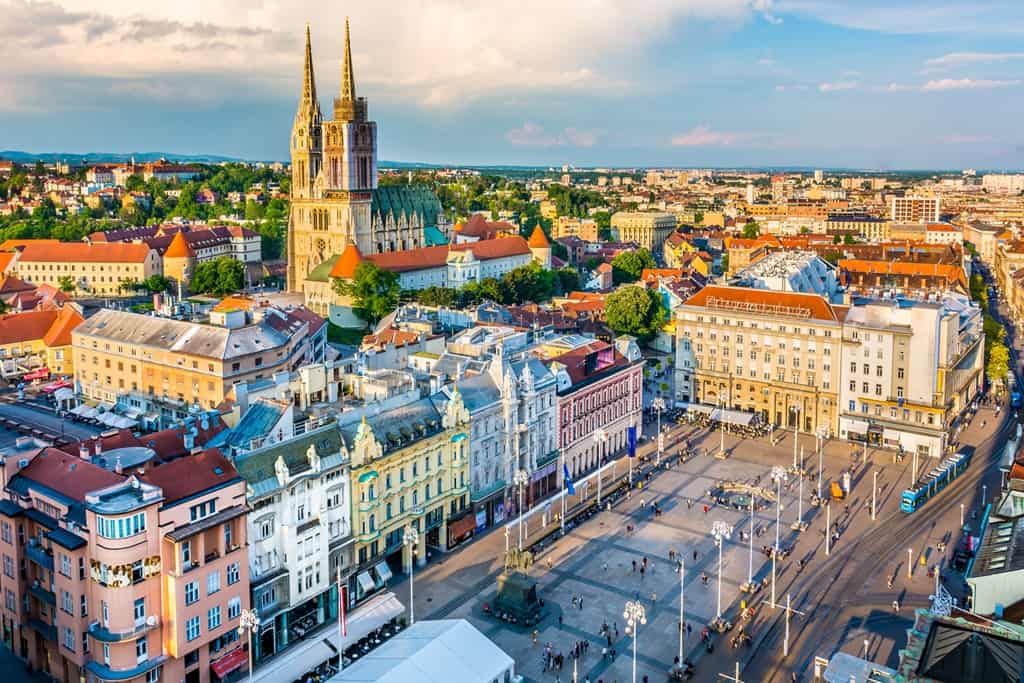
We have enjoyed many road trips, some of our favorites in fact, and we love visiting Europe with our kids to expose them to the different cultures and different scenery as well.
Quick side story: Andrzej was born in Poland and lived there until he was 18. So we have a wee bit of European blood in our family.
So let us help you plan a magical first trip to Europe.
When Is The Best Time To Visit Europe?
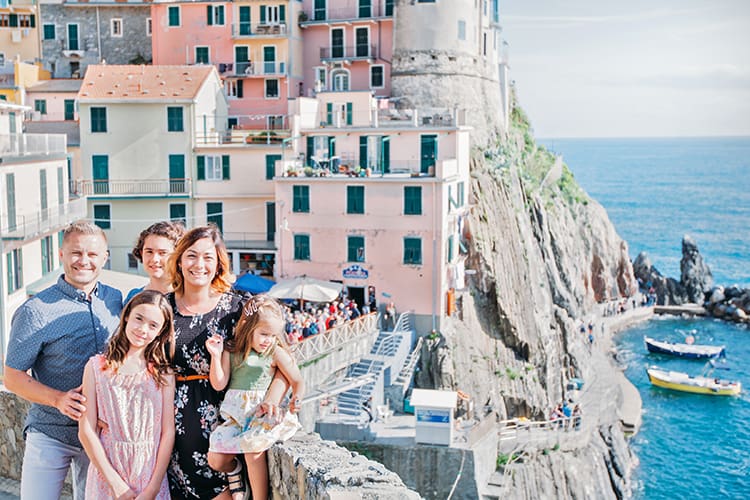
Europe is lovely right throughout the year. The continent has varied climates, like tundras in the northern countries of Sweden, Finland, and Norway.
Mediterranean countries like Portugal, Italy, and France are also great any time of the year.
Wherever you go, you’ll want to keep the seasons in mind. Better weather can mean more tourists.
Expect the summer seasons from June to September to be warmer and also more crowded.
We typically try to travel to Europe during the shoulder months, my favorite month to visit Europe is in September however read this post if you are looking for the best city to visit in Europe in December or if you are looking for the best places to visit in Europe for a weekend !
If you are after a winter holiday, look no further than Germany or Switzerland. Here is a helpful post on beautiful places in Switzerland to see on your next trip.
What Is The Cheapest Month To Travel To Europe?

Traveling to Europe can become quite pricey, but there are a few ways to curb your spending.
It’s best to travel to Europe during the fall and winter months between September and March. Although, you can expect prices to increase for December.
Here is a great post on how to travel around Europe for cheap .
Even when flying during the off-season, you’ll want to fly during the week as opposed to weekends.
Book a flight on a commercial airline as well and choose the busiest routes as they’ll be more affordable. From past research, the cheapest time to fly to Europe is in February.
Subscribe to flight alerts as this can tell you when the cheapest tickets are available so that you can book your flights ahead of time.
How Many Days In Europe Is Sufficient?
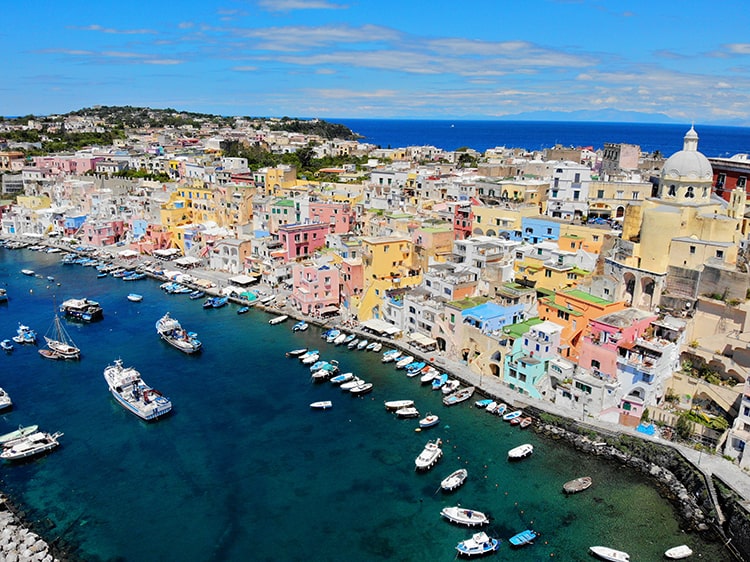
This is definitely a complicated question, especially when traveling with kids.
You would want to ensure that you’ve got enough time to see cool places and give yourselves time to rest.
But, you also don’t want to rush your stay and wish that you’d spent more time thereafter.
If you’re looking to head to bigger cities like Paris, Rome, Lisbon, Athens, and London, you’ll definitely want to plan for around three to five days .
This will give you enough time to reset after the journey and explore the major attractions in the city.
If you’re hoping to cover some of the smaller cities or towns , you’ll want to keep your trip to around one to two days long.
The smaller cities/towns are lovely for sightseeing and tend to have some of the best-unobstructed views, but they won’t always have as many attractions.
If you’re a traveling family like us, you can use the smaller cities as a pit stop on your way to bigger cities.
Visiting smaller cities in between can help you save on pricey accommodation.
As we travel from Australia, the long trip means that we typically try to go to Europe for at least 2-3 weeks at a time.
Which European Countries Are The Friendliest?
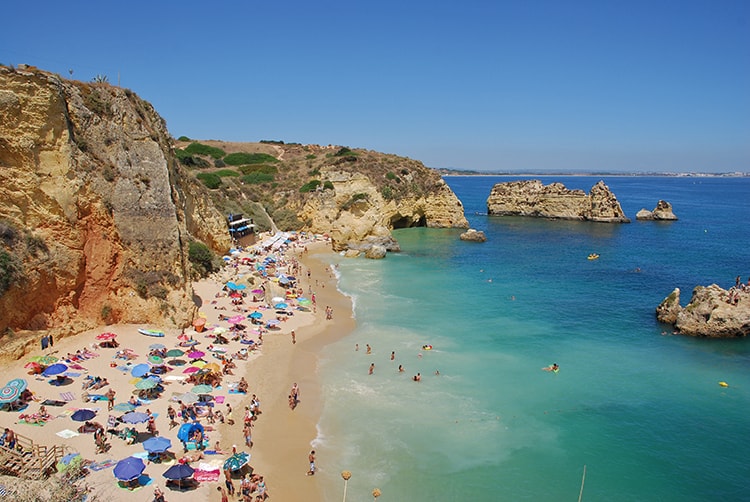
When you spend a lot of time abroad, it’s best to choose some of the friendliest European countries so that you can feel safe and have a friendly face to ask for help or directions.
Knowing that locals are approachable makes the trip all the more exciting.
According to Euronews , Portugal is the friendliest European country and is 20th globally.
Other friendly countries in Europe include Greece at 12th, Ireland at 16th, and Spain ranking 19th out of 59 countries.
Certain countries are friendlier than others. In fact, 14 European nations were in the bottom 20 for friendliness—globally!
Austria was voted the least friendly, with Sweden, Denmark, Switzerland, and the Czech Republic following closely.
So if the attitude of others towards you is something that can easily affect you, then I suggest you pick one of the friendlier countries for your first trip.
Which European Country Should I Visit First?
Choosing where to go will depend on your itinerary, how many days you’ve got to spend in any given country, and where you’re departing from.
But here’s a quick list of our favorite places. You can also find a list of the 10 best European countries to visit here. Make sure to even add a few of the best European cities to visit to your European travels!
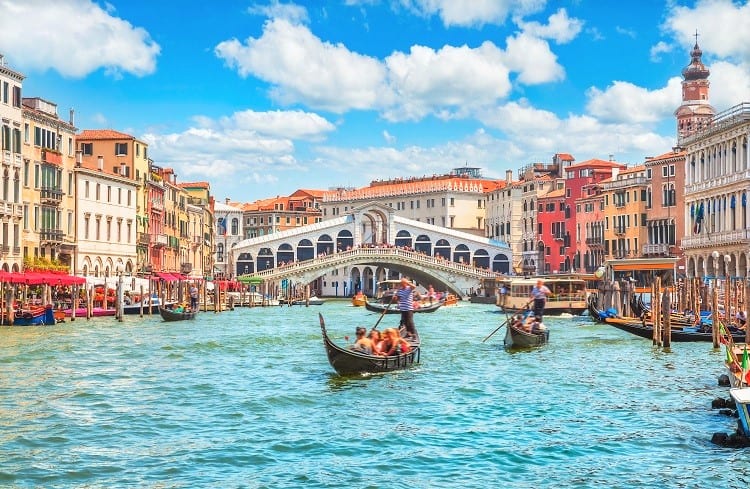
The first country you should choose to see is Italy. Some of the most colorful places to see in Europe is in Italy, plus it is also a really friendly country to visit.
We loved the beautiful scenery and enjoyed doing bucket list items like seeing the Colosseum in Rome!
Venice is also a jaw-dropping location for a romantic couple’s vacation (or even a honeymoon).
In actual fact, we love Italy so much that we have been back three times and the last time, we spent over 3 months in Italy traveling from North to South.
We love the Italian people, they are so friendly and don’t mind noisy kids. Of course, the food was an absolute delight as well.
You can’t go wrong by picking Italy for your first trip to Europe.
Use our Italy travel guide to start planning your trip and make sure to see what airlines fly to Italy for the best flights.

In my opinion, the most beautiful country in Europe might just be France.
We did a massive round trip around France and we just fell in love with the little towns and the scenery.
Of course, Paris is a beautiful location, regardless of who you’re with, but there are also stunning views from the French Riviera and Alps.
There are also a ton of things to do in France, so if you are traveling with your kids, you can rest assured knowing that your kids won’t get too bored just walking around and checking out the sights.
We took our girls to see the many castles in France and had the chance to spend some quality time in places like Colmar and Loire Valley.
You can use our France travel guide to start researching and planning your trip.
3. Greece
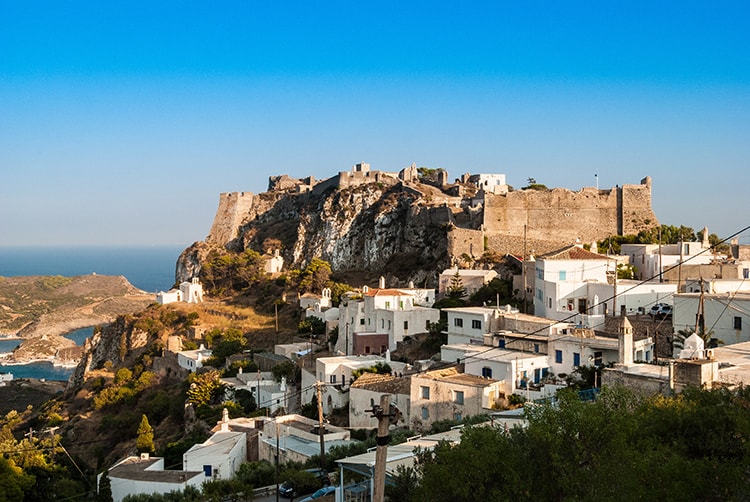
The Mediterranean is our third favorite, with Greece as our favorite country to visit. It’s a good place for family beach days.
There is quite a bit to see in Greece, like the Acropolis, Lake Plastira, and Santorini.
Throughout the 227 islands, there is a range of fascinating foods to try out.
It is also quite a popular destination as of late, so there are a ton of combo packages and affordable deals to keep you on track with your budget.
Due to its popularity, it is best to book flights as soon as possible. Here are our best airlines to fly to Greece to help you decide.
Use our Greece travel guide to start planning your trip. Another great resource is our post on the best places to visit in Greece for first-timers .
Should I Visit Europe With Kids?

Europe has always been a really popular destination for families. Europe is safe and offers plenty of baby and kid-friendly facilities.
The continent is easy to explore with kids in tow.
The best European countries for families include Italy, France, Spain, Portugal & the UK.
You can find a list of the best places to travel in Europe with kids here, or if your kids are older you might prefer our list of the best places to visit in Europe with teens
How to Plan A Trip To Europe
There are a few things you need to sort out first before planning your itinerary.
You’ll want to gather all your documents and make sure that your budget will allow you to travel to the country of your choice.
Once you know where you’re going, you can book your accommodation, airfare, and insurance, and plan your itinerary.
You’ll want to keep an eye out for any tours and affordable deals and keep tabs on any of the logistics sides of things.
1. Decide where to go and how long to go for
How long can you go away for? Once we know this, you can figure out how many destinations you can manage to visit on your Europe trip.
As a broad guideline, we recommend 3-4 nights for bigger cities and 2-3 nights for smaller towns.
Now it is time to figure out where you want to go. Are you going to focus on one country or visit multiple countries?
With the amazing network of trains and cheap flights, traveling to multiple countries in Europe is a breeze. The best part? You can visit some of the most popular cities in just one trip!
For example, why not try out Paris or Rome for a unique experience? Both cities are full of culture and history, so it’s up to you to decide which one you like more.
Make a list of all the destinations you will be visiting.
If you plan on traveling long-term to different countries in Europe be sure to check out this post on the 10 most beautiful countries in Europe for long-term travel !
2. Decide where you will fly in and out of
Now that you know where you will be going, figure out where you will be flying in and out.
You could choose to fly in and out of one destination (great if you are traveling on a budget), or fly into one destination and out of another (typically more expensive than getting return tickets in and out of the same city).
And then it is time to secure those flight tickets. Here is a helpful post full of wonderful airplane travel accessories – so helpful for long-haul flights!
- Flights to Europe: We personally book our flights on Cheapo Air, and we find that they are often the cheapest (even in comparison to Skyscanner). Click to check on prices for your flights .
3. Book your travel insurance
We never travel without travel insurance with Safety Wing.
We have claimed on our travel insurance more than once, claims that would have cost us A LOT out of our own pockets. Don’t skimp out on insurance!!
- Travel Insurance: Safety Wing offers incredible plans and is one of the few insurance companies that allow you to grab insurance when you are already traveling! Click to check on their plans and prices .
4. Book your accommodation
Now that you know which date you will be landing in Europe, you can start booking your accommodation for the trip.
- Accommodation in Europe: We always start our accommodation research with Booking.com.
- We find that Booking.com offers a fabulous range of accommodations, from luxurious resorts to home rentals (and we often find the prices for these rentals are cheaper when compared to sites like Airbnb). Click here to start your research for accommodation .
5. How will you get around?
Lastly, think about how to want to get from point A to point B. You might prefer to simply hop on a high-speed train (if that option is available for your destinations).
Or you might prefer to travel more lightly, stopping along the way at cute towns with a car rental.
- Car Rental in Europe: The best car rental company in Europe is Auto Europe. Auto Europe is a car rental booking service that quickly compares car rental prices across all the major brands like Hertz, Avis, and Europcar. Click to see prices for car rentals .
- Train Tickets: We love to purchase our train tickets through Omio. Click here to purchase your train tickets .
6. Plan your itinerary
Next, it is time to start planning what you will be doing at each destination. You can easily do that by using our country travel guides down below. This is the fun part that I love most.
7. Stay Connected
When you are traveling in Europe and especially when crossing multiple borders, you may need to get a local sim card to stay connected, and so on.
Well, there is an easier way these days, an more hustle-free.
Check out our recommended Best eSIM for Europe travel options here, and see which one is best for you and your needs.
European Countries Travel Guides
Click on the links below to read a Europe travel guide on each of these European countries:

Europe Travel Blog Posts
Click on the links below to read a Europe travel post about some of the best places to visit in Europe, travel tips for Europe as well as European Itineraries.

Top 10 European Countries To Visit For First-Timers!
Discover the top 10 European countries for first timers. Explore iconic cities, rich cultures, and stunning landscapes. Plan your perfect European adventure with our expert guide.
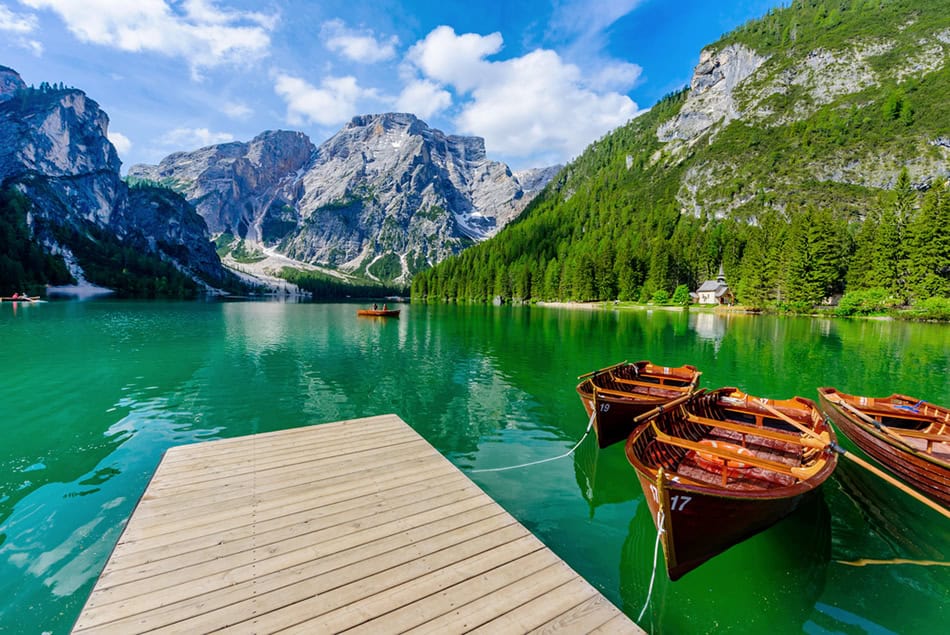
15 Most Beautiful Lakes in Europe That Will Leave You Speechless
Discover the 15 most beautiful lakes in Europe, from serene alpine waters to stunning coastal lagoons. Explore these natural wonders and plan your perfect lakeside getaway.
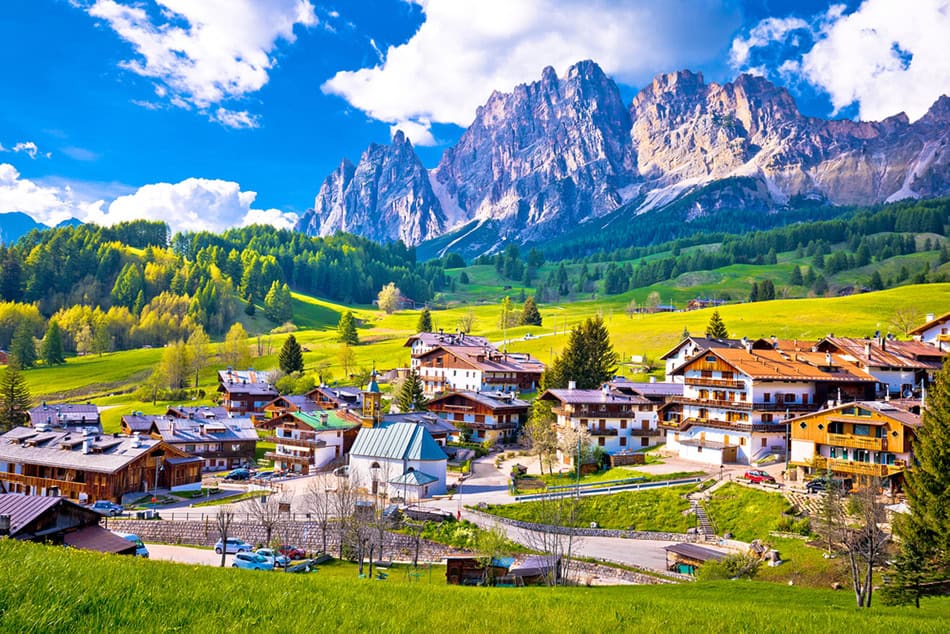
15 Best Mountain Towns in Europe With Breathtaking Views
Discover the 15 best mountain towns in Europe, from charming Alpine villages to scenic Dolomite retreats. Explore picturesque landscapes, outdoor adventures, and rich cultural experiences in these stunning mountain destinations.
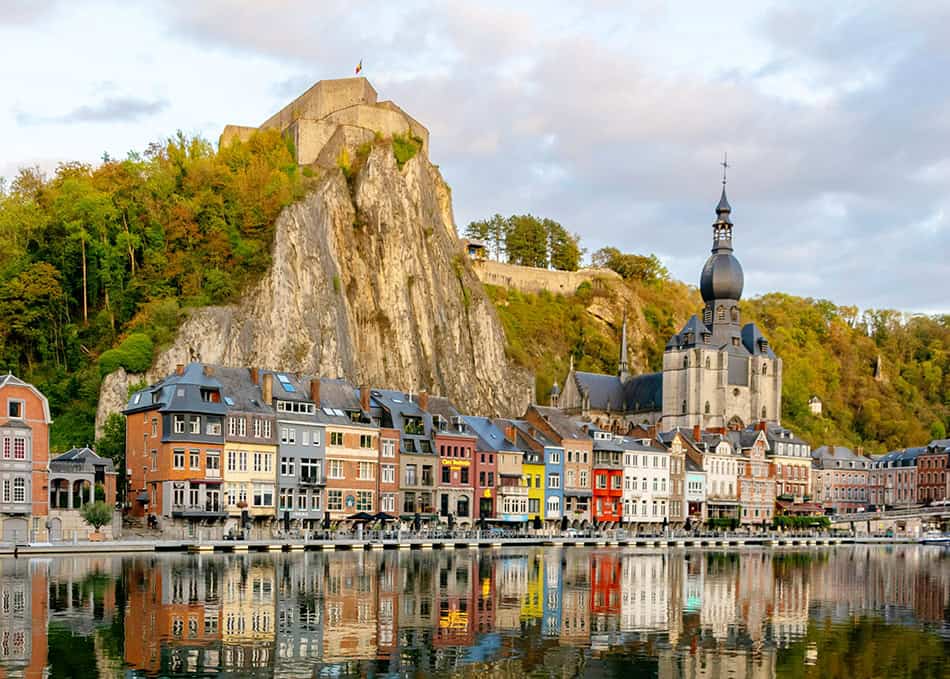
15 Most Picturesque Towns in Europe – So Pretty, It’s Almost Unreal!
Europe is home to some of the world’s most beautiful and picturesque towns, each with its own unique charm and character. Whether you’re drawn to … CONTINUE READING
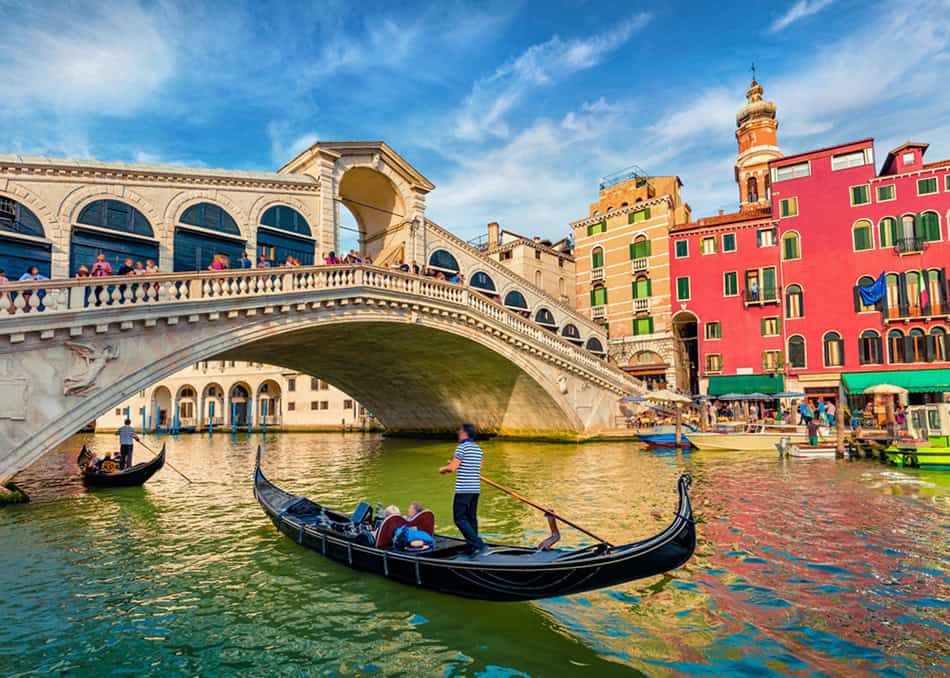
15 Once-in-a-Lifetime Experiences in Europe You Can’t Miss!
Europe, a continent steeped in history and brimming with diverse cultures, offers a treasure trove of extraordinary experiences that can truly be described as once-in-a-lifetime. … CONTINUE READING
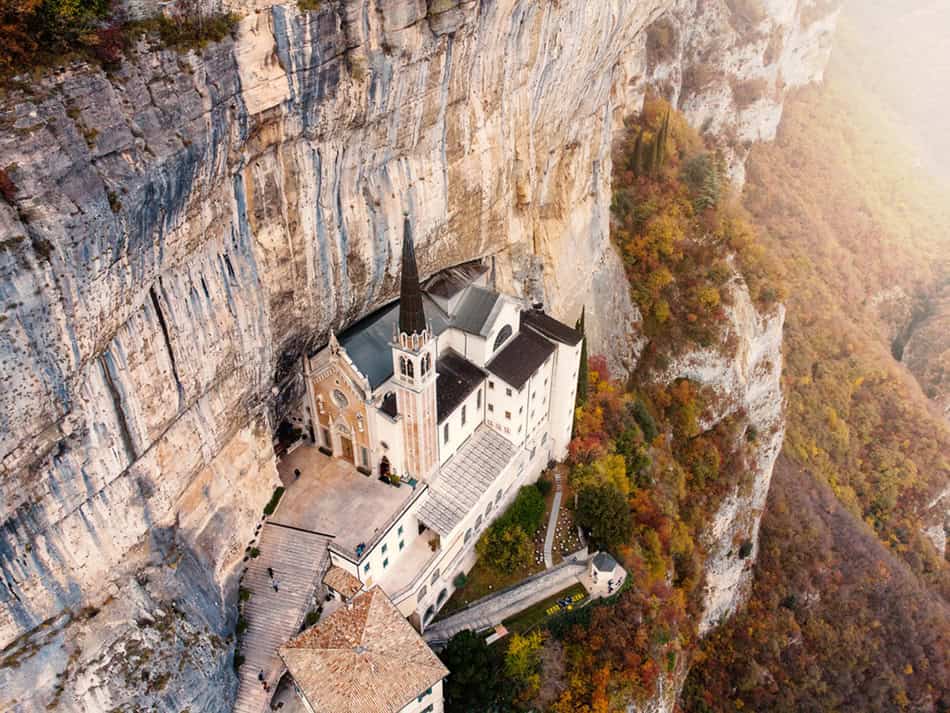
15 Most Unusual Places To Visit in Europe That Defy Imagination
Europe is a treasure trove of unique and unusual destinations that often fly under the radar of typical tourists. From otherworldly landscapes to architectural marvels … CONTINUE READING
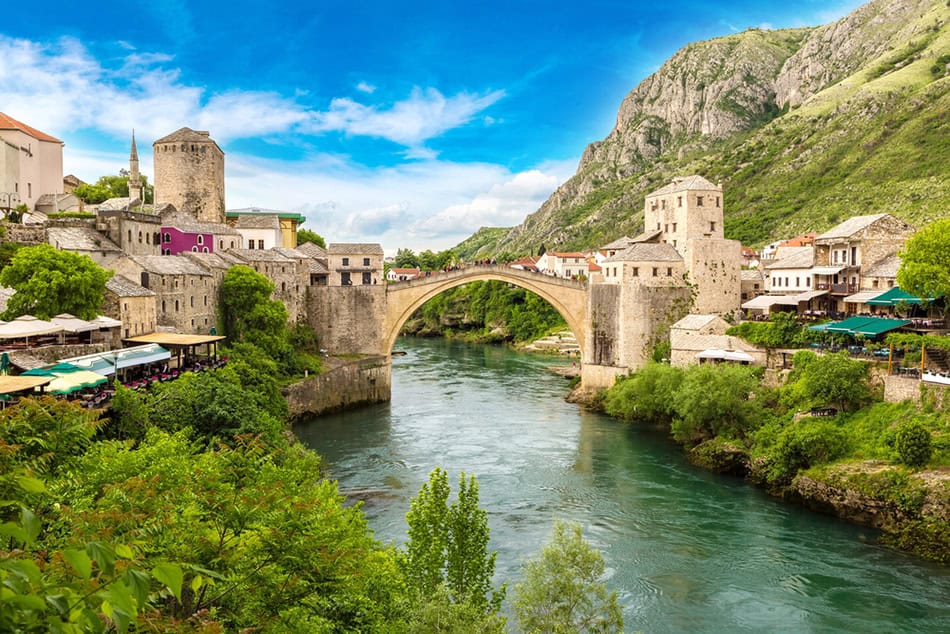
Most Underrated Countries in Europe – Some You Never Heard Of!
Beyond the iconic landmarks and bustling capitals lies a Europe less traveled, filled with breathtaking landscapes, rich cultural tapestries, and unforgettable experiences. These underrated European … CONTINUE READING
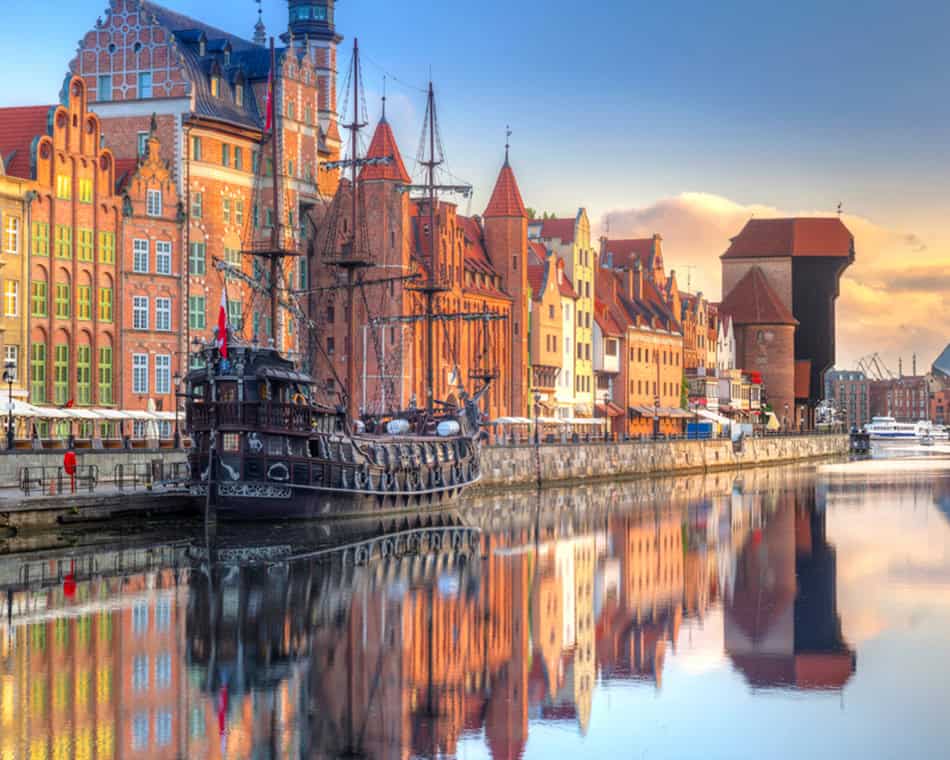
Where the Experts Go: 35 European Cities That Never Disappoint
Are you curious about the best European cities worthy of exploration? I’ve got you covered! Europe is a continent with a vast selection of countries, … CONTINUE READING

20 Natural Wonders in Europe That Will Take Your Breath Away
Europe, a continent rich in history, culture, and natural beauty, hosts some of the world’s most stunning natural wonders. Europe’s landscapes are diverse and magnificent, … CONTINUE READING
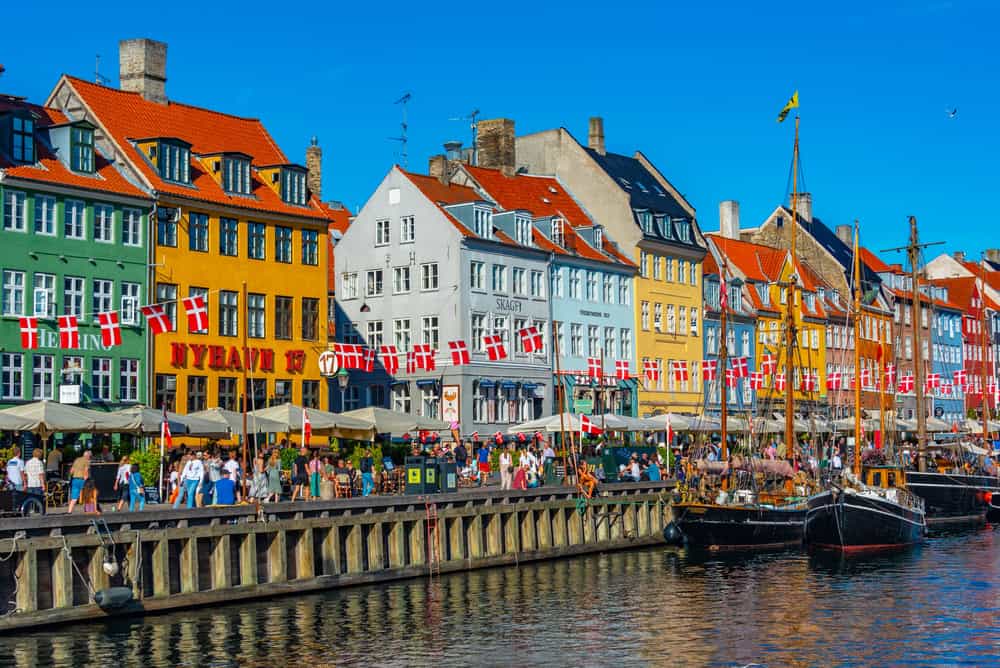
15 Most Colorful Places in Europe To Brighten Your Travel Itinerary
Embarking on a journey through the most colorful places in Europe is like stepping into a vibrant tapestry of cultures, history, and natural beauty. From … CONTINUE READING

10 Friendliest Countries in Europe: A Warm Welcome Awaits
Are you curious to know which European countries are the friendliest? Embarking on a European adventure can be a lifetime experience, but the warmth of … CONTINUE READING
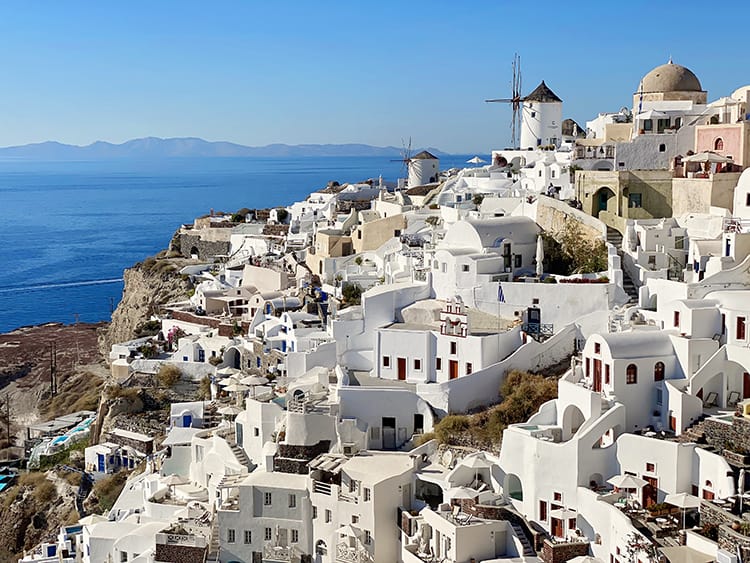
Top 10 Most Beautiful Countries in Europe for Long Term Travel
Have you been wondering most beautiful countries in Europe? I’ve got you covered! If you’ve ever dreamed of spending months at a time exploring Europe, … CONTINUE READING
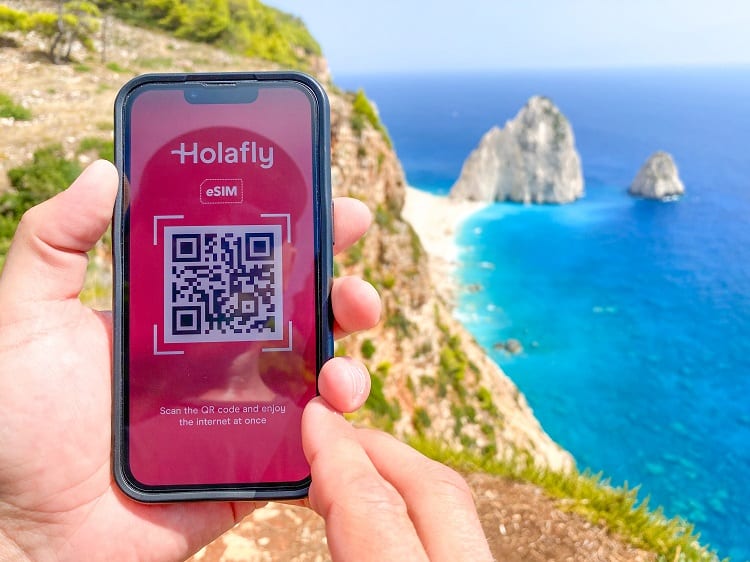
Quick Europe eSim Comparison Guide for 2024
After the best eSIM for Europe travel in 2024? We got you covered! Exploring Europe is an incredible experience, with its stunning destinations that span … CONTINUE READING
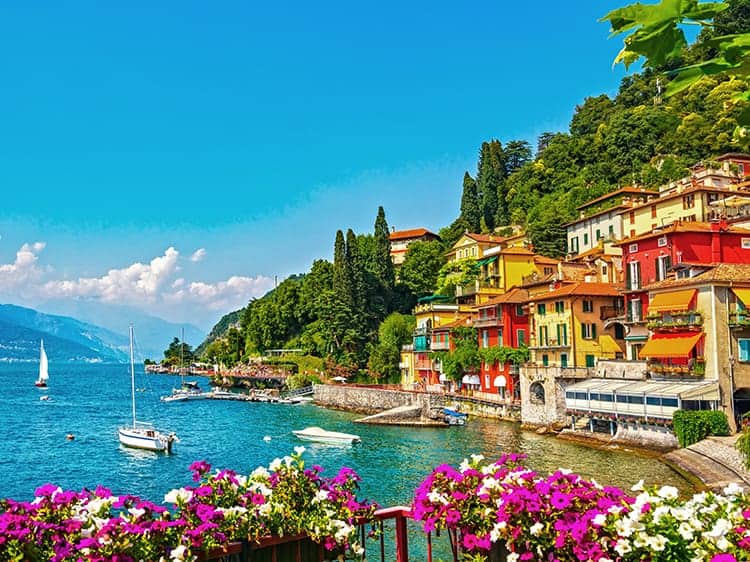
35 Best Weekend Trips in Europe (Plus Where to Stay)
Have you been wondering about the best weekend trips in Europe? I’ve got you covered! Weekend trips in Europe can be a truly magical experience. … CONTINUE READING

37 The Best European Cities to Visit in 2024 (Picked by Bloggers)
Curious about the best European cities worthy of exploration? I’ve got you covered! Europe is a continent with a vast selection of countries, cultures, and … CONTINUE READING

Travel Experts Spill: 17 Best Airlines To Fly To Europe in 2024
Looking for the best airlines to fly to Europe? We got you covered. How can we determine the top airlines for flying to Europe? The … CONTINUE READING
15 Of the Absolute Best Places to Visit in Europe With Kids
Whether visiting attractions or enjoying a gelato (or three), Europe with kids is the perfect opportunity to build memories with your quickly sprouting squad. When … CONTINUE READING
Holafly eSIM Review (All About Holafly Europe Travel)
When traveling through Europe, it’s ideal that your phone has easy access to the internet, so you’re never left in the dark. In our Thailand … CONTINUE READING

25 Best European Cities to Visit in December
Visiting Europe in the winter may not be on the top of your travel destination list, but many of the cities listed here are full … CONTINUE READING
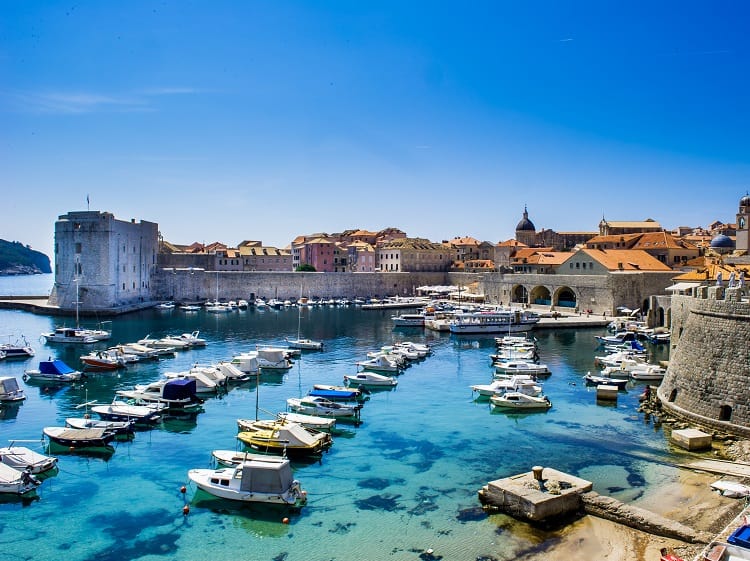
5 Best European Summer Destinations For Families
If you are looking for a family summer vacation and you are craving a European holiday, you will be excited to know that Europe is … CONTINUE READING

5 Best Places To Visit In Europe With Teens
As a parent, you want to provide experiences that your teens will remember long after they’ve grown up and moved on. If you are looking … CONTINUE READING
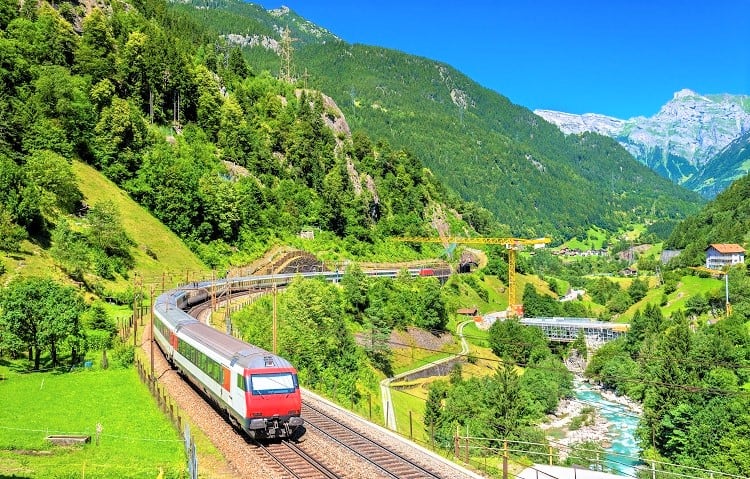
Looking For Cheap Ways To Travel In Europe? Here Is Some Tips
The question of getting around whilst traveling in Europe has always been a significant concern for a lot of tourists and people moving to Europe … CONTINUE READING

5 Best Places To Visit In Europe In December With Family
Looking for the best European cities to visit in winter with kids? Here are our top picks for this year! Winter in Europe has plenty … CONTINUE READING
After travel guides on destinations other than Europe? A good place to start is on our Wanderlust Storytellers homepage .
2024 - Wanderlust Storytellers. All Rights Reserved.
About Us | Contact Us | Work with Us | Privacy Policy | Disclaimer
* Disclaimer: Wanderluststorytellers.com is a participant in the Amazon Services LLC Associates Program, an affiliate advertising program designed to provide a means for sites to earn advertising fees by advertising and linking to amazon.com and other Amazon sites.
Travel Europe on a Budget
The Savvy Backpacker
With The Savvy Backpacker
City guides .\33 a132798-3f3b-4585-954d-7e70cf863447{fill:#231f20}, free online city guides, welcome to the savvy backpacker.
Hi, I'm James and I've been teaching people how to travel Europe on a budget since 2010. I created The Savvy Backpacker to be the most comprehensive resource for planning your trip to Europe. Join me to learn more about the best travel backpacks, train travel in Europe, curated packing lists, European city travel guides, cheap data plans, itinerary planning, and money-saving strategies to help you plan a trip to Europe on a budget.

My Popular Europe Travel Articles
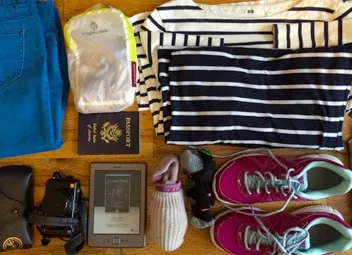
Europe Packing List For Women
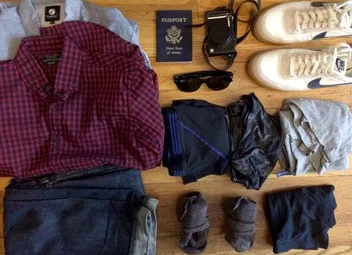
Europe Packing List For Men
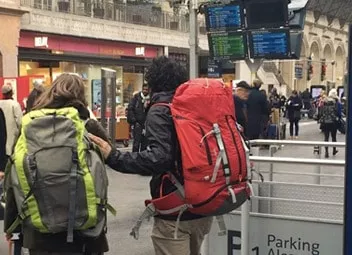
The Best Travel Backpacks
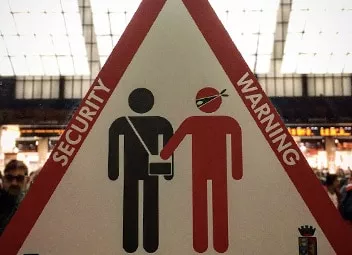
Avoiding Pickpockets and Travel Scams

How To Choose The Best Travel Insurance

How Much To Budget For Traveling Europe

Europe City Price Guides

Guide To Train Travel In Europe
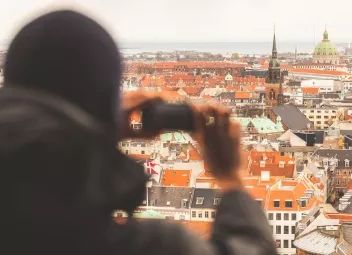
How To Get Cheap Mobile Data In Europe
Most recent travel articles.
Transportation
How To Buy Train Tickets in France | Guide To Buying French Train Tickets
July 26, 2024
What you need to know about booking train tickets in France and tips for getting the cheapest prices.
France Train Guide — How To Travel France By Train
July 25, 2024
How to travel France by train—tips for buying French train tickets and advice for navigating France by rail.
Budget Travel Newsletter
The best budget travel tips sent straight to your inbox.
Join My Journey
Europe travel tips, advertising & privacy policies.
TheSavvyBackpacker.com is a participant in the Amazon Services LLC Associates Program, an affiliate advertising program designed to provide a means for sites to earn advertising fees by advertising and linking to amazon.com.
© 2010 - 2024 The Savvy Backpacker
Website Design by FHOKE

Europe Travel Guide
Last Updated: August 26, 2024

From beautiful Paris to smoke-filled coffeeshops in Amsterdam, Oktoberfest to La Tomatina, Europe is a massive, diverse continent with an unlimited assortment of things to see and do. You won’t have any problem filling your time, whether you’re backpacking Europe for a few months on a budget or just spending a few weeks there on a well-earned vacation.
The continent boasts wonderful beaches, historical architecture, amazing wine, and tons of world-class festivals. Every country is incredibly different from the next too, providing limitless variety in what you do during your trip.
I first backpacked Europe in 2006 and was hooked immediately. I’ve been visiting every year since, have run tours around the continent, and even wrote a book on traveling in Europe . It’s a destination I love and never get tired of exploring.
This guide will give you an overview of Europe and the tips and tricks you need to start planning your trip. I’ve also written extensive travel guides to each country on the continent (linked below in this post) so you can get more in-depth information for your specific itinerary too!
Table of Contents
- Things to See and Do
- How to Stay Safe
- Where to Stay
- Typical Costs
- Suggested Budget
- Money-Saving Tips
- How to Get Around
- Best Places to Book Your Trip
- Related Blogs on Europe
Click Here for City Guides
Top 5 things to see and do in europe.

1. Tour the Greek Islands
These islands are the mecca of summer beach fun and each is unique in its own great way. There’s Ios (beach party central with archeological ruins and awesome boat tours); Kos (ancient ruins and nature); Crete (Bronze Age ruins of Knossos, hiking, beaches, and wine), Santorini (iconic blue water, white buildings, and local wineries); Mykonos , (the upscale party island with beautiful beaches, villages, and sunsets), Naxos (best island in the Cyclades). Plus, Milos, Corfu, Lemnos, Zakynthos, and so many more! With hundreds of islands in the country, you can always find what you are looking for!
2. Ride the rails
Europe is famous for its international rail system. Rail passes like the Eurail Pass have been around forever and still make it very easy to get from country to country on a relatively small budget (and with lots of flexibility). Europe has some of the fastest trains in the world that travel up to an incredible 217 mph (350 kph). The whole continent is connected by trains and there’s a growing push for even more connections and long-distance, high-speed trains in order to reduce flying and help combat climate change. There’s nothing more quintessential than riding the trains in Europe and I encourage you to take as many trains as possible. It’s one of the best ways to see the continent.
3. Get lost in Paris
The “City of Lights” is everything people say it is. I fell in love with it the first time I stepped foot in Paris . The city is just magical. You have a ton of museums, cafes, jazz clubs, famous art, and beautiful architecture. I love just strolling around the streets of the Quartier Latin (Latin Quarter) or Montmartre neighborhood as it makes for a breathtaking day. Another one of my favorite things to do here is just sit in the Jardin des Champs-Élysées park and picnic like the Parisians. For something a bit different, check out the famous Catacombs and Paris Sewer Museum. With so much to offer in the way of culture, history, and gastronomy, it would take years to see everything here but you can still get a good feel of the city in a few days.
4. Go city hopping
There are so many amazing cities in Europe that we’d need a top 100 to list them all. Here are some of my personal favorites and must-see cities: London is rich in history, culture, and the famous Big Ben clock; Edinburgh is a vibrant medieval city with cozy pubs and a famous castle with a huge New Year’s Eve Party; Amsterdam has cozy coffee shops and canopied tree-covered canals; Berlin has a wild party scene, street art, and the Berlin Wall; Barcelona has tapas, beach, and unique Gaudi architecture; coastal Lisbon has colorful tiles, old tramcars, cobblestone streets and plenty of fresh seafood; Prague has a beautiful intact Old Town, incredible architecture and eclectic bars; Tallinn Estonia has beautiful medieval buildings with colorful roofs. Florence is a mecca for Italian Renaissance architecture, art history, and gelato; Stockholm mixes medieval architecture and modern art and design. Crisscross the continent, take in the culture, and enjoy all the historic cities!
5. Hit the Alps
Whether you go skiing in the winter or hiking in the summer, the Alps hold some of the most breathtaking views in all the world. You don’t even need to be an expert hiker because there are mountain trails for all levels and crystal-clear Alpine lakes. Check out the spectacular Eibsee trail loop in Bavaria at the foot of Die Zugspitze, Germany’s tallest mountain, for the clearest, multi-colored, sparkling lake you’ve ever seen. Or the Männlichen Kleine Scheidegg Panorama trail in Switzerland’s stunning green and snow-capped Alps. Or visit Italy’s Dolomites in South Tyrol for the scenic Seceda trail. The Alps have trails for every fitness level and in every season.
Other Things to See and Do in Europe
1. tour amsterdam.
I love Amsterdam so much that I lived here for a short period of time in 2006. Here cobblestone and brick streets weave around lovely canals as people ride their bikes to and fro. My favorite things to enjoy here are Amsterdam’s vibrant art and music scene and there are also a ton of interesting museums here like the Anne Frank House, FOAM, the history museum, and the hemp museum. Be sure you get out of the center into Jordaan and Oost with their wonderful outdoor cafes and fewer tourists. Also, a visit to Amsterdam wouldn’t be complete without a canal cruise to visit the many islands and there are many to choose from that include snacks and drinks, sunset cruises, live guided tours, and more.
2. Hang out in Barcelona
Barcelona is a city that goes 24 hours a day, 7 days a week. It truly could give NYC a run for the “city that never sleeps” title. Be prepared for late-night dinners and parties until dawn. Besides a great food and nightlife scene, there is a wonderful beach, tons of Gaudi architecture (including the fairytale-like Parc Güell, as well as the iconic Sagrada Familia , which has been under construction for over 100 years!), incredible food tours, one of the best history museums in the country, and lots of outdoor spaces. What I love about Barcelona is that when you’re ready to chill, you can wander around Parc de la Ciutadella and marvel at the majestic fountains, plant life, and buildings created from an ornate military fortress.
3. Visit Berlin
Hip and trendy Berlin is an energetic destination. It is one of Europe’s most affordable capital cities, with a vibrant music and art scene and a growing foodie movement. Be sure to spend some time learning about the city’s darker history via the many excellent museums, memorials, and landmarks. The East Side Gallery, a section of the Berlin Wall that’s now painted with murals, and the Memorial to the Murdered Jews of Europe are two especially powerful reminders of Germany’s past. For all periods of German history, don’t miss the Deutsches Historisches Museum (German Historical Museum) – it’s one of the best history museums in the world. Once you’ve had your fill of history, relax in Berlin’s many green spaces, from Tempelhof Field, the site of a former airfield and popular local hangout spot, to Tiergarten, a tree-covered former hunting ground for 17th-century aristocrats.
4. Drink beer at Oktoberfest
Oktoberfest is a must for anyone going to Germany at the end of September. While not a budget option since beers now cost 15 € a maß, I love the energy and friendly camaraderie this event inspires. For two weeks, millions of people from all over the world gather for lots of beer, excitement, music, and wild fun. Watching thousands of people sing together, raising quart-sized beer mugs for endless toasts, and enjoying the general party atmosphere makes you feel good about the world. (Or maybe that’s just the beer?) Just be sure to book your accommodation well in advance and be prepared to pay top prices for them. If you don’t have an outfit, don’t worry, there are plenty of shops even at the main train station where you can buy a Bavarian dirndl dress and men’s lederhosen.
5. Experience London
Get a taste of English culture in diverse London . The museums here are some of the best in the world (most are free) and include the Tate, the British Museum, the City Museum, the National Gallery, the Historical Museum. There’s no shortage of iconic sights here as well, with Big Ben, the House of Parliament, the London Eye, the Tower of London, Tower Bridge, and of course, Buckingham Palace. I love London’s diversity because of the countless international eateries with great food and wonderful pub culture, perfect for after a long day seeing the sights. Head to Brick Lane on the weekends for some amazing food and craft markets. I prefer Paris to London, but there is something sophisticated and fun about London. Just watch those pints — London is not a cheap destination!
6. Get outdoors in Scandinavia
My favorite region in Europe is Scandinavia. The quality of life here is high, the people are beautiful and friendly, and the cities are clean and historic. Cycling the cities, taking canal tours, hiking the vast forested areas, archipelago hopping, enjoying fika (a Swedish coffee break), and warming up in saunas are just a few of the popular activities that await you here. True, this area of Europe is not cheap, but there are plenty of ways to reduce your expenses. Don’t let the high prices scare you away. Highlights for me include Copenhagen , Stockholm , Gotland, Norway’s fjords, and Lapland in Finland .
7. Get enchanted in Prague
Prague has an amazing history and is one of the most beautiful and picturesque cities I’ve ever seen. Highlights include the 9th-century Prague Castle, the magnificent Charles Bridge (built in the 14th century and one of the oldest standing bridges in the world), the 10th-century old square with its iconic astronomical clock, and the winding Jewish Quarter. Even if you only have a few days there don’t miss the free walking tour which is one of my favorites in Europe and the best way to learn about the Old Town and the tragic history of the city that went from thriving Bohemian capital of art, music, and literature to part of the Iron Curtain after WWII. Some of my favorite gems here include the fantastic black light theater shows in 4D and the one-of-a-kind medieval dinner show in an old tavern complete with musicians and jugglers not to mention hearty food and drinks. During the weekends it heaves with people enjoying the bars, cheap beer, and delicious food so try to visit during the week (and in the spring or fall) to beat the crowds.
8. Relax on the French Riviera
Here, you can pretend to live the high life for a little bit. Have fun in the sun, relax on the beach, swim in azure blue water, hobnob with the rich and famous, and sail on (or gaze at) gigantic yachts. As for cities, Nice is nice with its palm-tree-lined promenade, old town, and many art museums. If you want to go see how the rich and famous live, spend an afternoon checking out Cannes to soak up some glamorous vibes on La Croisette where they hold the famous Cannes Film Festival. The kingdom of Monaco with its tiny streets, beautiful buildings, and world-famous casino is just a skip away too.
9. Enjoy the great outdoors in Interlaken
Located in the beautiful mountains of Switzerland, Interlaken is a gorgeous place to unwind with fantastic hiking, delicious hot chocolate, and plenty of outdoor sports. The area is full of natural attractions to explore, including the St. Beatus Caves (complete with a legendary dragon), the cascading 500-meter-high (1,640 feet) Giessbach Waterfalls, the Jungfraujoch mountain railway (which leads to the highest train station on the continent), and a plethora of lakes (hence the town’s name). It’s a good alternative to all the cities and museums. Interlaken is also a popular party destination for backpackers and other young travelers. By far, my favorite scenic and visually stunning trail was the Oberberghorn panoramic hike, where you can wander the green mountain ridge ogling the amazing views and the turquoise-blue Brienzersee.
10. Experience history in Rome
In this thriving historical city, you can’t walk two feet without stumbling over a ruin, making Rome a history buff’s dream. Its tiny streets are perfect for wandering as you explore the Colosseum, see the Forum and Palatine Hill, visit the Pantheon, spend time in Vatican City, admire the Spanish Steps, and toss coins into the famous Trevi Fountain. The skip-the-line tickets can definitely be worth it so you don’t waste time waiting outside attractions. Rome also has amazing food (it’s Italy, after all) and nightlife. Visit the Trastevere area for a taste of “local” Rome and chill bars. It’s my favorite area in the city because you feel like you’re in a small village in the middle of a big city.
11. Hike around the Cinque Terre
Cinque Terre is my favorite part of Italy. These five beautiful cliffside towns are perched near warm waters and beautiful olive and grape groves. There are wondrous and strenuous hikes in these hills; for a real challenge, take trail #8. Or just walk the coastline for something less difficult. Many activities here revolve around the coastline: kayaking, swimming, having a beach picnic or visiting the Technical Naval Museum. If you happen to be here in December or January, don’t miss the Nativity Manarola, the world’s biggest lighted nativity scene.
12. Tour Krakow
Krakow looks like it stepped out of a medieval postcard. It’s a hip, trendy, and youthful city that’s the center of education in Poland, meaning there are a lot of university students here. Most travelers come to party here (the vodka is cheap) but try to enjoy the city’s history and food besides just the bars. Walk the Royal Road through the Old Town to the 13th-century Wawel Castle, tour Schindler’s Factory (where Schindler saved over 1,200 Jews during World War II), and visit the sobering Auschwitz-Birkenau concentration camp. You can also take a fascinating day trip to the UNESCO World Heritage Wieliczka Salt Mine, a 13th-century mine with cavernous chambers, statues, chapels, chandeliers, and cathedrals all carved out of salt.
13. Visit the ruin bars in Budapest
The coolest nightlife in all of Europe is found in Budapest . Built in abandoned buildings, ruin bars feature funky art installations, repurposed furniture, and quirky decor. They are amazing, fun, and great places to meet locals, as people of all ages flock here. Open since 2001, Szimpla Kert is the original ruin bar and one of my favorites, along with Instant-Fogas Complex, which takes up an entire building and is actually many different bars in one. Don’t skip the ruin bars — they’re one of the most unique things about the city!
14. Explore Cornwall
The best part of England is outside London, yet unfortunately, not a lot of travelers leave London. Head west to the area of Cornwall for cheaper prices, welcoming locals, natural beauty, great hiking, rolling hills, plenty of medieval castles, and picturesque small towns. If you like biking, the Camel Trail from Bodmin to Padstow is worth the trip and you even pass by a local vineyard. It’s an easy way to spend a day (and it’s pretty flat so it’s not too hard to do.) Plus, I had the best fish and chips in Cornwall! Overall, it’s what you think of as “traditional England.”
15. Walk the Camino
El Camino de Santiago (The Way of Saint James) is an ancient pilgrimage route that stretches from France all the way across northern Spain. It is a 500 mile (800 km) trail that winds through incredible terrain, ending in Santiago de Compostela at the cathedral where St. James is supposedly buried. As a pilgrim, you get a “pilgrim’s passport” which allows you to stay in affordable pilgrim-only hostels, making this a surprisingly budget-friendly adventure. While it usually takes over a month to complete, you can just walk a section if you don’t have the time. To receive a “Compostela” (certificate of completion), you just need to walk the last 62 miles (100 km), which generally takes 4-5 days.
16. Throw tomatoes during La Tomatina
By far my favorite festival, the largest food fight in the world happens during the last Wednesday of August in Bunol, Spain. What started in 1945 as a local brawl has turned into a massive event drawing tens of thousands of people from all over the world. For about an hour, everyone throws tomatoes at each other, leaving streets ankle-deep in tomato juice. Afterward, everyone walks down to the river, cleans off, and then heads to the town square for sangria and music.
17. Find Dracula in Romania
Not a lot of people visit Romania but this underrated country in Eastern Europe has undiscovered yet picturesque medieval towns like Brasov (home to “Dracula’s castle”), Sighisoara, and Sibiu; gorgeous beaches on the Black Sea; and incredible hiking in the Fagaras Mountains — all at dirt-cheap prices. Other major sights include frescoed Byzantine monasteries, the steepled wooden churches of Transylvania, the hip university town Cluj-Napoca, the post-communist capital of Bucharest, and the Danube Delta, a huge nature reserve.
18. Drink whisky in Islay
Whisky has a long history on Islay , an island off Scotland’s west coast. It’s been made there since the 16th-century — first in backyards and then, starting in the 19th-century, in large distilleries. Over the years, whisky from the island came to be considered a specialty and was used to flavor a lot of other blends on the mainland. There are currently nine working distilleries on the island, all located along the island’s shores, with Laphroaig, Ardbeg, and Lagavulin being the most famous. Most distilleries here make single-malt Scotch, meaning that only one type of grain (barley) is used. My visit here was amazing and, even if you don’t like whisky, there are tons of good hikes and walks throughout this magnificent island.
19. Explore Iceland
Iceland is a magical country with majestic waterfalls, hidden hot springs around every corner, and sweeping vistas unlike anywhere else in the world. After my first visit, the country quickly became one of my favorite countries. With whale watching in the summer, the northern lights in the winter, and geothermal baths for soaking in year-round, there really is no bad time to visit! While Iceland’s main draw is the epic natural landscapes, it’s worth spending a couple of days in Reykjavik with its café culture, artsy feel, and brightly colored wooden row houses.
20. Sail the Croatian coast
With calm winds, short distances, a coastline littered with over 1,000 islands, and countless historical sites, Croatia is one of the world’s best sailing destinations. If you can, go during the shoulder season when you can find some great deals. Plan to stay at least a couple of days on one of the islands, with the most popular being Brac, Hvar, Krk, Cres, and Lošinj. However, don’t be afraid to get off the beaten path and explore some of the lesser-known islands such as Silba, Vis, and Lastovo. If you want to splash out and spend a week partying on a yacht, check out The Yacht Week, which hosts week-long parties, complete with DJs, from May-September. You can book a full boat to share with friends or just a cabin if you’re traveling solo. Prices start at 5,250 HRK per person and go up to 9,300 HRK.
21. Explore the Balkans
While the Balkans have become more popular with backpackers in recent years, it’s still largely overlooked by most budget travelers, despite being an extremely budget-friendly region. The Balkan peninsula is home to great (and again, overlooked) wine, beautiful medieval towns like Kotor and Mostar, stunning mountainous landscapes, beautiful pebble beaches, coffee culture, fresh, hearty yet inexpensive food, and museums covering the area’s history, including the most recent turbulent events of the early 1990s. I especially loved my time in Albania . Don’t miss the beautiful beaches in Ksamil, nicknamed the “Maldives of Europe’ as well as the mountain village of Gjirokastër, which was occupied by Romans, Byzantines, and Ottomans. The Balkans have so much to offer for every budget and every country has its unique cultural flavor.
22. Take a wine tour in the Loire Valley
Located in central France, the picturesque Loire Valley is a UNESCO World Heritage site and stretches 280 kilometers (174 miles) along the Loire River. One of the major wine-producing regions of France, the area is home to some of the best wines in the world, with over 1,000 vineyards open to the public. Even those who don’t drink wine will enjoy the beautiful small towns, great food, and the region’s over 300 impressive chateaux. I loved the medieval Chenonceau Castle and Chateau Villandry and the small villages like Saint-Florent-le-Vieil. Spring and Autumn are my favorite times to visit because you can go biking and do outdoor activities when it’s not too hot and there are fewer people. It’s an area not to be missed.
23. See Fado in Portugal
Fado is an important musical tradition in Portugal , originating in Lisbon and stretching back some 200 years. The word “fado” likely stems from the Latin word for fate, and it’s very haunting, poetic, and emotional music. Most of the songs follow themes of loss and mourning, and the music was popular with the working class (especially sailors). Performances normally take place in restaurants during dinner. In Lisbon, head to Clube de Fado, Tasca do Chico, Parreirinha de Alfama, or Senhor Vinho.
24. Tour green Slovenia
Slovenia is one of Europe’s least-visited destinations, which is mind-blowing to me because it’s an amazing place to visit. Slovenia offers all the beauty of Western Europe but at a fraction of the cost and with a fraction of the crowds. Perfect for outdoor adventure lovers, Slovenia offers rugged mountains, untouched landscapes, fantastic ski resorts, plentiful wine, sprawling cave systems, incredible food, and postcard-perfect lakes, such as the famous Lake Bled with its castle on an island. I loved Piran, Slovenia’s often overlooked coastal Venetian-style harbor town that was actually founded 3000 years ago. Stroll around its beautiful windy cobble-stoned streets, beautiful plazas, and take advantage of the many affordable restaurants right on the water. Make sure to also spend a few days in the country’s capital, Ljubljana, known as one of the continent’s greenest and most livable cities. Take a river cruise to see the city and enjoy the friendliness of the locals.
For more information on specific cities in Europe, check out these guides:
- Albania Travel Guide
- Austria Travel Guide
- Belgium Travel Guide
- Belarus Travel Guide
- Bosnia & Herzegovina Travel Guide
- Bulgaria Travel Guide
- Czechia Travel Guide
- Croatia Travel Guide
- Denmark Travel Guide
- England Travel Guide
- Estonia Travel Guide
- Finland Travel Guide
- France Travel Guide
- Germany Travel Guide
- Greece Travel Guide
- Hungary Travel Guide
- Iceland Travel Guide
- Ireland Travel Guide
- Italy Travel Guide
- Latvia Travel Guide
- Lithuania Travel Guide
- Malta Travel Guide
- Moldova Travel Guide
- Montenegro Travel Guide
- Netherlands Travel Guide
- Norway Travel Guide
- Portugal Travel Guide
- Poland Travel Guide
- Romania Travel Guide
- Scotland Travel Guide
- Slovakia Travel Guide
- Slovenia Travel Guide
- Spain Travel Guide
- Sweden Travel Guide
- Switzerland Travel Guide
- Ukraine Travel Guide
How to Stay Safe in Europe
Europe is very safe for backpacking and solo traveling, even if you’re traveling solo, and even as a solo female traveler. Violent crimes against tourists are very rare. In fact, some of the safest countries in the world are in Europe. (I wrote a whole article about how Europe is safe to visit right now .)
That said, there are scams and petty crimes you should watch out for, especially around popular tourist landmarks. The most important thing to be aware of is pickpockets in crowds and on public transportation. Zip your bags and don’t put your mobile phone in a jacket pocket where someone could quickly take it. This should be obvious but don’t flash your money to let everyone know you have a huge wad of cash.
When choosing a hostel, look for ones with lockers. It’s always a good idea to carry around a padlock or combination lock. Most hostels are safe and travelers respect each other and I’ve rarely seen things happen to people’s valuables. Nevertheless, I always think that prevention is better.
As anywhere, the standard precautions apply (never leave your drink unattended at the bar, never walk home alone intoxicated, etc.). When at the bar, always keep an eye on your drink. Avoid walking home alone at night if you’re intoxicated.
For female travelers in particular, it’s always a good idea to have a bit of extra money on you just in case you need to take an Uber or taxi back by yourself so you don’t take unnecessary risks to save money. If you’re using apps to date people while traveling, please use common sense and meet in public places. Since I’m not a female traveler, please check out the numerous female bloggers who have first hand knowledge of this.
If you’re worried about scams, you can read about common travel scams to avoid here.
If you rent a vehicle, don’t leave any valuables in it overnight. Break-ins are rare, but it’s always better to be safe than sorry. Be aware that the UK drives on the left and that most rental cars in Europe will have manual transmissions unless you request otherwise.
When hiking, always bring water, sunscreen, and bandaids or foot plasters. There is nothing worse than being halfway up the mountain with a blister and nothing you can do about it!
Likewise, when at the coast, don’t forget not only to wear sunscreen! I can’t tell you how many times I’ve seen people get burnt to a crisp the first day. Be sure to check the weather before you depart and dress accordingly.
If you do experience an emergency, dial 112 for assistance.
Always trust your gut instinct. Make copies of your personal documents, including your passport and ID. Forward your itinerary to loved ones so they know where you are.
The most important piece of advice I can offer is to purchase good travel insurance. Travel insurance will protect you against illness, injury, theft, and cancellations. It’s comprehensive protection in case anything goes wrong. I never go on a trip without it as I’ve had to use it many times in the past. You can use the widget below to find the policy right for you:
Where to Stay in Europe
Europe has a ton of budget accommodation options. The individual country and city guides have tons of recommendations but here’s a short list of some of my favorite budget hostels and hotels around Europe:
- The Flying Pig (Amsterdam, The Netherlands)
- Hotel 54 (Barcelona, Spain)
- Generator Hostel (Copenhagen, Denmark)
- Harcourt Hotel (Dublin, Ireland)
- Castle Rock (Edinburgh, Scotland)
- Ios Palm Pansion (Ios, Greece)
- Greg and Tom’s Party Hostel (Krakow, Poland)
- Largo da Sé Guest House (Lisbon, Portugal)
- Sophie’s Hostel (Prague, Czech Republic)
- The Yellow (Rome, Italy)
- City Backpackers (Stockholm, Sweden)
For more hostel suggestions, check out this page for all my hostel posts. For hotel suggestions, check out this post .
Europe Travel Costs

Accommodation
- Hostel Dorms – 20-40 EUR per night (40-75 EUR in popular cities)
- Hostel private rooms – 80-150 EUR per night
- Budget hotels – 50-100 EUR per night (prices start at 120 EUR during peak summer months)
- Airbnb private rooms – 45-75 EUR per night
- Airbnb apartments – 75-150 EUR per night (double that in popular cities)
- Campsite – 10-40 EUR per night
These are the general prices for Western Europe. You can expect to pay more in Scandinavia, while things will be a bit cheaper in Central and Eastern Europe.
- Market lunch – 8-15 EUR
- Pre-made sandwiches – 6-12 EUR
- Sit-down restaurants – 20-40 EUR
- Casual take-out places – 15-30 EUR
- Fast food (think McDonald’s) – 10 EUR
- Beer – 6-7 EUR
- Glass of wine – 3-6 EUR
- Cappuccino/latte- 3-5 EUR
- Bottled water – 1-2 EUR
- Groceries for a week – 45-100 EUR
Expect higher food prices in Western Europe and Scandinavia.
Europe Suggested Budgets
Backpacker – 50-120 eur per day.
If you stick to hostel dorms, eat out at inexpensive restaurant most of your meals, take free tours, get a rail pass, and a few paid activities and museums, you’ll need about 100 EUR per day in Western Europe, 70 EUR in Central Europe, 50 EUR in Eastern Europe, and 120 EUR in Scandinavia.
Midrange – 70-230 EUR Per Day
If you wanted to stay in private rooms or budget hotels and not limit your spending on food or activities, you’d need about 185 EUR per day in Western Europe, 130 EUR per day in Central Europe, 70 EUR per day in Eastern Europe, and about 230 EUR per day in Scandinavia.
Upscale – 400+ EUR Per Day
This is the ground floor for luxury in Europe. You can stay in nicer hotels, eat at fancier places, rent a car or take more trains, and do whatever tours you want. You can really splash out on this budget!
Europe Travel Guide: Money-Saving Tips
Individual country guides have more specific information on how to save money in them but here are some general tips on cutting your costs while you explore Europe:
- Picnic – This continent has a lot of little shops where you can buy pre-made sandwiches or ingredients to make your own. Many supermarkets have delis as well where you can get food to go. Buy some food, eat outside, and watch the city and its people go by. It’s a much more enjoyable and cheaper way to eat.
- Eat local and cheap – Not into picnicking? Eat at local sandwich shops, pizza parlors, Maoz, Wok to Walks, and outdoor street vendors. Avoiding restaurants and eating at a lot of the local “grab n’ go” places gives you a taste of the local cuisine at a much cheaper price. If you’re really on a budget, use your creative cooking skills to prepare meals at the hostel as well.
- Stay with a local – Hostels can add up really quickly. If you don’t have any friends with whom you can stay, consider using Couchsurfing , which connects you with locals who let you stay with them for free. Plus, they tend to also have meetups to meet other locals and travelers. It’s a great way to save on accommodation and meet a local who can share their insider tips and advice.
- Camp in a garden – A very good camping service specific to Europe is Campspace , which allows you to pitch a tent in someone’s backyard for free or for a small fee (around 10-20 EUR). All of the garden owners have profiles that tell you what services and facilities they offer. Also, many countries allow wild camping (like Sweden), which can save you a fortune if you have a tent.
- Take the bus – Budget bus companies like Flixbus can take you across the continent for cheap. I personally feel it’s best for day travel as sitting up for an overnight bus isn’t really ideal for sleeping. It isn’t glamorous, but with tickets starting at 5 EUR, you really can’t complain!
- Get a Rail Pass – Eurail Passes have saved me hundreds of dollars. If you are traveling far distances and through many countries, they are a great deal.
- Take the free city tours – One of the great things about Europe is that you can find free walking tours in all the major cities. They can be a great way to see the city attractions, take in some history, and learn your bearings without spending any money. Just make sure to tip your guide at the end!
- Plan accordingly – Plan your trip around Europe so you avoid doubling back. Transportation is a big expense so proper planning can save you a lot of money (and time). Go in a straight line or a loop. Booking your accommodation ahead helps you save as well since cheap, good places unsurprisingly get reserved first. One thing I’ve learned is that waiting until the last minute means you get stuck with expensive places or cheap places no one wants.
- Fly cheap – If you know where you are going and a train won’t do, try to book flights early. You can often get round trip fares for as little as 5 EUR from many of the European discount airlines like Ryanair or Wizz. Many capital cities have smaller airports farther from the city with ‘inconvenient’ times but cheaper fares. Keep in mind you might need to factor in an early morning Uber or taxi if the busses aren’t running and you have an early flight!
- Drink less – Those 5 EUR beers add up. Hit happy hours or pick and choose when you party. Hostel bars are a good place to get cheap drinks or buy your alcohol at the supermarket. Plus, in Europe, it’s legal to drink outside in parks, plazas, by the lakes or rivers. You’ll find you can save a lot of money by not going to bars and clubs. Partying your way across the continent will destroy your bank balance in no time.
- Get a city tourist card – Many local tourism offices sell a tourism card for all their attractions, tours, and restaurants. This card gives you free entry and substantial discounts on all the attractions and tours in a city, free local public transportation (a huge plus), and discounts at a few restaurants and shopping malls. They save a ton of money. If you plan on doing a lot of sightseeing, get one of these cards.
- Rideshare – If you’re flexible in your schedule, use the ridesharing service BlaBlaCar to catch rides with locals between cities (or countries) by paying a small fee. It’s like Airbnb but for rides. I used this service in Switzerland and, not only did I save a lot of money, but I got to meet interesting people and learn about local culture and life. Drivers are verified and it’s perfectly safe, though sometimes rides cancel at the last minute (which is why you need to be flexible). Check their ratings first and try to use rides where the person has done many trips.
- Bring a water bottle – The tap water is safe to drink in most of Europe, so bring a reusable water bottle to save money and reduce your plastic use. LifeStraw is my go-to brand as their bottles have built-in filters to ensure your water is always clean and safe.
- Get a HostelPass – HostelPass is a discount membership for hostels in Europe. Members get 10-20% off select hostels around Europe, as well as perks like free breakfast or free drinks. There are discounts on tours and activities too. It’s a great way to save money if you’re bouncing around Europe as they have hostels in 18 countries around the continent.
How to Get Around in Europe

Public transportation – Transportation around most European cities is by tram, subway, or bus. Prices are typically around 2 EUR for a one-way ticket in Western Europe and closer to 1 EUR in Eastern Europe. Most large cities also have day passes available that offer unlimited public transportation. These passes are usually 5-12 EUR per day.
In large cities with international airports, there is usually a bus or train available that ferries travelers from the downtown core to the airport. Expect to pay around 5-15 EUR to get to/from the airport.
Bus – Buses are not quite as comfortable as Europe’s trains, although certain lines do have great amenities (like roomy seats and Wi-Fi). While buses are not the most efficient way to travel around the continent, they’re certainly dependable, reliable, and cheap. You can find last-minute rides for as little as 10 EUR. A route from Berlin to Munich is about 25 EUR, while Paris to Bordeaux can be as low as 16 EUR. Longer routes, like Amsterdam to Copenhagen, start at around 45 EUR.
Each country has its own national bus service, but some lines also take you long distances internationally. Megabus and Flixbus (which now owns Eurolines) are the most popular companies.
Train – Train travel is a great way to see Europe. Intercity train prices vary wildly from country to country, depending on whether you take the slow train or a high-speed train and how far in advance you book.
For example, a high-speed train from Berlin to Munich starts between 45-75 EUR and takes under four hours, Bordeaux to Paris is between 55-100 EUR and takes two hours, and Madrid to Barcelona starts between 25-85 EUR and takes two hours and thirty minutes. And the Eurostar from London to Paris can start as low as 55 EUR and go as high as 275 EUR for a second-class ticket!
A train journey from Prague to Vienna costs about 20 EUR. Prague to Krakow is an eight-hour journey and costs about 25 EUR. The two-and-a-half-hour train ride from Vienna to Budapest costs about 25 EUR. From Budapest to Krakow is an eight-hour train ride and costs about 55 EUR.
Eastern Europe intercountry trains usually cost between 45-75 USD, even when the ticket is booked last-minute. Short train rides of two to three hours cost about 25 EUR.
To find routes and prices for trains around Europe, use Trainline .
You may also want to consider getting a Eurail Pass , which allows travelers to explore Europe by providing a set number of stops in a specific time period. These passes are continent-wide, country-specific, or regional. It can potentially save you hundreds of dollars.
Ridesharing/Car sharing – If your schedule is flexible, use a ridesharing service and catch rides with locals between cities (or countries). Drivers are verified and it’s perfectly safe. BlaBlaCar is the most popular.
If you’d rather rent a car yourself and find passengers to share a ride with, use Discover Cars to find the best car rental prices.
Flying – Budget airlines are so prolific that competition helps keep fares low. You can often find tickets where the fare is just 5 EUR round-trip! Companies like EasyJet, Ryanair, Wizz, and Vueling offer mind-blowingly cheap flights throughout Europe. Book at least a month early to scoop up great deals.
Make sure that the airport they fly into isn’t too far out of your way (transportation from the secondary airport sometimes negates the savings from using the budget airline itself).
Keep in mind that you’ll have to pay to check your baggage on these cheap flights. It costs about 25-39 EUR for one checked bag. If you wait to pay for your luggage at the gate, you end up paying almost double. Travel carry-on only to avoid this added cost.
Hitchhiking – Hitchhiking in Europe is very safe, but it’s not for everyone. Hitching is quite common around the continent and I’ve met a number of travelers who have done it (I, myself, traveled this way in Bulgaria and Iceland). Some countries are very supportive (Romania, Iceland, Germany) while others may be a bit more time-consuming (Italy, Spain). HitchWiki is the best website for hitchhiking info.
Here are my suggested articles for how to get around Europe:
- 7 Cheap Ways to Travel Across Europe
- Are Eurail Passes a Giant Scam or Do They Save You Money?
- The Ultimate Guide to Finding Cheap Flights
When to Go to Europe
There’s no wrong time to visit Europe. Peak season is summer, when Europe gets crowded and August is the time most European families are at the beach so everything becomes more crowded and expensive. But the overall atmosphere and weather are great during this time, so it’s still worth visiting during peak season (just book your accommodation in advance — especially in August). Keep in mind it’s much hotter in summer so if you like AC, be sure to check that your hostel or hotel has it before you book. You can expect the most crowds in Western Europe. For this reason, I feel summer is a great time to visit the Balkans and the Baltics because many people head to the beaches in Spain, France, Italy, Croatia, and Greece.
Shoulder season is spring and fall (April-May and September-October). It’s still warm during this time but there aren’t as many crowds and prices are cheaper. This is my favorite time to visit hotspot places like Spain, Croatia and Greece, where it’s still hot enough to swim in the sea but you have way more room on the beach. It’s also a good time to go hiking in the Alps in Germany, northern Italy, Slovenia and Switzerland because it’s cooler during the day so you’re much less sweaty on the mountain without shade. The weather is good, the crowds are smaller, and the prices lower.
Winter is from November to February but in much of Central Europe, it’s wet and cold until March or April. It gets cold, even as far south as it gets (like Greece). On the other hand, the Christmas season has Christmas markets and festivals galore! Even if it’s cold, this is a cultural tradition you can’t miss and why I love Europe in December. There is hot mulled wine, sweets, and plenty of hot snacks, which vary by country. One of my favorites is Prague because the Old Town Square is lit up with a gigantic tree with aromas of crispy cinnamon pastries and mulled wine. Berlin takes their Christmas markets very seriously, so there are around 80 different markets with special themes.
Winter is fantastic in Europe for skiing and snowboarding but it doesn’t have to break the bank if you plan carefully. While Switzerland and France are probably the most famous, they are also expensive, but there are plenty of budget winter options.
Europe Travel Guide: The Best Booking Resources
These are my favorite companies to use when I travel. They consistently have the best deals, offer world-class customer service and great value, and overall, are better than their competitors. They are the companies I use the most and are always the starting point in my search for travel deals.
- Skyscanner – Skyscanner is my favorite flight search engine. They search small websites and budget airlines that larger search sites tend to miss. They are hands down the number one place to start.
- Hostelworld – This is the best hostel accommodation site out there with the largest inventory, best search interface, and widest availability.
- Booking.com – The best all around booking site that constantly provides the cheapest and lowest rates. They have the widest selection of budget accommodation. In all my tests, they’ve always had the cheapest rates out of all the booking websites.
- HostelPass – This new card gives you up to 20% off hostels throughout Europe. It’s a great way to save money. They’re constantly adding new hostels too. I’ve always wanted something like this and glad it finallt exists.
- Get Your Guide – Get Your Guide is a huge online marketplace for tours and excursions. They have tons of tour options available in cities all around the world, including everything from cooking classes, walking tours, street art lessons, and more!
- The Man in Seat 61 – This website is the ultimate guide to train travel anywhere in the world. They have the most comprehensive information on routes, times, prices, and train conditions. If you are planning a long train journey or some epic train trip, consult this site.
- Rome2Rio – This website allows you to see how to get from point A to point B the best and cheapest way possible. It will give you all the bus, train, plane, or boat routes that can get you there as well as how much they cost.
- FlixBus – Flixbus has routes between 20 European countries with prices starting as low 5 EUR! Their buses include WiFi, electrical outlets, a free checked bag.
- SafetyWing – Safety Wing offers convenient and affordable plans tailored to digital nomads and long-term travelers. They have cheap monthly plans, great customer service, and an easy-to-use claims process that makes it perfect for those on the road.
- LifeStraw – My go-to company for reusable water bottles with built-in filters so you can ensure your drinking water is always clean and safe.
- Unbound Merino – They make lightweight, durable, easy-to-clean travel clothing.
- Top Travel Credit Cards – Points are the best way to cut down travel expenses. Here’s my favorite point earning credit cards so you can get free travel!
GO DEEPER: Nomadic Matt’s In-Depth Budget Guide to Europe!

There’s a lot of free information online but do you want to spend days searching for information? Prob not! That’s why guidebooks exist.
While I have a lot of free tips on Europe, I also wrote an entire book that goes into great detail on everything you need to plan a trip here on a budget! You’ll get suggested itineraries, budgets, even more ways to save money, my favorite restaurants, prices, practical information (i.e. phone numbers, websites, prices, safety advice, etc etc), and cultural tips.
I’ll give the insider view of Europe that I got from years of traveling and living here! The downloadable guide can be used on your Kindle, iPad, phone, or computer so you can have it with you when you go. Click here to learn more about my book on Europe!
Europe Travel Guide: Related Articles
Want more tips for your trip? Check out all the articles I’ve written on Europe travel and continue planning your trip:

6 Cheap Ways to Travel Across Europe

How to (Legally) Stay in Europe for More Than 90 Days


My 13 Favorite Hostels in Europe

My Step-By-Step Guide to Backpacking Europe

Is Europe Safe to Visit Right Now?

HostelPass Review: Is This Discount Pass Worth It?
Get your free travel starter kit.
Enter your email and get planning cheatsheets including a step by step checklist, packing list, tips cheat sheet, and more so you can plan like a pro!

- Where To Stay
- Transportation
- Booking Resources
- Related Blogs

Amsterdam Guide to Taylor Swift: The Eras Tour

The Best Food & Wine Day Tour from Tbilisi, Georgia
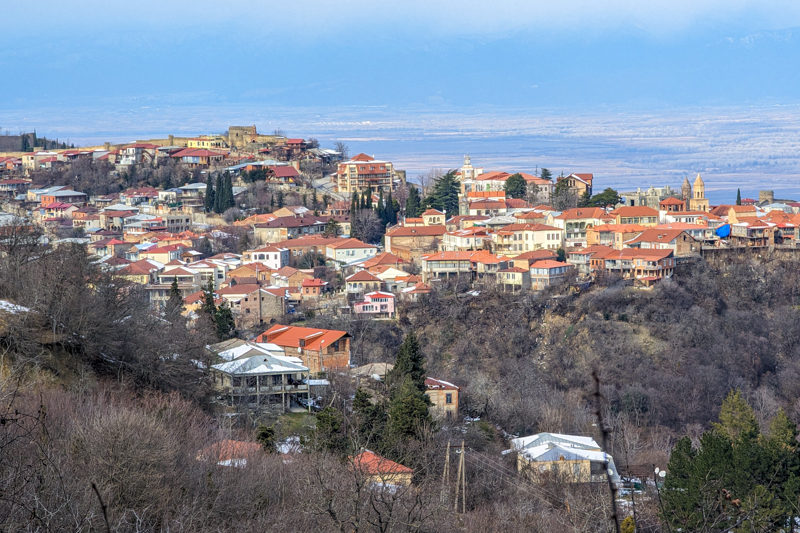
A Guide to Bee Tourism in Egypt

Visiting Cyprus – Off The Beaten Path

Mini guide on German train travel

Visiting Graz, Austria? Travel Deeper with these Travel Tips

Discover the best destinations

Watch as I share European gems through food and memorable experiences, plus you can discover my adopted home of Amsterdam with me and see what it’s like to be an expat in the Netherlands.
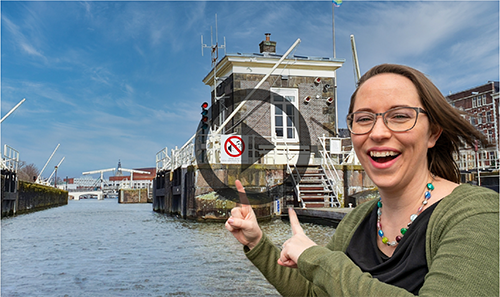
Hi, I'm Jessica
Recent posts.
Local Amsterdam Guide to the Taylor Swift: The Eras Tour...
Small Group Food & Wine Day Tour from Tbilisi, Georgia...
Explore the hidden gem of Egypt's beekeeping scene, discover the significance of bees in local economies, and meet ...

Welcome to Europe Travel Blog & Planning Guide
Planning a trip to Europe for the first time? OMG yay, we are so excited for you!
Europe is the sixth largest continent in the world, and despite its small size, it is packed with history, innovations, and 50 countries and sovereign states.
Europe is a fascinating place to explore and kick-start a travel bucket list. We are on a mission to explore all of Europe, and currently sitting at 50% of countries visited.
Europe Travel Blog: The Ultimate Guide to city guides, itineraries & tips

Disclosure: This post contains affiliate links. If you click one of them, we may receive a small commission at no extra cost to you.
Discover the best of Europe through our itineraries, detailed travel guides, and tips!
Europe is dominated by beautiful and mass popular tourist destinations like Paris , London , Amsterdam , Munich , Venice, Rome, Barcelona , and more.
Blessed with great infrastructure especially a rail network, cheaper flights, loaded historical remnants, cuisines, and unique sights – Europe is a must-visit for every traveler.
With 50 countries strong, Europe sightseeing is made easy with tons of guided tours, with the ability to see more in less time, due to geographical proximity. A few times, we crossed three countries in one day! Like wow!
Did you know, the word, “Europe” is derived from the name of a Phoenician princess – Europa
Quick Facts Travel Europe

✔️ Continent Size – Europe is the second smallest continent in the world
✔️ No of countries – 44. Of the 44 recognized countries of Europe, 27 of them belong to the European Union – a political and economic union within the continent. Citizens have an EU passport and the Euro is the official currency.
✔️ Largest & smallest – The world’s smallest country – Vatican City and the world’s largest country – Russia is located in Europe (by area).
✔️ Population – 8.545 million (2019)
✔️ Tourist Visa – Schengen and individual countries.
✔️ Schengen Area or zone is an agreement within European nations to allow free movement of people (between the participating countries). Not all EU nations are part of the Schengen Zone and vise versa.
✔️ Iceland , Norway, Switzerland , and Liechtenstein are associate members of the Schengen Area but are not members of the EU – what it means for a traveler is that – if you have a Schengen visa you can travel there, however, their official currency is not Euro.
They might accept Euros, but be ready to exchange currency or take the change in their national currency. We visited 3 of the 4 countries listed here, and they are pretty expensive as compared to other EU countries like France, Spain, or Germany) .
European Regions

🗸 Northern Europe consists of the Nordic countries, including Denmark, Finland, Iceland , Norway and Sweden, the Faroe Islands, etc. ( Scandinavia and Nordic are two terms associated with some of the countries in northern Europe)
🗸 Southern European countries include Spain, Portugal, Italy and Greece, and all the Mediterranean countries. ( Balkans is a common term used for countries in the southeastern part of Europe)
🗸 Central & Eastern Europe – The term Central & Eastern Europe is often used interchangeably and are overlapped with countries such as the Czech Republic, Poland, Austria, Slovakia, Hungary, Slovenia, and Croatia (also referred to as Eastern European countries).
🗸 Western Europe – Western Europe is often associated with World War II politics (and a term coined as a result of that). It includes countries like Germany, Liechtenstein, Luxembourg, and Austria (also referred to as “Central Europe”). But again geographically and politically, Portugal, Spain, France, Belgium, the Netherlands, the UK, Ireland, Luxembourg, Liechtenstein, Monaco, Vatican City, Italy, Switzerland, Germany, Greece, and Austria are all “Western Europe”.
The westernmost point of the European continent is Cabo da Raco, located near Lisbon (Sintra Cascais Natural Park) in Portugal.

Getting ready for Europe – Travel Visa
As mentioned earlier about 27 countries are members of the European Union, and they use the Schengen agreement to allow tourists to enter various countries. Belonging to the Schengen zone of countries means that – if you need a visa, it will be the Schengen Visa.
🗸 A Schengen visa allows you to visit these 27 countries with one ‘visa’. You have to apply for it prior to your visit. You can get a single entry to multi-entry visas.
🗸 For citizens of the United States and Canada , no visa is required. US and Canadian passport holders can enter and stay in the Schengen zone for up to 90 days for tourism purposes without a visa.
There are a few countries that follow the Schengen visa but are not EU members (like Switzerland and Iceland). Countries like Russia and Serbia have their own visa system that you need to look at prior to traveling.
Flight Tips for Europe
Being a home to many touristy places, there is no dearth of flights leaving for Europe. Here are some quick flight tips for you (+ savings and time-saving hacks!)
🗸 Main flight: Look for flights to major cities like London, Paris, Amsterdam, Zurich, Madrid, etc. They tend to have a lot of flight options from various cities of the world, and with a good frequency. You can also find direct flights, depending on the city of departure.
🗸 Star Alliance: When traveling from North America, search for Star Alliance list of partners to book connections, and save money.
Based on our experience so far, we had the best luck in these flight companies for long flights – KLM Dutch Airlines, Air France, Air Canada, Swiss Air.
IcelandAir and TAP Air Portugal are also good options – for stopovers.

Stopovers will allow you to explore the hub country/airport area and then make connections to another country in Europe. Like IcelandAir makes a stopover in Reykjavik (stay here for 48 hours or so), and then leave for London, or head to Lisbon, and then make a connection to Rome, Italy via TAP Air Portugal.
🗸 Budget Airlines: Europe is home to a ton of budget airlines from RyanAir, Vueling to many others that serve routes starting at $30 USD. We recommend using cheap flights when the train network doesn’t exist or is really expensive (like 3 times the flight cost). This way you are saving time (check-in, security, etc), plus you get to see amazing scenery outside.
Trains will also reduce carbon footprint, and allow you to pay less for luggage. Yes, note that budget flights will charge extra for bags.
Best time to travel to Europe
Europe experiences 4 distinct seasons – spring, summer, autumn/fall, and winter. And each country is different when it comes to its official seasons. Of course, there is a varied temperature too – winters are not the same everywhere.

Typically, the seasons are as follows,
- Spring: March to June
- Summer: June to September
- Autumn/fall: September to November
- Winter: December to March
There are variations in temperatures, as you move from the south to the north end of the continent. But Europe has it all – ski resorts, winter warm destinations, beaches, cities, and everything in between.
🗸 Summer Months – The summer months are the most popular time to visit Europe. It is usually the peak season for tourism, and attractions, hotels, and restaurants are easily packed.
During this time, the days are longer, the weather is warm. When visiting in the summer, we recommend making reservations early for hotels, tours, and for any festivals that you might have on your Europe bucket list.
🗸 Winter Months – Although the weather tends to move towards chilly cold months in late November, some of the major European cities do not experience a ton of snow in December. Temperatures do stay around 1 to 5 degrees Celcius (33.8 F to 41 F).
January and February are the coldest months in Europe, and January is the cheapest month to fly to.
December is a great time to visit Europe for its beautiful Christmas markets, shopping, and New Years’ celebration. Ski season doesn’t start until January, and it is a busy tourist month for those heading to the slopes.
- Visiting Europe in winter – Best winter destinations in Europe
- Christmas in Europe – Best places to spend Christmas in Europe
- Warm places in Europe? – Here are the warmest places to visit in Europe from December through March.
- Europe in February – Best places to visit in Europe in February
🗸 Off-season – Spring or fall months are the perfect time to visit Europe, as it is usually less crowded. It is easy to find cheaper flight and accommodation deals. Plus you can expect timed attractions to have fewer people or no wait time.
Our favorite time to visit Europe is in the fall. Keep in mind, rains are frequent in the fall and spring.
Early spring and late fall might be cold too – so opt for late April/May or September and early October for both popular destinations.
Seasons/Temps
- Best time to visit: September – mid-October, late April – May
- Peak Season: July – August
- Off-Season: Fall, and late winter like January, February, and early March
European Festivals
- Venice Carnival: February (Italy)
- Easter: Various
- Cannes Film Festival: May (France)
- Tomorrowland: Summer (Belgium)
- Dimensions Festival: July (Croatia)
- La Tomatina Festival: August (Spain)
- Oktoberfest : October (Germany)
- Amsterdam Light Festival: December (Netherlands)
- Christmas Markets: Various
What to pack for Europe? Europe Packing List
As mentioned Europe experiences all 4 seasons, and depending on the month you are visiting, and the activities you will be undertaking your packing list will vary.
We have written a detailed guide to packing for Europe for all seasons here
Also, read about the best
- Shoes for Europe (for her) : Best walking shoes for women for Europe
- Boots for European winter (for her): Top boots to wear in European winters

Here is a quick packing list for Europe
- Top: Long sleeve tops, shirts
- Bottoms: Dark washed jeans, pants, leggings
- Nice sweater dress for dinners out (her, winter)
- Shoes: Comfortable walking shoes, hiking boots (summer), winter boots (winter)
- Outerwear: Winter Parka, wool coat (winter). Light waterproof jacket (summer)
- Scarf (winter)
- Gloves (winter)
- Warm socks (winter)
- Beanie (winter)
- Sunglasses
- Toiletries : Moisturizer, sunscreen, toothpaste & toothbrush, shampoo, body cream, light make-up
- Your cellphone.
- Charger: Like this multi charging cable to power up multiple devices
- Universal travel adaptor: Europe uses a plug with two round pins (type C), unlike the flat ones in North America. Don’t forget to carry your universal adaptor
- Camera : Don’t forget your camera. We carry our Sony Mirrorless Camera and Sony A7iii.
- SD Card: To back up all the photos
- Laptop: Optional
- Passport: Your passport should be valid for at least 6 months from the date of arrival in Europe.
- Visa: If you require a Schengen Visa for Europe/Switzerland, do apply for it prior to your trip.
- Currency and Credit Cards : Don’t forget your credit cards and currency (Euro or whatever is needed for that country you are traveling to)
- Travel insurance (medical, trip cancellations, etc): You can get a quote in minutes from Worlds Nomad Insurance
- Transportation : Carry EuRail Pass, City Passes, flight tickets or any tour confirmation
- Hotels: Confirm hotel reservations, and save your emails or a screenshot of the booking email.

Budget for Europe Travel Tips
You can explore Europe in affordable ways or splurge in style, the possibilities are endless.
In Europe, there are a plethora of chic hostels to stay in and meet other people. Hostels start at $25 USD in major tourist destinations.

Mid-budget hotels and properties further away from city centre will be around $120 USD or slightly more in peak seasons. Keep in mind hotel suites are typically smaller, than what we have in North America. Just like the Best Western, Holiday Inns of NA, there are iBis, smaller motels where affordable accommodation can be found.
Always make note of the distance from the city centre, sometimes trains could take 45 minutes to an hour to get to neighborhoods or airport. So do factor that in (+ costs of train pass vs staying at the centre and just walking to the sites).
For food, you can save by getting groceries, small cafes/bakeries, or even choosing healthy options at a fast-food restaurant. In fancy restaurants with a 3-course meal, expect to pay upwards of $75 USD per person.
Sightseeing passes also vary. Rooftop access to churches/cathedrals will be as low as 3 euros, to entering the Lourve (the most visited attraction in Europe) starts at 15 euros. Full-day tours average $90 USD, and single trip averages 1.50 euros.
These averages are for popular destinations in Europe like Paris, Amsterdam, Rome, Barcelona, etc.
Countries like Switzerland, Iceland will be expensive – in terms of food, accommodation, etc.
And then there are other destinations like Zagreb, Budapest, Sarajevo, and Belgrade (the Balkans) where overall it is a cheaper vacation – food, sightseeing, hotels, taxi, etc – without compromising on historical and culinary delights.
For us, we set aside a budget of $160 – $215 per adult (for Swizterland/Iceland) which included the hotel (twin-share), day tour/pass, and food. In cities like Munich, and Paris, we were able to get by with $100-$150 per day (per adult) and even less in Sarajevo or Lisbon.
- Luxury: $250
- Mid-Budget: $120
- Hostel: $25 (dorm)
- Restaurant: $75
- Fast Food: $2-18
- Day pass: $7
- Day tours: $85+
- Car rental: Starts $30/ day
Europe Itineraries
We take pride in planning and crafting the perfect itinerary to make the most of our trips. In all of our European itineraries, we have included options for multi-city trips, with or without renting a car.

Our detailed Europe itineraries also include multiple sightseeing samples. Take a look,
- One week in Europe trip
- 2 weeks in Europe itinerary
- 2 weeks Balkan itinerary
- Central Europe itinerary 2 weeks
- Spain and Portugal itinerary 10 days
- Amsterdam Brussels Paris itinerary
- Vienna Prague Budapest itinerary
Where to go in Europe? Things to do in European Destinations
By area, although Europe is the sixth largest continent, it is packed with so many amazing destinations that you would want to visit year after year – and still have a lot to cover.
Geographically Europe is divided into north, south, east, central and western regions. Culturally and regionally, you will hear terms like Balkans, Scandinavia, Nordic, etc and each city and country has its own flavor and distinctive culture.

Major cities in Europe are usually crowded, congested, and sometimes not very clean. Typically, everything touristy is centered at and around old towns, which are also pedestrian-friendly (so don’t forget your comfortable walking shoes).
There are historical buildings, churches, fancy shopping streets, and amazing restaurants and cafes that will catch your attention.
Here is what you must explore in Europe (by country). All of the European destinations explored by us are categorized by country.
We have included most of the Balkan countries under Balkans, and the 6 micro-states are listed under European Microstates for ease of navigation.

All travel posts here – Austria travel blog
Explore the capital city of Vienna, take a day trip to the beautiful Wachau Valley . Salzburg and Hallstatt are other popular destinations to visit in Austria.
You can also explore Vienna, with Budapest and Prague in one single trip or a guided tour.
- Austria Itinerary 7 days
- Most beautiful places in Austria
- One day in Vienna
- 2 days in Vienna itinerary
- Vienna in March
- 2 days in Salzburg itinerary

All guides here – Belgium travel blog
One of the most stunning countries we have visited, Belgium is so delightful. Explore Brussels, and use it as a base to visit Brugges, Dinant, or take day trips to other places in Belgium and beyond.
- Belgium Itinerary
- Interesting facts about Belgium
- One day in Brussels itinerary
- Day trips from Brussels
- One day in Bruges itinerary
- Things to do in Dinant Belgium
All travel guides here – Balkan travel blog

Read all the guide here – Croatia travel blog
One of the most popular Balkan states is Croatia. Use our 7-day Croatia itinerary packed with 4 samples to travel easily.
We have detailed itineraries for Zagreb , Split , and Dubrovnik , including day trips from Dubrovnik to make the most of your time in Croatia.
- Is Zagreb worth visiting
- Where to stay in Zagreb
Czech Republic

Read all the travel posts – Czech Republic travel blog
One of our absolute favorite cities is Prague , the capital city of the Czech Republic. Find detailed guides to accommodation in Prague as well as Prague night tours to take in the city!

Click to read all of our travel posts here – France travel blog
A country we hope to revisit quite a few times in the future, France is our absolute favorite. Head to explore Paris for 4 days , or take day trips to nearby areas. Versailles and its palace-guided tour is a popular day option.
Also, learn about the best time to go to Paris , and find the best neighborhood for your accommodation .
Instagrammer? Find the best photo spots in Paris . Or opt for a private tour with a photographer in Paris.
- One day in Paris
- 3 days in Paris itinerary
- Day trips from Paris
- Paris Quotes
- Paris gifts
- Best hotels in Paris with Eiffel tower views
- What to wear in Paris
- Paris bucket list
- Best places to visit in South of France

Click to read all posts – Hungary travel blog
Get ready to visit Budapest for a short trip or longer, with other Central European countries. Our favorite memory from Budapest was taking a Danube dinner cruise .
- One day in Budapest
- 2 days in Budapest itinerary
- Most beautiful places in Hungary

View all of the Germany posts – Germany travel blog
Our very first European destination was Germany. Germany is a stunning place to visit and must be on your bucket list for winter, especially German Christmas Markets.
Munich was the first German city we visited – we have a 3 to 5-day itinerary , including a day trip to Neuschwanstein Castle and exploring the Dachau Memorial Site.
Don’t forget to add Nuremberg to your Germany bucket list – it is one of the prettiest cities in the country.
- Most beautiful cities in Germany
- Best places to visit in Germany in winter

Read all of our posts – Iceland travel blog
Iceland is a breathtaking country. One of our most popular posts is our quick and efficient 3 days in Iceland itinerary . We also have a detailed trip planning guide to Iceland plus budget activities to do in Reykjavik .
We enjoyed taking a ton of tours in Iceland, here is an all-seasons Iceland tours guide and a winter tour edition. Visit Iceland in October to experience the best of summer and winter, and beat the crowds.
Here are more Iceland guides:
- One day in Reykjavik iitnerary
- Best airbnbs in Iceland
- Iceland bucket list
- What to wear in Iceland in October
Read all Italy posts here – Italy travel blog
- Most beautiful cities in Italy
- Most Picturesque Amalfi Coast Towns in Italy
- Best towns in Italian Riviera
- 10 days in Italy itinerary
- One day in Milan itinerary
- Visiting Milan Cathedral
- How many days in Milan

Read all guide for – Luxembourg travel blog
- One day in Luxembourg itinerary
- Interesting facts about Luxembourg
Netherlands

Read all the posts – Netherlands travel blog
One of the most popular countries in western Europe is the Netherlands. Spend a weekend or more in Amsterdam, and head out of the city to admire the iconic windmills like Zaanse Schans !
- 2 days in Amsterdam itinerary
- Most beautiful cities in the Netherlands

The capital city of Portugal has stolen our hearts. Lisbon is a beautiful city and deserves a place on your European bucket list. Get our detailed 3 days in Lisbon itinerary and many day-trip ideas, including everything to visit the Pena Palace in Sintra.
- Portugal itinerary 8 days
- Most beautiful cities in Portugal
- 2 days in Lisbon itinerary
- Day trips from Lisbon
- Lisbon to Sintra day trip

Read our – Spain travel blog
Head to the gorgeous country of Spain and explore its pretty towns and magnificent cities. We have the perfect Spain itinerary for you – packed with samples to discover more of the country in 7 days.
Barcelona was our base in the country for the first 2 visits to the country, and we have included a trip planner, itinerary, travel tips, and jaw-dropping views.
Don’t forget to hit southern Spain, and explore Seville, its delicious food, and embark on day trips from Seville to other cities, and even to Morocco via ferry !
- Most beautiful places in Spain
- Spain bucket list
- One week in Spain itinerary
- Southern Spain itinerary
- What to wear in Spain
- 2 days in Barcelona itinerary
- Barcelona itinerary 3 days
- What to wear in Barcelona in September
- Barcelona tips and tricks
- Views in Barcelona
- Getting to Bunkers del Carmel Barcelona
- 2 days in Seville itinerary
- Things to do in Seville
- Tapas in Seville
Switzerland

All of our travel posts – Switzerland travel blog
Another stunning European country we hope to keep re-visiting in the future is Switzerland. It is an expensive country, but all the scenic views make it super worth it.
Stay in Zurich and once you have explored the city, head to discover other cities like Bern, Lucerne, Geneva, etc. All of this is doable in 7 days in Switzerland , and you can do that without a car!
- Planning a trip to Switzerland
- Best time to visit Switzerland
- Most beautiful cities in Switzerland
- Most beautiful towns in Switzerland
- 2 days in Switzerland itinerary
- 5 days in Switzerland itinerary
- Places to visit in Switzerland in winter
- What to wear in Switzerland
- Where to stay in Switzerland
- Scenic trains in Switzerland
- 2 days in Zurich Itinerary
- Zurich in winter
United Kingdom

London bucket list
European Microstates

Click to read all the blog posts – European microstates
Liechtenstein
- Interesting facts about Liechtenstein
- Zurich to Liechtenstein day trip
Vatican City
Europe Package Tours
Guided tours are a popular way to explore Europe if you do not wish to do all the research and planning/booking. Our favorite booking website is Intrepid Travel. They are a small group tour company that organizes tours to Europe.

You can choose from a range of departure dates, activities, areas and make the most of your travel time. We recommend choosing a smaller geographical area and allotting 2 weeks to cover various destinations in a short period of time.
This will give you an introduction to the ‘chosen’ region within the European continent and will provide you with the confidence to plan and book your trips in the future.
Note that you do have to book flights separately, but hotels are included in the tour package (plus a few meals and of course guided sightseeing and free time).
Sometimes these tours might seem fast-paced, but it does give you a glimpse of the countries you are visiting – with someone else doing all the sightseeing research work, etc.
Tourradar is another site , where you can look for guided tours. We took a Cosmos tour a few years ago in Europe, which was a large size group tour. We were happy with the amenities that came with the package and utilized the free time by exploring on our own. Being a larger site, you will find a variety of tours here.
- Check out the latest – packaged guided tours offered by TourRadar.
- Check out the latest – packaged guided tours offered by GAdventures.
🗸 There are also day tours that you can use to make the most of your trip via GetYourGuide !

Transportation Options in Europe: Europe Travel Blogs
There are various ways to explore Europe, and depending on the season, the number of travelers in a group, and trip duration one mode of travel might work better for you, than the other.
As mentioned above, guided multi-day tours that include transport, accommodation, and 1-2 meals are great options for the novice, new travelers.
Read : Best winter tours in Europe
Train travel in Europe: Traveling Europe via trains, or public transportation is an affordable way to capture different destinations and also admire the countryside along the way. If you exploring just one country, a national rail pass or regional pass is good enough. Like Swiss travel pass.
For multiple countries, a Eurail pass or a multi-country one like Benelux are great options.
Public transportation in a European travel destination includes – cable cars, trams, local buses, trains, and funicular trips as well. Each city has its own city pass (full day pass, weekly or monthly pass) for trains, and includes discounted or free attractions.
Day tours are a great option too. We book all of our tours in Europe via GetYourGuide (they also have an amazing cancellation policy, so you are in safe hands when you book through them). You can use day tours with trains to maximize your travel time!
Renting a car is always an option in Europe. If you have a valid international driver’s license or national ones (like the USA, Canada) you can rent a car, and enjoy amazing road trip itineraries in Europe.
Roads in Europe are well maintained and safe. On average a rental car starts at $30 per day plus insurance. When renting a car, do check regulations when crossing a country’s border, possible toll fares, and also parking at city centre hotels – as many properties may not have free parking, and old towns may be car-free.
Where to stay in Europe?
There is no dearth of accommodation options in Europe. Keep these tips in mind when booking a place to stay in,

- Staying at or near the city centre might be expensive but is worth it for convenience – walking distance to sightseieng, tour meeting points, amazing views, great properties. You can save on transport passes
- Staying away from the centre, will allow you to save money on accommodation. But keep in mind that travel time will eb awaywhere from 30 to 50 minutes (on way, depending on the destination), and using a transit pass will be convenient and save money
- Hostels: You can book hostels or shared dorms to save money. When backpacking Europe many also couchsurf, and many love to book hostels to meet new people.
- Hotels : From budget to luxurious properties there are properties, starting at $120 USD for mid budget, and luxe ones are at around $400 USD
- Boutique properties: For an intimate experience, a nice boutique property with decades of heritage is a great option to consider in many destinations
- Airbnbs: Not all countries/cities have airbnbs but you can surely find them in popular places. Or something equivalent to one
- Camping/campervans : Places were camping sites are available, this is a great option for saving money
Whichever accommodation you book, you may be required to pay a tourist tax at the hotel reception (at check-in or check-out). It is levied per person, per night, and the price varies by property and town/city you are in.
We use Booking.com, and Airbnb to browse accommodation deals.
Safety in Europe: European travel blog
Overall cities in Europe are pretty safe. You do have to be mindful of crowded touristy areas as petty theft, pickpocketing is very common. Try to keep your belongings close to you, zippers closed, and skip exploring with flashy and expensive items.
Violent crime is rare, and when in need you can find a consulate or your embassy for support and answers.
In countries where the official language is not English, no worries – as you will easily find staff, and guides speaking in English. Europe is safe for solo travelers, backpackers, family travel, and couples alike.
Not only history and city lovers, but adventure travel lovers will also feel at home here. So, you will find a plethora of options to suit your traveling style, budget, and personal taste.

We hope you found this our Europe travel tips useful in planning your getaway. We hope to move to Europe someday and experience a life of travel there.
If you have any questions, do not hesitate to contact us!
Read the latest from Europe Travel Guide

The Ultimate One Day in Krakow Itinerary

One Day in Warsaw Itinerary: Explore Warsaw in a Day

21 Best Polish Souvenirs: Things to BUY from Poland

15 Best Souvenirs From Porto: Souvenirs for all

28 Best Places to Visit in Europe in March in 2024

Barcelona Souvenirs: 30 Best Souvenirs from Barcelona

Ireland or Scotland: Which one will you visit in 2024?

11 Best Day Trips from Edinburgh by Train + Tours

Staycation Review: Samphire, Cornwall, England
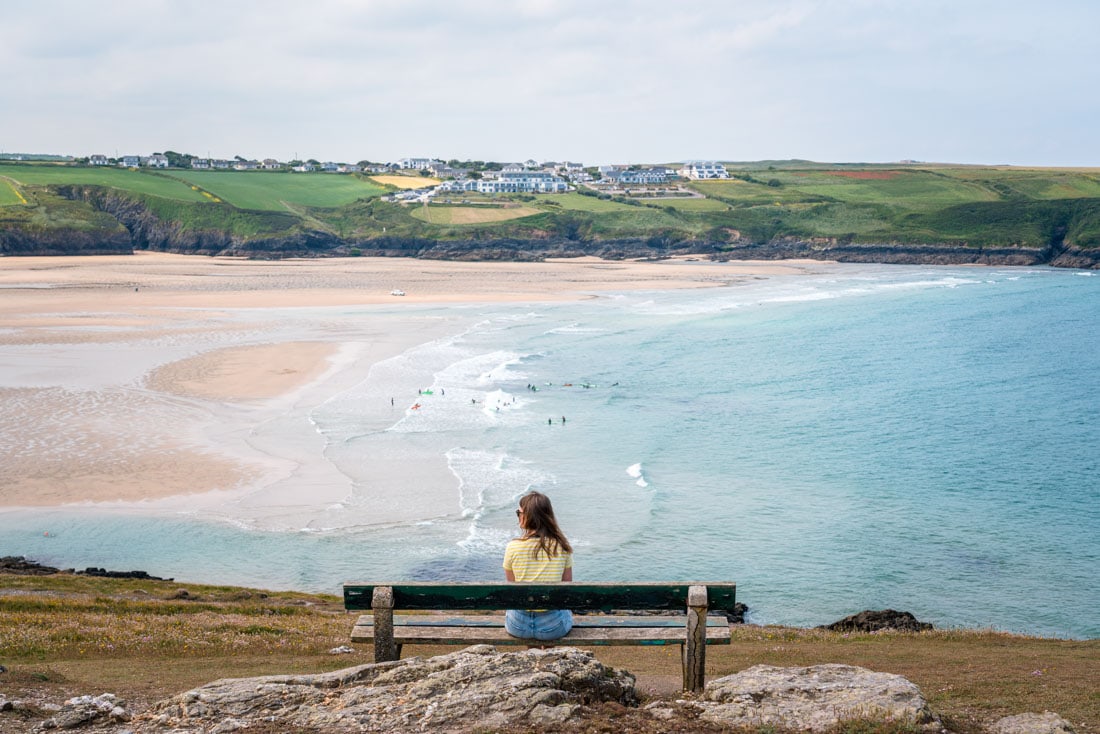
Looking for a beautiful holiday home in Cornwall just moments from the beach? Then check out my review of Samphire on the edge of Fistral Beach!
13 incredible places to visit in cornwall.
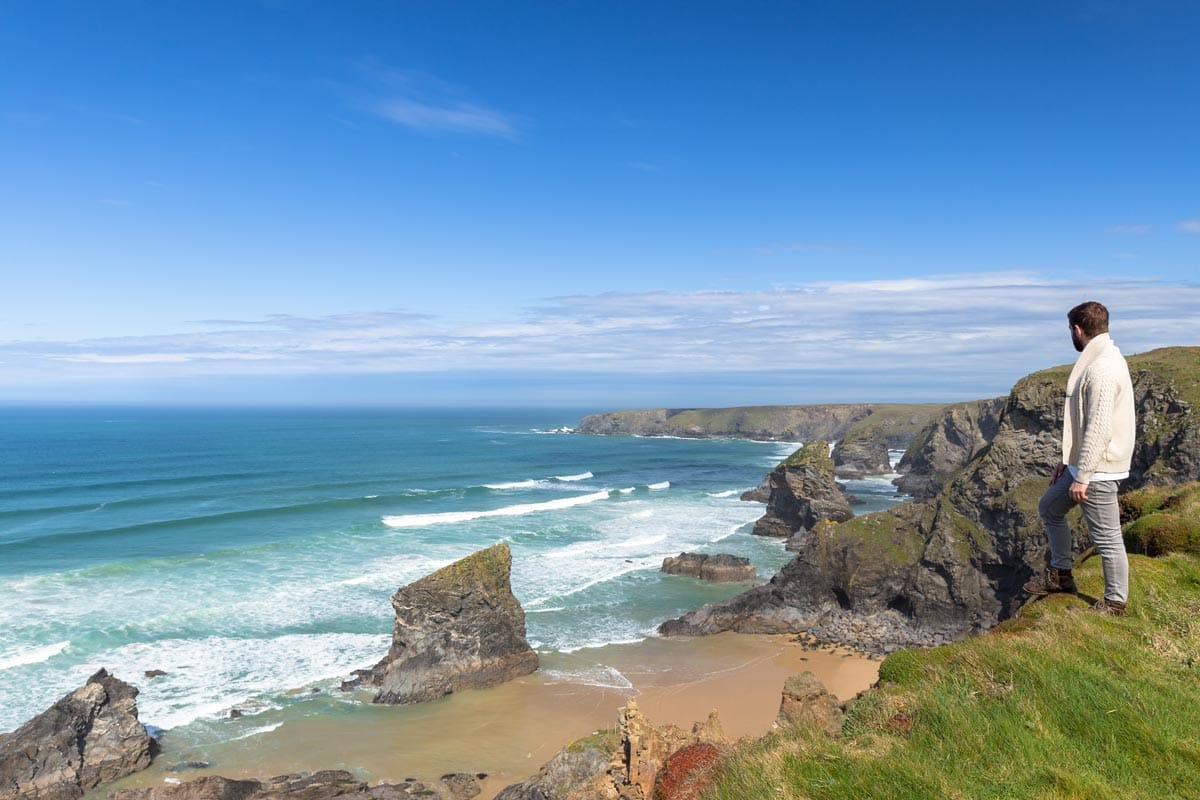
Explore the most incredible places to visit in Cornwall! From iconic landmarks to hidden coves, discover the beauty of England’s southwest coast now!
13 coolest hotels in athens, greece.

Views of ancient ruins, vibrant murals, on-site agoras, or roaring art-deco aesthetics – it’s time to explore the coolest hotels in Athens!
7 fun water sports in cornwall to do this summer.

Looking for the best water sports in Cornwall? From coasteering to paddleboarding, check out these amazing activities this summer!
Best cruise ports in the uk for your next break.
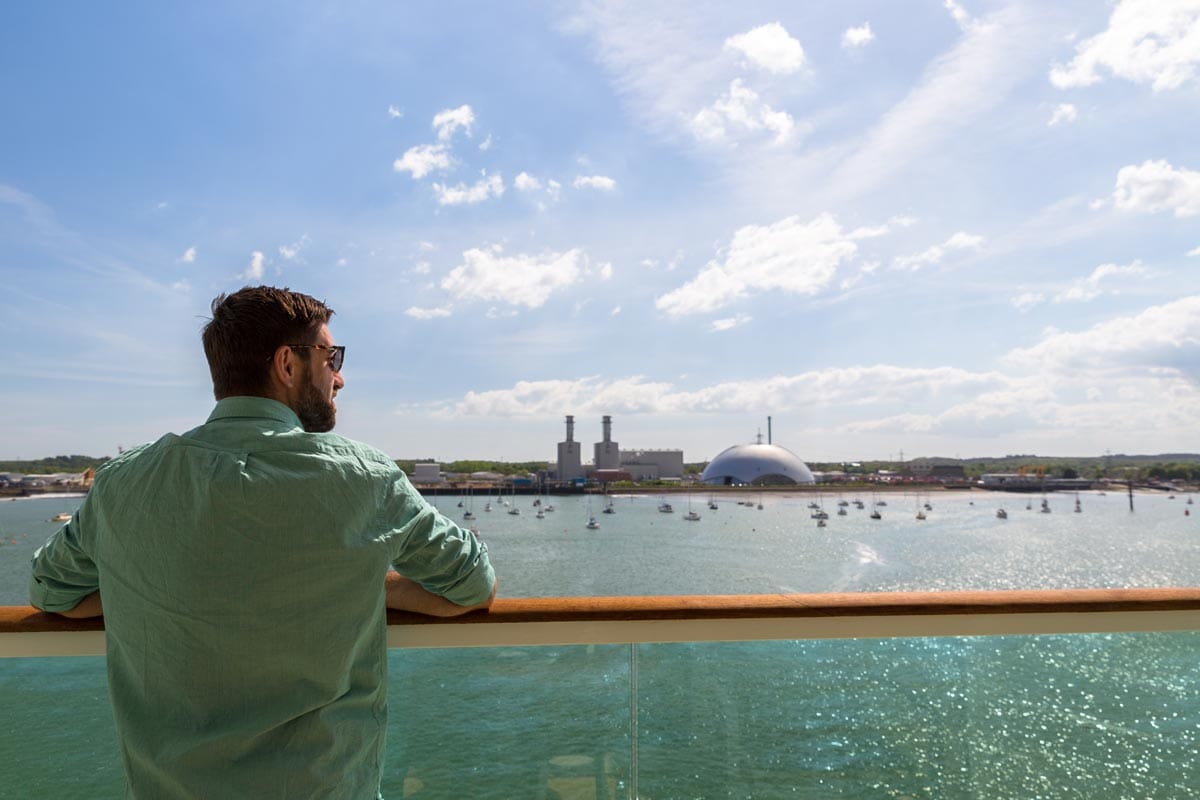
Come discover the best cruise ports in the UK! Start planning your trip and see what destinations you can visit from these UK ports.
13 best day trips from valencia, spain.
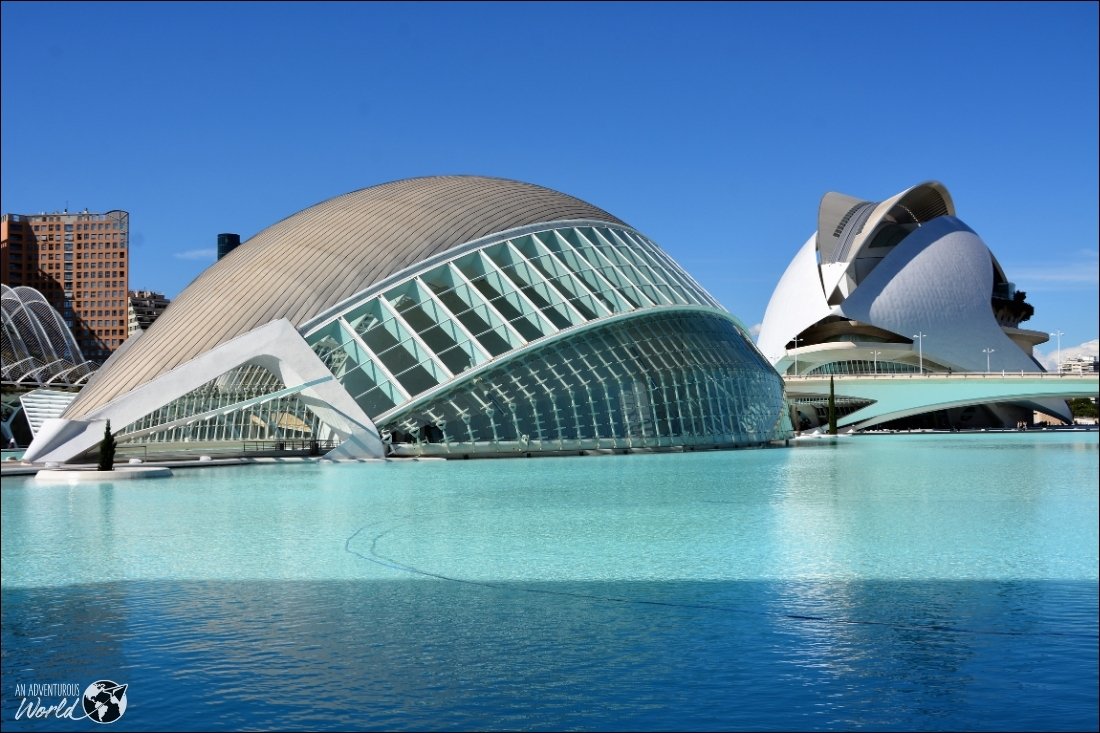
Exploring underground caves by kayak, soaking in hot springs and seeing Roman ruins – these are the best day trips from Valencia!
13 coolest hotels in munich, germany .
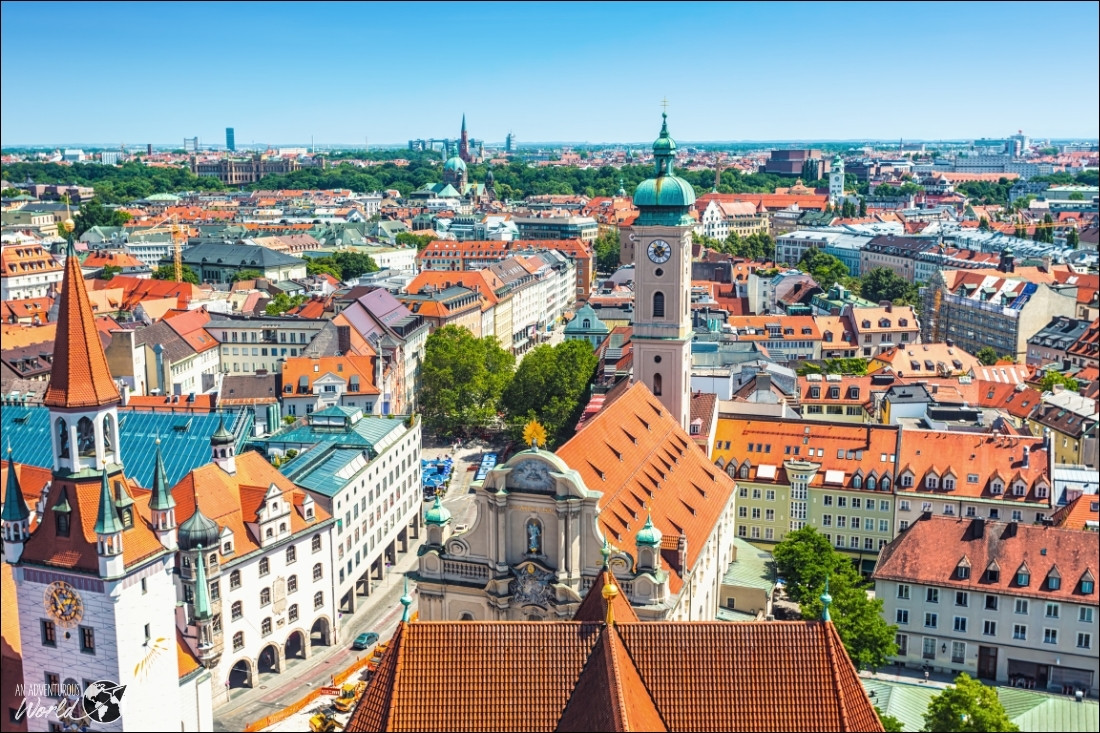
Looking for the coolest hotels in Munich, Germany? Then check out these amazing places for your your next Bavarian adventure!
Staycation review: meadowbank, porlock, england.
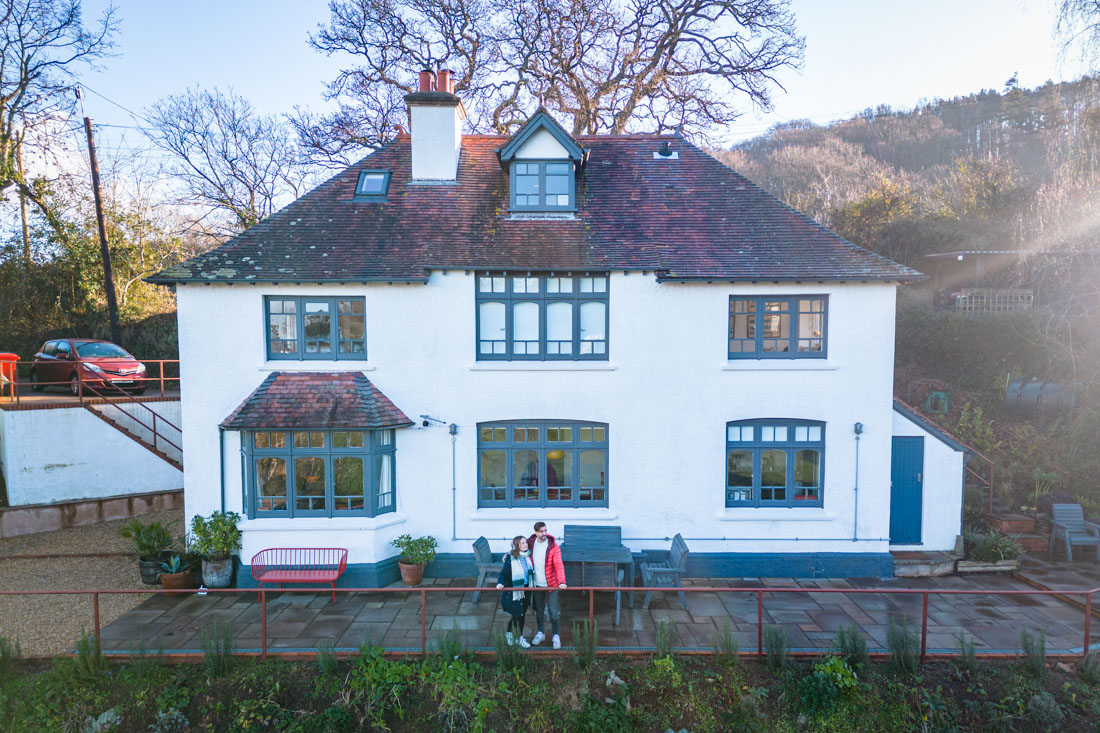
Looking for the perfect staycation in Somerset? Then check out my review of Meadowbank, a stunning house in charming village of Porlock!
13 best things to do in riga in winter.
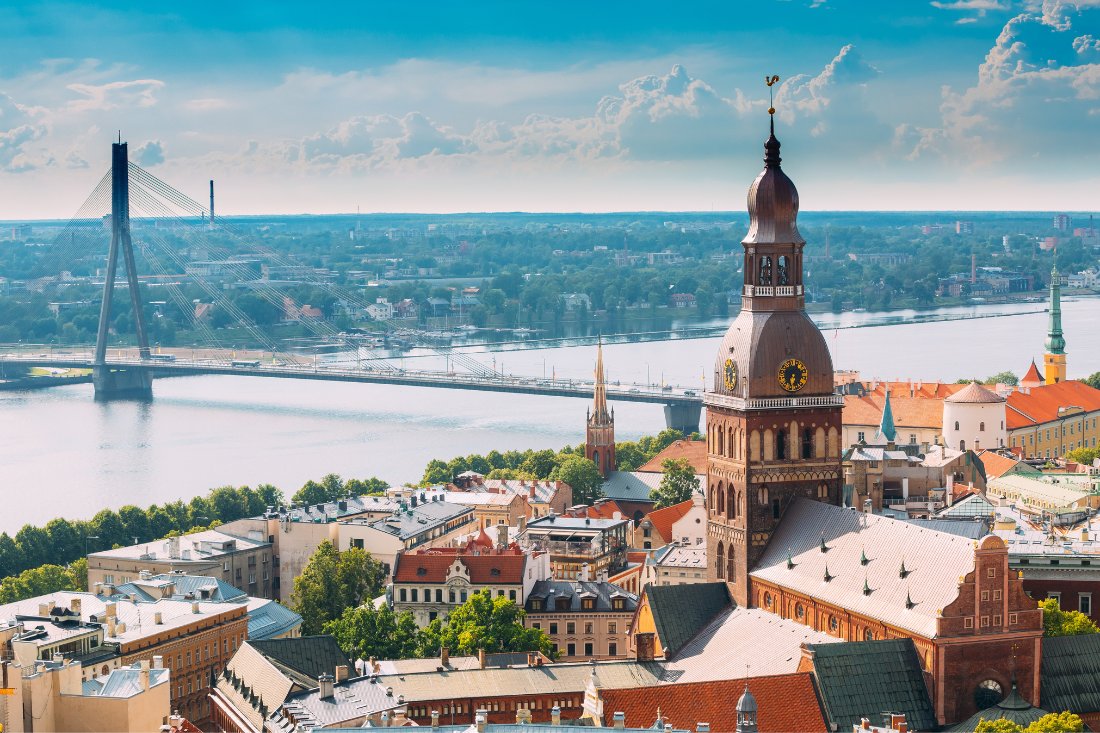
From stunning snowshoeing to festive Christmas markets to architectural walking tours, here are the 13 best things to do in Riga in winter.
How to use the swiss travel pass: top tips & information.
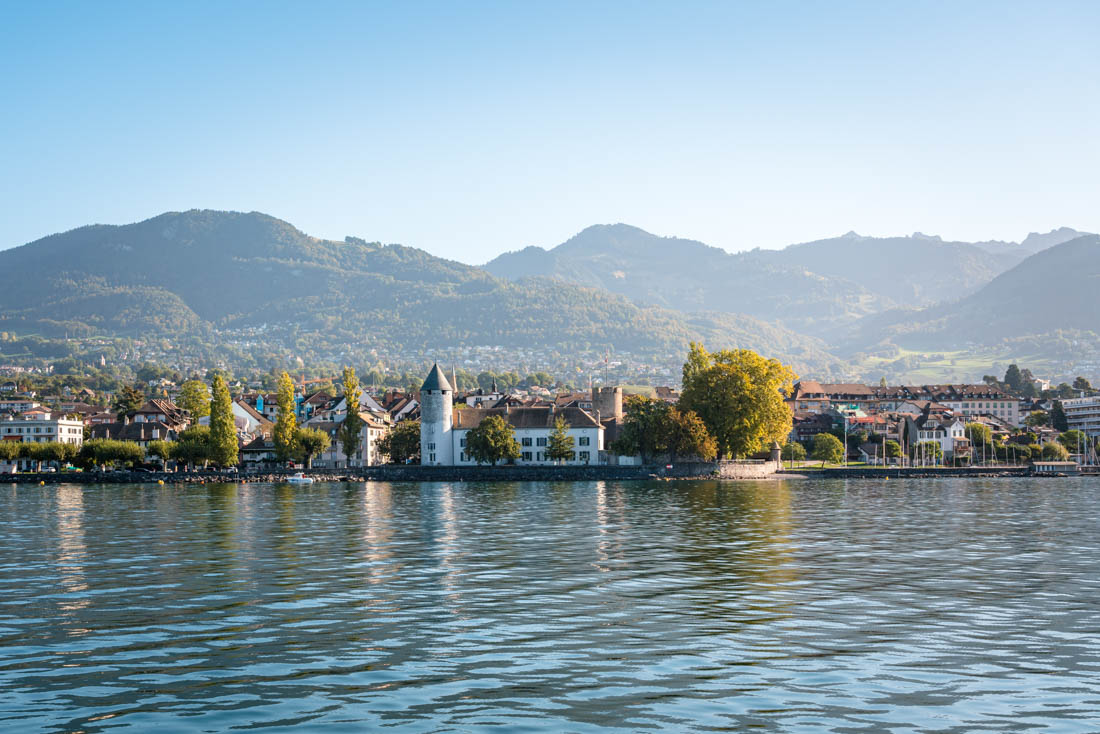
This guide on how to use the Swiss Travel Pass is packed full of information on how much it costs, why you should buy a pass and other top tips!

Home » Europe
Travel blogs, travel photos and features from Europe
Europe Travel Guide
The ultimate guide to the coolest things to do and see when traveling in europe – only from travels of adam.
Europe is one of the most dynamic and interesting places to visit in the world—from the picturesque villages of southern Spain to the arctic villages in Scandinavia. Europe’s charms lie not just in the big metropolis cities but also in the small-town villages, the nature trails, the ski resorts and the Mediterranean beaches. There’s truly something for every type of traveler and in every season, too. Whether it’s Europe’s best gay cities or travel tips for Europe’s secret hotspots, get the juiciest and coolest tips here. Start here with my basic travel tips, or jump down below to read the latest travel blogs from Europe.
Top Europe Travel Guides
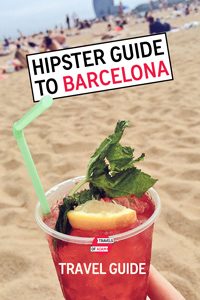
Popular Europe Travel Blogs
- Europe’s Top 12 Most Gay-Friendly Cities
- How to Find the Coolest Things to Do in Europe
- Europe’s Coolest Small Cities
- 8 Best LGBT Events & Festivals in Europe
- 3 Money-Saving Tips for Backpacking around Europe
- Orientalism & Chinoiserie architecture around Europe
When to Visit

Basically: visit Europe anytime. There’s always going to be something great to see or do. And the museums (some of the best in the world) never close…
Two Weeks in Europe

- London – Paris – Brussels – Amsterdam – Berlin : Plan to stay longer in London, Paris and Berlin, with short stopovers for one or two days in Brussels and Amsterdam. But be careful in Berlin; you might never want to leave!
- Madrid – Barcelona – Nice – Florence – Rome : Spain is one of Europe’s best destinations for travelers (and one of the most gay-friendly, too!) so you might find it challenging to leave. Madrid and Barcelona are both world-class cities, but make your way from Spain to Italy and you won’t be disappointed. Just make sure to pack some sunscreen and schedule plenty of time to relax on the beaches!
LGBT – Gay Europe Guide
Europe as a whole is one of the most liberal and LGBT-friendly destinations. Each country has their own specific laws and societies, however, so it is important to know a little bit about local, country-specific safety before traveling in Europe.
Any Lonely Planet guidebook or other will include basic LGBT travel safety tips and recommendations for each destination, but if you’re looking for gay travel tips for each city or country, it can be more useful to check this website or other LGBT-specific travel resources. Make sure to check out my list of Europe’s Top 10 Most LGBT-Friendly Cities for my favorite bars, clubs and queer events in Europe.
Hotel Deals
You can find all kinds of accommodation across Europe, from budget hostel rooms to luxurious hotels fit for a king! I’ve always found that using Booking.com, Agoda.com or Hotels Combined I get the best deals especially for last-minute trips.
Follow @ travelsofadam on Instagram for more Europe travel tips!
Europe Travel Blogs
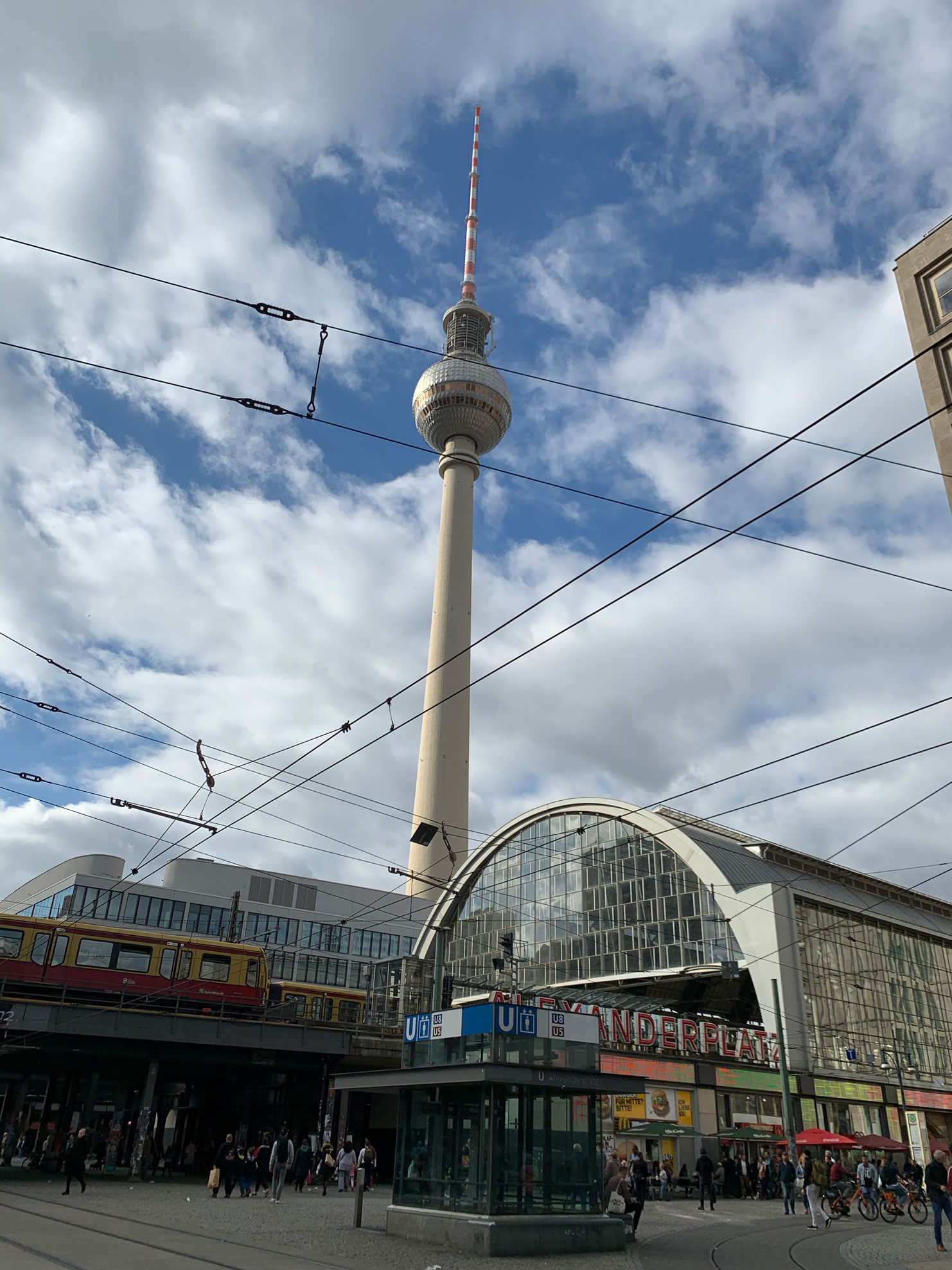
The Coolest Hidden Gems in Berlin You Need to Visit This Summer
Berlin is a city that never ceases to amaze visitors with its rich history, vibrant culture, and innovative creativity. It’s also a city that’s full of hidden gems waiting to be discovered. If you’re looking for something a bit more off the beaten track, then read on to discover some of Berlin’s coolest hidden gems. …

Explore Like a Local: Off-the-Beaten-Path Destinations in Ireland
Visit the Emerald Isle, and you’ll hear about the Guinness Storehouse, Cliffs of Moher, Galway, and Blarney Castle. But what if you’ve already done all this, or you’re looking to step away from the conventional?Don’t follow the same itineraries as the 11 million tourists who come to Ireland every year. Instead, let’s get away from …

How to Make the Most of Paris During the Olympics
Paris is one of those cities you’ll find on many a person’s bucket list. The weather in the city is hot, but not unbearably so. The geography places it on the doorstep of several European countries, whose citizens can, in just a couple of hours or more after taking off, be landing on Parisian soil. …

Traveling to Germany for the Euros? Here’s What to Expect
Every major football tournament is met with great excitement, but there’s an extra special buzz around this year’s European Championships. With so many top national teams in great form, this promises to be the most entertaining competition in its history. The major broadcasters will screen the event all across Europe and beyond. Millions will tune …
LGBTQ+ Friendly Places to Visit in London
London is one of the greatest cities on the planet and has plenty of LGBTQ+-friendly places to visit. The city always has a welcoming atmosphere for LGBTQ+ travellers. Whether you are interested in nightlife or just checking out the city’s vibrant streets, London is a place you can never forget. London caters to everyone and …

The Ultimate Guide to Car Hire at Malaga Airport for the LGBTQ+ Traveler
Malaga is one of Spain’s best gay travel destinations and a fantastic place to start a road trip through Andalusia for LGBTQ travelers

15 Fun (and often Funny) German Words You Need To Know
15 German words worth knowing whether you live in Germany or you’re just visiting for a holiday – from funny words to useful ones!
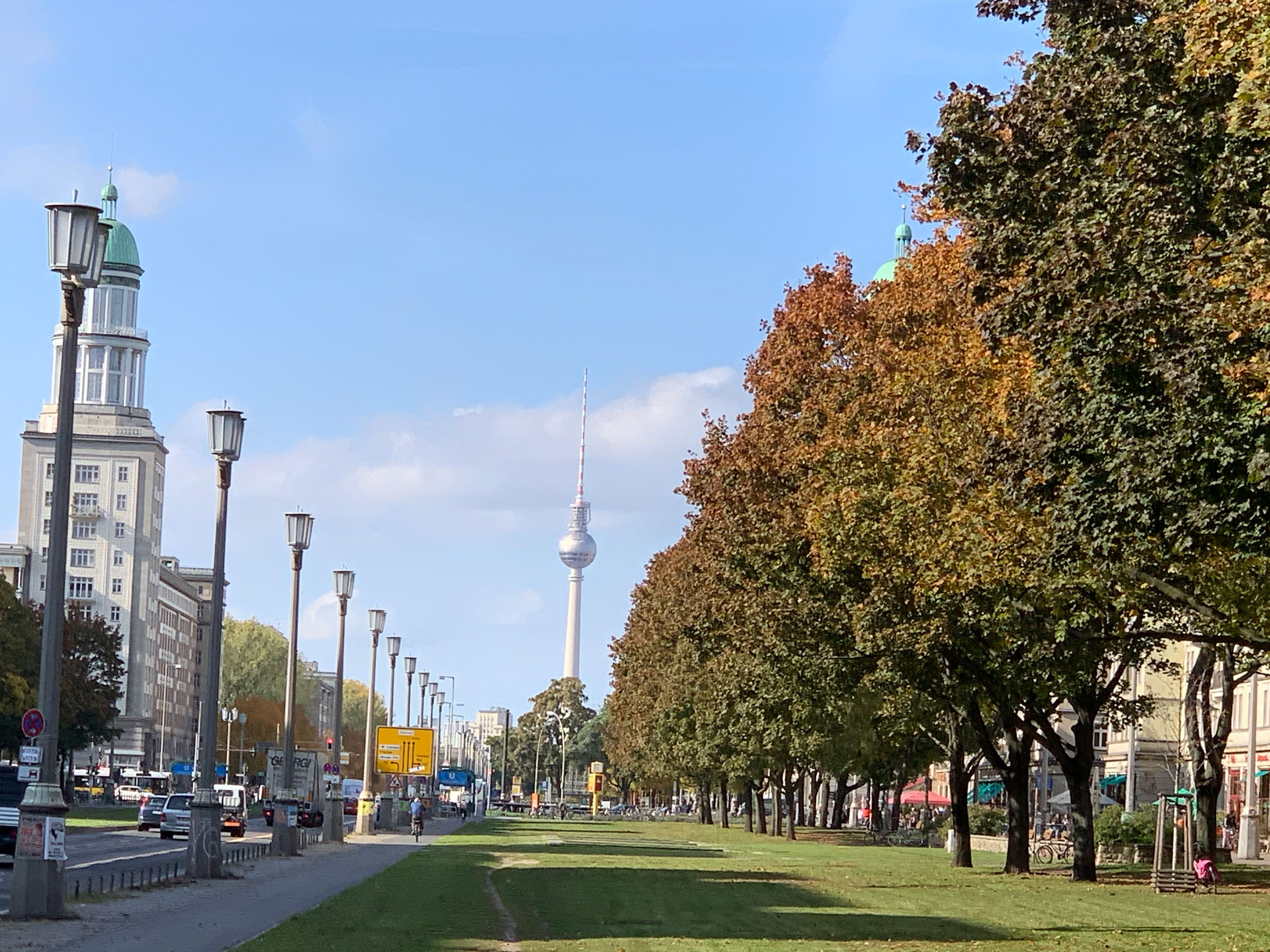
Here’s Why Berlin is the Best City for Expats (Especially for Working Professionals)
Berlin is the absolute best city in the world for expats and working professionals because of great city infrastructure & a high quality of life

7 Essential Travel Tips for Germany
Use these 7 Germany travel tips to make your holiday infinitely easier. Germany is a great and beautiful country, but travel smart with these tips!

6 of the Best Cities for Hipsters in 2024 (Excluding Brooklyn & Portland)
After exploring vintage shops, bookstores, bars & cafés around the world, these are some of the world’s most hipster cities & neighborhoods
Europe Travel Blog
Home » Places » Europe Travel Blog
From our extensive travel in Europe, we’ve seen the good and the bad. Our Europe Travel Blog tells you where all the bests of Europe can be found!
Europe, even though, it is one of the smallest continents area-wise, it is arguably one of the most diverse places in the world . Jim and I are so lucky to have lived here for more than 20 years giving us the opportunity to visit every country. Some of them we’ve been to numerous times and some we’ve only been to once.
Now, just because we have been to them, doesn’t mean that we’ve seen it all. We like to explore more than just the capital city, because oftentimes the rest of the country is so different. In every country, there are dialects, regional foods, unique experiences, a variety of landscapes, and so much more than what one city can possibly offer.

When is the Best Time to Travel to Europe?
It doesn’t really matter when you can get vacation, there is someplace great for every season. The majority of visitors come to Europe in summer, and for the most part the weather is probably the most agreeable during July and August. However, the crowds are larger during these times as well. We’ve tried to uncover the best places to go in each season. After checking these out, you can tell us when you think is the best time to travel to Europe.

What is Your Favorite Country in Europe?
I have heard this question so many times. It’s impossible to answer, but we have come up with some places that we enjoy for one reason or another, like these hiking these hiking trails. There are certainly cities or areas that immediately pop into our heads as a perfect example. We’ve tried to list a few ideas here. Please remember, that this is a document that is constantly changing as we find and explore new places, as well as this is our opinion only. We’d love to hear if you agree or disagree, and where you would recommend people to go.
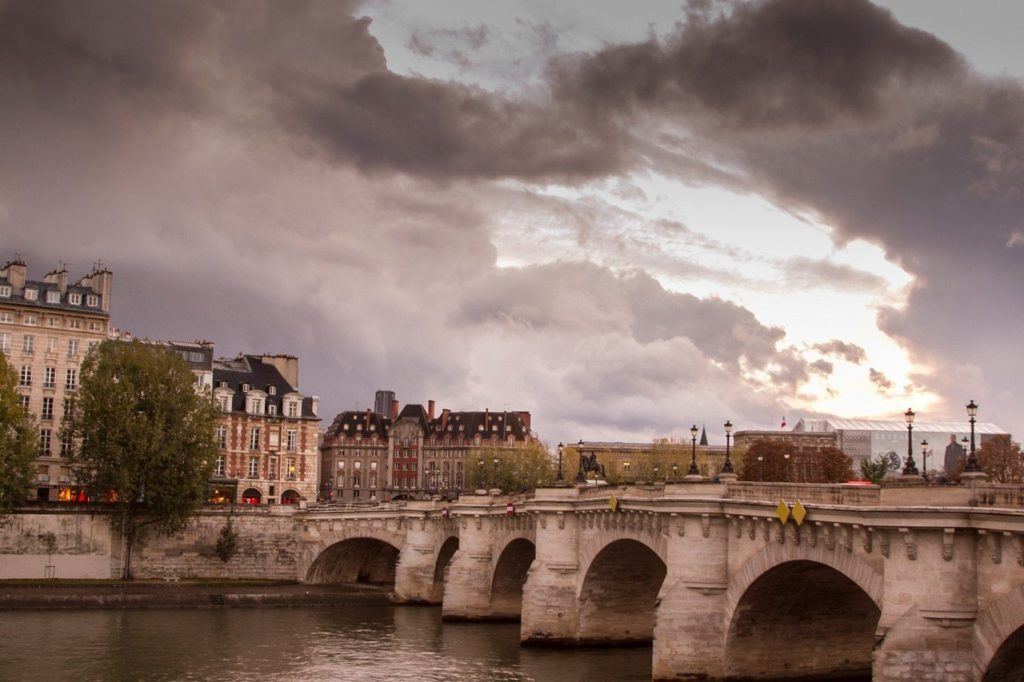
Places that Embody the Spirit of Traveling in Europe
Paris, France Barcelona, Spain Berlin, Germany Prague, Czech Republic Budapest, Hungary
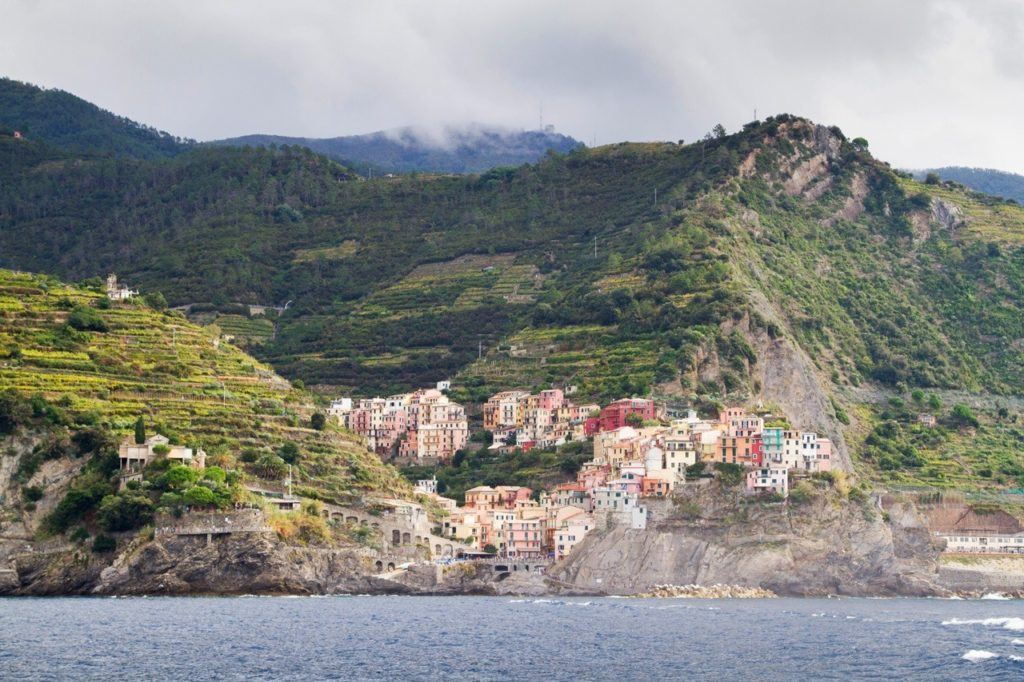
Our Most Romantic Places
Rothenburg ob der Tauber, Germany Cinque Terre, Italy Telc, Czech Republic Alsace, France Visiting the Spa, Hungary

The Best Outdoor Activities
Skellig Michael, Ireland Lake Bled, Slovenia Riding Bikes in a National Park, Netherlands Climbing the Rock Labyrinth, Germany 4 Wheeling and Skeet Shooting, Scotland Sledding for Miles, Switzerland Punting in Cambridge, England Bastei Bridge, Germany

The Most Fun and Unique Experiences
Eurail Train Trip Through Eastern Europe Watching the Cows Take a Boat Home, Germany Building our Own Swiss Army Knife, Switzerland Gondola Training, Italy Tulip and Flower Parade, Netherlands Camel Wrestling, Turkey Sheep Dog Training, England Making and Painting Marzipan, Estonia Buying Polish Pottery At the Factories Helping with the Rose Harvest, Turkey

One of the most fun times we’ve had is learning how to make the traditional Nuremberger Bratwurst. Germany
The Best Cooking Lessons
Khinkali, Georgia Turkish Borek, Turkey Wernberg Castle, Germany Bratwurst, Germany
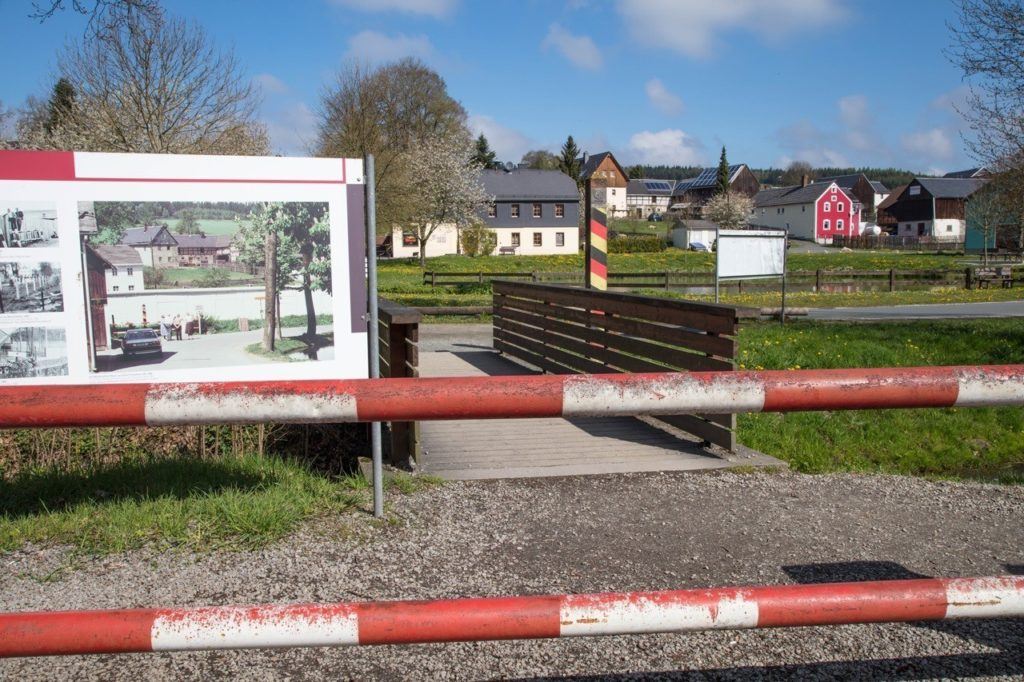
The Best Places to Learn History
Krakow, Poland Berlin, Germany Normandy, France Dachau, Germany Berchtesgaden, Germany Modlaureuth, Germany

Best Places to Take Kids
Playmobil Park, Germany Carnival Museum, France Riding the Train Run by Kids, Hungary Mespelbrunn Castle, Germany Tesla Museum, Serbia Making A Chocolate Bar, Berlin Visiting Harry Potter at the Warner Bros. Studio, England German Christmas Markets Wieliczha Mine, Poland

Best Road Trips
Military Highway, Republic of Georgia Armenia Transfagarasan Hwy., Romania Iceland Serra de Tramantuna, Spain

Where We’ve Enjoyed the Photography
Meteora, Greece Kinderdijk, Netherlands Venice, Italy Giant’s Causeway, Northern Ireland

Welcome to EuropeUpClose & the world beyond
Here you will find the best travel tips, inspiring destination guides, and helpful planning advice to help you plan your trip to Europe and beyond.

Maria Haase, our Editor-in-Chief, grew up in Germany and splits her time between the US and Europe. The travel bug bit her early in life and she has lived in and traveled extensively to all corners of the world. Europe holds a special place in Maria’s heart and she wants to show you her home from a local’s point of view.

Popular Searches: Where to Stay in <<city>> | Things to do in <<city>> | <<country>> itinerary
Latest articles about travel in Europe:
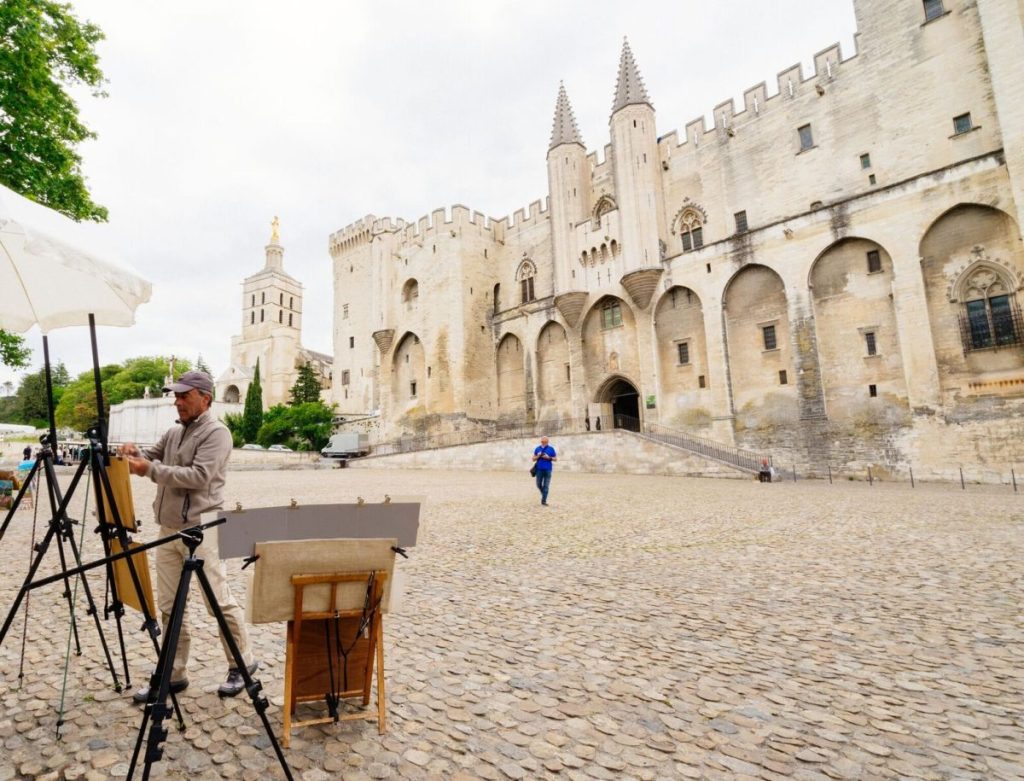
A Viking River Cruise Through Provence
A river cruise is a fabulous way to explore Provence, Lyon, and many other picturesque villages in the South of France, don’t you think?
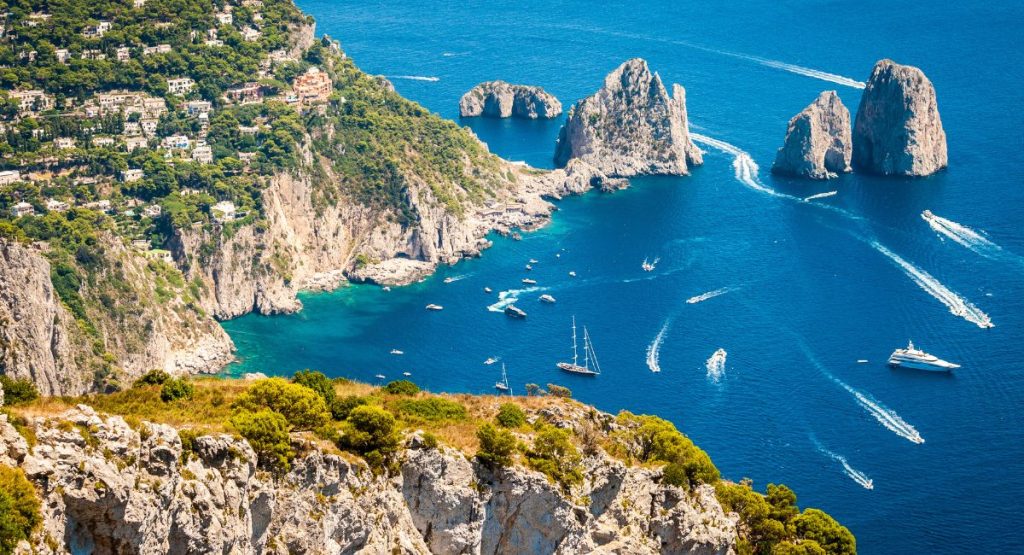
How to Plan A Day Trip To Capri, Italy
Planning a Day Trip to Capri? Here are the top tips on how to get there, things to do and everything else you need to know to make it a perfect day in Capri.

Top Lisbon Attractions: Amazing Things to Do in Lisbon Portugal
Click here to discover what to do in Lisbon, Portugal. From sipping fine wines in local bars, eating delicious food to the top Lisbon attractions, we share with you the best of the best.

6 Helpful Tips for Cruising with Teens
Cruises are one of the best ways for families with teenagers to travel together and here is why:
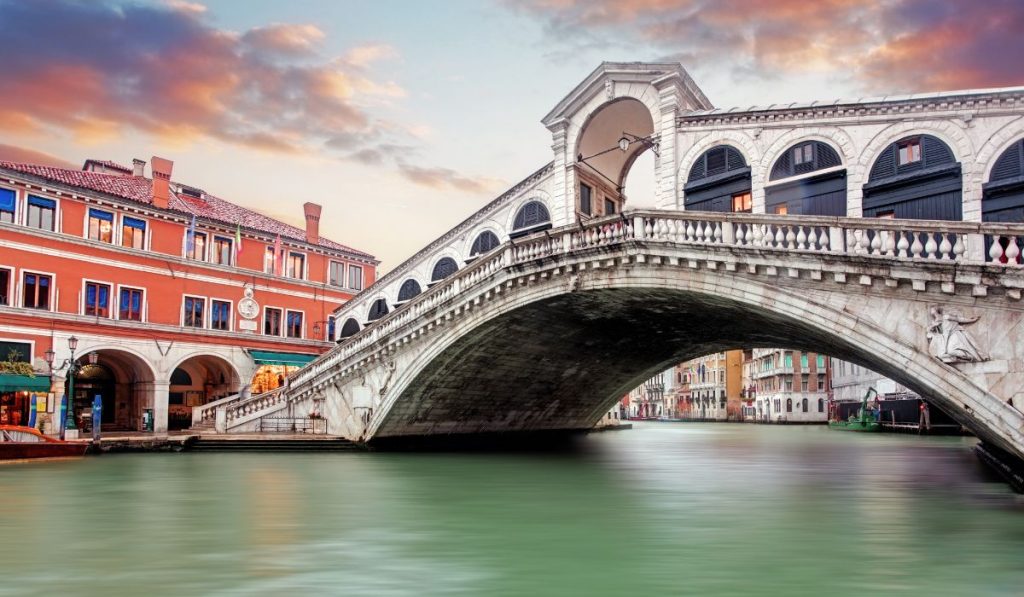
20+ Best Things To Do In Venice, Italy
Planning a trip to Venice? Here are the 20+ best things to do in Venice, Italy. Indulge in Italian classics from St. Marks Cathedral to relaxing gondola rides and decadent gelato.

The Ultimate Guide For 3 Days In Athens (Everything You Need To Know!)
Spending 3 days in Athens and wondering what to do? 3 days in Athens will comfortably allow you to see the main sights, grasp the culture, & eat endless Gyros.

Foodie Cruise – What Cruise Line Has the Best Food?
If you love food and cruising, you might wonder: What Cruise Line has the best food? And: Is there something like the “Ultimate Foodie Cruise?” Here is our recommendation for the best foodie cruise!

14 Best Islands In Greece For Your Dream Getaway
Greece is known for its incredible paradise islands. Trying to decide which is best for you? Read on for the best islands in Greece for your getaway.
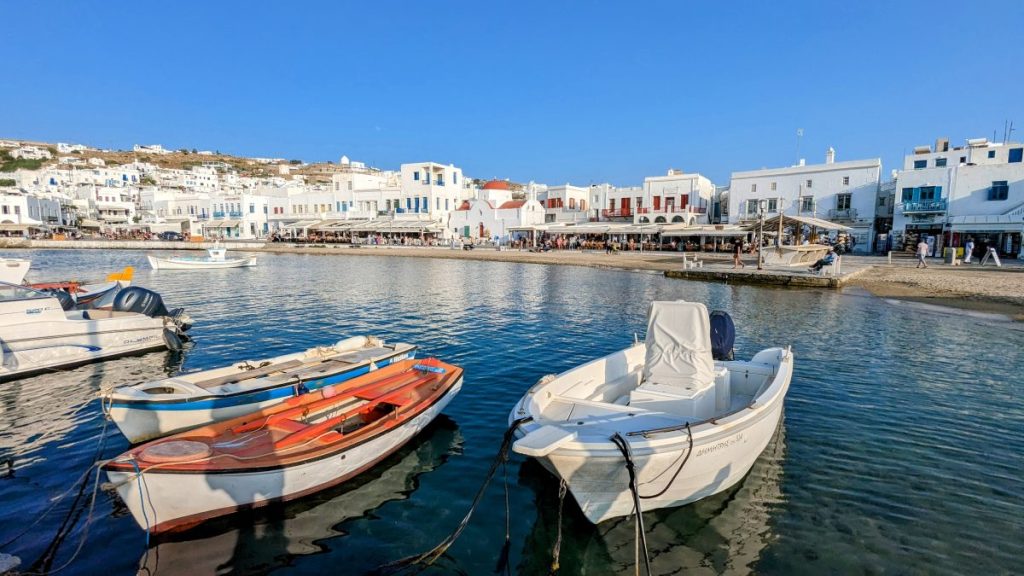
Greek Island Cruise: The Best Way To Explore Greece?
Planning to visit Greece? A Greek island cruise is a great and relaxing way to see a lot of islands and different places in a short time. Here are our top tips.

11 Of The Best Yoga Retreats in Ibiza
Imagine getting onto the mat with the sun warming your back and sea views in the distance. Read on for some of the best yoga retreats in Ibiza, Spain!
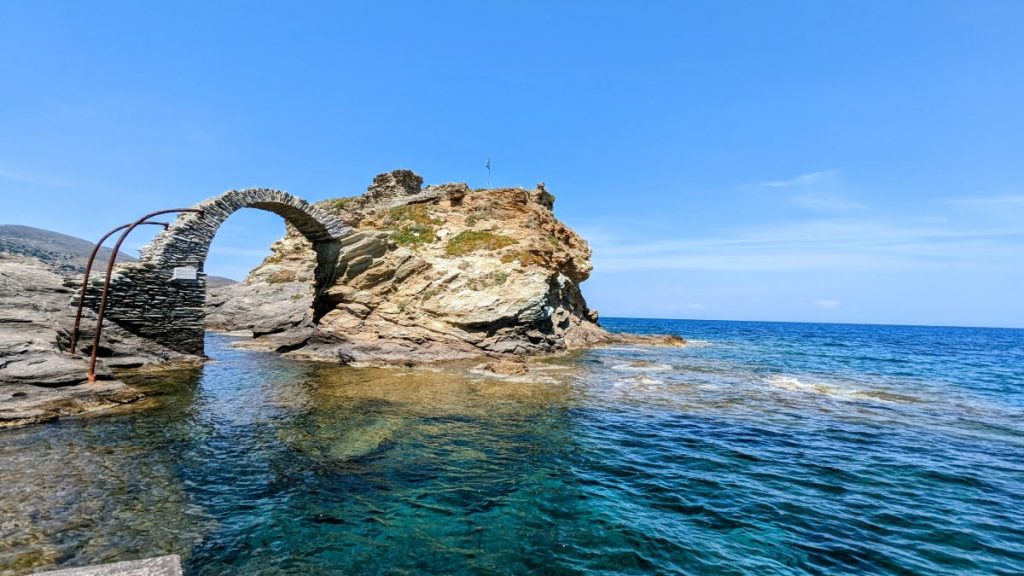
Andros Greece: Fall in Love With This Little-Known Greek Island
Discover a little off-the-beaten-path Greek island: Andros Greece offers stunning beaches, waterfalls, hiking & quaint villages and is not overrun by tourists.

Best Restaurants in Santorini & What to Eat There
Are you wondering what to eat in Santorini? And what are the best restaurants in Santorini to try these fantastic Greek dishes? Then you are not alone!
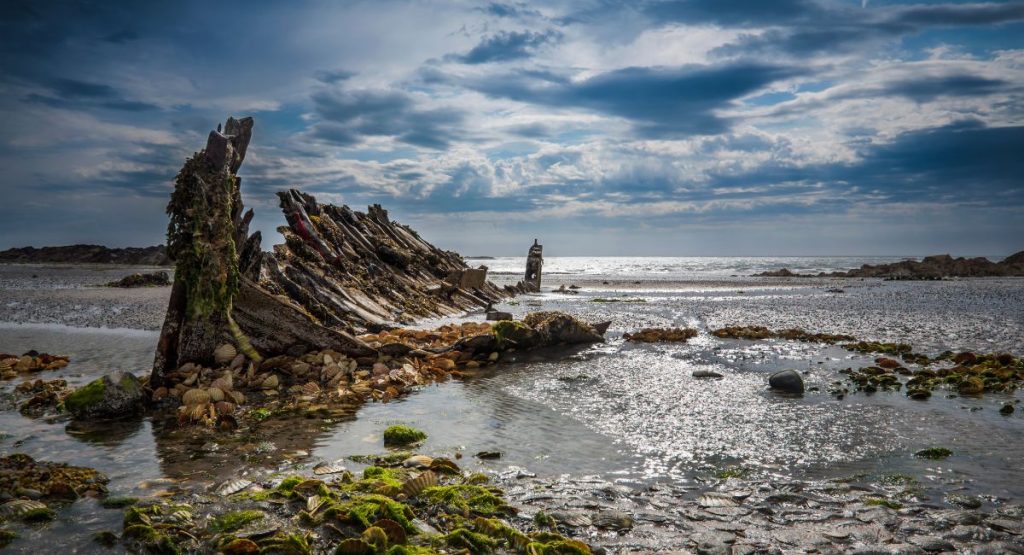
10 Best Places to Visit in Northern Ireland (2023)
If you’re planning a trip to Northern Ireland, you’re in for a treat. The small country of Northern Ireland offers an abundance of picturesque coastal towns and serene countryside. Take a look at the 10 best places to visit in Northern Ireland here:

15 Romantic Destinations For Your Honeymoon In Europe
Planning your honeymoon in Europe? Let us help inspire the honeymoon of a lifetime.

8 FREE THINGS TO DO IN SICILY
Read on to find out the best 8 free things to do in Sicily that will ensure your bank account is not depleted once you are back home.
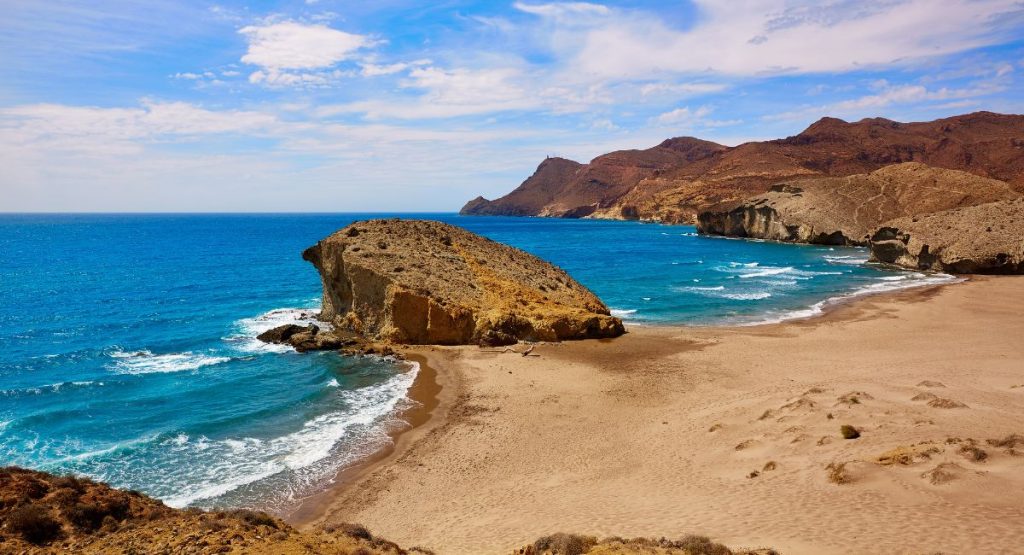
11 Best Beaches in Almeria, Spain
Read on for the best beaches in Almeria featuring fine sand and crystal clear water.
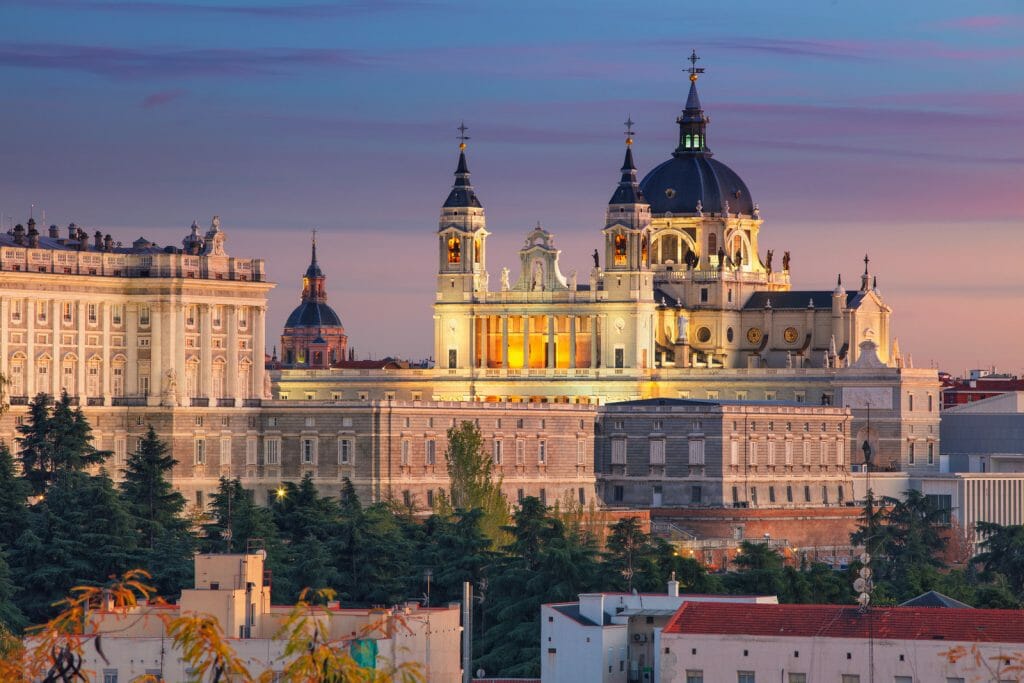
Best Things To Do in Madrid – 3-Day Itinerary
We laid out the perfect 3 days in Madrid itinerary for you!

Origines by Chef Adrien Descouls – A Slice Of Heaven In The Auvergne
Origines par Adrien Descouls is a fantastic Michelin-starred destination restaurant & hotel in the heart of the Auvergne, France.

Best Things to Do in Grindelwald, Switzerland
Check out all the fun things to do in Grindelwald, Switzerland. It is the perfect hub to explore the Swiss Alps.
2 Amazing Venice Walking Tours You Should Not Miss
These 2 Venice Walking Tours with locals will show you the top attractions AND best food in Venice. What a great way to explore the city!
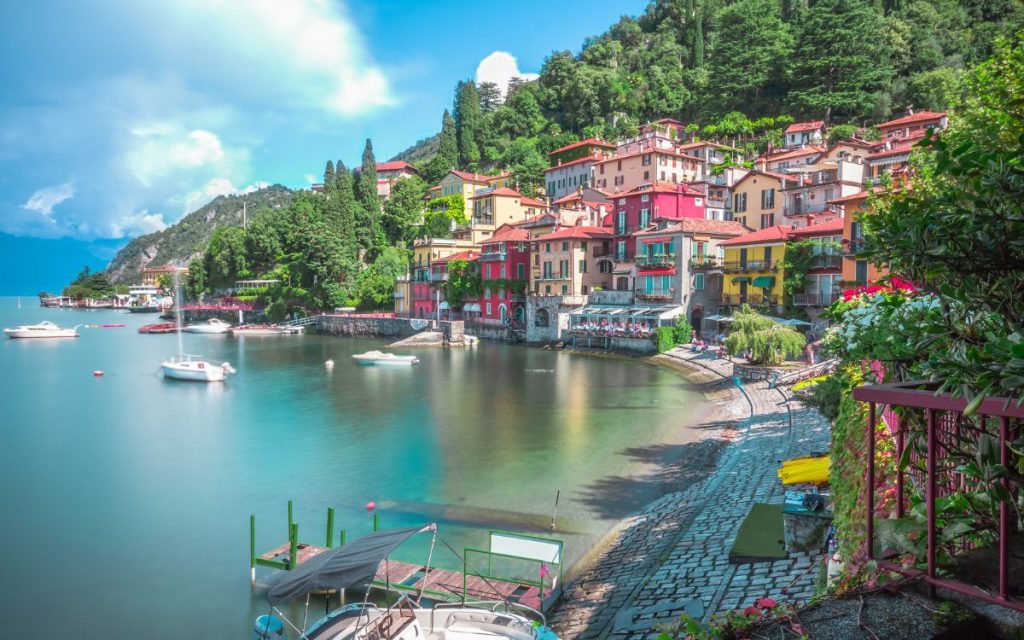
Fantastic Things To Do in Lake Como
Planning a trip to Lake Como soon? Don’t miss these fantastic things to do in Lake Como, Italy.

Paris Food: 12 Fantastic French Dishes You Have To Try
Paris Food: Learn about the 12 must-try French dishes you have to try on your next trip to the city of love.
Most Popular Destinations in Europe

Make sure you sign up for our newsletter to receive weekly updates with our latest travel news.
You have successfully joined our subscriber list. Please check your email to confirm your subscription!
After you sign up, we will send you a 5 email series with helpful tips on planning your trip to Europe. After that, you will receive updates about 1x month with the latest articles on EuropeUpClose.
As seen on:

Most Popular Articles

What to Wear in Europe
Tips on what to wear in Europe to not stand out as a tourist. Don’t forget to pack these helpful & stylish items for your next trip to Europe!
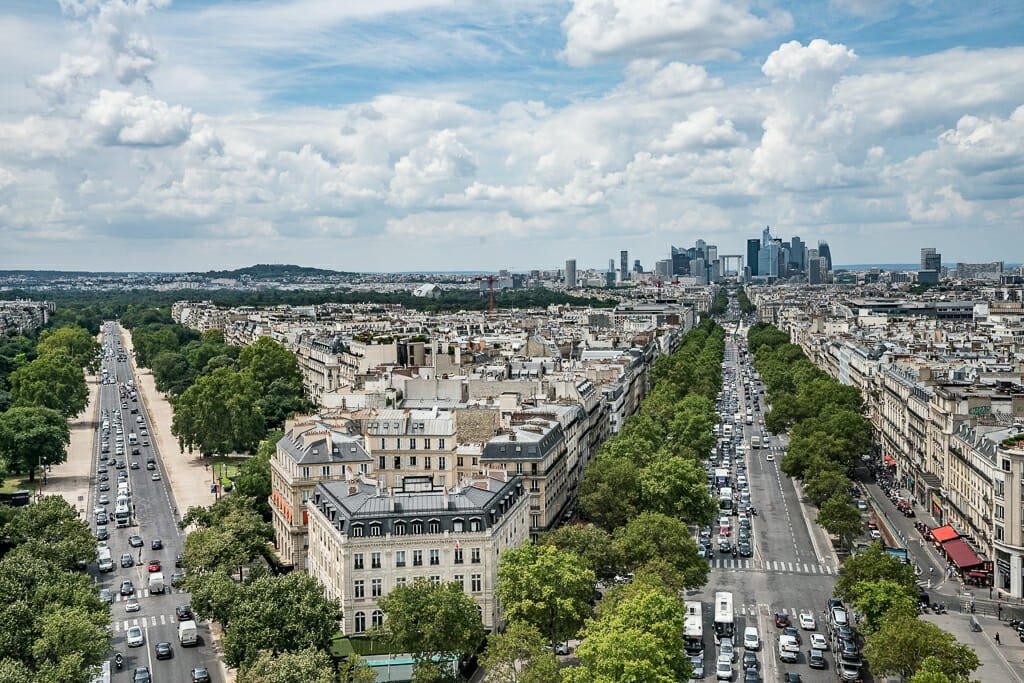
Where to Stay in Paris – The Best Paris Arrondissements for Tourists
Not sure where to stay in Paris? This guide will help you find the best hotels in the best area to stay in Paris for your itinerary.
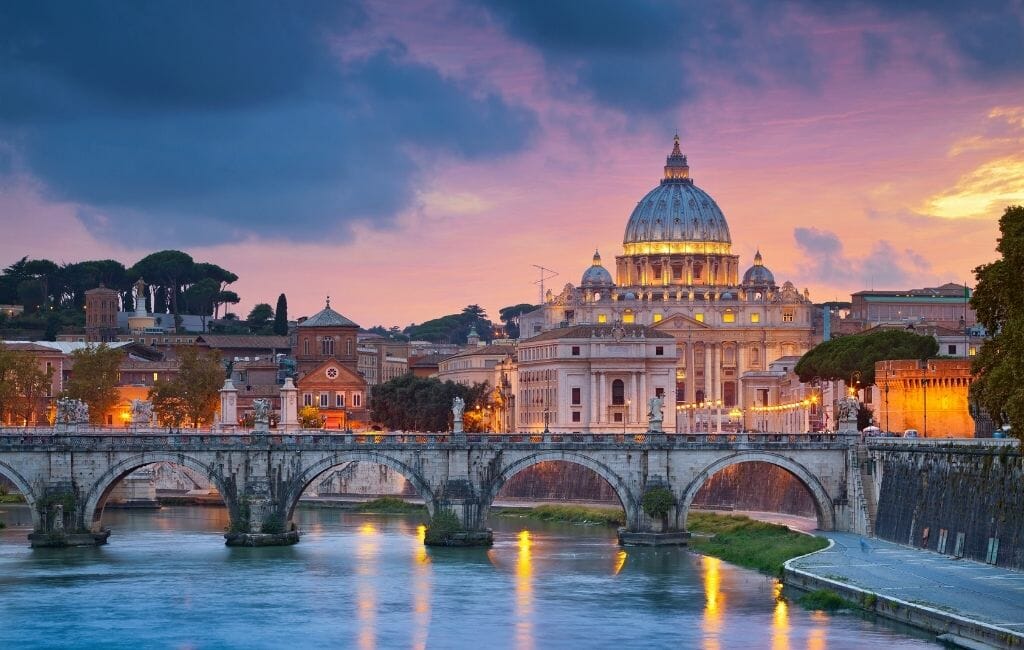
Is the Roma Pass Worth it?
Planning a trip to Rome, Italy? Find out if the Roma Pass will save you money, depending on your Rome itinerary.
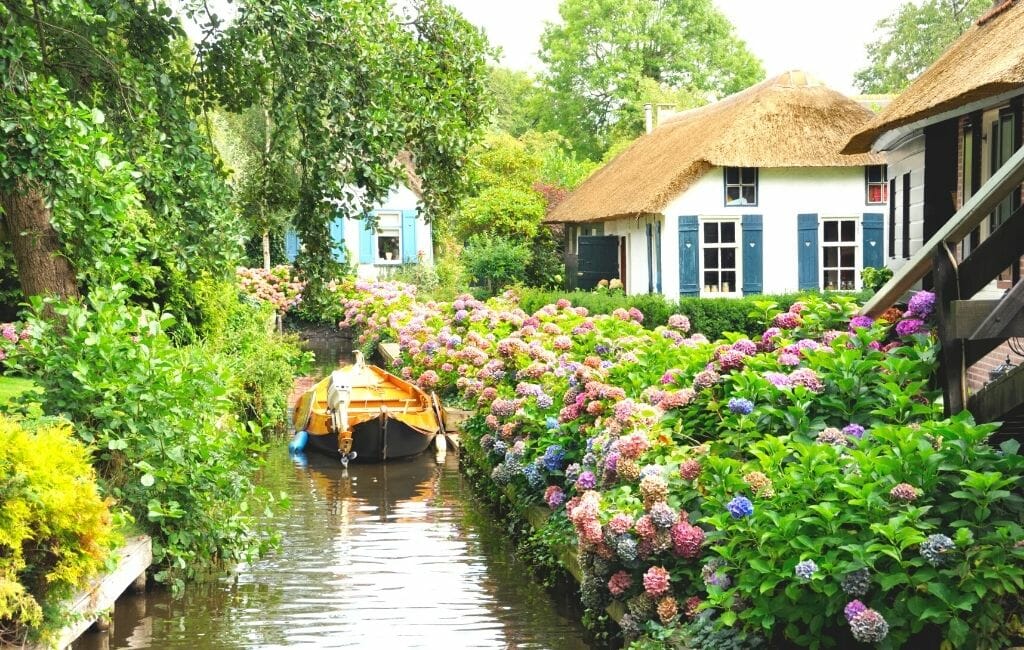
Amsterdam to Giethoorn Day Trip – Helpful Tips From A Local
Amsterdam to Giethoorn is the perfect day trip if you are looking to experience a quaint, picturesque Dutch village.

7 Days in Italy: 1 Week Itinerary from Venice to Rome
7 Days in Italy is not a lot, but with this jam-packed Italy Itinerary, you’ll see the top highlights: Venice, Florence, Rome & more

Paris Hotels with Views of the Eiffel Tower
Everything about the best Paris hotels with views of the Eiffel Tower – a list of hotels in Paris with a view of the Eiffel Tower.
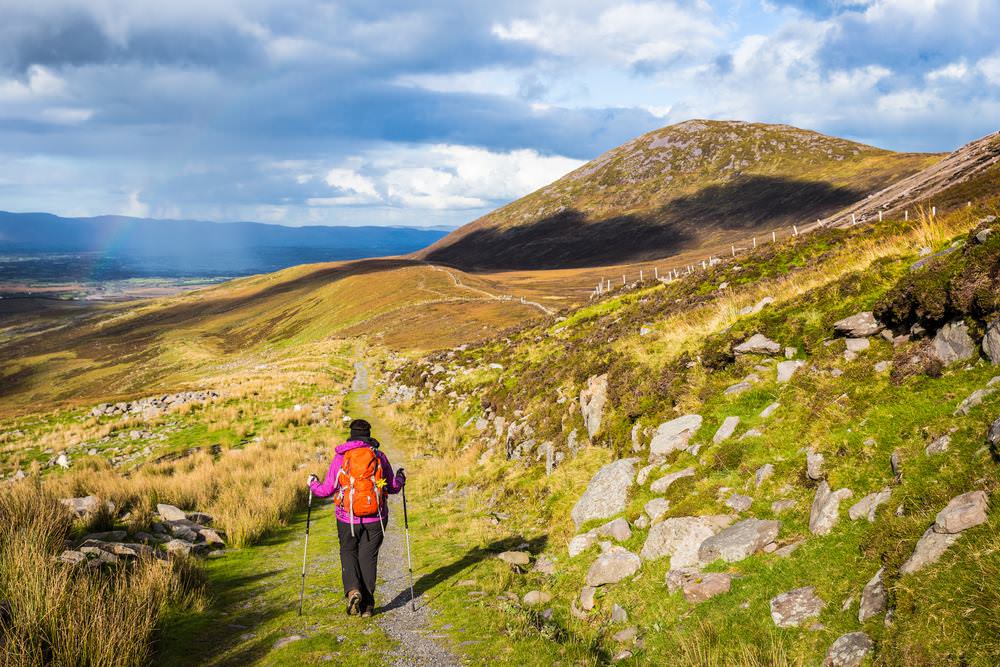
Best Hikes in Ireland
The 5 best Hikes in Ireland take you along beautiful coastlines, rugged mountains, and green rolling hills. Find the best hiking trails in Ireland here.
This site uses Akismet to reduce spam. Learn how your comment data is processed .
Share your love for Europe!
Help spread the word. You're awesome for doing it!
- Facebook 8722
- Pinterest 41
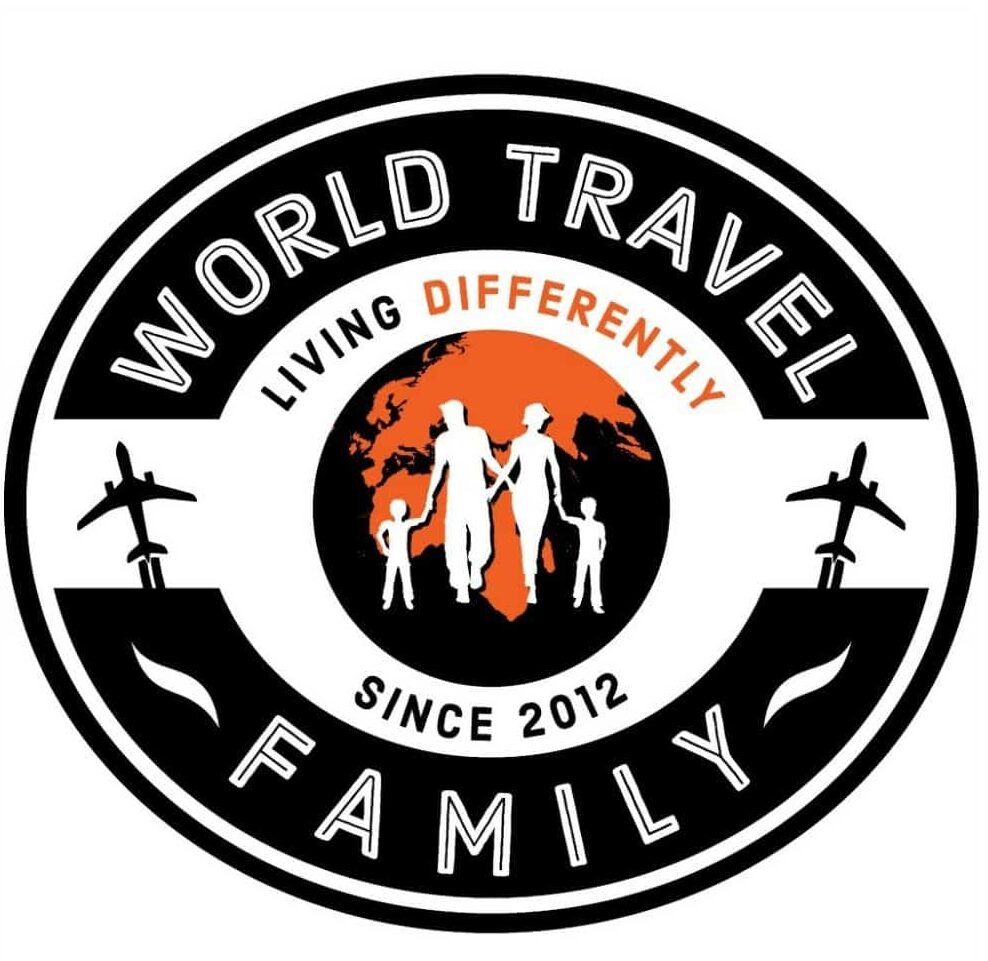
Europe Travel Blog
This post may contain affiliate links.
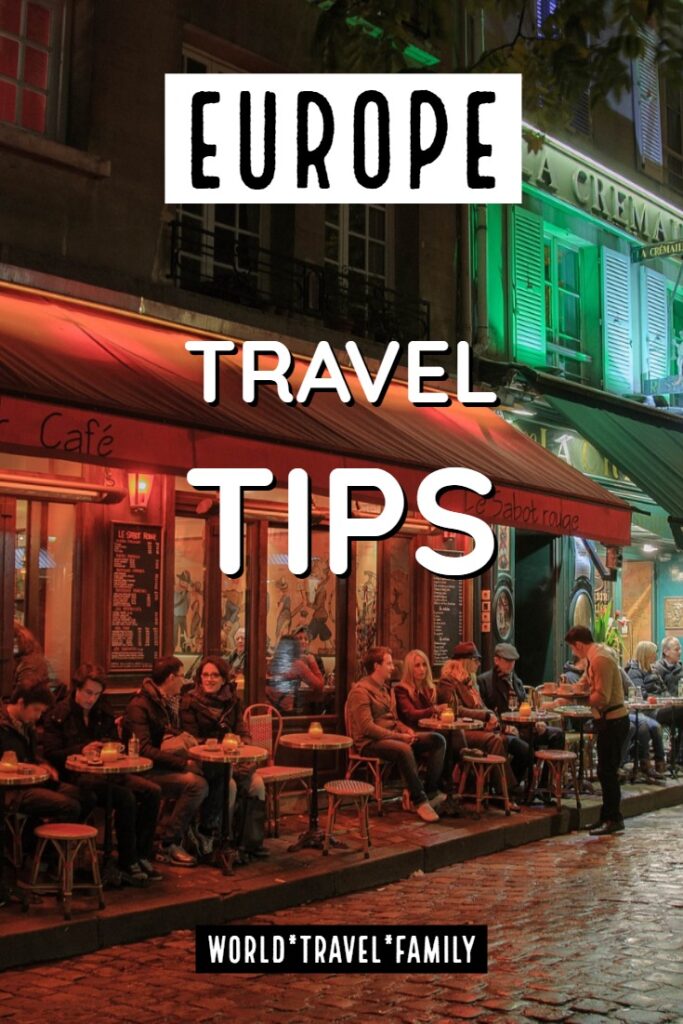
Europe travel blog, tips, destinations, and guides. Collected blog posts on travel in Europe, from living in London and Romania and driving the full length of Europe, often. Also from visiting the tourist hot-spots of Europe that we’d stop at along the way. You’ll find Europe travel tips and ideas below as well as more detailed information on some of the best places in Europe for you to see on your European trip.
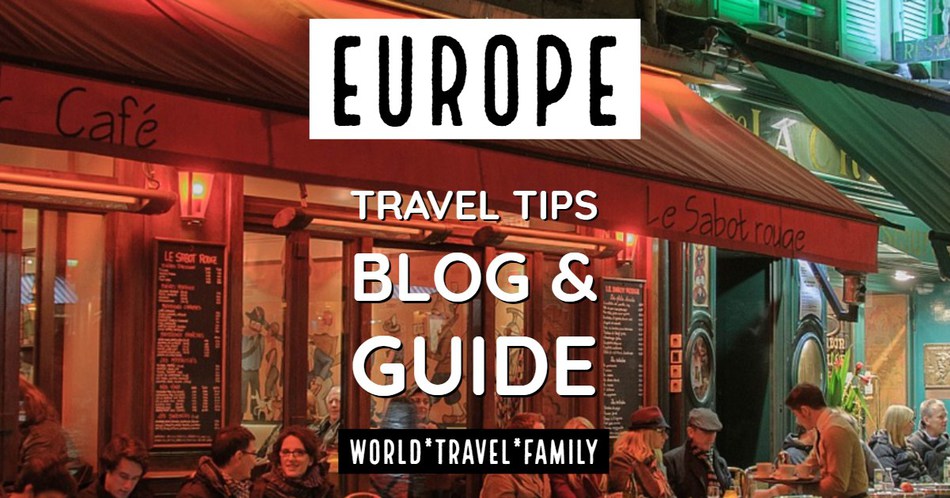
What about you? What are your Europe plans? Are you just starting to consider a first-time visit to Europe or will this be a return trip?
Do you live in Europe and want to see more of the continent of Europe?
We hope to be able to help you with any aspect of travel in Europe, from this page.
You can purchase a 1 week, 1 month or multiple months eSIM for Europe, cheaply and hassle-free, here. These eSIMS are also available for most countries and regions.
Europe Blog
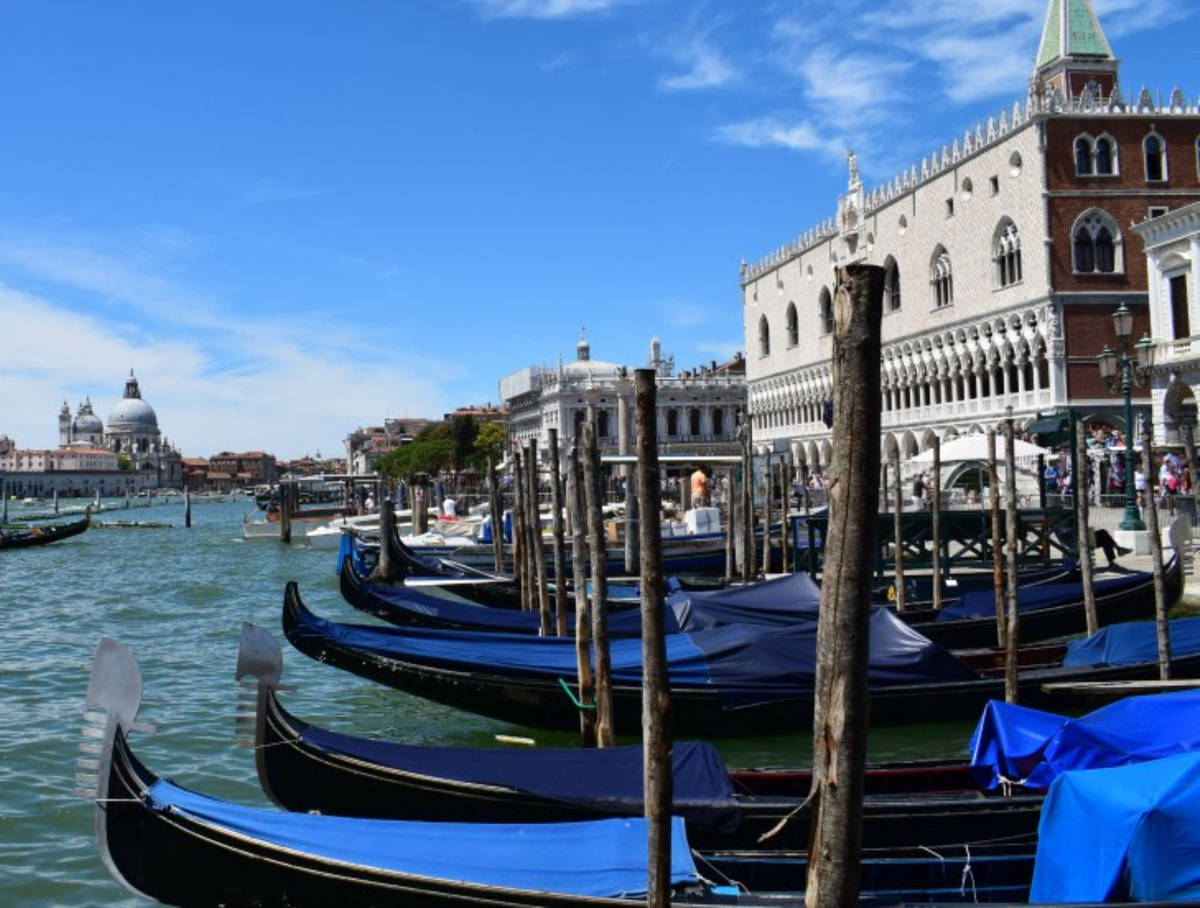
This travel blog started as a personal journal of our travels, it wasn’t built to be an authoritative all-encompassing guide. We’re bringing multiple Europe trips together here to make all the information on our site work as a comprehensive Europe travel blog and guide.
We can’t write a single blog post and call it “Europe Travel Blog” so you’ll find dozens of individual blog posts below, detailing individual destinations and experiences in Europe.
It was best to have this page as a general guide for travel in Europe, with more detailed posts leading from it and to it. We hope you can find what you need here.
Europe Travel Tips

A few general Europe travel tips to get you started.
- Christmas holidays and long summer school holidays along with the Easter break can bring huge crowds to popular parts of Europe. Avoiding peak times will keep your prices down.
- Countries that don’t have the Euro are often cheaper
- Be aware of Schengen area visa restrictions.
- If you’re driving – don’t forget to buy a vignette and be aware of driving laws and restrictions.
- You’re unlikely to have difficulties if you only speak English, in most European countries locals are insanely good at English. But if you’re wandering off the beaten track, grab a phrasebook and learn what you can. It’s polite to try.
- Avoid places that purely exist for tourists. Put money in local pockets, meet more local people, and learn more about the country you’re visiting by finding the shops, restaurants, and places the locals love.
- You can zip around Europe cheaply by a budget airline – they’re all pretty similar – or use trains, buses, hire a car, ride a bike – Europe is pretty easy to get around.
- The weather in Europe swings from hot summers to freezing winters, be prepared for anything and be sure to check weather outlooks. Don’t rule out visiting in the dark and cold of winter, it’s my favourite time to be in Europe.
- What are the best places to visit in Europe? Visit our post about special places to see in Europe.
Getting Around Europe
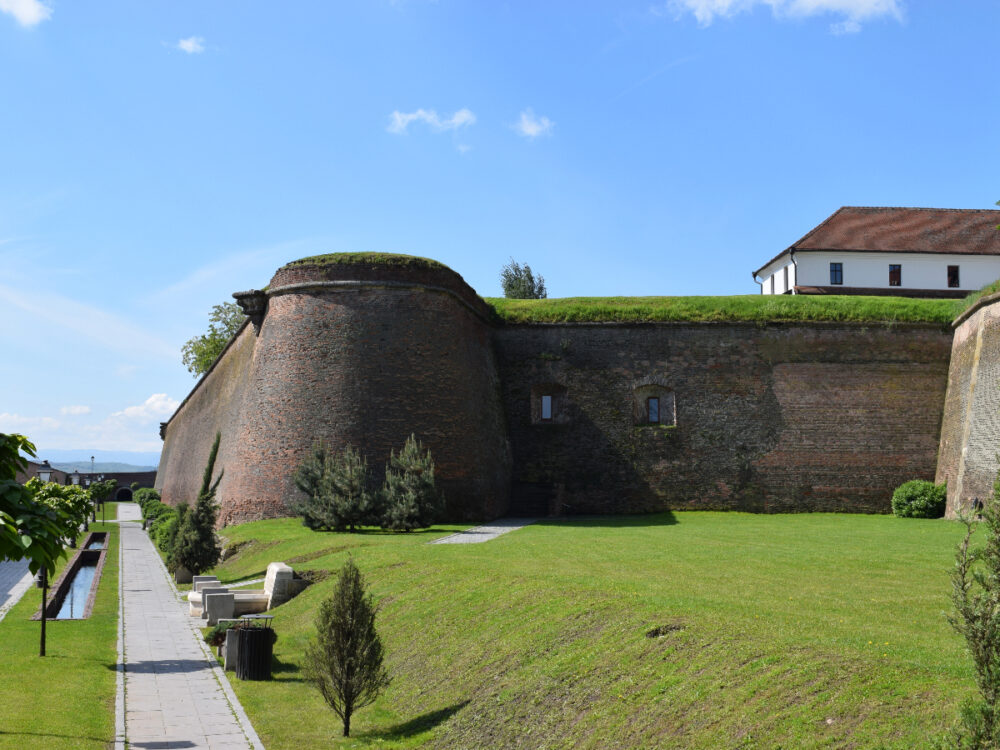
Driving around Europe is a dream, roads are generally good unless you get too far off the beaten track and highways connect most countries seamlessly.
Be aware that you could run into road tolls or need to buy a ticket or vignette to use European roads.
Flying around Europe using budget airlines has been ridiculously cheap in recent years. We don’t think there’s much difference between the budget airlines, but we use Wizz Air often.
European travel is also easy by train, the train even goes under the channel to London’s St Pancreas station. On top of this, Europe is popular for river cruises, canal boats, and Mediterranean cruise journeys, stopping at major ports.
Getting Around Europe By Air
Flying is super affordable on the short hop budget routes of Europe. Sometimes prices are unbelievably low with all of the budget airlines being fairly similar.
I would never particularly choose one airline over another and you get what you pay for. Be aware that the airports used by the budget airlines may be inconveniently situated outside major cities.
Travel in Europe By Water
Have you considered a canal boat holiday? Maybe a coastal sailing adventure or a grand river cruise?
There are plenty of options for water-based vacations in Europe and let’s not forget the possibility of cruising the Mediterranean or Scandinavian fjords.
I should also mention ferries, the ferries from the UK to continental Europe are good, cheap and easy to book, we’ve even turned up at a ferry port and bought a ticket on the spot.
Travel Europe By Road
This is our area of expertise I guess. We would drive from Romania to London and back every year. Not many people can say they’ve done that.
We did it by car but to explore Europe by camper van, motorhome or even motorbike or bicycle would be a superb opportunity. That’s one for our bucket list.
Travelling Europe By Train
Europe is pretty well set up for train travel. A rail network covers most of Europe’s main destinations and you can even let the train take the strain from London, via the Channel Tunnel, into France, Belgium and beyond.
Special passes exist for extended train travel in Europe and can offer great value.
If we consider Russia as part of Europe, (Russia is a transcontinental country) don’t forget the Trans Siberian or Trans Mongolian Express.
The other classic train journey of course is the Orient Express. The privately operated Venice Simplon Orient Express travels from London to Venice but the full journey originally went to Constantinople, modern Istanbul.
European Visas
Europe can be divided into three areas. The European Union, European Economic Area and the Schengen Area.
These 3 areas overlap and countries can be members of more than one.
If you enter a Schengen country you receive a Schengen 90 day visa – usually. Please check and double-check all this information, we did our best to give a rough guide for the main nationalities visiting Europe.
The Schengen Area is the largest with 26 countries and includes all EU countries except the UK, Romania, Bulgaria and Croatia. Sweden, Norway and Switzerland are also part of the Schengen area.
People of most nationalities will be awarded a 90 day visa that is valid for all countries in the Schengen zone which means you have 90 days total even if you hop between member countries.
It is worth noting that there are no land borders with crossing formalities across most of the EU with the main ones being into and out of the countries listed above.
Monico, San Marino and the Vatican City aren’t members of the Schengen area but have no hard borders with surrounding countries.
Visa rules for countries not in the Schengen area are effectively the same, normally allowing 90 days travel at a time in that one country.
To reset your Schengen visa you’d need to leave the 26 countries and travel to a non-member such as Romania etc. listed above.
On re-entry, you can generally claim another 90-day visa, but you can ony do this once every 6 months or 180 days, twice in a year.
Basically, if after 90 days in Europe you wish to remain, you’ll need to swap to a non-Schengen country or countries and stay there for 3 months before you can get back into the Schengen zone for another 90 days.
Make sense? Thought not.
We highly recommend Romania, we lived there for 3 years, go there.
If you hold an EU passport then you are free to travel, work, and live, in any other EU country.
Brexit is still undecided at time of writing, British people will likely lose all privileges if Brexit happens.
Please check all visa information for Europe thoroughly as it is very complex. Don’t take this site as a definitive guide, we’re just giving you a brief overview.
Highlights of Europe and Must-Visit Destinations
A few of our favourite places in Europe receive full cover below.
Road Trips in Europe
Our content on driving in Europe, our experiences with our Europe road trips is in the blog posts below. We can also add some general tips for driving in Europe to this page.
There are certain rules and regulations for driving in Europe that you need to be aware of and of course, know that you need to pay to drive on some roads and in some countries.
Border crossings go almost unnoticed within the Eu these days, you can cross from one country to the next without even realising. It’s only where you cross into the non-Schengen countries that you’ll likely encounter border formalities.
Countries Where Buying a Vingnette May be Required
Austria, Bulgaria, Czech Republic, Hungary, Romania, Slovakia, Slovenia and Switzerland.
Vignettes are European driving authorizations. Some are stickers, others aren’t.
I found the list above on an authoritative website ( source ) but our experience, from living in Romania and spending a lot of time in this part of the world, is that you don’t need them for every road. But obviously, check this for yourself.
I was fined in Hungary for not having one simply because I bought mine the morning after I crossed the border. Despite having one, I still had to pay the fine. So read up on regulations and stay within the law.
In other parts of Europe, you will encounter road tolls. A good map app will help you find toll-free routes and honestly, avoiding the Autobahns is a far more enjoyable way to tour Europe.
European Travel Blog FAQ
The language barrier. will it be a problem in europe.
Generally, no, you shouldn’t run into too many language difficulties in Europe.
In cities and popular tourist places, you’re unlikely to need anything more than English. However, if you’re venturing into remote, less-visited or rural areas, you possibly will.
We have found that youngsters speak English well, more so than old people. In Europe kids learn English, it’s just the way it is. But do try to be polite, a please and thank you never goes unappreciated, and if you have the time, learn more.
Countries with alphabets other than standard Arabic can get very interesting! You may encounter Latin, Greek, Cyrillic, Armenian, Hebrew, Arabic, and Georgian scripts.
Road signs and other information signs may not be in English if you get deeper into Europe.
Can you drive freely between countries in Europe?
Yes, mostly, we could drive across any border in mainland Europe, within the European Union, without stopping or queuing.
Now, post-Brexit, things will change for us as we are UK passport holders.
The only borders where we had to stop were those for non-Schengen countries. So entering Romania we had to stop and show our passports and for entering the UK, but not leaving.
Is it best to visit Europe in summer or winter?
Both. Europe is an awesome destination at any time of year, depending on what you want to do. In winter there is excellent skiing of course, Christmas markets, beautiful snowy mountains and hearty food.
In summer the Mediterranean Sea has incredible beaches and swimming.
My pick for sightseeing would be spring or autumn outside school holiday. That way you’ll avoid the crowds while avoiding weather extremes.
Are power sockets the same throughout Europe?
Most of Europe has round, two-pronged power sockets and plugs. If you need to pack a power adapter, this is the sort that will be most useful.
This sort also works for many countries in Asia. Remember that the UK has 3 prong square pin plugs and sockets, for that you’ll need a different power adapter.
Budget for European travel?
Costs wise, there are big variations across Europe. We find prices in Europe to be higher than most of Asia, slightly higher than the US, lower than Australia, with Eastern and Central Europe being much cheaper than Western Europe.
The UK is quite expensive but having lived in both, I think it’s cheaper than Australia. It’s impossible to give a daily budget for Europe as a whole.
To keep costs down, buy your own food in supermarkets. Eating out will add up fast in Europe, you won’t find Asia’s superb $1 meals here.
Generally, no, you shouldn’t run into too many language difficulties in Europe. In cities and popular tourist places, you’re unlikely to need anything more than English.
However, if you’re venturing into remote, less-visited or rural areas, you possibly will. We have found that youngsters speak English well, more so than old people. In Europe kids learn English, it’s just the way it is.
But do try to be polite, a please and thank you never goes unappreciated, and if you have the time, learn more.
Countries with alphabets other than standard Arabic can get very interesting! You may encounter Latin, Greek, Cyrillic, Armenian, Hebrew, Arabic, and Georgian scripts. Road signs and other information signs may not be in English if you get deeper into Europe.
Yes, mostly, we could drive across any border in mainland Europe, within the European Union, without stopping or queuing. Now, post-Brexit, and post-pandemic things will change for us as we are UK passport holders.
The only borders where we have had to stop were those for non-Schengen countries. So entering Romania we had to stop and show our passports and for entering the UK, but not leaving.
Europe is good to visit is both summer and winter. Europe is an awesome destination at any time of year, depending on what you want to do.
In winter there is excellent skiing, of course, Christmas markets, beautiful snowy mountains and hearty food.
In summer the Mediterranean Sea has incredible beaches and swimming. My pick for sightseeing would be spring or autumn outside the school holiday. That way you’ll avoid the crowds while avoiding weather extremes.
Most of Europe has round, two pronged power sockets and plugs. If you need to pack a power adapter, this is the sort that will be most useful. This sort also works for many countries in Asia. Remember that the UK has 3 prong square pin plugs and sockets, for that you’ll need a different power adapter.
Budget for European travel
The UK is quite expensive but having lived in both, I think it’s cheaper than Australia.
It’s impossible to give a daily budget for Europe as a whole. To keep costs down, buy your own food in supermarkets. Eating out will add up fast in Europe, you won’t find Asia’s superb $1 meals here.
Europe Travel Blog. Conclusion
We hope you find what you’re looking for in our Europe Travel Blog section. Our Europe tips, guides, and destinations grow constantly. If there is a particular place you want to see in Europe and we haven’t created a blog post about it yet, go ahead and ask in the comments. Thanks.
- Facebook 115
- Pinterest 57
If you'd like to hire a car during your stay, use this car rental comparison tool to find the best deal! We also suggest you take a look at this company to get a quote for all kinds of the more tricky adventure or extended travel insurance. Try Stayz / VRBO for an alternative way to find rentals on homes/apartments/condos in any country!
Related Posts:

Alyson Long
Port douglas scuba diving, northern territory destinations top 10, 29 thoughts on “europe travel blog”.
The affordable Europe group tour was a great option for our family vacation. We got to visit popular destinations like London, Amsterdam, and Prague, and enjoyed family-friendly activities and attractions. The tour provided a balance between sightseeing and leisure time, making it a value-for-money experience.
The surreal experience promised by Venice makes the expense seem like nothing. I have booked the turkisturkish airline for my next voyage. You have shared that peak times lead to rise in the prices. If we choose other times, won’t we miss out on some of the fun? I was hoping to explore the city’s vibe during Christmas.
Turkish are a good airline, we’ve used them London – Istanbul (which is in Europe!). If you want to see special Christmas events, then yes, you’re going to have to pay the extra costs of flights around Christmas. The best way to look at fllight prices for Europe is to go to Skyscanner and look at prices month over month and sign up for their alerts.
I just finished reading your informative blog post, and I wanted to take a moment to thank you for sharing such valuable insights with your readers. If your readers are looking for the best international eSIM for Europe, then feel free to visit our website to avail the best deals and offers on travel eSIMS.
This is my first time reading a blog regarding Europe Visit. I am got all the information that i was looking for. Thanks for sharing with us. Regards
Same as all of the airlines, Lufthansa airline also provides the Lufthansa Cancellation Policy within 24 hours that allows the passengers to cancel their Air tickets within the starting 24 hours of the purchase of the ticket without any Lufthansa Cancellation fee.
Planning a trip from US to Paris and then traveling to Spain, Portugal and crossing into Morocco(Casablanca) from Gibraltar by Ferry. This is our first Europe/Africa trip and I’m excited, but not sure about all the details. I can build the basics of the trip but cars from here to there and ferry rides from one continent to the other is worrisome. Any tips would be helpful and much appreciated. We are not going til November/December 2022, hoping Covid restrictions are totally lifted.
It’s so far into the future that who knows? Car hire is globally ridiculously expensive right now, so that’s something to look into. But by then it may have improved. I’ve never taken that ferry crossing, but I love Morocco, much more than that part of Europe, I’m not a massive fan of France so although I’ve actually spent a lot of time there, being from the country right next door, I never put much of it on the website. Brittany is my favourite part but that would be a bit out of the way if you plan to head south from Paris. I’ve crossed the France / Spain border many times by car. that’s no problem. Catalonia, northern Spain is my favourite, particularly for the Dali connection, and the food! Sounds like an adventure and nicely diverse. Have fun!
I need updates Germany reopening
Just a little tip – if you’re traveling in a group, during European summer, I would highly recommend renting a boat with captain, at some destination’s it’s even cheaper than staying at a hotel, airbnb and you’ll get to see places you wouldn’t get to otherwise and it’s just absolutely amazing!
Good morning, im going to europe to travel in the summer. and i need a babysitter in hotel. Did anybody tried this services? Thank you in advance
No John. I’ve never trusted my kids with strangers. Not even family.
What a great and informative article! We’re really into traveling around Europe because of all the great cities and destinations. This article is super helpful for anyone who wants to travel around Europe. We’re hoping to do a lot more traveling around our continent in 2021, so here’s to hoping for a great travel year in 2021!
Hey Europe is a big place, and it is made up of many individual parts. The European Union has about as many countries and languages as there are states in places like the USA and a population greater than the United States by a good margin. Thanks
Very Nice and informative blog will definitely save it for my next visit to Europe. Thanks for sharing.
Travel in Europe through the roadway is a better choice according to my point of view. By the way thanks a lot to the author for sharing such kind information with all of us.
Europe is the most beautiful continent in the world, the history of the continent is unforgettable forever and the destination and the way you give in this article are really amazing.
Traveling across Europe through land-based means can be both rewarding and difficult, owing to the various traffic laws and the Schengen policy, as noted in this article. It is rewarding in how it lets you immerse yourself more fully in the experience of exploring Europe, traffic laws and all. However, one other way to experience travel is via a European river Cruise, something that our cruise company is quite familiar with. However, due to the recent pandemic, it seems that traveling through Europe is ill-advised, at least for the time being.
A very useful and informative post! So many inspiring points to take away from this ?
There are lots of ways to travel Europe but the safest and fastest way of travelling is by air mode as it is costly but it is safest in all as you need to make your trip before so that you can save money in your air booking moreover you can also hire travel agent for all booking as they save money during your trip.
Flying is indeed cheap, but the environmental impact should be a consideration. We travel overland as much as possible in Europe and travel by rail or bus is good there. We don’t recommend our readers use travel agents, you don’t need them and of course they take a cut making prices higher. It’s been 20 years since we used a travel agent.
As per my knowledge and experience, I think that famous places in Europe are known for its particular reason such as festivals, Christmas eve and many others. So it is better to visit those places on special occasion.
Your travels and lifestyle are excellent. If I have money one day, I want to travel. I always follow You have a great website. Thank you.
Very useful tips for traveling a lot of helpful for travelers thanks for sharing this great info.
Good to have this info. more things to explore in Europe!
My husband has a work trip that ends on February 12 in Frankfurt. I will fly in on the 12th and we have 8 days in Europe. We both have been to a few countries but not together. We were thinking about going to Southern Italy, Spain or England. Any advice?
This is a very informative blog with great information.
The European Union has recently undertaken a new travel authorisation regime and aiming at streamlining the travellers visiting the countries in the European Union. Labelled ETIAS or European Travel Information and Authorization System, it is a visa waiver system that will replace the Visa-Free travel available for the 61 countries globally. It is expected that towards the end of 2021, the ETIAS System will be fully implemented.
Once the Brexit fiasco comes to some sort of resolution we should be able to provide more solid information to our readers. We’re still in limbo.
Leave a comment Cancel reply
Save my name, email, and website in this browser for the next time I comment.
15+ Travel Blogs from Europe That We Love Reading
Europe has so many historical sites to see, unbelievable views to take in, delicious foods to eat, and adventures to be explored. It seems impossible to know where to even begin when it comes to planning a travel adventure here.
Which countries should you visit? What are the tourist attractions and off-the-beaten-path explorations? What food should you try that you may not get anywhere else? There are many ways to help guide you in your decision making. Travel blogs are especially a good way to get prepared for your upcoming trip because they provide true and genuine opinions on locations and activities. It is a great source for all you need to know and more. We’ve come up with some of the best travel bloggers in Europe for you to take a look at.
Blog #1: World of Wanderlust
This blog is full of positivity when it comes to getting lost around the world. Designed for women, they provide readers with a massive amount of travel information, reviews, and make them develop a sense of desire to travel to unknown locations, away from the hustle and bustle of popular cities.
Some of our favorite must-read blog posts: 10 Best Places to Visit in Croatia Travel Guide to Santorini
Blog #2: Globetrotter Girls
A blog started by two girls, a travel couple Dani and Jessica set off to start a voyage with no end date. Now traveling separately, Dani still looks to share her solo adventures with the world. This tells of the empowering story of leaving her job to travel the world unknown, hoping to inspire others to do the same and enjoy the beauty of the globe they live in.
Some of our favorite must-read blog posts: Cuba: 10 Things to Know Before You Go 5 Epic European Road Trips
Blog #3: Drive on the Left
American couple Drew and Julie turned European bloggers after three years of living in London . Their blog is neatly separated into different categories, specific to each location they’ve traveled, stories, and food and drink, so it’s easy to navigate. They encourage those who are avid explorers, armchair travelers, and those looking inspiration.
Some of our favorite must-read blog posts: A Taste of Thailand on a Private Bangkok Street Food Tour Becoming Safari-ers in Kruger National Park
Blog #4: Young Adventures
European blogger Liz Carlson tells it like it is on her website about her misadventures and exciting escapades when traveling solo around the globe. Featuring entertaining travel stories with chaos, sarcasm, and brutal honesty, readers are enticed by this traveler’s personality and appreciate the raw detail of her travels.
Some of our favorite must-read blog posts: Solo and Single in the Most Romantic Place in the World The Matterhorn: An Adventure Around Switzerland’s Most Perfect Peak
Blog #5: Surviving Europe
The blog title speaks for itself. The website features an entire section on surviving different countries around Europe, including not-so-common ones like Slovenia and Malta . It also features a separate blog for travelers looking to leave their comfort zone.
Some of our favorite must-read blog posts: Discovering Prague: 4 Days in the Bohemian Capital 12 Hardest Things About Living Abroad
Blog #6: The Wanderlust Effect
A perfect guide for travel, the Wanderlust Effect features put-together categories divided into different travel styles such as affordable travel, family travel, luxury travel, and adventure travel. It also features guides and inspiration as well as categorized experiences like arts and culture, beach trips, bucket list experiences, cities, food and wine, and wildlife and nature.
Some of our favorite must-read blog posts: Itinerary Inspiration: 4 Days in Siem Reap 6 Perfect US Destinations for a Group Gateway in 2020
Blog #7: Budget Traveller
Need tips and tricks for a budget-friendly trip? This blog features helpful information on luxury hostels in different continents, including Europe. The creator, Kash, and his team of professionals get hired as speakers for travel conferences. So if you want to feel inspired for your next trip, look out for his conferences!
Some of our favorite must-read blog posts: Cheap Eats Guide to Malta My 75 Tips to Save Money When Travelling in Europe
Europe Travel Blog #8: Europe Up Close
Check out this insider’s guide to travel in Europe. Much of the content is recommended by locals around the continent, so you know they’re getting the best information for a unique getaway. This European travel blog features tips on gear, hotels, and deals to ensure your perfect trip.
Some of our favorite must-read blog posts: Plan Your Algarve Road Trip Why Now is the Best Time to Visit Balkans
Blog #9: Trip and Travel Blog
All your questions will be answered on this blog that features everything from travel apps to tourist reviews, to traveling with kids and more. Their blog features unique articles that you won’t find anywhere else and are both entertaining and factual reads.
Some of our favorite must-read blog posts: How to Raise Your Children to Love Travelling How to Plan a Holiday on a Budget and Make Sure You Stick With It
Blog #10: Travelling Buzz
Written in English, Travelling Buzz is an informational blog featuring adventures, destinations, and even a podcast. It also includes an entire section dedicated to Bulgaria, making it a perfect place for travelers to gain insight on this “not so touristy” country.
Some of our favorite must-read blog posts: Road trip in Bulgaria: 5 Places to Visit in Rhodope Mountains Feeling Adventurous? Here’s 5 Great Outdoor Activities in Turkey
Blog #11: Travelling Weasels
Laura’s goal with her blog is to help you “weasel” your way out of habits that make you unhappy. She’s eager to push you to do something you love, like traveling the world and exploring the beauty of it.
Some of our favorite must-read blog posts: Prediction: Camping Will Trend After Covid-19 London to Amsterdam on the Bus
Blog #12: Heather on Her Travels
Heather’s goal is to target the 50+ traveler looking for some excitement. She provides a mix of UK getaways, European city breaks, small ship cruising, hiking trails, road trips, and more, proving no matter the age, you’re never too old to travel the world and experience some magnificent adventures.
Some of our favorite must-read blog posts: 15 of the Best Day Trips from Munich By Train Scandinavian Tours to Enjoy in Finland, Sweden, Norway and Denmark
Blog #13: Indefinite Adventures
Sam, vegan digital nomad, tells stories and provides guides from adventures beyond. He gives you practical advice as well as looks to inspire readers in his blog posts (even if it’s more than just travel expertise) Life is always an adventure, and he wants you to realize that too!
Some of our favorite must-read blog posts: 10 Mistakes to Avoid When Traveling Solo Is It Possible to Become Eco-Friendly While Traveling
Blog #14: Cool Kidz Cool Trips
Taking your family on a trip is a great bonding experience. This blog provides great family travel tips, such as advice for when your kids fly solo, how to plan a trip with ease, and how to take your kids to do different activities.
Some of our favorite must-read blog posts: Kids Flying Solo: What You Need to Know 6 Things I Stopped Giving A Sh*t About After I Started Traveling With Kids
Blog #15: Inside Out in Istanbul
Author Lisa Morrow dedicates her website to the city of Istanbul. Her goal is to introduce visitors to the lesser-known sights and areas of the city. After writing three books about Turkey, it’s easy to say she’s a trusted guide.
Some of our favorite must-read blog posts: Istanbul Parks You Can Visit By Public Transport Istanbul Metro Stops: Art Underground
Blog #16: Annie Andre
Annie is a bilingual North American with Thai and French-Canadian roots currently residing in the south of France. She shares her stories about life and travels with a French twist, along with living life with her family from a move from California to the other side of the world.
Some of our favorite must-read blog posts: Cost of Living In France: How Much It Cost Our Family To Live in France For One Year 10 Largest Cities In France You’re Pronouncing Wrong + what makes them so popular
There are many travel blogs based on European travel, making research for your next trip a lot easier. The trusting nature of all these blogs help future travelers experience through articles, exciting them for what’s to come. But they’re also informative, inspirational, and can ease the stress that comes with planning.
With so many countries in Europe to explore, these bloggers can depict the best of them all, and can not only help plan your upcoming trip but the many trips you’ll make down the road. So if you’re thinking about traveling to the wonderful continent of Europe but have questions, make sure to check out these blogs on Europe for your answers.
Latest on the Blog

Welcome to Europe Diaries

MYTHICAL MONDAYS
Delve into myths,legends and folklore with me..

Let's explore together!

TRAVELLER’S TALES
Let's sit around a campfire and narrate our travel stories.join us.

EXPERIENCES
Cherish moments, collect experiences.come with me on my journey..

TASTES OF THE WORLD
Because i love food, europe diaries travel blog:, stay curious and explore more.
An Indian in Switzerland exploring Europe, one country at a time. Stay on and check out this Switzerland travel blog for lots of travel and living tips as well as Europe travel inspiration.

Hi there! My name is Menorca.Thanks for visiting Europe Diaries: a travel blog for the culturally curious. If you like exploring different destinations, finding out about different cultures, off-beat experiences, myths, all the best vegetarian food and reading stories from fellow travellers from all over the world, then you are at the right place!
A bit about myself:I am named after a beautiful Spanish island, which I am yet to visit. My parents took me sailing around the world right when I was 3 months old until I was nearly 6. Though we did see and do a lot of cool things, it’s a pity I only remember very little of it. Anyhow, I guess that’s how the travel bug was implanted in me!
I’ve been away from home for the last 13 years now, though have been in Europe for 9 of those years. And in these 9 years, I happened to stay either along the River Rhine or the Neckar in Germany and Switzerland. In fact, that’s how I started this blog.
I absolutely love planning trips and get into my research ninja mode as soon as someone asks me for suggestions. So, if you are looking for someone to help you out in planning a customised trip across Europe or India or if you have any questions about living or travelling in Europe, just shoot me a mail or check out my Europe Trip Planner page.
If you are a story lover too, join the Travellers’ Tales group on Facebook and let’s be friends. Also, the Travellers’ Tales series on this blog is waiting for you to share your travel stories with us. Go ahead and submit yours too!
Read more on my ‘About me’ page
EXPLORE AND EXPERIENCE SWITZERLAND
Switzerland is certainly one of the most beautiful countries you’ll visit. Here’s all about living in Switzerland and Switzerland travel tips.

What is Switzerland famous for? Here are 11 of many things!
Switzerland is a very unique small Alpine country situated next......

Things you can get away with if you live in Basel
1.Going for a quick swim in the river and then getting back to work!Surprised? ...

Things I realized after moving to Switzerland: 3 years of expat life
It’s been three years since I moved from Heidelberg,Germany to......

The Best Things to do During Winter in Switzerland
If you’d like to visit a winter wonderland and take......
EXPLORE GERMANY
Let’s go on a virtual journey through Germany!
Click for travel guides, travel tips and more.

5 ways to experience the Mainz Fastnacht: the best time to make friends in Germany
Never had I ever seen such super friendly, social, and......

Explore Castles on the Rhine: How to visit the beautiful castles in Germany
Did you know that there are more than 25,000 castles......

Hamburg for Culture Vultures and Harry Potter fans
For all you folks who love to explore culture, art......

Lifelong friendship from inside Berghain, Berlin : Travellers’ Tales
The intimate spirit amongst the revellers of the clubbing scene......
EXPERIENCE EUROPE AND #SHARETRAVELLERSTALES
People and experiences make all the difference..Check out some of the different experiences you can have in Europe, whether you like history, adventure, culture or food.

The Best Gift for Travel lovers: One gift to rule them all
While giving someone time and attention can be the most......

Italy Wonders: Beautiful places to consider for your Italy vacations
Italy is a country of dreams. With one of the......

Travellers’ Tales: Embracing Ancient Rituals and Wildlife in Mexico
This story is part of the Travellers’ Tales series, where......

Everything You Need To Know Before Visiting Barcelona
Coined as the capital of Catalonia, Barcelona is a buzzing......

Three Days in London Itinerary: The Ultimate London Experience
Is London on your mind? If you fancy visiting London,......

Embrace your odyssey: No one right way
Of late, I’ve pondered this thought in my mind, Recalling......

What to do if you are pickpocketed while travelling
While travelling, you may always be careful about your belongings......

How one traveller managed to travel the world for free: 10 tips for very low budget travel
Embarking on a journey to explore the world is a......
CULINARY TRAVEL
Food is an integral part of any culture. Come, let’s explore the different cuisines of Europe- especially vegetarian food and local delicacies in each country.

Schloss Bottmingen: Fine dining in a Swiss castle that knows how to Rock
Fairytale castles in the modern-day are not all necessarily in......

What to eat in Venice: Traditional food in Venice and How Not to Get Ripped Off
If you, like me, are interested in exploring new places......

Poland food traditions: A Polish girl talks all about food in Poland
Close your eyes. Are they closed? Good. Imagine a street,......

Droolworthy Vegetarian dishes from 24 countries in Europe
We could all agree on the fact that love for......

- 00800 0310 21 21 1-855-577-9489 1-877-288-3037 1-877-288-3037 1-877-474-2969
- | NCL Travel Blog">11-Reasons to Cruise to Alaska this Summer | NCL Travel Blog
- | Norwegian Cruise Line">14-Day Authentic Alaska - Northbound Cruise Tour | Norwegian Cruise Line
- | Deck Plans | Norwegian Cruise Line">14-Day Authentic Alaska - Southbound Cruise Tour | Deck Plans | Norwegian Cruise Line
- | Norwegian Cruise Line">20-Day Transpacific from Tokyo (Yokohama) & Alaska | Norwegian Cruise Line
- | NCL Travel Blog">11 Reasons to Cruise to Alaska this Summer | NCL Travel Blog
- View All Results
- Preferences
- Latitudes Rewards
- Special Offers
- Personalised Recommendations
- Make reservations before you cruise
- 1 (current)
* Terms & Conditions Package not available on sailings less than 5 days or charter sailings.

2025 Northern Europe Cruises: Discover Iceland, Norway & Belgium
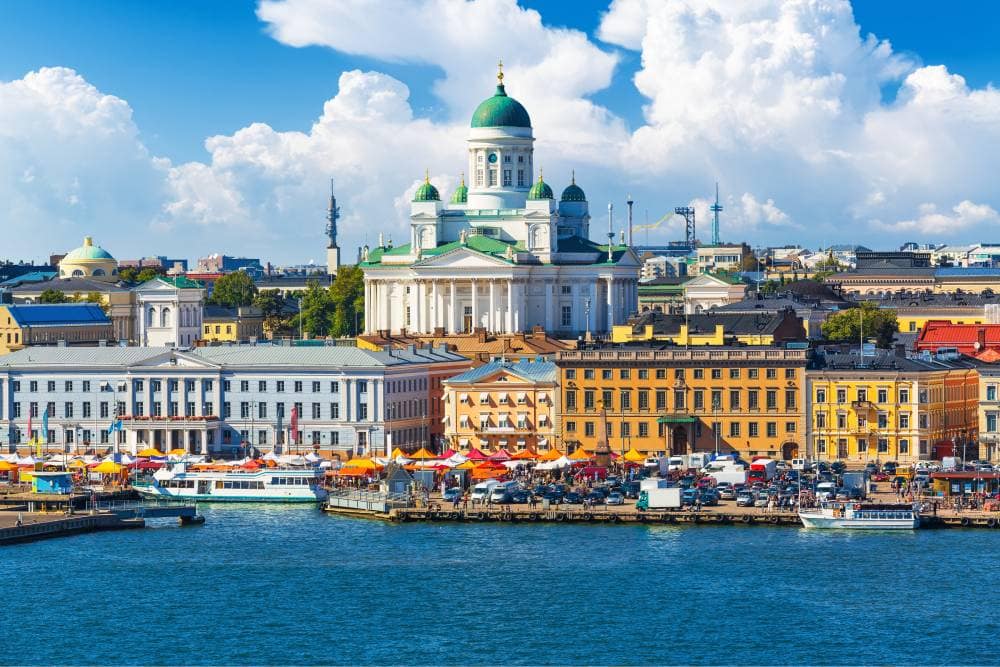
There's no better way to travel the world than aboard a Norwegian Cruise Line ship. If you're interested in seeing the sights of northern Europe, you won't want to miss the opportunity to cruise with Norwegian - which consistently wins the award for Europe's top cruise line from World Travel Awards year after year. With multiple departure ports of call, you can start your cruise from your city of choice before traveling on a voyage you won't forget.
Here, we'll take a closer look at Norwegian's 2025 Northern Europe cruises , highlighting some of the most notable ports of call and helping you plan your cruise.
Ready to start planning? Explore all Northern European cruises .
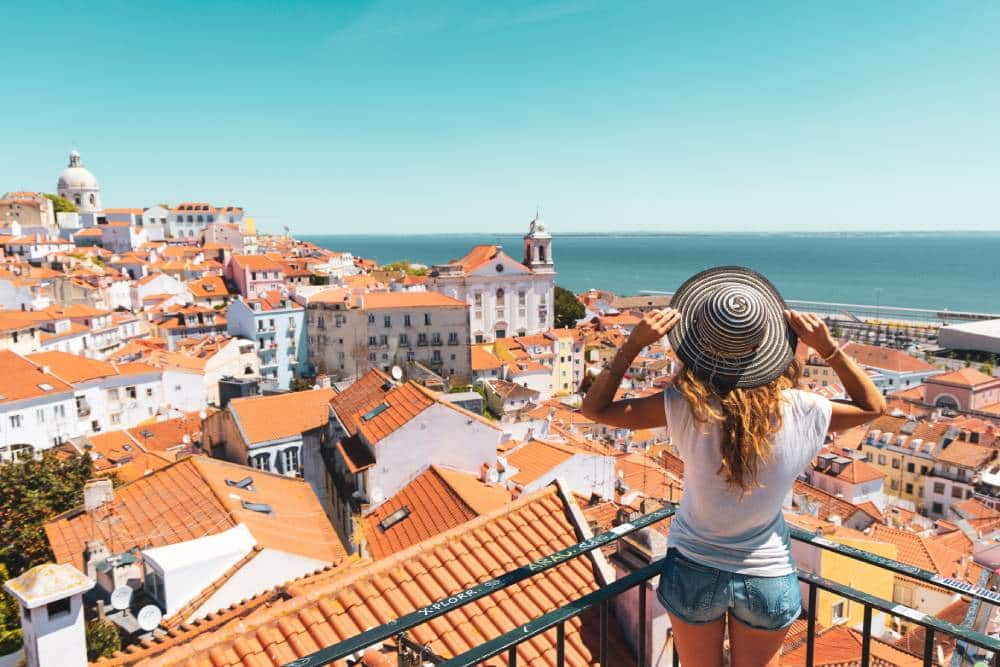
2025 Northern Europe Departure Ports
If you'd like to explore Northern Europe from the sea, you'll have 10 potential ports of departure from which you can start your journey. You can begin your cruise in northern Europe or from locations further south or west if that's more convenient for you. When cruising to the north of Europe in 2025, these are the cities from which you can depart:
- Copenhagen, Denmark.
- Lisbon, Portugal.
- London (Southampton), United Kingdom.
- New York City, United States.
- Oslo, Norway.
- Paris (Le Havre), France.
- Reykjavik, Iceland.
- San Juan, Puerto Rico.
- Stockholm, Sweden.
- Tromsø, Norway.
So, get ready to pack your bags and head to the departure port that best suits your travel plans in 2025.

2025 Northern Europe Cruise Ports
With a staggering list of port cities in 2025, the most challenging part of planning your trip will be deciding which cities to visit during your northern European cruise vacation. Perhaps you want to take a northern lights tour in Reykjavik, or maybe you can't wait to visit the Tower of London. Whatever your dreams are for your 2025 cruise, Norwegian has a port city that will leave you breathless. Here are some highlights of what could be on your agenda in 2025.
Reykjavik, Iceland
With its rugged natural beauty and vibrant towns filled with rich cultural experiences, a visit to Iceland won't disappoint. There are few places with the diverse topography and landscape found in Reykjavik , where you can see flowing lava, hot springs, impressive waterfalls, and rocky mountains waiting for you to snag the perfect photo to document your cruise. While the natural setting is enough to fill your senses, don't miss out on the top-tier dining experiences that you'll find in the quaint villages.
London (Southampton), England
London (Southampton) serves as a starting point for several of our cruises around northern Europe, which comes as no surprise given the vast number of activities you can participate in before starting your cruise vacation. Visit with royalty at Buckingham Palace, see London from a bird's eye view aboard the London Eye, or even take in a Broadway-style show in the West End. Sip some tea and munch some scones as you dream about the adventures awaiting you along your voyage.
RELATED CRUISES: 12-Day Baltic from Stockholm to Paris: England, Germany & Belgium 12-Day British Isles Round-Trip London: Ireland & Scotland 14-Day Northern Europe from New York to Reykjavik: Iceland, Greenland & Canada
Amsterdam, The Netherlands
Amsterdam is a city built upon a series of canals that make for the perfect morning or afternoon stroll. Take in the city's scenic beauty and marvel at the stunning architectural design of the buildings that border the canals. Consider renting a bike and traveling around the city like many of the locals. If you prefer to relax, a canal cruise might be more your speed. Don't miss the opportunity to see some of the most astounding museums in the world, including the Anne Frank House and the Van Gogh Museum.
Galway, Ireland
This port city on Ireland's picturesque west coast has a rich history that dates back to the thirteenth century. Explore a traditional Irish farm, search abandoned castles, or tour remarkable cathedrals during your stop in Galway. If you're up for an adventure, explore Aillwee Cave, an underground sanctuary carved from melting water during the Ice Age, where you can see interestingly shaped stalactite and stalagmite formations and catch a glimpse of the bones of an extinct species of bear. Before you leave, no trip to an Irish village would be complete without some music and ale at the local pub.
Helsinki, Finland
Known as Scandinavia's "White City of the North," Helsinki has a fascinating architectural style featuring buildings erected using local light-colored granite. Tour the National Museum of Finland to learn more about the cultural history of the Finnish people and view artifacts dating back to the Stone Age. Visit one of UNESCO's World Heritage Sites, the Suomenlinna fortress, a fort located on a quiet island where you can find a bit of solitude. Or take a walk through the central Market Square, where you can sample local produce, taste local food, and shop for souvenirs in the comfort of heated tents.

- Search Please fill out this field.
- Manage Your Subscription
- Give a Gift Subscription
- Newsletters
- Sweepstakes
- World's Best
- World's Best Awards 2024
This City Was Voted Best in the U.S. for the 12th Straight Year by T+L Readers, Who Say It ‘Can Compete With Any European Capital’
See the No. 1 pick and 14 more top cities in the United States, according to our annual "World’s Best Awards" survey for 2024.
How Voting Works
What readers loved.
- The Full List
Wherever Travel + Leisure readers go in the United States, they look for cities with palpable history, walkable downtowns, regional cuisine, and robust cultural and artistic institutions. Many states in the South and West were highly represented this year, but readers did recognize a few classic Northeast destinations this year. One characteristic that seemed to capture readers’ hearts, no matter the destination? A strong identity, and a sense that the city was unlike others elsewhere in the country.
Taylor McIntyre/Travel + Leisure
Every year for our World's Best Awards survey, T+L asks readers to weigh in on travel experiences around the globe — to share their opinions on the top hotels, resorts, cities, islands, cruise ships, spas, airlines, and more. Over 186,000 T+L readers completed the 2024 survey. A total of more than 700,000 votes were cast across over 8,700 properties (hotels, cities, cruise lines, etc.).
Cities were specifically rated on the criteria below:
- Sights/landmarks
- Friendliness
For each characteristic, respondents could choose a rating of excellent, above average, average, below average, or poor. The final scores are averages of these responses.
Readers rewarded past favorites like Chicago (No. 9), Honolulu (No. 4), and New Orleans (No. 9), all of which returned to the list, and once again showed their love for Charleston, which ranked No. 1 for the 12th year in a row. But for the first time, Annapolis (No. 12) and Aspen (No. 10) appeared in the rankings, indicating that readers are increasingly drawn to new regional culture and outdoor hubs. New Mexico and Texas also had a strong showing this year — each state claimed two spots on the list, for Sante Fe and Taos, and Fort Worth and San Antonio, respectively.
The Full List
1. Charleston, South Carolina
The Holy City earned the top spot yet again, thanks to its combination of historic architecture, walkability, and Southern hospitality — and, as many readers noted, its unbeatable culinary scene. “Charleston can compete with any European capital for its arts, entertainment, active lifestyle, and food,” said one voter. Many visitors noted that they had come to the city several times for different types of trips, such as couples’ weekends, family vacations, or friends’ getaways, and that they found new things to experience each time. Another reader chimed in that Charleston was, “a great example of a city that holds to their roots, but also strives to be current and welcoming to everyone.”
WBA Hall of Fame honoree. Reader score: 87.99
2. Santa Fe, New Mexico
Sean Pavone/Getty Images
This artsy Southwestern destination has ranked high on our list for nearly 20 years, and it’s not just because of the 320 days of sunshine it receives each year, though it certainly doesn’t hurt. “Santa Fe is like its own country within a country,” gushed one reader. “It’s such a unique blend of culture and history that you don’t see in the rest of the USA.” Another visitor called its downtown, with Pueblo-style buildings and independent galleries, “a photographer's dream and a shopper's delight.”
WBA Hall of Fame honoree. Reader Score: 87.43
3. Savannah, Georgia
Heather Durham/Travel + Leisure
Readers adore Savannah for its leafy parks, great shopping, carriage rides, and cemetery tours. “This is one of my family's favorite cities,”said one reader, adding “We try to get to Savannah and Tybee Island each year.” The Starland District, in particular, is thriving these days, with the debut of Hotel Bardo and must-visit restaurants like Brochu’s Family Tradition.
WBA Hall of Fame honoree. Reader Score: 85.27
4. Honolulu, Hawaii
okimo/Getty Images
This island capital earned top marks for the natural beauty of its beaches, volcanoes, and hiking trails. But travelers also praised its shopping and Native Hawaiian traditions. “Aloha spirit abounds!” explained one visitor. “You can relax, go to a luau, go for a hike, go shopping, dive with turtles and dolphins. There is something for everyone.” Another traveler appreciated their interactions with locals, saying, “The people are the friendliest I have found on any of my travels, and the culture is mesmerizing.”
Reader Score: 85.17
5. New Orleans, Louisiana
Tessa Desjardins/Travel + Leisure
“It is ALL about food and drink in NOLA,” declared one reader. It’s a sentiment that’s widely shared — visitors most often praise the city’s eclectic mix of cuisines (like Creole, Vietnamese, Filipino, and barbeque) and its legendary bars and restaurants. Many travelers also appreciated the city’s laid-back vibe (it is the Big Easy, after all.) “New Orleans is a great walking around, let's-pop-into-this-place-kind-of-city,” according to one visitor. Others noted its superb history tours, festivals, and markets.
WBA Hall of Fame honoree. Reader score: 84.53
6. San Antonio, Texas
dszc/Getty Images
Historic sites like the Alamo and the Mission are two notable entry points into this south Texas city. But contemporary attractions also abound — Museum Reach, a three-mile pedestrian park along the San Antonio River, has many public art installations. Readers also love strolling along the River Walk, which one reader said was “probably one of the nicest places we have ever visited in the States. It was exceptionally maintained and absolutely beautiful.”
Reader Score: 83.20
7. Fort Worth, Texas
benedek/Getty Images
“Cosmopolitan meets ranch” is how one reader described this thriving metropolis, whose slogan is “Where the West Begins.” Though Fort Worth retains its cowboy image with one of the country’s best rodeos and a daily cattle drive through the streets of the stockyard district, it’s not all ten-gallon hats — the cultural institutions, such as The Kimbell Art Museum, are world-class. “There are almost 20 theaters. You can attend the ballet, the opera, and symphony orchestra concerts,” noted one visitor.
Reader Score: 83.19
8. New York, New York
Alessandra Amodio/Travel + Leisure
The city that never sleeps lives up to its name: from Broadway shows, to iconic museums, to next-level shopping, to some of the world’s best restaurants, you’ll never be bored in the Big Apple. As one reader summed it up: “What can one say that hasn't already been said? NYC is a great place to visit. Costly, yes. Worth it? Absolutely. Reasonably clean? Yes. Fun? That goes without saying.”
WBA Hall of Fame honoree. Reader score: 83.16
9. Chicago, Illinois
tunart/Getty Images
Whether you want to take in some of America’s great architecture on a Chicago River tour, catch a baseball game at Wrigley Field, or find the best deep-dish, you can do it all in this dynamic, walkable city, which also received praise for its easy-to-navigate public transportation. “I love Chicago. The food, the sports. Did I mention the food? From a cultural perspective it’s fantastic because of how many people are from all over the world. Multiple parts of town have different vibes that keep it fresh and exciting to visit,” said one reader.
WBA Hall of Fame honoree. Reader Score: 82.44
10. Aspen, Colorado
DCrane08/Getty Images
While this mountain town is mostly known for its first-rate skiing (and celebrity-spotting at Hotel Jerome,) T+L readers also noted its year-round appeal and spectacular scenery. From hitting the trails, to checking out the renowned Baldwin Gallery, to having a drink at the legendary Woody Creek Tavern, readers found Aspen to be “a very well-rounded town full of great shops, museums, and restaurants.”
Reader Score: 82.41
11. Taos, New Mexico
Mona Makela Photography/Getty Images
This small city packs a punch. Located in the Sangre de Cristo Mountains, it’s an adventure paradise for hiking and skiing, as well as rafting the Rio Grande. It’s also home to Taos Pueblo, a 1,000-year old continually inhabited Adobe community, and a rich Indigenous culture. Readers were also charmed by the town’s many independent galleries and shops. “Taos is for athletes, artists, and open minded travelers,” said one reader.
Reader Score: 81.36
12. Annapolis, Maryland
Richard T. Nowitz/Getty Images
Appearing on our list for the first time, this coastal city — known as “the sailing capital of the United States”— received top marks not only for its nautical charms, but also its historic sites, walkable downtown, and of course, crab cakes. Annapolis is also home to the U.S. Naval Academy, and many readers touted football games as a can’t-miss activity. “I love the culture and activities available in Annapolis. Whether you're visiting for educational purposes or coming to enjoy the Navy football games, you will definitely have a good time,” said one voter.
Reader Score: 81.26
13. Nashville, Tennessee
Readers can’t get enough of the nightlife in Music City. Whether it’s a lively honky tonk on Broadway, a Grand Ole Opry performance, or an open mic night at a quiet cafe, visitors are spoiled for choice when it comes to hearing top-notch artists. And while things can certainly get rowdy, “it’s not all bachelorette parties and cowboy hats,” as one reader notes — there are dozens of places to catch great theater and art. The city’s strong culinary scene and efficient airport also received praise.
Reader Score: 81.18
14. Boston, Massachusetts
Violet Smirnova/Travel + Leisure
This New England capital captivates all types of travelers, whether you’re a history buff intent on walking the Freedom Trail, a baseball lover looking to catch a game at Fenway Park, or a gourmand seeking the best Italian food in the North End. “It's a perfect mix of old and modern,” claims one reader. Visitors also appreciated that the highly walkable city has distinct neighborhoods, each with a unique feel. Plus, Boston has welcomed several noteworthy hotels in recent years, including the first Raffles property in North America, which opened this September.
Reader Score: 80.75
15. Alexandria, Virginia
Photos by Coyle/Getty Images
This historic city, which is just five miles from Washington D.C. but feels worlds away, strikes the perfect balance between sophisticated and small-town. Readers were drawn to its picturesque waterfront of Old Town, and also praised attractions like the The Torpedo Factory Art Center and the Mount Vernon Trail, ideal for bird watching and easy bike rides.
Reader Score: 80.44
Related Articles
- Nation & World
- Was this the summer European tourism reached a breaking point?
Protesters staging hunger strikes against tourism developments. Local officials threatening to cut off water to illegal vacation rentals. Residents spraying tourists with water pistols.
With Labor Day, the unofficial end of summer, upon us, European hot spots like Barcelona, Spain; Athens, Greece; and the Greek island of Santorini have reached a breaking point, making tourists the targets of a major backlash. While final visitor numbers for this summer aren’t in, they are expected to surpass 2019 levels; in the second quarter alone, international arrivals exceeded 2019 by 6%, according to the European Travel Commission.
Climate change has also put tremendous pressure on popular destinations. July was the planet’s 14th consecutive month of record heat, according to the National Oceanic and Atmospheric Administration, and Spain and Greece experienced some of their hottest days on record, with temperatures higher than 114 degrees Fahrenheit.
While tourism is a critical economic driver for many European destinations, some residents argue that more tourism revenue needs to be invested in communities and infrastructure.
“We have been invaded by tourists; the situation is out of control,” said Camila Guzman, 32, a resident of Palma, on the Spanish island of Majorca. Guzman participated in the July protests that drew more than 50,000 people. Prices have been pushed up so much, she said, that “we cannot afford to live here anymore.”
Elsewhere, locals have rallied against disrespectful tourist behavior and new hotel and villa construction. Some places are imposing visitor caps. For example, Île-de-Bréhat, a French island off the coast of Brittany with just 400 residents, recently imposed a limit of 4,700 visitors per day.
The pandemic, too, exacerbated local grievances after residents got a taste of life without tourists. When travel restrictions were lifted, the crowds came back in droves.
“This summer is the perfect storm, with a combination of issues, including excessive numbers, bad behavior and climate change,” said Richard Butler, professor emeritus in hospitality and tourism management at the University of Strathclyde in Glasgow, and the author of several books on overtourism.
At the end of a frenzied summer, we look at some of the breaking points.
Athens, Greece
The influx of tourists this summer put Athens under tremendous strain as it grappled with excessive heat, as well as water shortages. Wildfires, which broke out across Greece, have engulfed the forests in the Attica region, even spreading to the suburbs of Athens.
As temperatures soared above 107 in July, authorities shut down the Acropolis during the hottest hours. Last year, the ancient site introduced a ticketing system to manage visitor numbers, with a cap of 20,000 per day.
Protests against overtourism flared in Athens in July, with “No tourists” graffiti emblazoned on buildings and residents calling for measures against vacation rentals, which they say are taking over entire neighborhoods.
Santorini, Greece
Santorini, famous for its whitewashed buildings and sunsets, was one of the most overtouristed destinations in Europe last year, drawing nearly 3.5 million visitors to an island of 15,500. Cruise ships — 800 vessels brought in 1.3 million visitors — were a major source of foot traffic, according to the Hellenic Ports Association.
More recently, residents were outraged when Panagiotis Kavallaris, president of the island’s municipal community, posted on social media, urging locals to limit their movements to accommodate more than 11,000 cruise passengers who were expected to arrive July 24. The post was later deleted, the Greek newspaper Kathimerini reported, and the mayor, Nikolaos Zorzos, said the island would reinstate a cap of 8,000 passengers per day, down from what would have been 17,000 starting in 2025.
Elsewhere in Greece, at least six foreign tourists, including BBC television journalist Michael Mosley, were believed to have died from heat exhaustion. The dry conditions and pressure put on water supplies by tourism developments also led to water shortages across the country, causing islands like Sifnos and Crete to declare a state of emergency.
In the first six months of this year, the number of tourists visiting Spain increased by 13.3% and exceeded 42.5 million, according to the Ministry of Tourism.
Many cities are taking action. For example, Seville is cracking down on vacation rentals, after a court ruling cleared the mayor’s office to conduct a review and cut off the water supply to illegal vacation rentals. And in Barcelona, the Neighborhood Assembly for Tourism Degrowth organization called for an overhaul of the city’s tourism model, including restricting the number of cruise ships and regulating short-term rentals. The city government said it would eliminate such rentals by the end of 2028 and announced a tourism tax increase that will go into effect in October.
In many places, residents staged protests and collected signatures to pressure government officials to take action.
Demonstrations have been held in Majorca, Málaga, the Canary Islands and Barcelona. In April, activists in Tenerife staged a hunger strike to protest two major tourism developments.
“Residents are living in makeshift shacks because they can’t afford their homes while millions of euros are being invested into megatourism projects,” said Javier Toro, a 23-year-old Tenerife resident who participated in the protests.
Venice, Italy
In April, Venice, a city of 50,000 that received 20 million travelers last year, introduced a 5 euro entrance fee (about $5.60) aimed at dissuading day-trippers from visiting at peak times.
Most Read Life Stories
- Do you need to take a magnesium supplement, or is food good enough?
- Hawaii considers new ferry service to connect Maui, Molokai and Lanai
- Killer Burger, a Portland chain, expands to Tacoma, Olympia
- These Mason jar salads make back-to-school lunch prep quick and tasty
The pilot program, which ended in July, was declared a success by the city’s mayor, Luigi Brugnaro, who said it generated 2.43 million euros, but critics said the fee did little to curb numbers. Local officials said that funds from the fee would help them plan for next year.
Many residents said the city should focus on more pressing issues like regulating short-term rentals and improving local services.
“The 5 euro fee is a joke for tourists; they will spend more money on a beer,” said Lorenzo Cataldi, a tour guide. He also criticized the city’s new 25-person cap on tour groups, saying it did little to prevent overcrowding: It just meant groups were split between two guides but still stayed close together.
Lisbon, Portugal
The narrow streets of Portugal’s capital became so congested with tuk-tuks and tourists that some residents said they were reluctant to leave their homes this summer.
“It’s like walking outside of a football stadium after a match — complete chaos and I don’t recognize my neighbors anymore,” said Ann Cal, 68, a resident of the Alfama neighborhood, which she said has been overrun with vacation rentals. “Some days I do not want to leave my apartment.”
A housing group in Lisbon has started a campaign to hold a referendum that would ban vacation rentals in residential buildings. The group said it has collected enough signatures to present the project to the local council.
Last month, the Lisbon City Council announced that it would limit the number of licenses and parking spaces issued to tuk-tuk drivers to help ease congestion.
Amsterdam, one of the most heavily touristed cities in the world, drew a record 23 million visitors last year. After the pandemic, it introduced a series of stringent measures, including a 20 million cap on annual visitors.
Over the past year, tourism taxes have been raised; the number of cruise ships, which are now barred from docking in the city center, has been limited; new hotel construction has been outlawed; and vacation rentals have been restricted.
The city is also cracking down on bad behavior with a “Stay away” campaign, primarily aimed at unruly British male tourists between the ages of 18 and 35, who have developed a reputation for drinking too much and harassing residents.
The online campaign targets potential offenders with videos showing the consequences of anti-social behavior, including arrests and fines. The city has also banned the use of marijuana on the street and is taking steps to discourage alcohol sales in the red-light district.
Money blog: Roaming charges for all major networks listed
Roaming charges for all the major networks and a report suggesting the state pension will rise £400 next year are among today's Money blog posts. We'll have personal finance and consumer news and tips through the day - leave a comment on anything we're covering below.
Wednesday 4 September 2024 12:57, UK
- State pension could rise by more than £400 next year
- How your pension could be taxed
- European country cracks down on holiday rentals
Essential reads
- How data roaming charges compare by network
- 'They have 22-inch pizzas - hello!': Israeli-born chef picks budget eats
- Big Issue seller reveals how it works financially and his technique
- Best of the Money blog
Tips and advice
- Basically... Free school meals
- Cheapest holidays dates before Christmas
- Money Problem : 'My dog died but insurance still wants a year's payment'
- How else to eat Greggs on cheap as O2 Priority scraps freebies
Ask a question or make a comment
When you've forked out hard-earned money for a holiday abroad, the last thing you want is to be landed with an expensive phone bill at the end of it.
Brexit brought an end to the guarantee of free roaming for UK residents who visit countries inside the EU – but the good news is some providers still offer free services up to a certain point for travellers in Europe.
Here, we take a look at the UK's major phone providers and what they're offering customers when it comes to roaming across the globe...
Vodafone splits its roaming charges into four different "zones".
For pay monthly customers who took out their contract on or after 11 August 2021, how much you pay depends on which zone you're headed to:
Zone A - Ireland, the Isle of Man, Iceland and Norway - no extra charge
Zone B - Europe and EU member states (49 destinations) - £2.42 a day for customers without the Xtra Euro Roam plan
Zone C - 32 destinations including the US, Australia, Barbados and South Africa - £7.39 a day for customers without the Xtra Global Roam plan
Zone D - 75 destinations from Argentina to Uzbekistan and Vietnam - £7.39 a day
All charges are dependent on customers adhering to the 25GB fair usage limit.
Countries outside zones A-D are deemed "rest of world zones" by Vodafone - these include destinations such as Belize, Nepal and Angola. Data is charged for each megabyte (MB) used, with charges typically £1.20 per MB.
Those with contracts before 11 August 2021 pay nothing for Zones A and B, and £6 a day for Zones C and D.
Unlike some other major providers, O2 hasn't brought back EU roaming charges for customers using up to 25GB data abroad.
That means both pay monthly and pay-as-you-go customers heading to its Europe Zone (more than 40 destinations) are free to call, text and use data as they would in the UK.
For anyone travelling further afield, the charges depend on what plan you're on.
Customers whose contract includes the O2 Travel Inclusive Zone can roam in 27 destinations outside Europe, including Australia, New Zealand, the US and southern American countries.
If it's not part of your plan, you can purchase a travel bolt-on for £6 a day which allows for data roaming in 63 destinations.
Contract holders with O2 Travel Inclusive Zone Ultimate can roam freely in 75 destinations outside Europe.
Three's Go Roam Europe service lets pay monthly customers use their data allowance in 49 destinations at a cost of £2 a day.
Those using the Go Roam Global service (22 destinations outside Europe) pay £5 a day while Go Roam Global Extra (92 destinations outside Europe) comes at a cost of £7 a day.
The charges apply to customers who took their contracts out on or after 1 October 2021 - there are no charges for customers who were with Three before that.
Three imposes a 12GB fair usage cap for all customers on a monthly contract when roaming abroad and 9GB for those on pay-as-you-go.
Anyone with an EE plan that began before 7 July 2021 will have EU data roaming included.
For newer customers, it costs £2.47 a day to use data roaming while travelling in its European zone, up to the 50GB fair usage limit.
For customers heading abroad to Europe for 11 days or more, it's cheaper to add on EE's Roam Abroad Pass which costs £25 a month (it can be cancelled at anytime, meaning you can scrap it after your holiday if you want to).
Customers heading to Australia, New Zealand, Canada or the US and wanting to use their data can select the Roam Abroad Pass as an add-on.
Alternatively, they can pay £6.74 a day for 500MB of data only in Canada and the US, £8.45 a day for 500MB in nine countries including Australia, India and China, or use 150MB of data for £8.45 a day in 45 other destinations including Brazil, Japan and Jamaica.
Customers can use their phones abroad in 47 destinations without paying extra roaming charges with BT Mobile's Roam Like Home scheme.
If travelling outside Europe, BT mobile customers can use still use their phones but will need to buy a Mobile Travel Data Pass to access their data.
It costs £6 for 500MB that must be used within 24 hours. It covers 12 countries, including the UAE, US, Australia and Canada.
Giffgaff lets customers roam for no extra charge within the EU and other selected locations, with a 5GB fair usage cap. If this is exceeded, roaming is charged at 10p per MB.
Anyone travelling outside the 37 locations in the EU and beyond will have to add credit to their account to use their phones as normal.
They'll also be charged a rate per minute, text or MB, which varies depending on where you go.
Tesco Mobile
Until 2025, anyone travelling to one of Tesco's 48 Home from Home destinations can use their phone as normal with no extra charge.
Roaming charges apply for travel outside these countries - but Tesco will cap data usage at £40 for anyone who hasn't already put in a safety buffer, to avoid anyone coming home to a shockingly high bill.
Generally, data costs around £5 per MB and texts 40p, but costs for calls can vary.
Sky's Roaming Passport Plus lets customers access their UK allowances for £2 a day in more than 55 popular holiday destinations, including EU countries, the US, Australia and more.
The pass is valid for 24 hours. Unused data can be carried over but the £2 charge still applies.
Anyone heading to other far-away destinations will see out-of-tariff roaming charges apply.
If you've got a phone or SIM-only contract with iD Mobile you can use your UK monthly allowances in 50 destinations worldwide, up to 30GB.
Roaming has to be activated beforehand through your online account or the iD Mobile app.
Lyca Mobile
Anyone with a Lyca Mobile SIM can roam in the EU or use data in India as normal up to the 12GB fair usage limit.
What about e-SIMS?
Standing for "embedded SIM", e-SIMS are virtual SIMS that have been built into most newer devices like phones, tablets and smartwatches.
While perhaps not so useful inside the UK and for short EU trips, they could be a way to avoid those hefty out-of-tariff fees for travel further afield.
As they can be activated without a physical card, it makes them particularly useful for overseas trips as you can easily switch between several different carriers if you need to.
To use one, you'll need to purchase an e-SIM for the country you're heading to and adjust the settings on your phone to allow it to be used.
There are many different providers offering e-SIM services at varying prices for different destinations, making them difficult to compare.
On a similar theme to our last post... The pension pot needed for basic retirement has risen more than 60% in the last three years, two thinktanks have found.
This means the average pension pot required has risen from £68,300 in 2020-21 to £107,800 in 2023-24.
Rising housing, energy, food and transport prices have all contributed to the increase, a study by the Resolution Foundation and Living Wage Foundation suggests.
Researchers say a person requires an average income of £19,300 a year in retirement to sustain a "basic" standard of living.
However, this figure differs depending on whether a person owns or rents their home, and if they live alone.
For example, single home-owning pensioners need £13,500 annually while pensioner couples that own their home need £20,600.
At the moment, the full rate of the state pension is £221.20 a week, or £11,502 a year.
The rest of the "basic retirement" fund would need to come from other sources such as a private pension with a balance of £107,800.
To reach the amount needed in retirement, the research found a person working full-time on the Living Wage (£11.44 an hour) would need to contribute 9% of their earnings a year from the age of 25 to 68.
State pensions could rise by more than £400 next year, according to reports.
The triple lock means pensions rise each April by whatever is highest out of inflation, average wage growth and 2.5%
This year that looks set to be wage growth, with figures set to be released next week.
The Treasury's internal working calculations, seen by the BBC, show this would lead to a £400 increase for anyone on the full state pension.
That would take the full state pension to around £12,000.
Pre-2016 retirees who may be eligible for the secondary state pension could see a £300 per year increase.
None of this has yet been confirmed but the Office for Budget Responsibility's spring forecast of earnings growth was 3.7% for the triple lock reference period - which all ties in with the suggested hikes above.
Any decision on a pension increase will be made by Pensions Minister Liz Kendall ahead of October's budget.
Yesterday, Chancellor Rachel Reeves reiterated the government's backing of the triple lock - which this year resulted in a £900 rise.
The Treasury has been contacted for comment.
Keep scrolling for news of a popular European country clamping down on Airbnb and this week's Cheap Eats
By James Sillars , business news reporter
A US-led stock market sell-off is hitting values on this side of the Atlantic for a second day.
The main worry, which was first seen a month ago, continues to be the performance of the world's largest economy.
Weaker than expected US manufacturing data sparked drops in oil and commodity costs, which bled into share prices.
The big losers, however, were tech shares.
Analysts said a decline of almost 10% in AI chipmaker Nvidia's stock was down to some profit-taking on fears the best news for the company's outlook was in the rearview mirror.
Brent crude dropped almost 5% to $73 a barrel.
The FTSE 100 largely mirrored Tuesday's declines at Wednesday's open, falling 0.8%.
Energy and mining stocks were among those worst affected again.
Every Wednesday we ask top chefs to pick their favourite Cheap Eats where they live and when they cook at home. This week we speak to Israeli-born Eran Tibi, executive chef at Michelin-recommended Bala Baya, and Kapara, in London.
Hi Eran, can you tell us your favourite places in London where you can get a meal for two for less than £40?
One of my favourite place has to be Voodoo Rays (Dalston, London Fields and Peckham) - it serves New York-style pizza which you can't get anywhere. They have 22-inch pizzas - hello!
You're able to go in, pick slices of whatever pizza you want; they also do a great negroni. It's great value and the quality is fantastic and consistent, so it's a no brainer.
I also love Afghan Kitchen in Angel - it's cheap, cheerful, delicious and authentic. It's unique as not many people are familiar with Afghan cuisine; all the dishes are great value and it's a fantastic place to explore new dishes.
What is your go-to cheap eat to cook at home when you have a night in?
If I'm making something at home, I go to Ridley Road Market in Dalston to pick up my ingredients. Here you'll find the best produce for the most reasonable price.
The go-to for a cheap home cooked eat is roast beef with roasted seasonal vegetables and a slow braised bulgur wheat, covered with some dips (either fresh or from what's left in the fridge).
With dishes like this, the key is to always have a good pantry and look to the freezer; throughout the year, freeze seasonal vegetables and ingredients so when you need an easy and cheap dinner (even out of season), simply take them out and get cooking!
We've spoken to lots of top chefs - check out their cheap eats from around the country here...
We've seen Spain do it, along with France and the Netherlands, and now the Czech Republic has announced plans to crack down on holiday lets.
The Czech government has proposed new regulations that could limit the amount of Airbnb-style rentals available in popular cities such as Prague.
The proposals could cap the number of days a property can be rented out each year and require a minimum amount of space per guest.
Authorities could also be allowed to place more local taxes on the rentals.
Owners would be required to register their accommodation and guest details via an online platform.
They will then be given a registration number, which would have to be displayed on their listings.
The new system, if given the green light, will aim to bring down the cost of living for locals by freeing up accommodation and increasing tax revenues.
EuroNews said officials estimate that between 40% to 70% of online bookings are not reported, which could equate to €32m in unpaid taxes each year.
Labour is facing a drop-off in confidence among business leaders amid plans for tax rises and improvements to workers' rights, according to a survey.
The Institute of Directors noted a leap in optimism in July among its membership as the new government came to power.
But its latest economic confidence index showed a slump from a three-year-high, falling into negative territory in August.
Read more below...
The number of hospitality establishments across the UK has grown for the first time in two years - a sign of recovery for the industry.
Between March and June there were 462 new openings of pubs, restaurants, bars and hotels in the UK - an average of five per day - according to the Nationwide Caterers Association.
The organisation said casual dining establishments in particular have experienced growth in numbers for the first time since COVID.
"While there is still a way to go for the sector to return to pre-COVID heights, tangible growth in hospitality premises is clearly a positive development and hopefully a sign of more growth to come," the association said.
Aldi is in talks with the government over planning reform in a bid to speed up the opening of new stores.
The discount supermarket is offering investment to tackle "under-resourcing" across local authorities, which is currently leading the planning application process to take more than a year, Aldi UK's national real estate director George Brown wrote in LinkedIn.
Mr Brown said to "unlock" significant investment in the UK economy, the retail sector should be given more weight in the decision-making process to reflect the number of jobs it delivers.
Aldi said in February that it plans to open 500 more stores in 2024, which would also lead to the creation of 5,500 new jobs.
An "urgent review" into dynamic pricing has been launched as the backlash from the price of Oasis concert tickets continues.
The Competition and Markets Authority said it was looking into the ticketing market to make sure consumers were being treated fairly.
Oasis fans were disappointed at the weekend when tickets for their reunion tour more than doubled while on sale due to dynamic pricing systems.
Tickets shot up from £148 to £355 on Ticketmaster within hours of their release - and while fans were stuck in long online queues.
Dynamic pricing is common within industries beyond music - it's used frequently in the travel industry, with hotel rooms and airline tickets.
"The CMA is urgently reviewing recent developments in the ticketing market, including the way dynamic pricing is being used in the primary market," a CMA spokesperson said.
They noted that consumer protection law requires businesses to be fair and transparent in their dealings with consumers.
They are also required to give clear and accurate information about the price people have to pay.
"The CMA wants fans to get a fair deal when they buy tickets," they added.
"We have already acted against major resale websites on the secondary market to ensure consumer law is being followed.
"But we think more protections are needed for consumers here, and made recommendations to the previous government in 2021 about the changes that are needed."
The government has promised to look into dynamic ticket pricing, with Culture Secretary Lisa Nandy saying it would be reviewed in an upcoming consultation.
Female founders have been dealt a "blow" after Innovate UK delivered just half the number of grants pledged in a funding competition for women business owners.
The Women in Innovation programme was aimed at encouraging women leading small to medium-sized businesses to apply for grants of up to £75,000 each.
The government-backed agency said it would be offering the grants to 50 female founders when it launched the competition earlier this year - but subsequently changed the wording to say "up to 50".
Only 25 ended up being chosen to receive funding, out of 1,452 applicants.
Dearbump and Femtech founder Emma Jarvis said in a LinkedIn post that the situation will have left many female entrepreneurs "pretty disheartened"
The post has been shared more than 100 times and has garnered nearly 830 reactions.
"Innovate UK's decision is a blow not just to existing female founders but future ones," Ms Jarvis said. "It's really disappointing to hear that the number of awards was cut in half and that the wording was changed after the results were announced."
She said the "only way forward" was for Innovate UK to honour its original commitment of 50 awards.
Meanwhile, Patricia McGirr, Repossession Rescue founder , said female founders "deserve more than lip service".
She said Innovate UK's decision "isn't just trimming fat, it's cutting opportunity and ambition".
"This broken promise to the women fuelling our future is a step backward for innovation and a slap in the face to countless women who dare to lead."
And Debbie Porter, managing director at Destination Digital Marketing , said the move was "hard to believe".
"Innovate UK ought to go back over those 1,427 other applications as a matter of priority to fix this situation," she said.
In a statement to the Money blog, Innovate UK apologised and said its decision was a "mistake". It also said it would honour its original commitment to award 50 applicants with funding.
The added: "We recognise the impact this has had on the many applicants and on the community as a whole, and we apologise wholeheartedly.
"We confirm we will be funding a total of 50 awards."
Our Money blog reporter Jess Sharp spoke to women who are leading figures in their respective fields for our eight-part Women in Business series earlier this year. You can read some of their stories here...
Chancellor Rachel Reeves has refused to rule out heavier taxation on pensions in the October budget.
"I'm not going to speculate on what will be in the budget, but I'm absolutely determined to ensure that working people are better off," she told MPs in the House of Commons.
"This budget will be a budget to fix the foundations of the economy after the mess left by the previous government."
How could your pension be taxed further? Let's have a look at some of the possibilities...
Leading left-wing thinktank The Fabian Society said the government could raise at least £10bn a year by reducing pension tax relief for high earners.
At the moment, pension tax relief depends on an individual's tax band.
But Ms Reeves could create a single flat rate of tax relief for all tax bands, the society said.
"First, the rate of income tax relief should be equalised for people on all tax bands - for example at 30% of gross earnings, midway between the 20p and 40p rates of tax," the thinktank said in a report.
Ms Reeves could also reduce the maximum tax-free lump sum you can get on retirement from £268,275 to £100,000 or 25% of pension wealth.
"The Institute for Fiscal Studies estimates that this might eventually save over £2bn per year, which would be targeted entirely at people with high lifetime earnings or assets," the report added.
Another suggestion was to charge national insurance on private pension incomes .
The organisation said it would lead to today's affluent pensioners making a higher tax contribution.
Other possibilities could be to levy income tax on all inherited pensions.
It said pension pots could also be liable to inheritance tax in the same way as other assets.
What else did the chancellor say today?
Away from refusing to rule out pension tax changes, Ms Reeves also confirmed a cap on corporation tax.
Speaking during Treasury questions, she said the tax would be capped at its current level of 25% to "give business the confidence to grow".
Corporation tax applies to the annual profits of UK resident companies and branches of overseas companies.
The 25% main rate is payable by companies with taxable profits above £250,000.
A small profits rate applies for companies with profits of £50,000 or below, meaning they will pay 19%.
Up until April 2023, the previous corporation tax main rate was 19%.
Be the first to get Breaking News
Install the Sky News app for free

List of available regions
Main regions.
- Worldwide (English)
- Europe (English)
- América Latina (español)
- Canada (English)
- Canada (français)
- EE.UU. (español)
- USA (English)
ASIA & PACIFIC
- इंडिया (हिंदी)
- Indonesia (English)
- Indonesia (Bahasa Indonesia)
- Malaysia (English)
- Malaysia (Bahasa Melayu)
- New Zealand
- Philippines (English)
- Pilipinas (Filipino)
- business security -->
- Avast News -->
- Security News -->
- Tips & Advice -->
- Viewpoints -->
- Privacy -->
- Threat Research -->
- Diversity & Inclusion -->
- Blog Authors
- Visit Avast website
Ransomware attacks continue to increase in the US, UK, and Canada

The Gen Threat Report, formerly known as the Avast Threat Report, has revealed a 100% increase in ransomware activity for the US, UK, and Canada; 66% in Australia; and a whopping 379% in India.
Ransomware is one of the most dangerous and fast-growing threats in the digital world today. It’s a type of malware that can lock you out of your files or entire system until you pay a ransom, usually in cryptocurrency.
Unfortunately, as detailed in the Gen Q2/2024 Threat Report, the threat of ransomware is not going away—in fact, it’s getting worse. Let’s take a closer look at what ransomware is, how it’s evolving, and what you can do to protect yourself.
What is ransomware?
Ransomware is a form of malicious software that, once it infects your device, encrypts your files or locks you out of your system entirely. The attackers then demand a ransom, often in Bitcoin or another cryptocurrency, in exchange for a decryption key that will supposedly restore your access.
These attacks can be devastating. Imagine losing access to your family photos, important work documents, private information, or your entire digital life in an instant. That’s the reality of a ransomware attack—and paying the ransom doesn’t guarantee you’ll get your data back. In many cases, victims who pay the ransom never receive the promised decryption key.
The rise of ransomware in 2024
Ransomware attacks are on the rise, with a notable 24% increase in the second quarter of 2024 alone. The sharpest spikes were seen in the United States, United Kingdom, Canada, and India. However, no country is safe from this growing threat. Recently , ransomware attacks have become more sophisticated, targeting both individuals and businesses with increased precision.
One reason for this increase is the evolution of ransomware tactics. Cybercriminals are constantly refining their methods to maximize their impact. For example, some attackers now not only encrypt your files but also threaten to release sensitive data publicly if you don’t pay up multiple times. This double-extortion tactic puts even more pressure on victims to comply with their demands.
Real-world examples of ransomware from 2024
One of the most prevalent strains was LockBit, a ransomware family that has been wreaking havoc across the globe. Interestingly, after the identity of one of its key developers was revealed, the number of LockBit attacks surged, possibly as an act of retaliation or desperation.
Another concerning development was the rise of Twizt, a botnet that shifted its focus to spreading LockBit ransomware through malicious email attachments. This change in tactics shows how flexible and adaptive these cybercriminals can be, always looking for new ways to infiltrate systems and extort money.
Despite the alarming rise in ransomware attacks, there were also some victories. Law enforcement agencies around the world have been actively working to disrupt these criminal operations. In Q2/2024, several high-profile botnet providers were taken down, leading to arrests and the seizure of infrastructure.
Additionally, cybersecurity companies have continued to develop free decryption tools, like the one released for the DoNex ransomware. Created by our own team of experts, this tool may give the victims a chance to recover their files without paying a ransom.
How ransomware spreads
Ransomware can infect your device in several ways, not so different from other types of malware. Here are a few of the most common methods:
- Phishing emails: Many ransomware attacks begin with a phishing email that contains a malicious attachment or link. When you open the attachment or click the link, the ransomware is downloaded and installed on your device.
- Malicious websites: Sometimes, visiting a compromised or fake website is enough to get infected. These sites might exploit vulnerabilities in your browser or prompt you to download an infected file.
- Drive-by downloads: In some cases, simply visiting a website can trigger a download of the ransomware without any interaction on your part. This can happen if the website is compromised and has malicious scripts embedded in its code.
- Infected software or apps: Downloading software or apps from untrusted sources can also lead to a ransomware infection. Always make sure you’re downloading from reputable sites or official app stores.
- Exploited vulnerabilities: Cybercriminals can exploit security flaws in your operating system or software to install ransomware. This is why keeping your software up to date is so critical.
7 tips to help protect you against ransomware
While ransomware is a serious threat, there are actions you can take to help protect yourself. Here are 7 things you can do:
- Back up your data regularly. The best defense against ransomware is having up-to-date backups of your important files. Make sure these backups are stored offline or in a secure cloud service. If you’re hit by ransomware, you can restore your files without paying the ransom.
- Be cautious with email attachments and links. Be wary of unsolicited emails, especially those with attachments or links. Even if an email looks like it’s from a trusted source, verify its legitimacy before opening anything.
- Keep your software updated. Regularly updating your operating system, antivirus, and other software is crucial. These updates usually include security patches that protect against known vulnerabilities.
- Use difficult and unique passwords. Ensure that your accounts are protected with strong, unique passwords. Consider using a password manager to help you keep track of them. Enable two-factor authentication (2FA ) wherever possible.
- Install reliable security software. A robust antivirus can help detect and block ransomware before it can do any harm. Make sure your security software is always up to date.
- Avoid untrusted websites and downloads. Be cautious when downloading files or software, especially from unfamiliar websites. Stick to reputable sources to reduce your risk of infection.
- Keep yourself informed. Awareness is key. Make sure you and your loved ones understand the risks of ransomware and how to avoid it. Knowing what to look for can help prevent an attack before it happens.
What to do if you’re targeted by a ransomware attack
No one wants to go through a ransomware ordeal, but it can happen to anyone. If it does happen, here’s what you should do:
- Disconnect from the internet. Immediately disconnect your device from the network to prevent the ransomware from spreading to other devices on your network.
- Don’t pay the ransom. Paying the ransom doesn’t guarantee you’ll get your data back. It also encourages these criminals to continue their activities. Instead, restore the data from your backup or look for decryption tools that might help you recover your files.
- Contact a professional. Reach out to a cybersecurity expert or a reputable IT professional who can help assess the situation and determine the best course of action.
- Report the incident. Report the ransomware attack to local law enforcement and any relevant authorities, such as the FBI in the US or the National Cyber Security Centre in the UK. This can help in tracking down the attackers and preventing future incidents.
Protecting against ransomware
Ransomware is a growing threat that requires our constant attention and vigilance. By staying informed and taking proactive steps to protect your data, you can reduce the risk of falling victim to these attacks. Remember, the best defense is always a good offense—stay alert, stay updated, and stay safe.
Related articles
You’re telling me that ad was fake malvertising is sneakier than ever | avast.
The quality of malicious ads has improved immensely, making it harder for users to distinguish between what’s real or fake.
YouTube, The Backdrop Of A Scammer’s Play | Avast
The video sharing platform has become a trendy scene for cyberattackers as of late.
The Essential Guide to Ransomware
Ransomware is a threat to individuals, businesses, and even hospitals. Learn how ransomware works and keep your files safe from hackers.
Most popular
The hidden pitfalls of travel apps, video: accept all cookies a recipe for online privacy this holiday season, how to use discord’s ‘family center’ to help protect your child, avast researchers uncover disturbing crowdfunding scheme, your essential cybersecurity checklist for safe summer travel.
1988 - 2024 Copyright © Avast Software s.r.o. | Sitemap Privacy policy
Mass IT outage: here's a list of companies and operations affected
- A huge global IT outage is disrupting flights, banks, retailers, and media outlets.
- The widespread disruptions have been linked to an issue with the cybersecurity firm CrowdStrike.
- Operations affected include airlines in the US and Europe, supermarkets, and some 911 lines.

A mass IT outage has hit flights, banks, retailers, and media outlets around the world.
The issues appear to be linked to the cybersecurity firm CrowdStrike .
Microsoft also acknowledged the issue in an X update early Friday, writing, "Our services are still seeing continuous improvements while we continue to take mitigation actions."
Here are some of the companies and operations affected.
Numerous airlines grounded flights early Friday morning, including the big three US carriers: United Airlines, Delta Air Lines, and American Airlines. In statements, they all cited technology issues.
Delta and American had both canceled their ground stops by 7 a.m. ET.
A United spokesperson told Business Insider that it was holding all aircraft at their departure airports while it works to restore systems. "Flights already airborne are continuing to their destinations," they added.
American has blamed the issues on CrowdStrike, saying they were because of a "technical issue with Crowdstrike that is impacting multiple carriers," according to BBC News.
The budget airlines Frontier, Allegiant, and Spirit also issued ground stops which were later canceled.
Frontier's was issued on Thursday night. "Flight operations are currently being impacted by a major Microsoft technical outage," it said in a statement.
Spirit said it was unable to rebook affected customers because of the outage.
Disruption also extended to Europe. The continent's largest airline, Ryanair, advised passengers to arrive early as the outage caused "disruption across the network."
KLM also said it had to "largely suspend operations" as the outage made "flight handling impossible."
British Airways, Wizz Air, Turkish Airlines, Eurowings, Lufthansa, and Qantas were also among those who said they were affected.
According to a Facebook post from Alaska State Troopers , emergency lines in the state are also affected.
The post said: "Due to a nationwide technology-related outage, many 911 and non-emergency call centers are not working correctly across the State of Alaska."
"We appreciate your patience and will update you when we know more," the statement added.
The major UK airports Heathrow, Gatwick, and Luton have reported issues, with some warning of delays and disruption.
Related stories
An X post from Gatwick Express , a train service for the airport, said the company was unable to access driver diagrams at certain locations, "leading to potential short-notice cancelations, particularly on the Thameslink and Great Northern networks."
A spokesperson for Belfast International Airport confirmed to BI that whiteboards were being used to handwrite flight information before systems were later restored. Whiteboards were also used at Singapore Changi Airport.
Hospitals and doctors' surgeries
Several hospitals and doctors' practices appear to have been affected by the outage.
In the UK, the NHS' EMIS system, which doctors use to book appointments, view patient notes, order prescriptions, and make referrals, appears to be having issues .
A spokesperson for the NHS told BI in a statement: "The NHS is aware of a global IT outage and an issue with EMIS, an appointment and patient record system, which is causing disruption in the majority of GP practices."
They said that long-standing measures were in place to manage disruption and that there was no known impact on 999 or emergency services, so people should use these services as normal.
"Patients should attend appointments unless told otherwise and only contact their GP if it's urgent, and otherwise please use 111 online or call 111," they added.
Two German hospitals canceled elective operations scheduled for Friday, Reuters reported.
NYCT Subway
Commuters in New York City and DC may also face delays Friday morning.
In an X post, the NYCT subway said: "Train arrival information is unavailable for A/B/C/D/E/F/G/J/M/N/Q/R/Z/Rockaway Park Shuttle/Franklin Av Shuttle due to a worldwide technical outage. Train service is unaffected."
The post said the tech outage also impacted Subway officials' ability to see train locations.
Broadcasters
Sky News also appears to have been hit by the outage. The UK news channel has been showing archive footage and briefly displaying an error message.
The news site appears to be up and running at the time of writing.
London Stock Exchange
The London Stock Exchange's website was also experiencing issues.
"RNS news service is currently experiencing a third-party global technical issue, preventing news from being published on www.londonstockexchange.com ," the company said in a statement.
"Technical teams are working to restore the service. Other services across the group, including London Stock Exchange, continue to operate as normal," it continued.
Retailers and fast-food giants
Bloomberg reported that McDonald's Japan suspended about a third of its stores in the country on Friday. The issue was with the stores' cash registers, the report said.
The grocery-store chain Woolworths told BI that some stores had "been impacted as a result of the global IT issue." All but six stores were open for business, but some had fewer functioning checkouts.
Delivery delays
FedEx and UPS are warning of delivery delays because of the outage.
In a statement on the company's website , FedEx said it was experiencing "substantial disruptions throughout our networks due to a global IT outage experienced by a third-party software vendor." The company said parcels due to be delivered on Friday might face delays.
A UPS spokesperson told BI that it continues to operate effectively but there may be some service delays due to third-party outage "impacting some UPS computer systems in the U.S. and Europe."
Some US state driver services are down
Drivers in some states are unable to access services because of the outage.
Georgia's Department of Driver Services posted on X that "due to the global Microsoft/Crowdstrike outage, DDS services are unavailable at this time."
Tennessee's Department of Safety and Homeland Security said some Driver Services Centers may not be able to process transactions, according to a post on X.
North Carolina's Department of Motor Vehicles driver license and plate agencies are also impacted and unable to assist customers, according to a CNN report.
Bloomberg reported that at the Ocean Park Marriott in Hong Kong, staff were using pen and paper to check guests in and said the outage was affecting their systems globally.
Marriott International later told CNN in a statement that "certain hotel systems" have been affected.
"We are actively working with our vendors to resolve issues that have impacted certain hotel systems," the company said in a statement to the publication. "We apologize for any inconvenience that guests may experience."
Watch: Global computer glitch grounds flights, knocks out 911
- Main content
Advertisement
Where Kamala Harris Stands on the Issues: Abortion, Immigration and More
She wants to protect the right to abortion nationally. Here’s what else to know about her positions.
- Share full article

By Maggie Astor
- Published July 21, 2024 Updated Aug. 24, 2024
With Vice President Kamala Harris having replaced President Biden on the Democratic ticket, her stances on key issues will be scrutinized by both parties and the nation’s voters.
She has a long record in politics: as district attorney of San Francisco, as attorney general of California, as a senator, as a presidential candidate and as vice president.
Here is an overview of where she stands.
Ms. Harris supports legislation that would protect the right to abortion nationally, as Roe v. Wade did before it was overturned in 2022, in Dobbs v. Jackson Women’s Health Organization.
After the Dobbs ruling, she became central to the Biden campaign’s efforts to keep the spotlight on abortion, given that Mr. Biden — with his personal discomfort with abortion and his support for restrictions earlier in his career — was a flawed messenger. In March, she made what was believed to be the first official visit to an abortion clinic by a president or vice president.
She consistently supported abortion rights during her time in the Senate, including cosponsoring legislation that would have banned common state-level restrictions, like requiring doctors to perform specific tests or have hospital admitting privileges in order to provide abortions.
As a presidential candidate in 2019, she argued that states with a history of restricting abortion rights in violation of Roe should be subject to what is known as pre-clearance for new abortion laws — those laws would have to be federally approved before they could take effect. That proposal is not viable now that the Supreme Court has overturned Roe.
Climate change
Ms. Harris has supported the Biden administration’s climate efforts , including legislation that provided hundreds of billions of dollars in tax credits and rebates for renewable energy and electric vehicles.
“It is clear the clock is not just ticking, it is banging,” she said in a speech last year , referring to increasingly severe and frequent disasters spurred by climate change. “And that is why, one year ago, President Biden and I made the largest climate investment in America’s history.”
During her 2020 presidential campaign, she emphasized the need for environmental justice , a framework that calls for policies to address the adverse effects that climate change has on poor communities and people of color. She has emphasized that as vice president as well.
In 2019, Ms. Harris, then a senator, and Representative Alexandria Ocasio-Cortez, Democrat of New York, introduced legislation that would have evaluated environmental rules and laws by how they affected low-income communities. It would have also established an independent Office of Climate and Environmental Justice Accountability and created a “senior adviser on climate justice” within several federal agencies. In 2020, Ms. Harris introduced a more sweeping version of the bill. None of the legislation was passed.
Ms. Harris was tasked with leading the Biden administration’s efforts to secure voting rights legislation, a job she asked for . The legislation — which went through several iterations but was ultimately blocked in the Senate — would have countered voting restrictions in Republican-led states, limited gerrymandering and regulated campaign finance more strictly.
This year, she met with voting rights advocates and described a strategy that included creating a task force on threats to election workers and challenging state voting restrictions in court.
She has condemned former President Donald J. Trump’s efforts to overturn the 2020 election results. In a speech in 2022 marking the anniversary of the Jan. 6, 2021, attack on the Capitol, she said that day had showed “what our nation would look like if the forces who seek to dismantle our democracy are successful.” She added, “What was at stake then, and now, is the right to have our future decided the way the Constitution prescribes it: by we the people, all the people.”
Economic policy
In campaign events this year, Ms. Harris has promoted the Biden administration’s economic policies, including the infrastructure bill that Mr. Biden signed, funding for small businesses, a provision in the Inflation Reduction Act that capped the cost of insulin for people on Medicare and student debt forgiveness.
She indicated at an event in May that the administration’s policies to combat climate change would also bring economic benefits by creating jobs in the renewable energy industry. At another event , she promoted more than $100 million in Energy Department grants for auto parts manufacturers to pivot to electric vehicles, which she said would “help to keep our auto supply chains here in America.”
As a senator, she introduced legislation that would have provided a tax credit of up to $6,000 for middle- and low-income families, a proposal she emphasized during her presidential campaign as a way to address income inequality.
Immigration
One of Ms. Harris’s mandates as vice president has been to address the root causes of migration from Latin America, like poverty and violence in migrants’ home countries. Last year, she announced $950 million in pledges from private companies to support Central American communities. Similar commitments made previously totaled about $3 billion.
In 2021, she visited the U.S.-Mexico border and said : “This issue cannot be reduced to a political issue. We’re talking about children, we’re talking about families, we are talking about suffering.”
More recently, she backed a bipartisan border security deal that Mr. Biden endorsed but Mr. Trump, by urging Republican lawmakers to kill it , effectively torpedoed. The legislation would have closed the border if crossings reached a set threshold, and it would have funded thousands of new border security agents and asylum officers. “We are very clear, and I think most Americans are clear, that we have a broken immigration system and we need to fix it,” Ms. Harris said in March .
Israel and Gaza
Ms. Harris called in March for an “immediate cease-fire” in Gaza and described the situation there as a “humanitarian catastrophe.” She said that “the threat Hamas poses to the people of Israel must be eliminated” but also that “too many innocent Palestinians have been killed.”
In an interview later that month , she emphasized her opposition to an Israeli invasion of Rafah, the city in southern Gaza to which more than a million people had fled. “I have studied the maps,” she said. “There’s nowhere for those folks to go, and we’re looking at about 1.5 million people in Rafah who are there because they were told to go there, most of them.”
She has said on multiple occasions that she supports a two-state solution.
Racial justice
Racial justice was a theme of Ms. Harris’s presidential campaign. In a memorable debate exchange in 2019 , she denounced Mr. Biden’s past work with segregationist senators and opposition to school busing mandates.
She has called for ending mandatory minimum sentences, cash bail and the death penalty, which disproportionately affect people of color.
Amid the protests that followed the police killing of George Floyd in 2020, she was one of the senators who introduced the Justice in Policing Act, which would have made it easier to prosecute police officers, created a national registry of police misconduct and required officers to complete training on racial profiling. It was not passed.
Her record as a prosecutor also came into play during her presidential campaign. Critics noted that as attorney general of California, she had generally avoided stepping in to investigate police killings.
Maggie Astor covers politics for The New York Times, focusing on breaking news, policies, campaigns and how underrepresented or marginalized groups are affected by political systems. More about Maggie Astor

IMAGES
VIDEO
COMMENTS
Hello, I'm Marie-Eve. This isn't just any run-of-the-mill travel blog; it's a travel journal encompassing over a decade of travel across Europe and the rest of the world from the eyes of an architecture-obsessed, latte-lover solo female traveler. With this space I aim to encourage millennial women to discover the world on their own using ...
Step 2: Check visa requirements for Europe. While most readers of this blog post, such as Americans like us and other people from non-European, strong-passport countries like Canada and Australia, will likely not need a visa to take their dream trip to Europe, it's always best to triple-check!
Spain, Italy, Malta, Greece, Croatia, Bosnia and Herzegovina, and Montenegro are some of the most visited destinations in the region. It's known for its incredible sailing, natural wonders, and ancient history. And the food and wine! Talk about a wine lover's dream destination. Western Europe: Western Europe is one of the most popular ...
Days 12 - 14: Rome. Your next stop in Italy, and the last stop on your Europe itinerary, is the Italian capital of Rome. Founded almost 3,000 years ago, Rome is absolutely stuffed full of historical wonders and attractions. We think that to do Rome justice, you should spend three days here.
The Best Europe Travel Blogs in 2024. 1. Salt in Our Hair. A stunning blog created by Hannah and Nick. Two travel content creators from The Netherlands, Salt in Our Hair has amazing quality content, and stunning photos (check out their Instagram for a snapshot), this is one of my favourite travel blogs for exploring Europe.
Market Square, Bruges. Alpine Escape: Bavaria, Switzerland's Jungfrau Region, Milan, and Lake Como. If your dream Europe trip involves plenty of Alpine views with a side of cities, this is the itinerary for Europe in 2 weeks for you. Bavaria. Start your trip in Bavaria, the land of castles, beer, and outdoor delights.
Europe Travel Blog Posts. Click on the links below to read a Europe travel post about some of the best places to visit in Europe, travel tips for Europe as well as European Itineraries. Top 10 European Countries To Visit For First-Timers! Discover the top 10 European countries for first timers. Explore iconic cities, rich cultures, and stunning ...
Europe Europe is the continent of hopeless romantics. A place that radiates warmth, happiness, and enchantment in the form of hot summer nights, under the stars. By day, wander picturesque streets, laughing and chatting, or dip salty, sunkissed skin in beautiful blue waters. Continue to feed the soul by visiting the most sensational cities in the world!
Welcome To The Savvy Backpacker. Hi, I'm James and I've been teaching people how to travel Europe on a budget since 2010. I created The Savvy Backpacker to be the most comprehensive resource for planning your trip to Europe. Join me to learn more about the best travel backpacks, train travel in Europe, curated packing lists, European city ...
Airbnb private rooms - 45-75 EUR per night. Airbnb apartments - 75-150 EUR per night (double that in popular cities) Campsite - 10-40 EUR per night. These are the general prices for Western Europe. You can expect to pay more in Scandinavia, while things will be a bit cheaper in Central and Eastern Europe.
Welcome to A Wanderlust For Life! I'm here to inspire your European travels through food and memorable experiences. You'll find travel guides on cities throughout Europe, including some hidden gems that you don't want to miss. This blog was started in 2014 when my husband and I sold everything and moved from the USA to Europe. We're now ...
Europe Travel Guide: Quick Facts. ️ Continent Size - Europe is the second smallest continent in the world. ️ No of countries - 44. Of the 44 recognized countries of Europe, 27 of them belong to the European Union - a political and economic union within the continent. Citizens have an EU passport and the Euro is the official currency.
This guide on how to use the Swiss Travel Pass is packed full of information on how much it costs, why you should buy a pass and other top tips! Read more. If you're looking for some advice & information on Europe then make sure you check out all of my Europe travel blogs here at An Adventurous World.
Italy is a country located in Southern Europe. It has a population of about 60 million and a total area of 301,340 square kilometers (116,350 square miles). The capital and largest city is Rome. Some of Italy's most popular tourist destinations include Rome, Florence, Venice, and Amalfi Coast.
Europe Travel Guide The ultimate guide to the coolest things to do and see when traveling in Europe - only from Travels of Adam. Europe is one of the most dynamic and interesting places to visit in the world—from the picturesque villages of southern Spain to the arctic villages in Scandinavia. Europe's charms lie not just in the big metropolis cities but also in the small-town villages ...
4. Nice, France. A great inclusion for an ultimate Europe itinerary, Nice gives you a chance to experience the famous French Riviera. Since Nice is a coastal city, it only makes sense to start with a good stroll along the Promenade des Anglais, which follows the city's waterfront.
Our Europe Travel Blog tells you where all the bests of Europe can be found! Europe, even though, it is one of the smallest continents area-wise, it is arguably one of the most diverse places in the world. Jim and I are so lucky to have lived here for more than 20 years giving us the opportunity to visit every country.
The 5 best Hikes in Ireland take you along beautiful coastlines, rugged mountains, and green rolling hills. Find the best hiking trails in Ireland here. EuropeUpClose.com is a Europe Travel Guide, Blog and Community helping travelers find the best flights, hotels, restaurants and things to do.
Europe travel blog, tips, destinations, and guides. Collected blog posts on travel in Europe, from living in London and Romania and driving the full length of Europe, often. Also from visiting the tourist hot-spots of Europe that we'd stop at along the way. You'll find Europe travel tips and ideas below as well as more detailed information ...
Europe Travel Blog #8: Europe Up Close. Check out this insider's guide to travel in Europe. Much of the content is recommended by locals around the continent, so you know they're getting the best information for a unique getaway. This European travel blog features tips on gear, hotels, and deals to ensure your perfect trip.
My name is Menorca.Thanks for visiting Europe Diaries: a travel blog for the culturally curious. If you like exploring different destinations, finding out about different cultures, off-beat experiences, myths, all the best vegetarian food and reading stories from fellow travellers from all over the world, then you are at the right place! A bit ...
The Edinburgh to Bruges train travel takes about 8 hours and 46 minutes, no matter when you leave. What are the Edinburgh to Bruges train times and schedule? If you're travelling on a weekday, you'll find the earliest train to Bruges leaving Edinburgh at around 05:40 and the last train leaving at around 23:40 .
There's no better way to travel the world than aboard a Norwegian Cruise Line ship. If you're interested in seeing the sights of northern Europe, you won't want to miss the opportunity to cruise with Norwegian - which consistently wins the award for Europe's top cruise line from World Travel Awards year after year. With multiple departure ports of call, you can start your cruise from your city ...
Taylor McIntyre/Travel + Leisure. How Voting Works . Every year for our World's Best Awards survey, T+L asks readers to weigh in on travel experiences around the globe — to share their opinions ...
Santorini, Greece . Santorini, famous for its whitewashed buildings and sunsets, was one of the most overtouristed destinations in Europe last year, drawing nearly 3.5 million visitors to an ...
Seattle-Tacoma International Airport announced Saturday more of its systems have come back online following a suspected cyberattack on the busy airport August 24.
Scroll through today's Money blog for: Cheapest dates to go on holiday this year (6.42 post); how do you get free school meals (7.58 post); pay-per-mile tax proposed (7.38 post)
Avast Blog Threat research Ransomware attacks continue to increase in the US, UK, and Canada Nyrmah J. Reina 3 Sep 2024 The Gen Threat Report, formerly known as the Avast Threat Report, has revealed a 100% increase in ransomware activity for the US, UK, and Canada; 66% in Australia; and a whopping 379% in India.
Operations affected include airlines in the US and Europe, supermarkets, and some 911 lines. Sign up to get the inside scoop on today's biggest stories in markets, tech, and business ...
With Vice President Kamala Harris having replaced President Biden on the Democratic ticket, her stances on key issues will be scrutinized by both parties and the nation's voters.. She has a long ...